Conference Program
Welcome to the Passenger Terminal CONFERENCE 2024 Conference Program! Keep checking back for updates!
The conference addresses airport and airline business-critical issues and solutions, providing innovative ideas and progressive thinking for future development, and proven measures for maintaining passenger custom and satisfaction – all key to the industry’s future success.
*Schedule subject to change and addition
Airport cities, regions and transport connections
Day 1: Tuesday, April 16
Illusion 1&2
Airport cities, regions and transport connections
09:00 - 17:30
Introduction by Conference Chairs
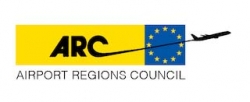 Alexandra Covrig
Alexandra CovrigSenior project manager
Airport Regions Council
Belgium
 Sergio Alegre Calero
Sergio Alegre CaleroDirector general
ARC - Airport Regions Conference
Belgium
09:10
Shanghai Hongqiao Airport in the integrated transportation hub
 Yu Liu
Yu LiuDeputy director of corporate planning department
Shanghai Hongqiao International Airport
China
Shanghai Hongqiao Hub is a large-scale transportation hub integrating high-speed rail, civil aviation, highways, urban rail transit, public transportation and other modes of transportation. Hongqiao Transportation Hub has been planned, designed, built and put into operation in various phases since March 2010. Widely praised, it has influenced an era of transportation hub planning and construction in China. Shanghai Hongqiao International Airport has been a major element in the hub and played an important role in transporting aviation passengers and increasing the benefits of the hub by widening the passenger catchment area.
What the audience will learn
- Hongqiao Hub has significantly improved the comprehensive transportation service level of Shanghai, promoting the improvement of Shanghai's urban spatial pattern
- Hongqiao Hub has promoted the economic development of the entire Hongqiao business district
- Some issues have emerged in the 10-year operation of Hongqiao Hub, including traffic volume reaching the design capacity
- Hongqiao Airport is one of the various transportation modes in the hub, sharing needs and shouldering the pressure of the hub
- The balance of the triple roles of Hongqiao Airport as an urban airport, transportation hub and boutique airport
09:40
Intermodal excellence: Düsseldorf Airport's future-ready mobility hub
 Pradeep Pinakatt
Pradeep PinakattChief financial officer and labor director
Düsseldorf Airport
Germany
Düsseldorf Airport is at the forefront of intermodality, embracing innovative solutions. Through the use of AI and a holistic campus approach, data is interconnected to enhance traveler mobility. Seamless rail connections, the driverless SkyTrain, and bundled sharing options for cars, e-bikes and e-scooters make the airport an intermodal hub with integrated mobility services. The Sky-Train Data Space harnesses AI and real-time data to optimize intermodal transportation solutions. Collaborations with partners such as Deutsche Bahn and Siemens support the goal of creating a seamless travel experience across various modes of transportation, positioning DUS as an intermodal mobility hub of the future.
What the audience will learn
- Intermodality and innovation: the presentation will showcase how forward-thinking approaches can greatly benefit travelers and the efficiency of operations
- Integration of data: the interconnected approach will provide insights into the significance of data integration in enhancing traveler mobility
- Seamless travel: the audience will discover the potential for a truly integrated and convenient journey by leveraging interconnected modes of transportation
10:10 - 10:30
Break
10:30
The state of multimodality at Swedavia´s airports and the way forward
Intermodality strategist
Swedavia Airports
Sweden
A strategic initiative is in progress to successfully transform several airports in Sweden into multimodal and futureproofed hubs. The initiative coordinates plans and measures regarding ground transportation to and from the airports, mobility in general, digital tools for passengers, and future forms of transportation. The initiative applies a holistic approach and develops the airport ecosystem in collaboration with its stakeholders. Digital tools are fundamental to seamless travel and to promote a modal shift to sustainable travel to and from airports.
What the audience will learn
- The benefits of an integrated and multidisciplinary approach to promoting multimodality at airports
- The fundamental impact of digital tools for planning trips, travel information and for purchase of tickets
- The need for long-term planning of ground transportation infrastructure to and within the airport: the basis of a modal shift
11:00 - 12:00
Panel discussion: Intermodal challenges and opportunities – air-to-rail, autonomous, eVTOL
The panel will be a discourse on the topic of how airports can facilitate a more seamless intermodal connectivity; from traditional air-to-rail to soon-to-be-introduced autonomous vehicles and eVTOL. The different panelists will illustrate how they tackle this challenge with examples of concepts that have recently been implemented or are in the planning stage.
What the audience will learn
- How air and rail operators are working toward a more seamless integration at the airport
- The challenges and opportunities the advent of new autonomous and eVTOL transportation modes pose for airports
- How the digitally enhanced passenger journey will offer freedom of choice for the journey (from) home
- Best practices of intermodal integration at airports
 Simon Graf
Simon GrafSenior project manager and commercial director
Fraport & FRA Vorfeldkontrolle GmbH
Germany
 Arnas Dumanas
Arnas DumanasChief development officer
Lithuanian Airports
Lithuania
 Klaas Boersma
Klaas BoersmaSenior strategic advisor airport masterplanning
Royal Schiphol Group
Netherlands
 Barth Donners
Barth DonnersLeading expert aviation and intermodal transport
Royal HaskoningDHV
NETHERLANDS
12:00 - 13:30
Lunch
13:30
Intermodal challenges
 Dr Josep Lluís Larriba-Pey
Dr Josep Lluís Larriba-PeyProfessor
Universitat Politècnica de Catalunya
Spain
The need for a smart contracting platform in intermodal travel sets many challenges, from the standardization of data sharing contracts, to the follow-up of passenger journeys, to the scalability of the system at a pan-European level. All those challenges are faced in the SIGN-AIR project, funded by the EC Horizon Europe's SESAR Joint Undertaking. The project started in June 2023 and will last for three years. SIGN-AIR is building a smart contracting platform, setting the support of the traveler, the centerpoint of travel services and ticketing.
What the audience will learn
- Smart contracts for multimodal travel
- Support to travelers
- Scalability for smart contracts
14:00 - 15:00
Panel discussion: Airports – catalyst for urban regeneration and zero emission
Technology offers the opportunity to advance toward zero-carbon airports and cities. It is an enabler of opportunity but should not determine opportunity. The challenge for communities is how to accelerate the adoption of the right technology to meet these broader goals. How should we all engage in developing new concepts that provide for the technology within the best possible framework? While aviation is undergoing a technical evolution to alternative fuels that reduce C02 emissions, next-generation aircraft will be quieter and cleaner. How can airports leverage those challenges and evolve beyond their essential roles as transportation hubs?
What the audience will learn
- Overcoming silo thinking; inclusive design-based thinking
- Connectivity between airports, cities and other transportation systems
- Airport as real estate driving new typologies of buildings and cities
- The relationship between technology and concept
- Sustainability is only achievable with the interplay of the technical, economic and social aspects – quality of life
 Thor Thoeneie
Thor ThoeneieCEO
Oslo Airport City
Norway
 Peter de Leeuw
Peter de LeeuwHead of airport city development
Vienna International Airport
Austria
 Dimitris Argyros
Dimitris ArgyrosAssociate director
Haptic Architects
UK
 Alexander Kirkwood
Alexander KirkwoodAviation lead
Weston Williamson and Partners
UK
 Henrik Rothe
Henrik RotheSenior lecturer and head of urban turbine
Cranfield University
UK
15:00 - 15:20
Break
15:20
The development of RIX Airport City. A dream or reality?
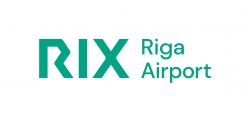 Arturs Saveljevs
Arturs SaveljevsCCO
RIX Riga Airport
Latvia
RIX Airport City is a new mixed-use real estate development project at Riga Airport (RIX), the leading aviation hub for the Baltic States. RIX has a unique opportunity to transform the Airport City into one of the best-connected business districts in the Baltics thanks to its strategic location along Rail Baltica, a high-speed train link that will connect all three Baltic capitals to European high-speed rail networks and also Riga City. The RIX Airport City vision is to create a truly people-focused and sustainable business district that could become a destination in its own right.
What the audience will learn
- RIX Airport City’s concept, commercial and urban vision
- The importance of airport city development that prioritizes sustainable planning, architecture and engineering
- Long-term partnership and business opportunities for investors, developers and different service providers
- The challenges and opportunities that have arisen during the project
15:50
A new airport city arises
 Alicia Izquierdo Rivera
Alicia Izquierdo RiveraReal estate program manager
Lima Airport Partners
Peru
 Paola Loayza
Paola LoayzaReal estate manager
Lima Airport Partners
Peru
The Airport City will be the biggest in South America, with 935ha for long-term development, integrating aeronautical and non-aeronautical business. Our strategy is focused on real estate development aligned with the current market, so the commercialization of the land is a very dynamic activity; also because we are a concession for a limited period. This ambitious program has already gone to market with a 2025 public opening coordinated with the inauguration of LAP's new terminal. Future phases include connections, eVTOL facilities, retail areas, and exposition and logistics centers serving the airport and the nearby Port of Callao.
What the audience will learn
- The importance of land use planning for future development and commercialization
- Project management and delivery of an airport city, relying on third-party investment
- Sustainable applications in airport cities
- Strategies to attract and manage third-party investors
- Operations and maintenance concepts after opening
16:20
Cape Winelands Airport: fostering innovation, shared prosperity and sustainability
 Adele Klingenberg
Adele KlingenbergExecutive director, strategy and planning
RSA Aero Ltd
South Africa
 René Marey
René MareySenior airport architect
NACO Netherlands Airport Consultants
Netherlands
Cape Winelands Airport (CWA) transcends conventional airport projects. Positioned amid a burgeoning growth area, CWA is set to evolve into Cape Town’s second major airport. Anticipated passenger traffic forecasts, reaching 5.2 pax, combined with significant GA movements, demonstrate its potential. Additionally, CWA's unique role as the designated alternative airport for Cape Town Airport ensures operational resilience, environmental and cost savings, revenue-generating opportunities and enhanced passenger experience. CWA defines a new business case for airport development from a fuel efficiency perspective. Its integration of real estate and logistics creates a multifunctional airport city, promising enduring economic progress and empowered communities.
What the audience will learn
- In a multi-airport system, strategic positioning requires assessing how an airport contributes to regional aviation growth holistically
- Adaptive growth planning: anticipating different growth scenarios and allowing for specific requirements of different airport users
- Alternative airport selection affects the cost of operations and the environmental impact of the industry
- Multifunctional airport city planning enhances the attractiveness of the airport, improves business resilience and benefits the development of the region
- Planning for multi-modal connectivity and logistics hub functions enhances the value of the airport and contributes to regional economic development
16:50
Supporting the connectivity of airport city Aviapolis and Helsinki Airport
 Ulla Ruuskanen
Ulla RuuskanenSenior advisor, manager in Avia Network
City of Vantaa and Helsinki Uusimaa Regional Council
Finland
Avia Network aims to be the world’s most sustainable, attractive and accessible airport ecosystem. Avia Network is a partnering, development and information exchange network consisting of public and private actors working together to secure the connectivity of the Helsinki-Vantaa Airport and airport city Aviapolis. In addition, the network acts as a development platform for the stakeholders’ cooperation. Avia Network promotes the airport as a hub and a multimodal travel center for the future and ensures that connectivity is at its highest level to strengthen the airport’s position against global competition. It is open to all private and public actors.
What the audience will learn
- Avia Network offers different transport solutions and promotes public transportation to cut emissions toward carbon neutrality
- Sustainability is a key driver in the network's actions. Learn how it engages its stakeholders for offering different solutions
- How to lobby for common targets. Avia Network did its own governmental policy program for advocacy in the 2023 parliamentary elections
- Collaboration with different stakeholders – how to engage for common targets when stakeholders are from different sectors like industry and municipalities
- Communication is vital. How to disseminate and tell the same story for the audience
Opening day party in the exhibition hall, after the conference!
Airport design, planning and development
Day 1: Tuesday, April 16Sponsored by Arcadis


Harmonie 3
Airport design, planning and development
09:00 - 17:30
Introduction by Conference Chairs
 Tim Walder
Tim WalderDeputy chair
British Aviation Group (BAG)
UK
 Mark Wolfe
Mark WolfePrincipal
Populous
Australia
09:05
How to ensure a smooth opening of FRA's Terminal 3
 Esther Christine Nitsche
Esther Christine NitscheVice president operational excellence
Fraport AG
Germany
 Sascha Koenig
Sascha KoenigVP infrastructure and resource management
Fraport AG
Germany
As part of the expansion program at Frankfurt Airport, Fraport will open Terminal 3 in 2026. The presentation will introduce how Terminal 3 will be integrated into the existing infrastructure at Frankfurt with a special focus on transfer processes. It will also cover highlights of the Operational Readiness and Airport Transfer (ORAT) program which started in mid-2023. In addition, the utilization concept and the opening scenario for Terminal 3 will be presented.
What the audience will learn
- What are the challenges of infrastructure projects from an operational perspective?
- How can a new terminal be integrated into the existing infrastructure?
- How to plan and run an ORAT project
- What are the key elements of ORAT?
- How to plan an opening scenario for a new terminal
09:35 - 10:35
Panel discussion: Achieving social value and equity across global airport infrastructure programs
A focus on global airport infrastructure programs and achieving social equity through those programs. This panel will include a discussion on workforce and supplier diversity, lessons learned from successful programs, and what role we all play in achieving social value and equity through our aviation work.
What the audience will learn
- Shaping global aviation programs
- What is social value and how have programs achieved it?
- How to implement diversity across workforce and suppliers for major programs
- Achieving not only diversity but equity in programs
- Lessons learned and successes from airports
 Deborah Flint
Deborah FlintPresident
Greater Toronto Airports Authority
Canada
 George Casey
George CaseyChair and CEO
Vantage Airport Group
USA
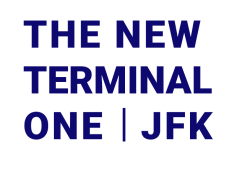 Palmina Whelan
Palmina WhelanCaptial program director
The New Terminal One
USA
 Phillip A Washington
Phillip A WashingtonChief executive officer
Denver International Airport
USA
 Folasade Olanipekun-Lewis
Folasade Olanipekun-LewisVice president, operating and community partnerships
Vantage Airport Group
USA
 Dwight Pullen
Dwight PullenGlobal aviation lead
AECOM
USA
10:35 - 10:55
Break
10:55
The new terminal at RIX Riga Airport
 Laila Odiņa
Laila OdiņaCEO, chairperson of the board
RIX Riga Airport
Latvia
RIX Riga Airport is currently transforming into an urban and travel hub of Northern Europe and a next-generation air-rail hub thanks to its strategic location along Rail Baltica, a high-speed link that will connect all Baltic capitals to rail networks in Europe. In autumn 2024, RIX Riga Airport will start building a heart-of-the-future RIX Airport City – a state-of-the-art new passenger terminal with a capacity for 12 million passengers a year. Expanded check-in and security areas, an automated baggage sorting system, touchless technologies and direct connection to the Rail Baltica train station and RIX Airport City will speed up passenger processing and increase commercial revenues.
What the audience will learn
- From the airport to the urban travel hub – strategy-based development
- Sustainable solutions and BREEAM Excellence certification
- An airport for everyone – how to fulfill passenger expectations
- Challenges of the construction period at a 24/7 operating airport
- Project team building: needs and solutions
11:25
New Terminal One – New York's new front door
 Simon Gandy
Simon GandyExecutive vice president and chief operating officer
New Terminal One
USA
The presentation will focus on the progress being made to build and operate the New Terminal One at JFK.
What the audience will learn
- Largest PPP in US aviation
- Building within the 24x7 JFK operating environment
- Largest solar microgrid within a US airport
- Commitment to community for minority- and women-owned businesses
- Creating a unique service experience
11:55 - 13:30
Lunch
13:30 - 14:25
Panel discussion: Debate on sustainable and lean airport development
A panel debate made up of executive board members from such airports as Gatwick Airport, Manchester Airports Group, Genève Airport and the New Warsaw Airport, on how to develop sustainable facilities in an environment of post-pandemic change, focusing on lean thinking in the design, spatial capacities, energy efficiency and design for manufacture (DFM) processes. The debate will focus on giving the audience insight and knowledge into how airports are responding to the new inclusive passenger journey trends while meeting the challenges of enhanced asset resilience, sustainable energy demands, net zero carbon facility solutions and community engagement.
What the audience will learn
- Responding to the new passenger journey trends
- How to develop lean and resilient facilities
- Creating energy-efficient and positive facilities
- Creating net zero carbon facility solutions
- Balancing the passenger needs with an efficient and economically viable operation
 André Schneider
André SchneiderCEO
Genève Aéroport
Switzerland
 Antoinette Erickson
Antoinette EricksonSenior partner
Foster and Partners
UK
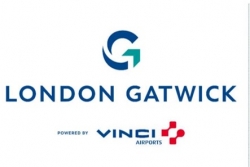 Cédric Laurier
Cédric LaurierChief technical officer
Gatwick Airport
UK
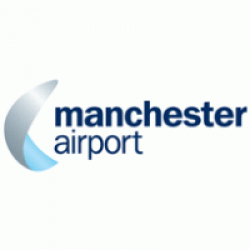 Paul Willis
Paul WillisChief development officer
Manchester Airport Group - MAG
UK
 Tim Walder
Tim WalderDeputy chair
British Aviation Group (BAG)
UK
14:25
Vision-led master planning – moving on from 'predict and provide'
Head of masterplanning
Heathrow Airport
UK
 Andrew Gibson
Andrew GibsonGlobal market director, aviation
Jacobs
UK
Historically airports have produced masterplans on a 'predict and provide' basis with the need for additional capacity triggering development. Today's market is less certain, and with additional pressures being exerted on airports the traditional approach to masterplanning needs to broaden to accommodate factors such as existing asset age, sustainability objectives and future forms of aviation. This presentation describes how Heathrow has sought to identify new trends and issues, how they might impact the airport, and how the masterplan needs to flex to take advantage of or mitigate them.
What the audience will learn
- The emerging key issues that will impact airport planning
- What the route to net zero could mean for airports in practical terms
- The capacity and operational impacts of emerging trends in aircraft fuels, technology and societal expectations
- The need to consider existing facilities as well as new development in an airport masterplan
- How Heathrow's vision of what it wants to be is driving the masterplan as much as the forecasts
14:55
MSC South
 Hans Thilenius
Hans ThileniusDeputy executive director, terminal development improvement program
Los Angeles World Airports
USA
 Ian Lomas
Ian LomasDirector, global design director, Los Angeles studio chair
Woods Bagot
USA
 Brian Rush
Brian RushVice president preconstruction
W.E. O'Neil Construction
USA
Building a terminal of any size in the middle of an active airfield has costs and logistical challenges. So why not build it off the airfield, truck it to the site, and create a 'plug-and-play' scenario? LAX found itself in this situation and found a sustainable solution that is time- and cost-effective while being movable and reusable. An eight-gate terminal is being constructed off-site while foundations are being built at the final location. The presentation will explain the engineering and logistics and how LAX worked with the designer, contractor and building authorities with this innovative approach.
What the audience will learn
- What is modular construction? It comes in many sizes, and all have pros and cons
- How the designer needs to design differently than traditional
- How the contractor needs to plan differently than traditional
- The sustainable element of off-site construction
- The challenges presented by those not familiar with the process
15:25 - 15:45
Break
15:45
Meeting stakeholder needs in the planning and design of passenger amenities
 Mandy Xiggores
Mandy XiggoresManager, aviation capital program
Port of Seattle, Seattle-Tacoma International Airport
USA
As air travel becomes increasingly accessible for more people with individual wants and needs, how do you exceed the expectations of a variety of passengers and tenants? Seattle-Tacoma International Airport sought to deliver an improved customer experience and a wider variety of amenities in severely constrained existing facilities and is delivering exceptional results by all measures. Successfully improving the experience of all people using airport facilities requires intensive stakeholder outreach and intentional focus on resolving conflict and providing wins for everyone involved. This presentation focuses on how Sea-Tac planned and designed amenities to provide a world-class experience for all users.
What the audience will learn
- Commitment from leadership: the foundation of sound planning and design
- Getting to the heart of the matter: identifying core objections for collaborative problem solving
- Solving the puzzle: optimizing existing spaces to ensure the highest and best use of current facilities
- Winning broad support: identifying the maximum number of benefits to bolster support for your projects
- Crossing the finish line: staying engaged to make sure the intended benefits are achieved
16:15
Small airport, big experience – airport transformation
 Shane Munroe
Shane MunroeChief executive officer
MBJ Airports Limited
Jamaica
Small and large airports differ in passenger traffic but face similar challenges. Although airport size differs, passenger experience remains the same. This presentation discusses strategies to provide passengers with a 'big experience' even at smaller airports. Discussion points include the role of privatization in the transformation process; transformation strategies for airside, terminal and landside infrastructure; creating value for all stakeholders and the community; and strategies to improve the passenger experience. Sangster International Airport in Montego Bay, Jamaica, which was privatized in 2003, will be used as a case study.
What the audience will learn
- The role of privatization in the transformation process
- Transformation strategies for airside, terminal and landside infrastructure
- The role of masterplanning and project planning in the transformation process
- Creating value for all stakeholders and the community
- Strategies to improve the passenger experience
16:45
The augmented airport 2.0 – urban regeneration
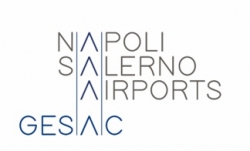 Michele Miedico
Michele MiedicoDirector of planning, environment and Progetto Salerno
GESAC, Naples and Salerno Airports
Italy
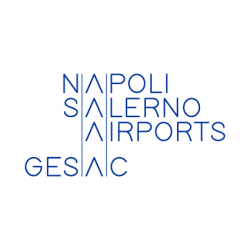 Federico Raja
Federico RajaAirports planning
GESAC SpA, Naples & Salerno Airports
Italy
Airports may have a direct and positive impact on local communities: transport connections, shops and public offices are examples of facilities that can be found in modern airports that can be used by people living in the neighborhood, as well as passengers. This can be defined as the augmented airport and the airport masterplan may be used to support value generation for the transformation of urban areas. Naples International Airport's 'Mille alberi per la città' project moves one step forward, regenerating an abandoned area in the airport’s proximity, reducing CO2 and increasing prosperity and quality of life.
What the audience will learn
- How to generate value for local communities
- How to plan the next-generation airport
- How to cooperate with local communities to generate value
Opening day party in the exhibition hall, after the conference!
Aviation security, technology, process and people
Day 1: Tuesday, April 16
Spektrum 2
Aviation security, technology, process and people
09:00 - 17:30
Introduction by Conference Chairs
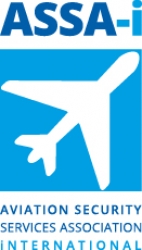 Catherine Piana
Catherine PianaDirector general
ASSA-i Aviation Security Services Association - International
Belgium
 Donald Zoufal
Donald ZoufalConsultant
CrowZ Nest Consulting
USA
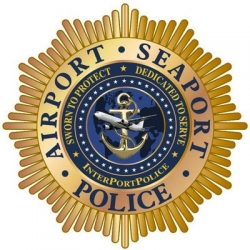 Neville Hay
Neville HayDirector of training
Interportpolice
UK
09:05 - 10:00
Panel discussion: Is aviation security at a crossroads? Aviation security in a complex and integrated world
Aviation is continually evolving to address emerging security challenges and the industry is at a security crossroads. With the rapid integration of innovative technologies, threats from UAS and air mobility programs, reliance on international cooperation and a proactive approach to risk management are essential elements for navigating the security landscape. Where will aviation be in five years? The challenge lies in balancing the need for increased security measures with maintaining a seamless and efficient travel experience for passengers.
What the audience will learn
- How airports have adapted to the evolving threats post pandemic, such as insider threat and enhanced passenger screening technologies
- Why collaboration has been a key element not just locally but globally
- Is the current approach to risk assessment and annex 17 the right one; is there room for modification or is it fixed by regulation – or is more regulation on the horizon?
- How will the integration of AI and automation alter the way we look at security and what is the impact?
- What are the supply chain security concerns as demand for travel increases?
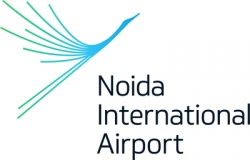 Ajesh Verma
Ajesh VermaHead of security
Noida International Airport
India
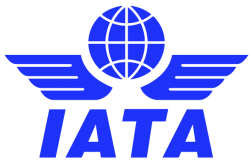 Matthew Vaughan
Matthew VaughanDirector, aviation security and cyber
IATA
Switzerland
 Pauline Norstrom
Pauline NorstromFounder and CEO
Anekanta Consulting and Anekanta AI
UK
 Stephen Dempsey
Stephen DempseyDirector, WW aviation security and regulatory compliance
Amazon
USA
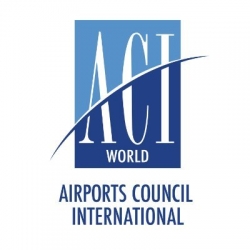 Thomas Romig
Thomas RomigVice president safety, security & operations
ACI World
Canada
 Donald Zoufal
Donald ZoufalConsultant
CrowZ Nest Consulting
USA
 Neville Hay
Neville HayDirector of training
Interportpolice
UK
10:00 - 10:50
Panel discussion: Innovations in security – smart security, one-stop and other developing concepts
Delve into what airports around the world are working on now and next for aviation security technology and processes.
 Courtney Moore
Courtney MooreAssistant vice president, terminal experience
Dallas Fort Worth International Airport
USA
 Jeffrey Barrow
Jeffrey BarrowDirector, corporate safety and security
Greater Toronto Airports Authority
Canada
 Johnnie Müller
Johnnie MüllerSenior vice president, security services and crisis response
Copenhagen Airports
Denmark
 Paul Evans
Paul EvansSecurity technology manager
Heathrow Airport
UK
 Scott Dullard
Scott DullardGeneral manager operations
Melbourne Airport
AUSTRALIA
10:50 - 11:10
Break
11:10 - 11:55
Panel discussion: Security management systems (SeMS) for airports: benefit or burden?
The panel will look at the history of security management systems (SeMS) in aviation security and attempt to answer the question of whether SeMS is a benefit or a burden for airports. It will examine what SeMS is and what it is not. The panel will draw on the experience of SeMS for air operations, which has been part of the aviation security framework since the introduction of the IATA IOSA program. Many civil aviation authorities are looking at adding SeMS into their national civil aviation security program (NCASP) and facing regulatory requirements to have SeMS programs, while other airports are voluntarily implementing SeMS.
What the audience will learn
- What SeMS is
- The benefits of SeMS to airports
- What SeMS is not
- Challenges for SeMS at airports
 Eric Kaler
Eric KalerSenior manager, aviation security
Amazon
USA
 Matthew Vaughan
Matthew VaughanDirector, aviation security and cyber
IATA
Switzerland
 Andrew McClumpha
Andrew McClumphaDirector
McClumpha Associates
UK
 Neville Hay
Neville HayDirector of training
Interportpolice
UK
11:55 - 12:40
Panel discussion: The challenges of sustainability and optimization for the future aviation security workforce
Delegates will learn about the challenges faced by airports in managing the airport security system as we look to the future and new technology, the role of training as an integral part of a performance management system, and the importance of an effective recruitment and selection program with the need to 'manage talent' and manage change.
 Johnnie Müller
Johnnie MüllerSenior vice president, security services and crisis response
Copenhagen Airports
Denmark
 Thomas Romig
Thomas RomigVice president safety, security & operations
ACI World
Canada
 Andrew McClumpha
Andrew McClumphaDirector
McClumpha Associates
UK
 Catherine Piana
Catherine PianaDirector general
ASSA-i Aviation Security Services Association - International
BELGIUM
12:40 - 14:00
Lunch
14:00 - 14:40
Panel discussion: Transforming the passenger experience through seamless technology integration
The future of travel is technologically innovative, intuitive and minimally invasive. At the same time, the aviation industry must still prioritize security and minimize contact between security officers and travelers. Within TSA, the Office of Requirements and Capabilities Analysis (RCA) integrates capability portfolios into security architecture at checkpoints and beyond. We are seeking to ensure a cohesive set of innovative solutions that provide updated technological advancements for airports, air cargo, public areas and critical infrastructure. Session attendees will learn how we work with airline and industry partners to implement aviation security technologies and foster collaboration across stakeholders.
What the audience will learn
- RCA has deployed capability managers to identify capability gaps and developed clear requirements for improved aviation security
- Industry can provide valuable contributions and perspective to support advancing the security of the aviation ecosystem
- Panelists will share lessons learned about security screening technologies, and how innovative solutions contribute to enhancing the passenger experience
 Jason Hausner
Jason HausnerManaging director, passenger facilitation
Delta Air Lines
USA
 Jason Lim
Jason LimCapability manager, requirements and capabilities analysis (RCA) identity management (IDM)
Transportation Security Administration (TSA)
USA
 Lisa Sullivan
Lisa SullivanSenior vice president, travel and transport
IDEMIA Public Security North America
USA
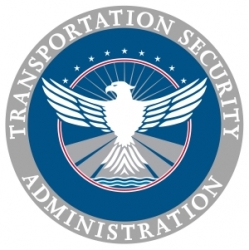 Melissa Conley
Melissa ConleyExecutive director - capability management and innovation
Transportation Security Administration (TSA)
USA
14:40
Advanced data analytics in aviation security
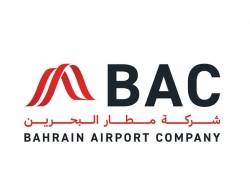 Hamad AlZayani
Hamad AlZayaniAviation security specialist
Bahrain Airport Company
Bahrain
In an ever-changing world, the landscape of aviation security is constantly evolving. As the aviation industry strives to stay ahead of emerging threats, it is essential to explore innovative approaches to enhance safety and efficiency. Today, we consider advanced data analytics and its potential impact on aviation security. While this technology brings tremendous opportunities, it also poses unique risks and challenges that must be carefully navigated.
What the audience will learn
- Benefits of introducing AI in aviation security
- Requirements and considerations when it comes to implementing AI in aviation security
- How cost and infrastructure investments will reflect on long-term returns
15:05
Automated staff assignment for security control
 Robert Götze
Robert GötzeCorporate security aviation security policy
Flughafen München
Germany
 Andreas Hofmann
Andreas HofmannDirector business development
Amorph Systems
Germany
At staff security checkpoints there are various ways to execute checks, from classical control to explosive detection (ETD) only. To make it impossible for employees to predict which check will be applied, assignments on a random basis need to be done. This was a staffed task at Munich Airport, as well as supervision to ensure staff members follow the given assignment. Regarding digitalization and better workforce usage, the goal was to establish an automated assignment and tracking solution in a GDPR-compliant way. Based on lidar technology, the installed solution can identify staff to assign.
What the audience will learn
- How lidar works and where the strengths and weaknesses are
- Where the specific challenges in this project have been
- The reusability of such an installation
15:30 - 15:50
Break
15:50
The growing interconnection of organized crime and aviation security
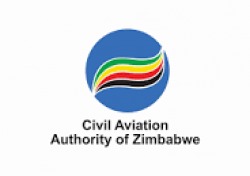 Laxman Moyo
Laxman MoyoDirector, aviation security
Civil Aviation Authority of Zimbabwe
Zimbabwe
It is becoming increasingly common to find organized crime offenses being linked to the air transportation industry. Apart from the known elements of aviation security, airports and airlines are increasingly becoming attractive targets for criminal acts such as fraud and human trafficking, as well as the illicit flow of wealth. This discussion analyzes how the aviation industry is dealing with the complex link in the light of the insider challenge. The Standards and Recommended Practices on aviation security and facilitation have not focused on these threats.
What the audience will learn
- The need to balance aviation and corporate security
- The nature of criminal offences impacting on aviation operations
- How aviation players can prevent and detect non-aviation security threats
- The importance of coordination with other state and private security stakeholders
- The total security perspective when it comes to asset protection
16:15
Ten ways to fight human trafficking (without getting legal involved)
 Sabrina Stratford
Sabrina StratfordHuman trafficking abolitionist
SabrinaStratford
USA
There are 45 million people in modern-day slavery and many of them pass through our airports. Combating this atrocity doesn't require a legal framework or approval from human resources. Making a difference requires an awareness and an understanding of what anyone can do to make a difference. By equipping ourselves with experiential insights, we can respond appropriately, keep passengers safe and fight for the well-being of society. Corporate responsibility starts with individual obligation. Learn how to make a difference in someone’s life by understanding how human traffickers operate and what it takes to interrupt their business model.
What the audience will learn
- What is human trafficking?
- How do probable human traffickers present?
- What do potential victims of human trafficking look like?
- What do I need to know to make a difference?
- What should I do if I suspect human trafficking?
16:40 - 17:30
Panel discussion: Anti-crime strategies and practices in aviation
While these strategies collectively contribute to aviation security, the effectiveness of any system depends on its continuous adaptation to emerging threats. Airports, airlines and authorities worldwide engage in ongoing assessment and refinement of security measures to address evolving challenges, however, organized crime has continued to exploit aviation security. The impact on the state and local environment is felt at all levels of our society from terrorism to human trafficking, narcotics and other commodities. Are airports and airlines doing enough? Could they do better? If so, how?
What the audience will learn
- The cost of organized crime and terrorism to our societies
- Why airports should have a community engagement program that helps build trust and gather intelligence
- How the integration of technology CCTV and biometric identification systems and threat detection can enhance security capabilities
- Why collaborating can foster strong partnerships between airport security personnel, law enforcement, airlines and other stakeholders by sharing information and coordinating response
Jean-Pierre Devos
First commissioner, deputy station commander
Politiezone Hamme/Waasmunster
Belgium
First commissioner, deputy station commander
Politiezone Hamme/Waasmunster
Belgium
 Navaid Ahsan
Navaid AhsanHead of AVSEC operations
Etihad Airways
United Arab Emirates
 Laxman Moyo
Laxman MoyoDirector, aviation security
Civil Aviation Authority of Zimbabwe
Zimbabwe
Police commissioner
Airpol Network
Sweden
 Sabrina Stratford
Sabrina StratfordHuman trafficking abolitionist
SabrinaStratford
USA
 Neville Hay
Neville HayDirector of training
Interportpolice
UK
Opening day party in the exhibition hall, after the conference!
Commercial development – retail, concessions, media, experience
Day 1: Tuesday, April 16
Harmonie 2
Commercial development – retail, concessions, media, experience
09:00 - 17:30
Introduction by Conference Chair
 Jeremy Corfield
Jeremy CorfieldPartner
CPI
Australia
09:05
Terminal 3: developing a retail experience alongside tomorrow’s passengers' needs
 Nina Kristin Gür
Nina Kristin GürVice president retail key account management
Fraport AG
Germany
 Hazel Catterall
Hazel CatterallDirector
Newmark
UK
Frankfurt Airport is in the middle of finalizing its new Terminal (T3) which will go into operation in less than 2.5 years. The targets have been set high, especially for the international marketplace and pier, with a view to making the 6,000m2 of retail space in this area a special experience for every passenger. The aim is to offer a unique mix of international and German brands to serve all age groups, but with a strong focus on the up-and-coming generations. Each single concept is supposed to generate a 'wow' experience.
What the audience will learn
- What to look at to plan a new commercial offer
- Tomorrow's passengers' needs and the needs of different passenger groups, with a special focus on Gen Z
- Balancing service and commercial goals
- Involving potential tenants at an early stage to help the process
- Involving potential tenants at an early stage does help the process
09:50
Evolution toward transformation at London Gatwick
 Helen Teschauer
Helen TeschauerSpace planning and proposition development lead
London Gatwick
UK
10:20
Building HK International Airport as a place for lifestyle inspiration
 Alby Tsang
Alby TsangHead of retail and advertising
Airport Authority Hong Kong
Hong Kong
The presentation will explain how Hong Kong International Airport integrates online and offline retail initiatives to enrich passengers’ shopping experiences and serve their evolving needs, with key strategies including widening the trade mix, introducing innovative services and active customer engagement.
What the audience will learn
- Latest trends in retail initiatives and customer experience
- Strategies to widen the trade mix
- Innovative customer services
10:50 - 11:10
Break
11:10
Curating Helsinki Airport's commercial spaces, offerings and experiences through customer insight
 Nora Immonen
Nora ImmonenVice president, director commercial business
Finavia Corporation, Helsinki Airport
Finland
11:40 - 12:20
Panel discussion: Is it worth it? Turning passenger experience into revenue
The investment in terminal infrastructure and the passenger experience is a cost-intensive effort. Besides the actual building infrastructure, investments in sense of place, artwork, passenger amenities and especially digital technology are in high demand, but airports face the question of their return on such investments. The presentation will explore the question of to how to capitalize on the 'experience'.
What the audience will learn
- The importance of passenger experience
- Data-driven insights into how passenger experience can translate into revenue
- Examples and potential KPIs on how to measure passenger experience
 Dr Lutz Weisser
Dr Lutz WeisserManaging director
Munich Airport International
Germany
 Mikael Charpin
Mikael CharpinGeneral manager and producer
Moment Factory
Canada
 Ibrahim Ibrahim
Ibrahim IbrahimMD
Portland Design
UK
 Mark Husser
Mark HusserPartner
Grimshaw
USA
 Jeremy Corfield
Jeremy CorfieldPartner
CPI
AUSTRALIA
12:20
How to scale up innovation thanks to local empowerment
 Jimmy Motte
Jimmy MotteHead of digital and innovation
Lagardère Travel Retail
France
We navigate a dynamic landscape, where every market and set of passengers poses unique challenges, specificities and needs. Ever wondered how agility becomes crucial in crafting tailored innovative solutions for distinct B2B and B2C requirements? Explore how Lagardère Travel Retail's decentralized structure ensures swift adaptation and delve into some of our latest solutions designed to create value. Get ready to rethink your global operations approach and witness the impactful journey of unlocking value through locally adapted bespoke solutions.
What the audience will learn
- The power of agility to develop innovative solutions that align closely with the specific expectations of each market
- Connect to the innovation ecosystem to stay aware and respond to emerging trends
- How to elevate the customer experience through innovative solutions (frictionless and immersive experience)
- Generate value through flexible frameworks based on constant improvement and feedback
12:50 - 14:00
Lunch
14:00
Empowering partners: a strategic approach to airport marketing and branding
 Megan O’Connell
Megan O’ConnellDirector of marketing and branding
Philadelphia International Airport
USA
In today’s landscape, airports are more than transportation hubs. They are thriving ecosystems where strategy and collaboration from a marketing and guest experience can drive success for airports and their partners. This presentation focuses on a strategic approach to airport marketing and branding, with a focus on elevating partner success that can be scaled across aeronautical and non-aeronautical stakeholders. Key points that will be shared: the airport as a catalyst for growth, partner-centric strategies, digital transformation, actionable insights, and data and scaled communication efforts.
What the audience will learn
- Promoting the airport as a catalyst for growth
- Developing partner-centric marketing and branding strategies
- Harnessing digital transformation and innovation
- Building a cohesive brand ecosystem
- Leveraging insights and data into actionable tactics
14:30
From awareness to action: innovative ways to create inspiring retail
 Tabea Palmer
Tabea PalmerVice president - retail marketing
Fraport AG
Germany
 Johanna Heiser
Johanna HeiserHead of CRM in retail marketing
Fraport AG
Germany
This presentation explores Fraport’s strategy in shaping captivating retail experiences at Frankfurt airport, guiding the audience 'from awareness to action.' It will analyze key stages of customer engagement, unveiling innovative techniques and collaborations. Drawing on real-world examples, the presentation will explore the psychology of consumer behavior, offering practical approaches for airports to differentiate and thrive. From cutting-edge technology to impactful storytelling and emotional engagement, the discussion aims to inspire new ideas in the aviation retail landscape.
What the audience will learn
- Fraport's customers and what are they interested in: learn about Fraport’s customer segments and behaviors
- How Fraport uses these insights: initiatives and partnerships to improve the overall retail and service experience
- What is the impact? How this approach contributes to improving customer experience and the airport’s commercial business
15:00
Fireside chat: Customer insights to drive consumer marketing
 Megan O’Connell
Megan O’ConnellDirector of marketing and branding
Philadelphia International Airport
USA
 Susan Gray
Susan GrayManaging director/partner
Concession Planning International
Australia
15:30 - 15:50
Break
15:50
Vienna Airport South Extension – the new guest experience!
 Philipp Ahrens
Philipp AhrensSenior vice president center management
Vienna Airport
Austria
Vienna Airport will build a new terminal for departing Schengen and Non-Schengen passengers alike, containing a 10,000m2 retail and food and beverage area which is supposed to open in Q1 2027 and which will set a new standard when it comes to commercial passenger experience. Philipp Ahrens will give a glance at the project with the acquisition of tenants starting this year.
What the audience will learn
- Tenant acquisition with VR tool
- New dining concepts
- Guest frequencies: higher due to non-differentiation of SH and NSH
16:20
Bologna Airport sustainability approach and the role of commercial partners
 Dr Nicola Gualandi
Dr Nicola GualandiRetail and advertising business development manager
Aeroporto G. Marconi di Bologna
Italy
Airports are clusters of operators affecting the passenger’s experience at different touchpoints. Concessionaires play an important role in creating awareness about sustainability since they interact directly with passengers at different stages of their journeys. With that in mind, airport operators should develop a specific engagement program to align concessionaires' policies and drive their actions toward common sustainable goals. In this presentation, Bologna Airport illustrates initiatives carried out with commercial partners that have been included in the Airport Sustainability Strategy. Among them, it’s worth mentioning the improvement in the waste sorting processes in F&B and a reduction in SUP.
What the audience will learn
- Airport sustainability strategy and the role of concessionaires
- The engagement of concessionaires in airport sustainability strategies
- The importance of communicating sustainability and why concessionaires are so important to deliver a sustainability message
- Optimization of waste sorting and reduction of single-use plastic
16:50
Supporting airports' sustainable agenda
 Arnaud Rolland
Arnaud RollandVice president - CSR
Lagardère Travel Retail
France
The world is changing fast and consumer concerns about environmental impacts and climate change are getting higher and higher. How can travel retail help airports set up relevant actions that consumers can see, and showcase a more responsible image to meet their growing expectations? How can we leverage the local and responsible offer, the eco-design of the stores, develop sustainable services and foster D&I? How can we leverage our ecosystem to find more sustainable solutions? In this session, many inspiring examples will be shared from around the world; preparing the future starts now!
What the audience will learn
- Travel retail can support an airport's carbon reduction targets
- An airport's commercial activities can help promote CSR commitments
- Ecosystem collaboration is key to driving change
Opening day party in the exhibition hall, after the conference!
Customer service, passenger and personnel experience
Day 1: Tuesday, April 16Sponsored by Ozion


Fantasie
Customer service, passenger and personnel experience
09:00 - 17:30
Introduction by Conference Chairs
 Claire Donnellan
Claire DonnellanDirector
Customer Centric Consulting
Australia
 Jerry Angrave
Jerry AngraveCustomer experience director
Empathyce
UK
09:05
One network, infinite experiences – the Aena model
 Roberto Martín Davara
Roberto Martín DavaraHead of facilitation and passenger experience department
Aena
Spain
Aena works to deliver a unique experience for everyone at every airport by placing passenger satisfaction at the core of its operations. That includes committed staff, real-time feedback, unified data and much more. The presentation will share insights about how Aena manages the passenger experience at the world's No. 1 airport network.
What the audience will learn
- How to manage the passenger experience at an airport network
- How to address every passenger's needs and expectations to deliver a personalized experience
- The importance of feedback and unified data
09:35
From a decline to improving passenger experiences at Schiphol
 Marijn Duits
Marijn DuitsProject lead passenger experience
Royal Schiphol Group
Netherlands
Schiphol has set itself the goal to become the best rated European hub airport in the next five years. Currently sitting in the #8 spot according to the ASQ Benchmark, that means there’s some work to be done. Is the claim too bold or is it achievable? Join this session find out and decide for yourself. Discover what’s going to be put in place to get back on top. What resetting the metrics and ambitions actually means. Why Schiphol is shifting gears from NPS to CSAT and how passenger satisfaction is broken down into seven pillars, and what to prioritize.
What the audience will learn
- Schiphol’s five-year plan to significantly elevate passenger experiences
- How building an ecosystem for data sharing impacts a passenger’s journey at the airport
- The reason Schiphol went from #3 to #8 in terms of passenger satisfaction
- How Schiphol breaks down overall satisfaction into seven pillars, and what will be prioritized to impact passenger experience
- The importance of making the passenger experience part of the overall airport strategy
10:05
Airport travel experience: trends and opportunities
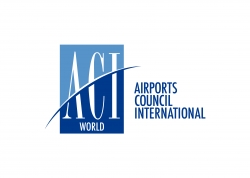 Valérie St-James
Valérie St-JamesSenior director market research and customer insights
Airport Council International (ACI) World
Canada
This session will present the findings of the ASQ 2023 Global Traveller Survey, revealing some of the enduring effects of the pandemic and current economic challenges on travelers' perceptions, behaviors and expectations. By examining the disparities between the future airport vision and the current needs and values of travelers, this presentation will delve into how ongoing consumer trends can serve as inspiration for industry leaders to enhance the traveler's journey. Key areas of focus include automation, personalized experiences, emotional engagement and sustainability.
What the audience will learn
- How travelers are adjusting their behavior in response to economic challenges
- The key touchpoints to automate for a seamless experience
- Travelers' perceptions of innovative solutions for personalizing their journeys
- The importance of emotional engagement in enhancing the travel experience
- The airport's role in promoting environmental sustainability
10:35 - 10:55
Break
10:55
Passenger preferences that shape commercially beneficial experiences
 Jerry Angrave
Jerry AngraveCustomer experience director
Empathyce
UK
The presentation will cover the findings of recent research that quantifies the economic and strategic benefits of focusing on better passenger experiences. It shines a light on what passengers value during their time at the airport, on board the aircraft, or when there is disruption. The data therefore helps define the intended experiences but also helps understand the commercial consequences of poor experiences.
What the audience will learn
- How passengers define a good or a bad airport experience
- How passengers define a good or a bad experience on the flight
- Why it is important to see service recovery at times of disruption as a strategic priority, not just an operational necessity
11:25 - 12:25
Panel discussion: No cap, you will want to join this session
Don’t know what 'no cap' means? It means you will want to hear more on this session. The population paradigm is shifting and thus the generations that are traveling and their expectations. As Gen Zs and Millennials take over the demographic that travels the most, airports need to understand their needs and wants including desired services, amenities, technologies and experiences. The panel will focus on understanding the different persona profiles and how to best plan for different generations.
 Piétrick Voyer
Piétrick VoyerDirector of operations
Grantley Adams International Airport
Barbados
 Ronda Chu
Ronda ChuCapital finance director
San Francisco International Airport
USA
 Shawn Smith
Shawn SmithSenior vice president, culture and strategy
Denver International Airport
USA
 Sandra Cisneros
Sandra CisnerosDirector of airline services
Jacobsen Daniels
USA
12:25 - 13:45
Lunch
13:45
Transforming passenger experiences: a data-driven customer journey map for ONT
Director of customer experience
Ontario International Airport
USA
 Samantha Flores
Samantha FloresVice president and director of Hugo
Corgan Associates, Inc.
USA
Curious if plants can increase a person’s navigation abilities, or if noise can positively affect customer satisfaction? At ONT, elevating the customer experience goes beyond increasing operational efficiency – by using a data-driven approach, ONT’s customer journey map provides a clear and comprehensive understanding of a passenger’s experience throughout the airport. By identifying pain points, areas of success and opportunities for improvement, ONT applies this data to make informed decisions, prioritize investments, optimize services and ultimately enhance customer satisfaction. This holistic approach deepens ONT’s understanding of passengers’ needs, fostering innovation in service and infrastructure improvements to deliver a world-class airport.
What the audience will learn
- The purpose of a customer journey map, identifiable touchpoints and how to visualize the user’s experience from start to finish
- How behavioral sciences tools can deepen your understanding of passenger behaviors, actions, needs, preferences and decision making at certain touchpoints
- How retina-scanning glasses help benchmark current experiences, pain points and areas of success to identify any gaps in service
- How data-driven insights around spatial features, future trends, policy change and technology integration influence strategic planning for future design
- How to develop cross-organizational consensus, and prioritize recommendations for strategic investment in the customer experience program from concessions programming to campus planning
14:15
BUD Ambassador passenger experience monitoring program
 Csilla Orczan
Csilla OrczanHead of ground handling management
Budapest Airport
Hungary
The BUD Ambassador program is a passenger experience quality monitoring system. We intend to improve the level of our service for passengers because as traffic has rapidly increased, the quality of the service has dropped significantly. The program started in 2019. Ambassadors are internal volunteers and site visits are expected to be done monthly. One site visit consists of 12 separate parts from the car parks through curbsides to the gate areas. There are multiple KPIs in each zone. Colleagues receive some compensation and awards as motivation. Evaluation happens weekly, monthly and quarterly and once finished, findings are reported to involve departments and BUD management.
What the audience will learn
- Aspects of airport quality assurance from the passenger's point of view
- How to improve the passenger experience
- How to involve and motivate employees to identify themselves with the company's goal
14:45 - 15:40
Panel discussion: Airports, planes and people – can we improve it?
How and what has changed? Do passengers want to dwell where we want them to, or should our systems conform to the passenger instead of vice-versa? How can airports respond to airline equipment up-gauging? Increased load factors in facilities designed for smaller aircraft and more people traveling are stressing our terminal facilities. Coupled with new passenger dynamics, the stresses on the system are palpable. Working as a team, what can airlines and airports do to reduce the tension? What can airlines tell us about the passengers that use our facilities that we don't already know?
What the audience will learn
- How passenger expectations have changed, and how to meet their needs
- How our facilities can help destress passengers before boarding the aircraft
- Do the design guidelines for terminal design still apply, or are changes in order?
Managing director, corporate real estate
United Airlines
USA
 Nick James
Nick JamesSenior regional manager - airport affairs
Southwest Airlines
USA
 Jack Christine
Jack ChristineChief infrastructure officer
Charlotte Douglas International Airport
USA
 Roddy Boggus
Roddy BoggusSenior vice president, strategy market leader
RS&H
USA
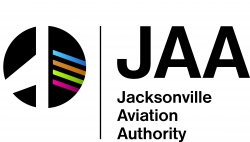 Mark VanLoh
Mark VanLohCEO
Jacksonville Aviation Authority
USA
15:40 - 16:00
Break
16:00
Passenger experience – the holy grail of airports
 Shiv Kumar
Shiv KumarChief of marketing and passenger experience
Manohar International Airport
India
Passenger experience is a paramount aspect of the aviation industry that focuses on creating a seamless, enjoyable and memorable journey for travelers. At the heart of every successful airport lies a deep commitment to providing exceptional passenger experiences, surpassing expectations and delivering a level of service that leaves a lasting impression. The holy grail of passenger experience lies in the ability to create a journey that leaves passengers feeling valued, cared for and delighted. By consistently delivering exceptional experiences, airports not only foster customer loyalty but also establish themselves as preferred travel hubs and drivers of economic growth.
What the audience will learn
- Enhanced customer satisfaction: prioritizing passenger experience leads to higher levels of customer satisfaction
- Competitive advantage: a superior passenger experience can provide airports with a competitive edge
- Customer loyalty and advocacy: a positive passenger experience has a direct impact on customer loyalty
- Revenue generation: a well-designed passenger experience can drive revenue generation for airports
- Positive brand image: the passenger experience shapes an airport's brand image and perception
16:30
Redefining airport interactions: the impact of chatbots on passenger experience
 Esteban Decurnex
Esteban DecurnexHead of digital marketing
Aeropuertos Argentina 2000
Argentina
 Dolores Gonzalez
Dolores GonzalezData scientist manager
Aeropuertos Argentina 2000
Argentina
We will explore how our chatbot, specifically developed for airports, is transforming passenger experiences. From providing real-time flight updates to facilitating parking payments and offering information about services and shops, this chatbot serves as an integral tool for enhancing customer satisfaction. Our analysis will demonstrate how the technology not only simplifies operations but also significantly boosts satisfaction ratings and enables meaningful connections with our users.
What the audience will learn
- The importance of chatbots in continuously improving passenger experience at airports
- Analysis of chatbots' influence on customer satisfaction ratings
- How to collect and utilize chatbot data to enhance services and operations
- Exploring success stories: parking payments and flight status updates
- Challenges and opportunities in the evolution of digital assistance at airports
17:00
Elevating passenger experiences: what Schiphol has learned from airport-to-airport-focused product development
 Gertjan Bluemink
Gertjan BlueminkBusiness development lead passenger experience
Schiphol Group
Netherlands
 Tijn Borms
Tijn BormsDirector of product - passenger experience platform
Amsterdam Airport Schiphol
Netherlands
When Schiphol started offering its internally developed Passenger Experience Platform and kiosks to other airports, one of the main drivers was to speed up innovation of the solution by learning from the context and challenges of other airports. During this session we will share some of the key steps we took in catapulting the speed of our product development in a matter of months. This session will cover how not being afraid to experiment leads to insights, how collaboration with other airports made us rethink our entire product strategy and how to leverage the power of 'terminal safaris'.
What the audience will learn
- How you can accelerate passenger experience innovation
- The main things Schiphol learned from an airport-to-airport collaboration focus
- How to become more flexible in rolling out passenger experience solutions
Opening day party in the exhibition hall, after the conference!
Environment and sustainability
Day 1: Tuesday, April 16
Illusion 3
Environment and sustainability
09:00 - 17:30
Introduction by Conference Chairs
 Emanuel Fleuti
Emanuel FleutiHead of sustainability and environment
Zurich Airport
Switzerland
 Dr Mary Kerins
Dr Mary KerinsFormer head of health, safety, sustainability and environment at DAA
Mary Kerins
Ireland
09:05
Assessing climate risks at ADR airports
Vice president risk governance and compliance
Aeroporti di Roma
Italy
 Roberto Mezzalama
Roberto MezzalamaSenior project director
WSP Italia
Italy
Airports are complex infrastructures and need to operate within defined conditions to ensure passenger safety and service reliability. Climate change has the potential to increase or decrease the frequency and severity of climatic conditions and events affecting airport operations. Therefore there is a need to understand the current and future risk profile of the airport and its key technological components. The process involves considering both the best climate data available to characterize current and future hazards and the airports’ infrastructures in terms of their sensitivity and adaptive capacity. The presentation describes the approach used for Rome’s Fiumicino and Ciampino airports.
What the audience will learn
- The drivers that led ADR to proceed to a climate risk assessment based on the current status of its premises
- The theoretical frameworks of climate risk assessment according to the most relevant international institutions
- Climate hazards, climate indicators and climate data, their availability, relevance for climate change risk assessment, reliability and uncertainty
- Emission scenarios, their significance for the evolution of future climate, their relevance and implications for risk assessment at airports
- How to prioritize interventions that increase the infrastructure adaptive capacity
09:35
Greenhouse gas emission reporting in Scope 3, a growing challenge
 Emanuel Fleuti
Emanuel FleutiHead of sustainability and environment
Zurich Airport
Switzerland
Pressure from regulators, the public and the capital market is mounting on airports to take account of their greenhouse gas emissions throughout their whole value chain. This goes beyond just the airport's infrastructure and operation platform. This presentation explores the current value chain framework, its applicability to airports, and some fundamentals as to how to develop the value chain. It gives several practical examples and references on how to actually do it – including tips and tricks on how to overcome challenges.
What the audience will learn
- Upstream/downstream GHG sources
- Airport-relevant Scope 3 sources
- Calculation examples
10:05
Developing a world-first global framework for airport ESG reporting
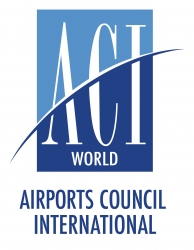 Luis Felipe de Oliveira
Luis Felipe de OliveiraDirector general – ACI World
Airports Council International
Canada
 Vivekanandhan Sindhamani
Vivekanandhan SindhamaniHead of sustainable aviation and resilience
NACO, Netherlands Airport Consultants
Netherlands
As airports face the pre-pandemic challenge of investing in infrastructure to meet future air travel demand in a sustainable manner, ACI World, with global aviation consultancies and leaders in sustainable aviation – NACO (Netherlands Airport Consultants) and To70, endeavors to create a world-first global framework for environmental, social and corporate governance (ESG) reporting and improvement. The creation of a global framework for ESG will build on the ACI World ESG management best practice and represent a further focus on ESG reporting in the industry. The resource aims to give airports an institutional framework for good governance, compliance and stewardship.
What the audience will learn
- Why a global airport ESG framework is necessary and what sparked it
- Who this framework will benefit and how
- Who is participating in the development of the framework
- How the framework will be developed, taking into account the regional differences and similarities
- What are the goals of this project and what are the deliverables
10:35
Journey to net zero carbon – projects implementation in Schiphol
 Annieke Smith
Annieke SmithSustainability expert
Royal Schiphol Group
Netherlands
 Gertjan Harkink
Gertjan HarkinkSenior project manager airports
Deerns
Netherlands
Decarbonizing the aviation sector is an urgent need. Airports are active contributors to this challenge. Implementing circularity and sustainability with a holistic approach at the campus level would lead to achieving decarbonization targets and economic benefits. Schiphol Airport will share its experience and efforts in decarbonizing the energy network and implementing circularity. Several ongoing projects will be presented as showcases.
What the audience will learn
- An holistic design approach is key to achieving optimal results during the operational time
- Circularity and sustainability projects are most successful when implemented at the campus level
- Introducing the material hub
- How to build a profitable business case for circular and sustainable solutions
- Five takeaways on the journey to net zero carbon
11:05 - 11:25
Break
11:25
'Mission Zero': forging the path to a sustainable tomorrow
 Lars Redeligx
Lars RedeligxChief executive officer
Düsseldorf Airport
Germany
Düsseldorf Airport is intensely advancing its efforts toward climate neutrality by 2035 and zero emissions by 2045. This includes innovative building and facility technology with intelligent control software, increased utilization of renewable resources, expanding photovoltaic installations, transitioning to green energy, integrating a hydrogen refueling station and electrifying its vehicle fleet – all significant steps in promoting sustainable mobility. The airport places a strong emphasis on strategic partnerships and collaborates with the EUREF Campus Düsseldorf, an innovation campus located near the airport and dedicated to the energy transition, involving established companies, startups and science and research communities.
What the audience will learn
- Concrete steps: how aligned actions are effectively propelling the airport toward climate neutrality and zero emissions
- Innovative technologies:the effective role played by innovative technologies and approaches in creating a sustainable and climate-friendly airport environment
- Strategic partnerships: the significance of strategic partnerships in driving sustainability and fostering eco-friendly airport operations
11:55
Sustainability progress at Indian airports
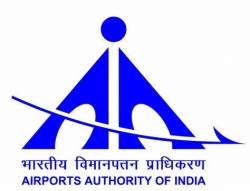 Sanjeev Jindal
Sanjeev JindalExecutive director engineering
Airports Authority of India
India
India’s aviation industry is experiencing remarkable growth. The Airports Authority of India (AAI) has launched a new initiative to make its airports more sustainable and carbon neutral. The Sustainable Green Airports Mission (SUGAM) aims to reduce the environmental impact of airport operations by promoting the use of renewable energy, energy efficiency measures and other sustainability initiatives. The initiative has four key objectives. It will help to reduce the environmental impact of airport operations, improve the quality of life for airport employees and communities, enhance the passenger experience, and position AAI as a leader in sustainable airport development and operations.
What the audience will learn
- How to reduce the environmental impact of airport operations by promoting the use of renewable energy and energy efficiency measures
- How to improve the quality of life for airport employees and communities
- How to enhance the passenger experience by providing a more comfortable and environmentally friendly airport environment
- AAI is a leader in sustainable airport development and operations
12:25
Eco-airport initiatives at Narita International Airport
 Takeshi Ishiguro
Takeshi IshiguroChief, airport sustainability
Narita International Airport Corporation
Japan
This presentation is about the eco-airport initiatives of Narita Airport. We seek to create an environment-friendly, recycling-oriented eco-airport in Narita, incorporating the NAA group and stakeholders. To achieve this goal, we have created Sustainable Narita 2050. This presentation includes the long-term vision of Sustainable Narita 2050, environmentally friendly facilities, decarbonization initiatives and the Plastic Smart campaign of Narita Airport.
What the audience will learn
- Community environment initiatives
- Recourse recycling initiatives
- Climate-change initiatives
12:55 - 14:15
Lunch
14:15
Quieter routes for noisy neighborhoods
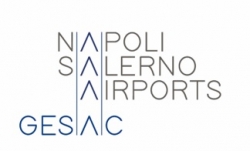 Francesca Capasso
Francesca CapassoEnvironment, noise and emissions manager
GESAC, Naples and Salerno Airports
Italy
 Michele Miedico
Michele MiedicoDirector of planning, environment and Progetto Salerno
GESAC, Naples and Salerno Airports
Italy
New flight procedures may be used to divert air traffic over less populated areas, reducing people's exposure to aircraft noise. Sometimes, opening new routes will instead double the complaints coming from the new overflown areas. The development of a new initial climb procedure for Naples Airport is an example of how to deal with local communities to prevent complaints and to explain the overall benefits for the neighborhood. Compensation activities – such as building a new public park as Naples International Airport did in an abandoned area in the airport’s proximity – may help to increase prosperity and quality of life.
What the audience will learn
- How to cooperate with the local community
- How to prevent complaints
- How to create value from urban regeneration in the proximity of the airport
14:45
A sustainable Peruvian portal
Terminal project manager
Lima Airport Partners (LAP)
Peru
The new Jorge Chavez began its journey toward sustainability through the use of 100% renewable energy during the construction of Terminal 2, which will open in 2025. Inspired by the Nazca culture, the terminal design implements new technological solutions, including advanced thermal and acoustic insulation, water- and energy-saving measures and recyclable materials. The terminal's eco-architectural design enhances the passenger experience and provides abundant spaces to integrate green areas and Peruvian cultural concepts, facilitating accessibility and inclusiveness to all users. The resiliency of the building is guaranteed through the inclusion of structural seismic isolations, ensuring continuity of operations in the event of an earthquake.
What the audience will learn
- LAP sustainability goals
- Sustainability features included in the new 40MPPA terminal in Lima
- Passenger experience in the new Jorge Chavez International Airport
- How the future airport in Lima, the capital of Peru, will support the country during earthquakes
- A bit of Peru, its culture and gastronomy
15:15 - 15:35
Break
15:35
Liquid hydrogen storage and airports – lessons learned
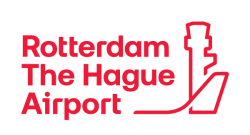 Daan Van Dijk
Daan Van DijkInnovator
Rotterdam The Hague Airport
Netherlands
 Gopal Kandiyoor
Gopal KandiyoorHydrogen aviation lead
NACO, Netherlands Airport Consultants
Netherlands
Efforts to decarbonize the aviation sector have been multifaceted, with various undertakings focusing on the use of hydrogen as a future fuel. As part of the TULIPS consortium under the EU Green Deal, Rotterdam The Hague Airport (RTHA) has a role to play in facilitating and participating in projects related to the use of hydrogen at airports, eventually paving the way for future use. As part of this, NACO and RTHA worked together to perform the conceptual design and safety studies required to support the installation of a liquid hydrogen storage facility on the active airside of the airport.
What the audience will learn
- Key ambitions of Rotterdam The Hague Airport related to the use of hydrogen to decarbonize aviation
- The spatial and operational constraints relating to the planning for a liquid hydrogen storage facility
- Detailed safety studies on liquid hydrogen storage and the implications on operations, safety and spatial planning
- The role of risk analysis on permitting processes and spatial planning
- Envisioned future steps for the expansion of trials and testing with hydrogen at the airport
16:05
The hydrogen supply chain at Malpensa Airport
 Massimo Corradi
Massimo CorradiHead of funded initiatives program management
SEA Milan Airports
Italy
The implementation of a hydrogen supply chain within Malpensa Airport thanks to 4 European projects: OLGA (hOListic & Green Airports), TH2ICINO (Towards H2ydrogen Integrated eConomies In NOrthern Italy), ALRIGH2T (Airport-Level DemonstRatIon of Ground refuelling of liquid Hydrogen for aviaTion), MALPENSA H2 (Hydrogen Refuelling Station) represents a significant step toward environmental sustainability and emission reduction in line with the NETZERO2030 goal. The presentation outlines the challenges and opportunities that accompany the implementation of the hydrogen supply chain at Malpensa, providing a comprehensive overview of strategies, proposed by SEA and partners, to overcome these challenges and guide the airport toward a more sustainable future.
What the audience will learn
- Role of EU funds not only as financial support
- H2 airport challenges and opportunities
- Airport energy hub
16:35 - 17:30
Panel discussion: Collaboration to investigate alternative aviation fuels airport compatibility
Hydrogen and electricity have been identified as significant contributors to the decarbonization efforts underway across the industry, but also have the potential to generate some new challenges for airport operators that need to be identified and managed appropriately. A task force has been established to identify the possible impacts on airport operations and infrastructure and prepare the pathway for the regulatory changes that will be needed within the ICAO framework. The presentation will highlight the task force's collaborative way of working, outcomes of previous and current ones, and the way forward to fit with the ambitious industry decarbonization objectives.
What the audience will learn
- Impact of alternative aviation fuels on airport operations and infrastructure
- Collaboration between OEMs, airports, airlines, CAAs and international organizations
- Possible changes identified through the introduction of aircraft powered by new fuel types
- Technical and operational expertise on challenges related to airport and aircraft compatibility
- Concept of operations for hydrogen and electric-powered aircraft
 Marjorie Bevon
Marjorie BevonSenior manager, logistics
Universal Hydrogen
France
 Claudio Camelier
Claudio CamelierHead of marketing, product strategy and market analysis
Heart Aerospace
Sweden
 Thomas Romig
Thomas RomigVice president safety, security & operations
ACI World
Canada
 Sebastien Lavina
Sebastien LavinaAirport operations expert
Airbus
FRANCE
Opening day party in the exhibition hall, after the conference!
Future airports
Day 1: Tuesday, April 16
Conclusio
Future airports
09:00 - 17:30
Introduction by Conference Chairs
 Joël Couillandeau
Joël CouillandeauCEO
Merchant Aviation, Groupe ADP
USA
 Rick Belliotti
Rick BelliottiDeputy chief officer - information technology
Austin-Bergstrom International Airport
USA
09:05
Digitalization, decarbonization and driving change – Fraport‘s vision for the future
 Claus Grunow
Claus GrunowVP corporate strategy and digitalization
Fraport AG Frankfurt Airport Services Worldwide
Germany
 Dr Jennifer Berz
Dr Jennifer BerzVP strategy and sustainability
Fraport AG Frankfurt Airport Services Worldwide
Germany
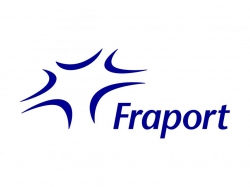 Verena Dollberg
Verena DollbergSenior project manager, corporate strategy and digitalization
Fraport AG
Germany
Digitalization, decarbonization and demographic change – three buzzwords we hear almost daily. But at Fraport, these are not just buzzwords. Fraport tries to deeply understand the challenges and problems and address them at the core. The audience will learn what Fraport Group does to meet the related new requirements and challenges. The presentation will outline Fraport's approach to mastering the digital transformation, how it wants to achieve the goal of becoming carbon-free by 2045 and how it tackles the challenges of demographic change.
What the audience will learn
- Fraport's understanding of digitalization, our goals and initiatives
- Sustainability as our license to operate and our activities to become holistically sustainable
- Demographic change as an embracing challenge and how we approach this challenging task
09:35 - 10:30
Panel discussion: Holistic, innovative and strategic decisions for tomorrow's airport and experience
An amazing panel of highly strategic airport executives discusses their decision making processes in creating sustainably responsible airport infrastructure while ensuring world-class customer experience. Panelists will discuss how they navigate and manage the expectations of their superiors and train and motivate their team while collaborating with peers and partners from airlines and regulatory agencies.
What the audience will learn
- Who is the user of the airport of tomorrow?
- How airports address changing expectations: approach and examples
- How do airports drive change and collaborate with their stakeholders?
 Amélie Lummaux
Amélie LummauxDeputy general manager sustainable development and projects division
Groupe ADP
France
 Meryem Akcay
Meryem AkcayResearcher lecturer
Amsterdam University of Applied Sciences
Netherlands
 Sharon McCloskey
Sharon McCloskeyVP customer experience
Dallas Fort Worth International Airport
USA
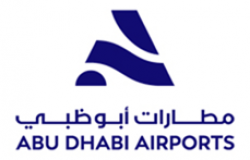 Vanda Aleixo
Vanda AleixoSenior manager passenger experience
Abu Dhabi Airports Company
United Arab Emirates
 Ashwini Thorat
Ashwini ThoratChief of design and planning
Adani Airport Holdings Ltd
INDIA
10:30 - 10:50
Break
10:50
Key trends impacting the airport industry
 Shiv Kumar
Shiv KumarChief of marketing and passenger experience
Manohar International Airport
India
The art of travel and how people move around the world will go through a paradigm shift in the coming years as disruption becomes the norm with technological advancements across domains. Airports will be the change drivers while at the center of advancements. What are the key trends that define the airport industry in 2024 and the next few years? This is what we are trying to understand from the data that is available to us across domains and industries. What priorities should a leader of an airport drive forward in 2024 and beyond?
What the audience will learn
- Importance of trends that define the airports of the future
- Importance of achieving net zero and sustainability
- Impact of technological innovations in the enhancement of the airport experience
- Impact of the changing workforce skill set on airport experience and development
11:20
DEN Operation 2045: creating an airport of the future
 Jim Starling
Jim StarlingChief construction and infrastructure officer
Denver International Airport
USA
In 2045, Denver International Airport (DEN) will turn 50 years old. To keep up with expected passenger traffic, enhance its sustainability and take advantage of innovations and technologies, DEN is creating Operation 2045. It’s a new strategy for an aging airport.
What the audience will learn
- How DEN envisions its future
- How DEN is revising its airfield layout
- How DEN is becoming a more sustainable airport
- How DEN works to continuously reinvent itself
11:50 - 12:50
Panel discussion: Where to prioritize investing in the future
Investing in the future of an airport is complex. With increased costs, decreased staff, disruptive technology, changing requirements and passenger behaviors, and the need to become sustainable all while creating memorable and seamless passenger experiences, there’s a lot to think about. The ROI discussion goes beyond expenditure, with the need to create a transformative culture that balances addressing the present with planning for the future. This panel will discuss creating a culture that embraces change, what they’re prioritizing to invest time and money in, what they see as the best ROI for the future, plus the need for whole industry innovation, collaboration and sharing.
 Luis Felipe de Oliveira
Luis Felipe de OliveiraDirector general – ACI World
Airports Council International
Canada
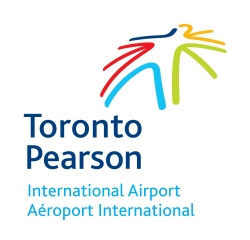 Bernardo Gogna
Bernardo GognaChief infrastructure officer
Greater Toronto Airports Authority
Canada
 Jim Starling
Jim StarlingChief construction and infrastructure officer
Denver International Airport
USA
 Mohamed Charkas
Mohamed CharkasExecutive vice president
Dallas Fort Worth International Airport
USA
 Nicolas Schenk
Nicolas SchenkChief development officer Noida International Airport
Zurich Airport International
India
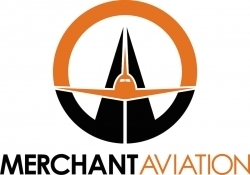 Kiran Merchant
Kiran MerchantVice chairman
Merchant Aviation
USA
12:50 - 14:15
Lunch
14:15
Planning for AAMs meta-precursor to regional air mobility and beyond
 Geoffrey Ax
Geoffrey AxPrincipal/aviation practice leader
Populous
USA
CVG’s mission is to redefine and elevate the role of an airport. To redefine and align resources for next-generation aircraft, it is developing an early-stage Vertiport Master Plan (VMP) to prepare its talent, infrastructure, CONOPS and business model implications for strategic synergies across the existing passengers and cargo portfolio.
What the audience will learn
- What the future AAM model for commercial and regional airports is
- How AAM will impact aviation’s traditional hub and spoke model
- The impacts to urban, suburban and rural areas for AAM
- What sale of the models could look like and the initial use cases for AAM
- The infrastructure requirements needed to operate and grow a scalable AAM operation
14:45 - 15:55
Panel discussion: The now, the new and the next – a futurist perspective of airport design
To paraphrase Dr Chris Luebkeman, airports evolve between the pragmatism of the 'now', the challenges of the 'new' and the promise of the 'next'. What drivers of change will shape aviation and the way we plan airports? How will the process of design evolve to accommodate unforeseen disrupters and changes? In this session, we will examine the forces affecting aviation design: socioeconomic fragility and political instability, the effect of technology on design, the need for sustainable and location-specific architecture, inclusivity and the care of each individual user emotionally and in regard to security are all part of the current architectural debate. What does this mean for future airport terminal design?
 John Picard
John PicardFounder/futurist
JPA/GoogleX
USA
 Andrew Witt
Andrew WittAssociate professor in practice
Harvard University
USA
 Antoinette Erickson
Antoinette EricksonSenior partner
Foster and Partners
UK
 Cristiano Ceccato
Cristiano CeccatoDirector
Zaha Hadid Architects
UK
15:55 - 16:15
Break
16:15 - 17:30
Panel discussion: Innovation behind the scenes: the good, the bad and especially the ugly
Innovation is the latest trendy, popular term that everyone is referencing. It is talked about highly, but what about all the challenges and limitations that are needed to get to that innovation? The panel will discuss innovation behind closed doors and the obstacles that airports face, unveiling the curtain and showcasing the procurement, cultural and monetary issues that may come up and how to prepare to overcome those obstacles.
What the audience will learn
- The challenges faced by innovators—including some of the things that can go wrong
- Ways to avoid and work through those challenges
- Plays for creating a culture of innovation at an airport
- Ways to engage stakeholders in a positive, productive manner, both internally and externally
 Jana Baschin
Jana BaschinSenior vice president corporate strategy and sustainability
Fraport AG
Germany
 Johnathan Lewis
Johnathan LewisInnovation division director
Miami Dade Aviation Department
USA
 Patrick Sgueglia
Patrick SguegliaSenior product manager airport experience, partnerships and biometrics
Lufthansa
Germany
 Dr Rolf Felkel
Dr Rolf FelkelSenior vice president applications and partner management
Fraport AG
Germany
 Samuel Ingalls
Samuel IngallsPrincipal consultant
Barich
USA
Opening day party in the exhibition hall, after the conference!
Management and operations – airside
Day 1: Tuesday, April 16
Spektrum 1
Management and operations – airside
09:00 - 17:30
Introduction by Conference Chair
 Velissarios Eleftheriou
Velissarios EleftheriouCEO
TotalCDM
Greece
09:05
Airside innovations at Frankfurt Airport
 Steffen Günther-Schmitz
Steffen Günther-SchmitzHead of operational procedures airside
Fraport AG
Germany
 Peter Håkansson
Peter HåkanssonDirector product management, apron
ADB Safegate
Sweden
Fraport and ADB Safegate are partnering to implement advanced airside technologies at Frankfurt International Airport. This collaborative effort includes the implementation of A-VDGS in low-visibility conditions, as well as the incorporation of artificial intelligence and 5G wireless technologies to enhance operational efficiency and safety. These advanced tools serve to streamline operations and increase throughput, ensuring that passengers and cargo are delivered safely and seamlessly. As joint leaders in airport technology, Fraport and ADB Safegate are committed to the continued development and implementation of state-of-the-art solutions that redefine the future of airports.
What the audience will learn
- Low-visibility and all-weather conditions operations
- Artificial intelligence and machine learning on the airside
- Using 5G wireless technologies
- Improving the environmental impact of apron operations
- Discovering additional capacity through efficient use of airside resources
09:30
Unlocking excellence: the Off-Block program at Düsseldorf Airport
 Henning Pfisterer
Henning PfistererSenior vice president aviation and accountable manager
Düsseldorf Airport
Germany
Düsseldorf Airport swiftly enhanced operations and passenger comfort through its Off-Block program, implementing over 50 measures. Notably effective during peak travel season, the program heightened operational stability, optimizing security checks, aircraft and baggage handling and terminal cleanliness. Collaborating closely with all partners on-site, including handling firms, airlines, federal police and security services, the initiative aimed at seamless operations. Focused on real-time data exchange, additional personnel and enhanced processes, the program serves as best practice for turning around an airport from operational bottlenecks to excellent performance.
What the audience will learn
- Enhancing airport performance: learn how an integrated performance approach improves airport operations and enhances passenger comfort through holistic measures
- Collaborative partnerships: understand the vital role of collaboration with various stakeholders for smooth airport operations
- Adaptability and efficiency: discover how adaptability and continuous process improvement are crucial in handling increased passenger demands
09:55
Construction activities: management of impacts on airport operations
Head of technical and execution management department
Aeroporto Di Bologna
Italy
In 2021, some complex construction work took place, focused on the construction of about 50,000 square meters of new apron. The site and the construction activities had a strong impact on airport operations. In particular, we faced an impact on the usual circling of the taxiway system and consequently on runway capacity. We worked with the Italian ATC service provider and managed the phases necessary to connect the new and existing infrastructure. To minimize the effect on operations, a new taxiway circulation system was implemented and fast time simulation was developed to evaluate the reduction in runway capacity.
What the audience will learn
- Management
- Construction activities
- Impact on airport operations
- Runway capacity
- Taxiway circling
10:20
Dealing with the unexpected – wildfires in Rhodes
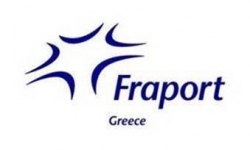 Panagiotis Spyratos
Panagiotis SpyratosCOO
Fraport Greece
Greece
The major tour operators had to deal with hundreds of passengers suddenly and simultaneously both at the airport and at the accommodation structures all over the island. Apart from the passengers of scheduled flights, a high volume of passengers arrived at the airport on a peak Sunday in July, as either they had to evacuate areas where their hotels were situated or had recently arrived in Rhodes and wished to depart earlier than scheduled due to concerns related to the wildfires. Passengers, mainly families with small children, were frightened and restless.
What the audience will learn
- Effective collaboration with all stakeholders and state entities
- Preparedness for climate-related disasters
- The importance of a go-team and volunteers from headquarters
- Need for rest facilities (sleeping bags, camping cots or air mattresses)
- Stock with sanitary products and other essentials for passengers, small children and pets
10:45 - 11:05
Break
11:05
Implementation of a digital apron control service at Lima Airport
 Thorsten Astheimer
Thorsten AstheimerSenior project manager global investments and management
Fraport
Germany
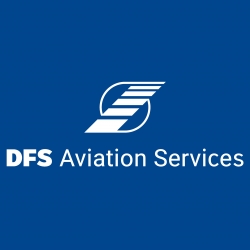 Dr Veit Voges
Dr Veit VogesProduct manager RTC
DFS Aviation Services
Germany
To handle the current expansion and the growing traffic in a safe and efficient way, Lima Airport decided to introduce apron control services at the airport. After the definition of the scope, the provision of the service was successfully tendered and put into operation in February 2023. In a second step, a digital apron control center will be implemented to provide the service using modern technology such as radar and cameras by the end of 2024. The presentation focuses on the motivation, the challenges and the main benefits of the implementation of apron control services and new technology at airports.
What the audience will learn
- Why should an airport take control over its aprons?
- What are the main challenges in introducing apron management services?
- What is the ANSP approach to apron management?
- What are the main operational improvements?
- What are the benefits and challenges of digital/remote apron control?
11:35
Efficient apron management – the logical step forward
 Sergio Martins
Sergio MartinsDirector, ATM and surveillance radars – Latin America
Saab
Brazil
As air transportation activity recovers from the pandemic, it has resumed its natural growth path. At the busiest airports, surface congestion tends to threaten airport operations safety and efficiency, again. ICAO document 9137 of the Airport Services Manual clearly states that air traffic control service at aerodromes does not include instructions on the apron, and a growing number of runway incursion events remind us that air traffic controllers should focus their attention on their actual area of responsibility: runways and taxiways. Airports and airlines are then challenged to take ownership of apron management services for safety and efficiency reasons.
What the audience will learn
- The value of efficient apron management
- Air traffic controller's responsibility
- Airside management
- CDM operation
- Airport operator's responsibility on the apron
12:00
Success factors for advanced surface management from the airport operator’s perspective
 Roland Kaps-Becker
Roland Kaps-BeckerCEO
Sman Crew
Germany
Airport operators have traditionally prioritized passenger processes in the terminal as well as turnaround processes while ATC focused on runway capacity. However, a comprehensive air-to-air perspective reveals the critical interdependency between these areas including also the taxiways. Efficient and safe movement of aircraft between the runway and parking positions is a crucial element in this context. Routing and planning, supported by new airport safety support services and potentially new guidance, can address these challenges. The process of bringing it to fruition can be challenging, but with the right approach, it can be achieved with confidence.
What the audience will learn
- How an air-to-air perspective is helping airport operations
- What are the challenges to implement new surface management services?
- Which factors facilitate a successful implementation?
12:25 - 13:45
Lunch
13:45
APOC – lessons learned
 Korijn Defever
Korijn DefeverGeneral manager
Airport Intelligence
Belgium
APOC/ground coordinator: big or small, virtual or physical, internal or with the entire airport community. So many questions and so many interpretations. While the basic principles are simple, often implementation projects seem overly complex. Learn from best practices in other airports and understand how to overcome the pitfalls. Get a better understanding of the value added to the concept and learn why they are not only beneficial for major hubs.
What the audience will learn
- Concrete lessons learned and best practices
- Typical pitfalls
- Value added for airports of all sizes
14:10
How AI and automation improve ground handling workflows
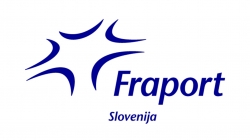 Robert Rauch
Robert RauchInnovation project manager
Fraport Slovenija
Slovenia
This presentation will delve into the dynamic landscape of ground handling operations and the transformative impact of technology and innovation. It will explore the effects of apron AI on turnaround performance and staff requirements, shedding light on the potential efficiency gains. Finally, it will unveil various implemented initiatives to maintain ground handling resilience at an optimal level, ensuring smooth operations even in challenging scenarios.
What the audience will learn
- Improving turnaround performance
- The transformative impact of technology and innovation
- Increased peak resilience
- Lessons learned
14:35
The impact of full visibility of the turnaround
 Julee Evans
Julee EvansSenior manager United Intelligent Airport
United Airlines
USA
 Christiaan Hen
Christiaan HenCEO
Assaia
Netherlands
We will present a case study on the use of artificial intelligence (AI) to optimize turnaround operations. Using AI, cameras and data, a comprehensive view of all turnaround operations has enabled real-time actionable feedback to the command center, to identify and eliminate inefficiencies and speed up the turnaround.
What the audience will learn
- Importance of turnaround operations visibility
- The opportunities of AI
- How airlines, airports and ground handlers can use data to collaborate
15:00
Pioneering for the next-gen delay code determination with AHM732
 Jeffrey Schäfer
Jeffrey SchäferProcess owner, aircraft turnaround
Royal Schiphol Group
Netherlands
On-time performance is crucial in aviation, and pinpointing delay sources is essential for maintaining top-notch operations. IATA's AHM732 delay code scheme marks a significant advancement, providing detailed, unbiased insights into delays. However, it presents complexity with an overwhelming number of codes for dispatchers to choose from in real time. The path to superior delay reporting lies in leveraging AI algorithms to aid decision makers in selecting delay reasons. This session will explore how AI can facilitate high-quality delay reporting, allowing the new delay codes to propel the aviation industry forward.
What the audience will learn
- How digital solutions can help to get better delay information
- How to capitalize on available and emerging technologies to better understand operations
- What roles airport should take in performance management
- How airports and airlines can use the data for actionable insights
- How airports and airlines can collaborate to move the entire industry forward
15:25 - 15:45
Break
15:45
How to improve safety with drones and AI?
 Vanesa Calvo Alonso
Vanesa Calvo AlonsoProject manager, innovation
Aena SME SA
Spain
 César Nava
César NavaAirport innovation project manager
Aena
Spain
Using drones, 5G and artificial intelligence to detect FODs (foreign object debris) at Aena airports. This innovative project will develop a solution to detect FODs on runways in real time using images sent by a UAS through a 5G network and processed by video analysis software with artificial intelligence. The first tests carried out on the innovation showed that the new concept is guaranteed to be viable. The first images of FODs were obtained to feed the artificial intelligence algorithm. The second test gave optimistic results in terms of the system's detection capacity.
What the audience will learn
- How to combine 5G, drones and artificial intelligence to improve safety, based on the automatization of the process
- The results of the validation phase and the obstacles encountered
- Aena's strategy regarding FOD detection and innovation, its needs and how it solved them
16:10
Making the case for operational drones
 Mats Berglind
Mats BerglindInnovation manager
Swedavia AB Arlanda
Sweden
At Swedavia, we have conducted several tests with operational drones on airside during the last few years and are doing ongoing tests in several use cases. This is a presentation of the results and lessons learned from these tests and what we plan to implement in the near future.
What the audience will learn
- Operational drones are part of the future
- Inspections are the silver bullet for drones
- Already today drones can be partly autonomous
16:35
Safe integration of UAS operations on runways and taxiways
 Florian Schmidt
Florian SchmidtCEO
Airsight
Germany
The demand for flying drones on runways, taxiways and aprons during ongoing airport operations is growing. Potential use cases for the airport operator are inspections of pavements, markings and signs, FOD detection or wildlife management. To ensure a safety-centric approach, close coordination with all stakeholders is key to planning and completing each UAS mission. This presentation will give an insight into the planning and approval process, global regulatory best practices as well lessons learned from drone flights on active airside assets.
What the audience will learn
- Safety management for flying drones at airports during live operations
- Approval requirements for drones at airports
- Global use cases of successful drone application for airside operations and maintenance
17:00 - 17:30
Panel discussion: Drones for airport inspections
 César Nava
César NavaAirport innovation project manager
Aena
Spain
 Mats Berglind
Mats BerglindInnovation manager
Swedavia AB Arlanda
Sweden
 Florian Schmidt
Florian SchmidtCEO
Airsight
Germany
 Vanesa Calvo Alonso
Vanesa Calvo AlonsoProject manager, innovation
Aena SME SA
Spain
 Velissarios Eleftheriou
Velissarios EleftheriouCEO
TotalCDM
GREECE
Opening day party in the exhibition hall, after the conference!
Technovation
Day 1: Tuesday, April 16Sponsored by Ozion


Harmonie 1
Technovation
09:00 - 17:30
Introduction by Conference Chairs
 Maurice Jenkins
Maurice JenkinsChief innovation officer
Miami International Airport
USA
 Samuel Ingalls
Samuel IngallsPrincipal consultant
Barich
USA
09:05
How to keep your airport at the required level of innovation
 Vera Jakobsen
Vera JakobsenVice president digital
Munich Airport
Germany
 Martin Kamlah
Martin KamlahVP corporate development and operations
Munich Airport International
Germany
Innovation has become a prominent buzzword in our industry, especially post-pandemic. Resource constraints in operations, IT, engineering and administrative departments pose obstacles to adopting new technologies and solutions. Airport operators are seeking different ways to cultivate and sustain a culture of innovation within their organizations. This presentation aims to provide a comprehensive overview of the diverse strategies for tackling the innovation challenge, offering insights into Munich Airport’s specific approach and priorities, and underscores the pivotal role of collaboration in achieving success.
What the audience will learn
- The different elements and success factors to build the innovation concept of your individual airport
- How MUC decided to approach the innovation challenge and set up a collaborative innovation environment
- MUC's selected focus topics for innovative technologies, solutions and concepts
09:35
How Swedavia is accelerating innovation and digital transformation
 Karin Gylin
Karin GylinHead of strategic development and innovation
Swedavia Airports
Sweden
Swedavia has worked to establish and accelerate innovation and digital transformation for several years. By including innovation and digital transformation into Swedavia's overall vision and strategy and by linking innovation and digital transformation closely together, Swedavia is accelerating value creation. From seamless digital travel to data-driven innovation, digital collaboration and automation, Swedavia is actively exploring and accelerating innovation across the 10 airports in the Swedavia group.
What the audience will learn
- The importance of linking strategy, innovation and digital transformation
- How Swedavia's vision, customer needs and trends are setting the roadmap for digital transformation 2030
- How managing innovation and digital transformation together accelerates value creation
10:05
Aena Ventures: discover our airport revolution
 Pablo Lopez Loeches
Pablo Lopez LoechesHead of ideation and entrepreneurship division
Aena
Spain
In our aim to promote open innovation and collaborate with the world of startups, in 2021 Aena – the world's leading airport operator by number of passengers – launched the first edition of Aena Ventures, our startup acceleration program. We are now immersed in the second edition, in which we have broken participation records with 514 proposals received, making Aena Ventures one of the most successful airport acceleration programs worldwide. In this session we will talk about the program, the projects of the first edition that are currently in the deployment phase, and the new proposals in the second edition.
What the audience will learn
- Aena Ventures: Aena's startup acceleration program
- Projects in the first and second editions of Aena Ventures
- Collaboration between startups and large corporates
- Open innovation strategy in airports
10:35 - 10:55
Break
10:55
How to become the world's most sustainable airport through innovation
 Jan Zekveld
Jan ZekveldHead of innovation
Royal Schiphol Group
Netherlands
 Pieter Paul van Oerle
Pieter Paul van OerleCo-founder
nlmtd (Unlimited)
Netherlands
It is Schiphol's ambition to become the world's most sustainable airport. One of the fundamental enablers to achieve this is the innovation strategy and practice of Schiphol's Innovation Hub. Hear from the head of innovation, Jan Zekveld, on how his team is working on “innovation families” to define the future of work, sustainability, autonomous vehicles and hands-free baggage handling. Pieter Paul van Oerle of the Impact and Innovation Agency (nlmtd) will share how its contract with Schiphol Airport drastically increased the speed and result of innovation and gave Schiphol access to the best global innovation ecosystem.
What the audience will learn
- Why the Royal Schiphol Group wants to become the most sustainable airport group in the world
- How Schiphol's ambition is translated into the innovation strategy and process
- The key focus areas and results of the Innovation Hub team
- How the innovation contract with nlmtd has increased the speed and result of innovation initiatives
- How Schiphol can find partners from a global innovation ecosystem and launch initiatives in two weeks
11:25
Addressing sustainable IT architectures for an integrated airport operations center
 Humphrey Loe
Humphrey LoeDirector of innovations and solutions, information technology and telecommunications
San Francisco International Airport
USA
 Bert Dijk
Bert DijkManager
M2P Consulting
Germany
In this presentation, we will present the SFO evolutionary approach and strategies to provide information technology for an integrated airport operations center. We examine sustainable integration patterns to loosely couple but tightly integrate operational systems to produce a collection of views that accurately represent current situational awareness. Supported by the proper infrastructure, integration layer, applications and cybersecurity, insights and knowledge can be derived from the collected data and put into an airport-owned AODB, creating an asset that centralizes data governance, reduces long-term technical debt and transforms capital investments into a sustainable and flexible operation.
What the audience will learn
- Elements of a sustainable IT architecture capable of enabling an event-driven architecture
- Integration patterns of a messaging layer that can deliver high performance and resiliency
- Domain-driven design and data mesh concepts and how they can apply to the airport operations database
11:55
Data-based cooperation between actors in airport processes
 Quentin Devouge
Quentin DevougeFacilitation director
Groupe ADP
France
Data collection, management and analysis have become essential for airport activities. Artificial intelligence will increase this evolution. However, airport processes are operated by numerous actors. This briefing will focus on how data can be used, in this context, to support airport processes such as passenger journeys, hospitality, security and maintenance. We will discuss the creation of a common approach and consider operational and technical conditions and other elements including data protection.
What the audience will learn
- Use of data for airport processes
- Coordination of actors inside the airport
- Sharing of data to use for airport operation
12:25
Breaking silos – analytics products from joined airport and airline
 Jens Grabeleu
Jens GrabeleuLeader consulting and strategy
FraAlliance
Germany
 Janina Erb
Janina ErbSenior consultant
d-fine
Germany
A major challenge in leveraging data analytics and machine learning for operational insights in aviation is existing data silos within and across stakeholders. To tackle this problem head on, FraAlliance – a joint venture between Fraport and Lufthansa – is establishing a joint data platform for the airport, airline and further external intermodal data at Frankfurt Airport. In a first use case, pax processes across airport checkpoints are analyzed and a forecasting model for curbside arrivals is developed. The insights will be leveraged in the form of dedicated data and BI products, supporting airport ops and enhancing the passenger experience.
What the audience will learn
- Breaking up data silos opens up vast potential to enhance operations and passenger experience
- Impactful insights already come from descriptive analytics and are enhanced by machine learning models
- Ideas on pax and ops use cases are generated continuously while working with extended data sources
- Trustful collaboration and established governance are needed to share data effectively
- Data privacy concerns need to be proactively pursued from the beginning
12:55 - 14:15
Lunch
14:15
Why did Frankfurt Airport invest big in biometrics?
 Jens Sanner
Jens SannerProgram manager
Fraport AG
Germany
 Forest Beattie
Forest BeattieSenior manager, solution engineer
SITA
Germany
As the first airport in Europe to offer biometric touchpoints for identification, from check-in to boarding the aircraft, Frankfurt Airport is enabling a streamlined, frictionless passenger journey through the airport. Its goal for the coming months is to equip at least 50% of all the check-in kiosks, pre-security and boarding gates with the new and pioneering technology. Find out how the airport went about such a transformative approach and the key learnings to drive change beyond the airport today and in the future.
What the audience will learn
- How crucial it is to focus on the passenger experience first and business case second
- What best practice is regarding privacy and passenger engagement
- How biometrics can be scaled to support departures and arrivals
- How biometrics can be integrated into travel ecosystems beyond the airport
- How suppliers can better support industry progress and interoperability desires
14:45
Facing the future: biometrics for access control and other security
 Donald Zoufal
Donald ZoufalConsultant
CrowZ Nest Consulting
USA
The use of biometrics to enhance internal employee security programs is a matter of extreme interest to airport security professionals across the globe. These programs are frequently constrained by a range of technical and legal/policy concerns. This presentation summarizes the results of a 2023 US government-funded study of biometric access control practices conducted by the National Safe Skies Alliance. It offers insights regarding use practices for a variety of differing biometric tools (face, fingerprint and iris) in airports in the US and Canada. It exposes the challenges of biometric implementations and offers practical approaches to mitigate those challenges.
What the audience will learn
- The biometric modalities (face, fingerprint, iris, etc) in use at airports
- The strengths and weaknesses of the differing biometric modalities
- The challenges (operational, legal, technical, etc) in implementing biometric programs
- How the challenges of implementing biometrics can be mitigated
- Industry best practices for biometric programs
15:15
A biometric passenger experience for airports and airlines
 Derwin Cady
Derwin CadySenior product manager, terminal operations
Air Canada
Canada
 James Snowdon
James SnowdonDirector, infrastructure and airport applications
Vancouver Airport Authority
Canada
An airport's objective is to move toward common use and an airline's objective is to provide a unique customer experience. The audience will learn how a collaborative model can be used to find common ground between the two parties and government agencies.
What the audience will learn
- Air Canada's pioneering digital identity strategy, delving into the technology and process behind its industry-leading approach
- Vancouver Airport Authority’s collaboration with Air Canada, to interface seamlessly between the airport, airline and a third-party identity management platform
- How this unique model adheres to industry-standard protocols and aviation norms, ensuring integration with common-use systems
- This unique approach's ability to accommodate multiple vendors, fostering a rich ecosystem of hardware and software services while allowing passengers to enjoy a hassle-free journey and giving airlines greater control over the process
- How a decentralized approach provides a viable framework for the aviation industry to boldly expand the application of biometrics in passenger processing
15:45 - 16:05
Break
16:05
Driving airport digitalization through adopting a product-technology operating model
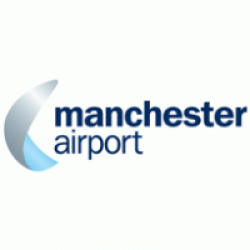 Ryan Cant
Ryan CantChief digital officer
Manchester Airports Group (MAG)
UK
Learn how Manchester Airports Group has transformed the way it thinks about technology and change delivery, pivoting to a business-partnered, product delivery model – where long-lived product teams take a 360 degree view of run and change, working hand in glove with operations, asset/capital delivery and commercial teams to weave technology into each area of our airports. We’re on a mission to become the most intelligent airports in the world – with digital and data powering our operations, augmenting our customer proposition and dynamically planning our assets and resources; but we’ll only be successful if we move away from traditional project delivery and embed a product-led mindset.
What the audience will learn
- How a product-led technology operating model can transform your business
- How to partner with the business to develop integrated product roadmaps
- Outcome-focused development
16:30
What's in your wearable: tech tools for tomorrow's talent
 Brian Cobb
Brian CobbChief innovation officer
Cincinnati/Northern Kentucky International Airport (CVG)
USA
The promises of augmented or virtual reality wearables haven't necessarily panned out, but have we been focused on the wrong wearable? CVG has leveraged wearable tech since 2015 for enterprise mobility management (EMM) purposes. What began as a solution for housekeepers to monitor and respond to restroom cleanliness needs has developed into broader enterprise awareness opportunities. These include lone worker safety status, safety and security awareness for the transient workforce (e.g. construction) and enablement features for tenant collaborations around advanced supervision of flight operations. As workforce pressures climb, CVG is advancing wearable technology in support of its campus talent.
What the audience will learn
- What's in a wearable
- Use case 1: insights to cleanliness
- Lessons learned: listen to the wearer as your collaborator, contender and customer
- Use case 2: building a case for biometrics
- Use case 3: automating workflows for maximizing efficiency and operational outcomes
17:00
Award-winning digital transformation of Samarkand International Airport
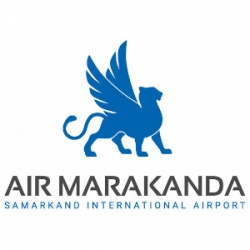 Bakhtiyor Khudayberdiev
Bakhtiyor KhudayberdievChief information officer
Samarkand International Airport
Uzbekistan
 Aytan Mastaliyeva
Aytan MastaliyevaVice president Americas, Europe, CIS
TAV Technologies
France
In this session, participants can step into the transformation of air travel at Samarkand International Airport and experience the airport's digitalization journey, now an award-winning success story. Samarkand Airport has embraced the latest IT solutions, including total airport management, resource management, common-use passenger processing, and ground handling systems. This session will share the realm of comprehensive technologies, spanning from advanced flight management to resource optimization. Participants will gain insights into how these innovations drive effective turnaround management, streamline passenger processing, maximize resource utilization and introduce groundbreaking AI-driven insights that are reshaping the entire airport experience.
What the audience will learn
- The remarkable rewards of holistic technology solutions for consistent and robust operational performance
- Samarkand International Airport’s transformation in resource optimization, revenue generation and turnaround planning via digitalization
- Enhancing passenger services and satisfaction through innovative processing solutions at Samarkand International Airport
Opening day party in the exhibition hall, after the conference!
Advanced air mobility (AAM), vertiports and infrastructure
Day 2: Wednesday, April 17
Illusion 1&2
Advanced air mobility (AAM), vertiports and infrastructure
09:00 - 17:30
Introduction by Conference Chairs
 Paolo Bianchi
Paolo BianchiHead of infrastructure strategy and planning
Bologna Airport
Italy
 Velissarios Eleftheriou
Velissarios EleftheriouCEO
TotalCDM
Greece
09:05
AAM – current status of innovation, development and implementation
 Lorenzo Di Loreto
Lorenzo Di LoretoManaging director
Munich Airport International
Germany
Munich Airport International (MAI) is actively facilitating the integration of AAM into airports worldwide. Its realization heavily depends on the development of necessary ground infrastructure. In discussions with airports and airlines around the globe, MAI consultants noticed uncertainty in the planning and development of such infrastructure. MAI supports innovation, development and implementation of AAM and aims to contribute to a greater level of transparency within the industry. MAI conducted a global survey regarding AAM at airports. This survey provides a strategic glimpse into the developments at airports and unveils experts' perspectives, offering strategic insights into airports' efforts to navigate AAM.
What the audience will learn
- Current status of innovation of AAM
- Glimpse into the developments of necessary ground infrastructure at airports
- Airport experts' perspectives
- Airports' efforts to navigate AAM
09:30
IAM integration and vertiports
 César Nava
César NavaAirport innovation project manager
Aena
Spain
 Vanesa Calvo Alonso
Vanesa Calvo AlonsoProject manager, innovation
Aena SME SA
Spain
The projects (OPERA & EUREKA) see vertiports as pivotal infrastructures facilitating the seamless take-off and landing of eVTOL. Designed for adaptability, vertiports and their networks accommodate diverse configurations to suit various use cases and traffic volumes. EUREKA, following a holistic approach, aims to develop a safe, efficient and sustainable IAM vertiport ecosystem tailored to urban environments and close interactions with airports. OPERA will develop and validate several solutions for the safe accommodation of large numbers of AAM vehicles in flight. The project will build solutions for complex operations of AAM-piloted air taxis and uncrewed cargo flights in real-life ATC conditions.
What the audience will learn
- AAM integration and current challenges for vertiport infrastructures
- Current AAM projects in Europe – solutions proposed and expectations
- Airport operator's point of view on the IAM integration in an airport environment
09:55
The Italian regulation for VCA operations
Engineer – manager
ENAC – Italian Civil Aviation Authority
Italy
The Italian Civil Aviation Authority has issued a regulation for VCA operations. This is the Italian proposal to promote innovative air mobility in Italy. This is one of the steps planned in the Italian Strategic Plan to implement IAM in the country. The speaker will illustrate the path of the journey toward a new era of air mobility. The regulation gives rules for operation, use of the air space, design and operation of a vertiport.
What the audience will learn
- Developing IAM
- Vertiports
- Managing the IAM service
10:20
The total potential for AAM operations in the United Kingdom
 Darrell Swanson
Darrell SwansonDirector
EA Maven
UK
The UK Advanced Air Mobility Index is the result of combining the UK Regional Air Mobility Index and the UK City Air Mobility Index developed by EA Maven. The study assesses potential routes in the UK suitable for AAM aircraft, including eVTOL, eS/CTOL and traditional hydrocarbon aircraft. The audience will gain insights into the total number of potential routes between airports and cities, along with the possibility of subregional hubs. The presentation will also discuss the economic impact of time savings and revenue generation, energy requirements, and the potential for carbon emissions savings.
What the audience will learn
- The potential value of AAM to the UK
- The number of potential routes in the UK for AAM operations
- The potential economic impact of AAM operations in the UK
- The potential time savings for travelers using AAM
- How AAM can address government objectives of leveling up and the Northern powerhouse
10:45 - 11:05
Break
11:05
Building an AAM ecosystem – Michigan’s development of a communication mesh
 Linn Smith
Linn SmithManager – airspace and emerging aviation systems, MDOT- Office of Aeronautics
Michigan State Department of Transportation - Division of Aeronautics
USA
 Paul Wheeler
Paul WheelerVice president, aerial innovation
WSP
USA
Many organizations and government agencies seek to understand their role and responsibilities in the advanced air mobility (AAM) ecosystem. The State of Michigan is leading the way in planning, developing and building a robust infrastructure tailored for lane-based AAM corridors. By harnessing the power of digital short-range sensors, the necessary coordination and communication within the AAM ecosystem can be tested, validated and enabled. This communication framework can facilitate the exchange of critical aircraft data, enable advanced collision avoidance, provide real-time infrastructure monitoring and augment weather data. The presentation will discuss Michigan’s phased approach to enable this crucial AAM infrastructure.
What the audience will learn
- Understand the need for and role of a robust communications framework in the AAM ecosystem
- Describe the phased approach to planning, testing, developing and building the communications mesh network
- Understand the technology and its range of capabilities
- Understand how the communications framework will enable a variety of safe AAM operations
11:30 - 12:15
Panel discussion: Advanced air mobility integration into the airport environment
This panel will look at the opportunities and challenges when integrating advanced air mobility into the airport environment with a focus on infrastructure and design considerations, operations, passenger processing and the regulatory and system changes that may arise. The panel will also look to identify how the cohabitation and integration of both crewed and uncrewed traffic at airports can be achieved in the future.
What the audience will learn
- Vision and perspectives of various airport stakeholders in the area of AAM
- Learn best practices and lessons learned so far with preliminary design and early results
- The latest certification developments from an OEM perspective
- The key findings of a global survey on AAM
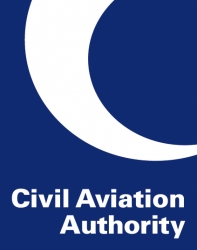 Jeremy Hartley
Jeremy HartleyPolicy specialist - vertiports
UK CAA
UK
 Christopher Liese
Christopher LieseBusiness development manager - North America
Munich Airport International
Germany
 Federico Cabrera
Federico CabreraOperations and CX manager
Aeropuertos Uruguay
Uruguay
 Doug Goldberg
Doug GoldbergPresident/CEO
Strategic Planning Services, Inc.
USA
 Jean-Sebastien Pard
Jean-Sebastien PardSenior manager, facilitation, passenger services and operations
Airports Council International (ACI) World
CANADA
12:15
Getting ready for the first eVTOL routes
 Andrea Wu
Andrea WuCo-founder and CEO
Urban-Air Port
UK
In readiness for the first eVTOL routes flying to and from airports, Urban-Air Port has developed a network of vertiports integrated at major and regional US West Coast airports. The session will reference this project and cover vertiport planning and design, ground and air integration and vertiport operations, and the work undertaken to pave the way for the first services.
What the audience will learn
- Developing realistic vertiport locations appropriate to first business cases and regulations
- eVTOL network planning and design
- Key considerations for vertiport design, planning and integration at airports
- Insight into FAA collaboration and regulatory compliance
- Development of vertiport operations linked to the airport flight schedule and responding to network disruption
12:40 - 14:00
Lunch
14:00
The tech behind take-off: the technology for vertiport operations
 Ankit Dass
Ankit DassChief technology officer
Skyports Infrastructure
UK
This session will look at the technology that enables each flight to take-off from a vertiport, from ticket booking and passenger registration software to resource scheduling systems that ensure flights run smoothly and demand is met, through to the hardware interface points throughout the vertiport and the UTM solutions. This session looks at the processes that are being defined at vertiports and considers the requirements as they apply to different locations and markets.
What the audience will learn
- A perspective on automation for scheduling, electrification and flight planning
- Insight from leading companies enabling the development of effective and scalable infrastructure for AAM operations
- The different technology that is being developed and a comparison with existing commercial aviation operations
- Why now is the time for implementing and testing vertiport technology
14:25
Cost-effective AAM infrastructure to achieve large sustainability wins
 Kim Silander
Kim SilanderFounder and chairman
Kookiejar of Sweden
Monaco
How to make advanced air mobility affordable to achieve large sustainability wins? Advanced air mobility is a green mode of transportation, with battery- and in the future hydrogen-driven drones and VTOL. However, if we can’t build a cost-efficient infrastructure it may risk only replacing expensive transportation options (e.g. helicopters, regional flights, etc) and not ground transportation (e.g. cars, trucks, etc). How can we address this challenge?
What the audience will learn
- AAM sustainability gains depend on cost of service
- What are vertiports and how will they affect us?
- AAM – when do we predict it will become a reality?
14:50
Launching Dubai’s commercial AAM network: operations, integration and infrastructure
 Damian Kysely
Damian KyselyHead of EMEA
Skyports Infrastructure
UK
This session will examine the progress of Dubai’s commercial AAM network, with insight shared by the project’s three main stakeholders. The session will look at the milestones achieved thus far from an operational, regulatory and development perspective, and consider what the next 18 months of effort will look like ahead of the 2026 launch goal.
What the audience will learn
- Dubai's approach to vertiport development and AAM
- Dubai's regulatory landscape – first jurisdiction with AAM regs
- What the roadmap for commercial launch looks like
- Why network development needs to be the priority, not individual projects
15:15 - 15:35
Break
15:35
Vertiport network building and management
 Marco Pellegrino
Marco PellegrinoHead of airside operations and first aid for Aeroporti di Roma, senior advisor for regulatory affairs for UrbanV
Aeroporti di Roma/UrbanV
Italy
UrbanV’s senior advisor for regulatory affairs, Marco Pellegrino will present the challenges of eVTOL integration in urban scenarios are going to become a reality in Rome in 2024, with the first business service between FCO Airport and Rome city center. The presentation will cover, with UrbanV, the experience so far and the collaboration with national stakeholders (CAA, ANSP, municipality, industry) and international stakeholders (EASA, ACI and ICAO). By the time of Passenger Terminal Conference, the project will be mature enough to provide a next step for development, compared with the previous presentations. Together with Paris, it will be the world's first practical application of eVTOL operations.
What the audience will learn
- How to plan and develop a vertiports network
- Innovation processes
- Stakeholder engagement
- eVTOL and AAM applications and CONOPS
16:05
FLAMINGO – the take-off of AAM in the Rhine-Main region
 Simon Graf
Simon GrafSenior project manager and commercial director
Fraport & FRA Vorfeldkontrolle GmbH
Germany
 Oliver Wohak
Oliver WohakSenior manager, lead aviation
d-fine
Germany
The deployment of advanced air mobility services presents a promising new mode of transportation and both technical as well as regulatory developments suggest that market introductions are just around the corner. However, besides the technical viability, regional economic feasibility for operations, including potential demand and locations for vertiports must be addressed. Utilizing a dedicated survey, the extension of a traffic simulation model and the economic analysis of ramp-up scenarios, the FLAMINGO research project, funded by the Federal Ministry for Digital and Transport, evaluates the AAM potential in the Rhine-Main region.
What the audience will learn
- Ramp-up scenarios differ depending on market developments
- Personas and use cases address company shuttles and premium travelers and the poorly connected
- Economic feasibility is achieved through network effects and autonomy
- Regional air mobility trumps urban air mobility in the Rhine-Main region
- Multiple stakeholders need to join forces to make AAM in Rhine-Main a reality
16:35
Update on the Paris VTOL 2024 project
 Alban Negret
Alban NegretHead of innovation and corporate venture
Groupe ADP
France
17:45 - SKYTRAX World Airport Awards ceremony and celebration in the exhibition hall after the conference!
Airport design, planning and development (continued)
Day 2: Wednesday, April 17Sponsored by Arcadis


Harmonie 3
Airport design, planning and development
09:00 - 17:30
Introduction by Conference Chairs
 Tim Walder
Tim WalderDeputy chair
British Aviation Group (BAG)
UK
 Mark Wolfe
Mark WolfePrincipal
Populous
Australia
09:05 - 10:05
Panel discussion: Challenges and opportunities for global airport developers
Challenges and opportunities for global airport developers to translate their vision into asset design across geographies. The panel will be a discourse on the topic of how different global operators address how we face the challenge of marrying our expertise in developing assets that facilitate world-class airport operations with the ‘couleur locale’ and the specific requirements of local concessions/societal pressures in different geographies. The different global operators will illustrate how they have tackled this challenge with examples of terminal designs that have recently been built or are under construction.
What the audience will learn
- Global airport development
- Development strategies over a varies of international assets
- How to translate a vision into asset design
 Isabel von Fournier
Isabel von FournierProject director
Fraport AG
Germany
 Jesus Caballero Pinto
Jesus Caballero PintoCEO
SOF Connect AD
Bulgaria
 Nicolas Schenk
Nicolas SchenkChief development officer Noida International Airport
Zurich Airport International
India
CEO
Zurich Airport Brasil
Brazil
 René Marey
René MareySenior airport architect
NACO Netherlands Airport Consultants
NETHERLANDS
10:05
Efficiency in design – doubling capacity on the fly!
Senior program manager
Lima Airport Partners (LAP)
Peru
The newLIM Expansion originally contemplated a new Terminal 2 with capacity for 20 MPPA, along with a renovation of the existing terminal. Responding to stakeholder requirements to operate one single terminal in 2025, LAP updated the design while already under construction to include additional areas planned in the current project scope. The building's modular and scalable design concept allowed for the fast-track modifications necessary to achieve a capacity of 40 MPPA without changing the delivery date. This was possible through the incorporation of common-use efficiencies, as well as the use of 'swing' infrastructure capable of serving both international and domestic traffic.
What the audience will learn
- Overcoming design challenges: forecasting during Covid, flexibility in design, commercial strategies
- Innovative tender process and construction challenges during Covid, logistics supply chain, fast-track construction
- Technology in airports
- Importance of engagement of different stakeholders in the aviation industry
- High-level overview of project finance processes
10:35 - 10:55
Break
10:55
Keflavik – building a sustainable future, one expansion at a time
 Brynjar Vatnsdal
Brynjar VatnsdalManager - airport development
Keflavik Airport, Isavia
Iceland
 Alistair Cordey
Alistair CordeyAssociate partner
Nordic Office of Architecture
Norway
The ongoing transformation of Keflavik Airport is the unique story of how Iceland’s international gateway will evolve in the years ahead, creating a sustainable and passenger-focused hub, ideally located for serving both North America and Europe. An interconnected portfolio of projects derived from the terminal masterplan is currently under construction or detailed design development, all addressing the ever-changing needs and desires of both passengers and carriers. Isavia, together with the Nordic Office of Architecture, will showcase some of these projects and the collaborative journey they have been on balancing the long-term masterplan vision with the short-term capacity needs.
What the audience will learn
- The unique operational and business challenges and opportunities Isavia encounters operating this uniquely located hub between Europe and North America
- The analysis and resulting approach Isavia has taken to meeting the long-term forecast for growth at the terminal
- Strategies and studies illustrating ways in which the terminal has looked to address immediate short-term requirements
- Nordic and Isavia’s collaboration exploring the options to meet the demands, driven by sustainability and efficiency in today’s market
- The challenge and importance of maintaining full operations at a terminal with a demanding peak-hour profile undergoing expansion
11:25
‘Solving the puzzle’ – Melbourne’s Airport development plan
 David Burns
David BurnsHead of airport planning
Melbourne Airport
Australia
Melbourne Airport is entering an exciting period of generational change.
As Melbourne becomes the largest city in Australia this decade, the airport requires substantial redevelopment and expansion to transform legacy infrastructure.
The next 10 years will see a new parallel runway, new elevated road network, new baggage system, a proposed airport rail link, plus expansions to terminals, concourses and aprons. Melbourne Airport’s purpose is 'creating connections that matter'. This airport development plan identifies the generational change infrastructure to facilitate long-term growth, enhance traveler experience, serve the needs of our airline customers and continue the crucial economic contribution to the city.
What the audience will learn
- Insight into Melbourne Airport’s past and the current corporate strategy – creating connections that matter
- Melbourne’s exciting and significant expansions, the airport development plan
- ‘Solving the puzzle’ approach to airport planning and identifying best for business and best for customer outcomes
- Start with clear goals and determine your end-game outcome, to inform the steps needed to get there
- ‘Domino effect’. Connecting the dots – understand the various project drivers (the ‘why’) to deliver a coordinated development program
11:55
Landside campus redevelopment for multimodal access integration
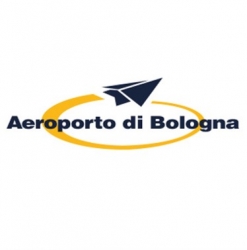 Raffaella Chiti
Raffaella ChitiInfrastructure planning manager
Bologna Airport
Italy
A tiny and congested landside campus constrained between the passenger terminal, a military base and a river, needs to accommodate 20 additional years of surface access growth in an integrated fashion. This presentation explains how to make the most of the available land, find solutions to upgrade road access, extend public and private curbs, develop a new bus station, accommodate additional car parking and integrate public transportation in an efficient mobility hub.
What the audience will learn
- Bologna Airport landside campus and surface access key features and constraints
- Landside developments envisaged in the masterplan
- How to nearly double capacity with no additional space
- How to fully integrate existing and future transportation modes
- How to turn a dense road environment into a pleasant and accessible outdoor space
12:25 - 13:45
Lunch
13:45
Gate gardens – a win-win-win for passengers, airports and commercial partners
 Dr Frank Quante
Dr Frank QuanteCEO
Fraport Bulgaria
Bulgaria
 Aleksandar Georgiev
Aleksandar GeorgievHead of planning, engineering and design
Fraport Bulgaria
Bulgaria
Designing an outside area on the airside – garden-like – allows passengers to relax, enjoy the view on the apron with a drink, and board directly from there. The presentation shares the conditions that make this project possible, the design aspects and the benefits for passengers, airport operations and commercial partners. In addition, the environmental aspects including reduced CO2 emissions and the reduction of both capex and opex will be presented. The goal is to create more than a sense of place by adding the spirit of the airport.
What the audience will learn
- Passenger experience – more than sense of place
- Non-aeronautical revenues – different from terminal-based sales
- Green design – a highly functional but very sensual experience for passengers
- Sustainability – optimize the CO2 footprint already in construction
14:15
The Copenhagen Airport experience project
 Henrik Vahlun
Henrik VahlunSenior project director
Copenhagen Airports AS
Denmark
 Christina Okai Mejborn
Christina Okai MejbornHead of planning
Zeso Architects
Denmark
 May Køster
May KøsterLead airport master planner, strategy and consultancy
Copenhagen Airports
Denmark
Copenhagen Airport is known by many as an airport with a pleasant overall atmosphere. The airport faces the challenge of maintaining a good passenger experience in a temporary environment characterized by narrower flow areas and construction walls during the development of the new Terminal 3. The purpose of the T3A Experience Project was to turn the expected negative impact on the passenger experience into a positive one. This presentation shows ways of mitigating the identified pain points through art and architecture. It also reveals the outcome of the project in the ambition of promoting positive reactions among passengers and employees.
What the audience will learn
- How to protect the airport brand during periods of terminal construction
- How to design interior fittings for disassembly and remounting in temporary surroundings
- How to gather different stakeholder interests through a user-driven design process
14:45
Terminal and airport wayfinding reinvented
 Mele Payne Lynch
Mele Payne LynchProgram manager
Los Angeles World Airports
USA
 Hans Thilenius
Hans ThileniusDeputy executive director, terminal development improvement program
Los Angeles World Airports
USA
Effective wayfinding systems afford customers a predictable, seamless and joyful journey. How do airports create this experience in an environment with complete visual elements and clutter? Science shows the physiological benefits of effective wayfinding, such as a healthy concessions program. This session will focus on LAX's need to make a wholesale change to its wayfinding system, heightened by the delivery of its new Automated People Mover system and new terminals. The program will explain the science supporting effective wayfinding and the LAX process to select and validate its approach to include new gating and terminal naming conventions, digital content and rebranding.
What the audience will learn
- How to get consensus from leadership, airlines and authorities on the jurisdiction of solutions for an airport on complex topics
- How digital content is effectively used and managed once activated
- Leveraging passenger behaviors to find the right solutions
- The logistics of implementation
- Leveraging lessons learned from other major wayfinding programs
15:15 - 15:35
Break
15:35
Long-term growth in a capacity-constrained environment
 Joseph Chadwell
Joseph ChadwellStrategic capacity manager
Heathrow
UK
 Gianluca Maestri
Gianluca MaestriMasterplan manager
Heathrow Airport
UK
Historically Heathrow has been one of the most capacity-constrained airports in the world due to the lack of space for additional runways, stands and terminals. To support future growth in demand, Heathrow is working on a three-level capacity approach: building back to pre-pandemic levels, optimizing existing processes and preparing a long-term plan to deliver infrastructure able to increase airport capacity. The presentation will outline how Heathrow is planning to enable the required capacity and deliver the components of the masterplan in response to anticipated future demand growth.
What the audience will learn
- How to approach developing a masterplan driven by capacity using a high-level assessment
- The key capacity touchpoints that can affect the phasing in a masterplan
- The capacity impacts of an asset management replacement program in a space-constrained environment
16:05
The new Salerno Costa d'Amalfi Airport
 Andrea Guglielmi
Andrea GuglielmiInfrastructure development and maintenance director
Gesac - Napoli and Salerno Airports
Italy
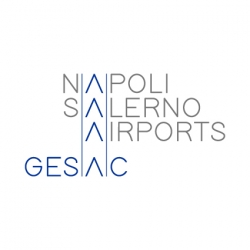 Ludovica Camporaso
Ludovica CamporasoProjects & contracts controller, infrastructure development
GESAC, Napoli and Salerno Airports
Italy
With the aim of creating an airport network for the Campania region, Gesac is working on Salerno Costa d’Amalfi development to reach 17.5 million pax in 2035. The project involves €240m of investments and the construction of a new runway, a general aviation terminal and a commercial aviation terminal, with high environmental sustainability, the newest technology and a strong connection with the Amalfi Coast surrounding area.
What the audience will learn
- New airport construction
- Masterplanning
- New terminal design and construction
- Sustainable design connected to the surrounding area
16:35 - 17:30
Panel discussion: Efficient terminal development strategies for the US market
The role that private airport infrastructure development has played in the US market is unique, and the approaches that work in other regulatory and commercial environments can prove challenging. As the US aviation market was originally pioneered by multiple short- and long-haul domestic air carriers, rather than a single state-affiliated carrier, the airline community plays a much greater role in how the market develops. This discussion will focus on the importance of the airport/airline relationship as it relates to infrastructure development in the US, from an airline and airport perspective.
What the audience will learn
- The role that airlines play in airport infrastructure development in the US market
- What has been successful and what has not in terms of airport/airline collaborations
- The keys to a successful infrastructure development project in this environment
- What airline stakeholder involvement means in the US market
- The differences between an airline-led and an airport-led development program
 Hans Thilenius
Hans ThileniusDeputy executive director, terminal development improvement program
Los Angeles World Airports
USA
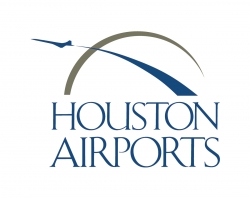 Jim Szczesniak
Jim SzczesniakDirector of aviation
Houston Airport System
USA
 Jonathan Massey
Jonathan MasseyManaging principal
Corgan
USA
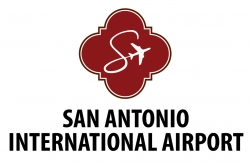 Jesus Saenz
Jesus SaenzDirector of airports
San Antonio Airport System, City of San Antonio
USA
 Steve Sisneros
Steve SisnerosVice president, airport affairs
Southwest Airlines
USA
17:45 - SKYTRAX World Airport Awards ceremony and celebration in the exhibition hall after the conference!
Airport design, planning and development – Middle East and Asia
Day 2: Wednesday, April 17Sponsored by Matarat


Conclusio
Airport design, planning and development – Middle East and Asia
09:00 - 17:30
Introduction by Conference Chairs
 Antoine Rostworowski
Antoine RostworowskiSenior vice president - programs and commercial services
Airports Council International (ACI) World
Canada
 Ashwini Thorat
Ashwini ThoratChief of design and planning
Adani Airport Holdings Ltd
India
 Satyaki Raghunath
Satyaki RaghunathChief operating officer
Bangalore International Airport Limited
India
09:05
Masterplanning Zayed International Airport, Abu Dhabi
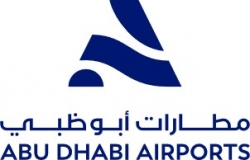 Frans Bouterse
Frans BouterseHead airport planning
Abu Dhabi Airports
United Arab Emirates
Zayed International Airport in Abu Dhabi (AUH) has just opened its brand-new Terminal A. In this presentation, Frans Bouterse will take you through a brief history of AUH, its latest passenger terminal, cargo and logistics developments and the planned satellite concourse, airport city and rail connectivity.
What the audience will learn
- How AUH developed over the past 40 years and provided capacity ahead of demand
- The new 742,000m2 Terminal A
- Ongoing cargo and logistics developments
- Future plans
09:35
King Salman International Airport: transforming aviation
 Mark van Doorne
Mark van DoorneVice president - masterplanning
King Salman International Airport Development Company
Saudi Arabia
The development of King Salman International Airport in Riyadh is a pivotal component of Saudi Arabia's Vision 2030 and the much-awaited Expo 2030 and 2034 FIFA World Cup. The airport will serve as the gateway to the kingdom's capital, guaranteeing convenient access to a rapidly expanding city and its numerous ongoing tourism and urban initiatives. Architectural firm Foster+Partners is responsible for the airport's design, to become the home and hub for the newly established airline Riyadh Air. The airport aspires to set new standards for sustainable design, construction and operations while providing visitors with exceptional journeys, events and experiences.
What the audience will learn
- Sustainable airport infrastructure design
- Holistic airport and real estate development
- Developing an airport as a destination
10:05 - 11:05
Panel discussion: Building blocks for the future
The panel will discuss airport leader’s choices for development, their vision for the future of their airports and regions, the importance of connectivity as a transport hub and creating seamless transport connections, plus plans to meet sustainability goals,and the CEO's role in building the airport's brand.
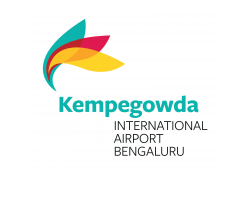 Hari Marar
Hari MararManaging director and CEO
Bangalore International Airport
India
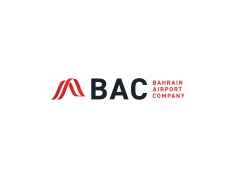 Mohamed Al Binfalah
Mohamed Al BinfalahCEO
Bahrain Airport Company
Bahrain
 Mohammed Alshammari
Mohammed AlshammariChief operations officer
Riyadh Airports Company
Saudi Arabia
 Satyaki Raghunath
Satyaki RaghunathChief operating officer
Bangalore International Airport Limited
INDIA
11:05 - 11:25
Break
11:25
Airport development in India
 Sharad Kumar
Sharad KumarBoard member (operations)
Airports Authority of India
India
The Aviation Ministry of India has revealed recently its intention to build 200 new airports by 2040 to serve India’s increasing air passenger traffic numbers. The Indian air travel market is the fastest growing in the world. The factor responsible for this growth is the booming economy of India: the increase in the proportion of middle-income households, very healthy competition and the government helping in the build-up of infrastructure at the leading airports through its very supportive policy framework. As per IATA, India is the ninth largest in civil aviation.
What the audience will learn
- Aviation traffic growth in India
- Market size
- Vision @2047
- The potential in India's market
11:55
DXN: accelerating the air travel experience in India
 Jan Michael Wicki
Jan Michael WickiVP program management and ORAT
Noida International Airport
India
 Nicolas Schenk
Nicolas SchenkChief development officer Noida International Airport
Zurich Airport International
India
Noida International Airport will be the second airport for the national capital region of India. The presentation will provide an insight into the design features planned for the greenfield project that will form the first dual airport system in an Indian metro. DXN has been designed with the vision to combine Indian warmth and hospitality with Swiss efficiency. The aim is to provide a modern, consumer-first infrastructure for airlines and travelers.
What the audience will learn
- Designing modern, consumer-first infrastructure
- Optimizing aircraft ground time
- Optimizing passenger flows
12:25 - 12:55
Panel discussion: Greenfield airports: the challenges and enablers for future aviation growth
Building a brand-new airport from the ground up is, for many aviation professionals, a once-in-a-lifetime opportunity, but one that comes with unique challenges. This session will explore how airports in APAC are addressing these challenges, what their current priorities are, and how they are planning for their opening. Top of mind for airports is enabling sustainable, seamless aviation growth and the future passenger experience through technology. The presentation will also explore key cultural considerations and differences between the two airports and how this has shaped their vision and planning.
What the audience will learn
- Current focus of both greenfield airports – airport construction phase, system integration and operational readiness planning
- The role technology will play in the future vision of the airport
- Significant and interesting cultural differences in Australia and India that shape each airport's vision and planning
- The value of working with a technology partner as part of a connected ecosystem
 Tom McCormack
Tom McCormackChief technology officer
Western Sydney Airport Corporation Limited
Australia
 Anurag Shandilya
Anurag ShandilyaHead of airport operations
Noida International Airport
India
 Sarah Samuel
Sarah SamuelSenior vice president, airport and airline operations, APAC
Amadeus
SINGAPORE
12:55 - 14:15
Lunch
14:15
The rejuvenation of an icon: Kansai International Airport Terminal 1
 Mathieu Boutitie
Mathieu BoutitieChief technical officer
Kansai Airports
Japan
 Ben Dawson
Ben DawsonPrincipal
Populous
Singapore
Kansai Airport is currently undergoing a significant $700m upgrade to reimagine the iconic Terminal 1. The transformation will increase international capacity by over 30% and fundamentally alter the passenger flows, interiors and customer experience. The project touches on numerous issues facing today's airports around the world, such as how to complete construction in a phased manner while maintaining operations, how to breathe new life into terminals with passenger experiences, and how to increase capacity without expanding the terminal footprint physically or environmentally. Kansai is currently halfway through the phased construction which will finish in time for the World Expo 2025.
What the audience will learn
- How to respectfully upgrade an existing architectural icon
- The hidden potential within existing terminals to readapt and repurpose existing areas to increase capacity
- The case for sustainability: readapt existing terminals rather than build new ones
- The historical context of the project and the new PPP framework for Japanese airports
- How airports can undergo major phased construction works without impacting operations
14:45
Navigating challenges: designing a flexible and cost-efficient terminal for Taichung
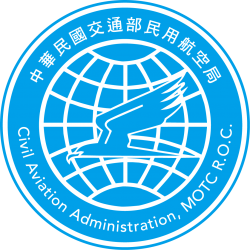 Yu-Cheng Hung
Yu-Cheng HungAssociate technical specialist
Civil Aviation Administration, MOTC, Taiwan
Taiwan
 April Yang
April YangPrincipal architect
April Yang Design Studio
Taiwan
Taichung International Airport, located centrally in Taiwan, is an airport with a very limited terminal area. It has experienced a surge in passenger volume amid economic and political uncertainties. To address this, the Civil Aviation Administration (CAA) collaborated with the April Yang design team to renovate the airport with a focus on flexibility. The solution emphasizes modularity and scalability, allowing for easy adjustments to accommodate changing passenger demands. The collaboration produced innovative, cost-effective solutions that balance functionality and aesthetics, enhancing the overall passenger experience. This project presents a good example of overcoming challenges in airport infrastructure through collaboration and creative problem solving.
What the audience will learn
- Design background and condition
- Coordination with agencies and stakeholders
- Flexible layout design connecting international and domestic terminals
- The future image of the airport
15:10
Future planning for the new terminal at Narita Airport
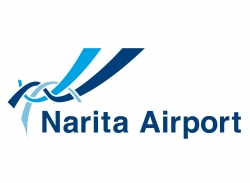 Susumu Kameda
Susumu KamedaChief, airport planning
Narita International Airport Corporation
Japan
This presentation is about the future planning of developing a compact, consolidated single terminal. The aim is to make Narita Airport an international hub airport, with enhanced airport function and improved passenger experience. This presentation includes an overview of Narita Airport, the current issues faced, and the plans to solve those issues through the airport's future planning.
What the audience will learn
- Flexible operation of construction
- Sustainable developments of Narita Airport
- Reasonable planning of the new terminal
15:40 - 16:00
Break
16:00
KAIA: future fitness, agility and an ongoing airport development program CANCELLED
 Danny Aoun
Danny AounRegional director of operations
Dar Al-Handasah Consultants (Shair and Partners)
Lebanon
Over more than 15 years, the Kingdom of Saudi Arabia’s General Authority of Civil Aviation has been expanding and modernizing the King Abdulaziz International Airport (KAIA). KAIA has transformed into a regional hub and international turntable for passenger and cargo traffic and a primary gateway for millions of Muslims arriving for the Hajj pilgrimages. KAIA’s journey offers exceptional insights into how quickly airport requirements are changing, how flexibility and meticulousness in project management are essential in delivering new airport facilities, and what it could mean to maintain operations while still implementing transformational changes across an entire airport.
What the audience will learn
- Airport development programs need the agility and flexibility to adapt to rapidly developing technologies and revolutions in aviation best practices
- KAIA was an exceptional example of how 70+ airlines could be transitioned to new airport facilities without disrupting passenger services
- Airport development is a challenge in project management – success leans on effective coordination between all airport and project stakeholders
- An airport’s masterplan update has to address continuous improvements to enhance the airport’s overall operations and address emerging priorities
- Airport development has to considesr both the requirements of existing aircraft fleets and future innovations in aviation technology
16:30
Red Sea International Airport, an airport experience unlike any other
 Joe Stratford
Joe StratfordExecutive director, projects (airports)
Red Sea Global
Saudi Arabia
 Martin Neilan
Martin NeilanAviation director
Pascall + Watson
UK
The Red Sea resorts require a new means of access for national and international guests, one that is both sustainable and luxurious – where passengers become guests. The initial architectural concept created unique challenges and great opportunities to realize something truly special, but also as a functional design that could comply with all authority requirements and come in on time/on budget. Through lateral thinking and rigorous development, the scheme not only reached the client’s aspirations but exceeded them. This presentation will discuss the challenges, solutions and progress updates from key individuals involved in the project's success.
What the audience will learn
- The unique challenges and opportunities faced in developing an innovative airport design for the Red Sea resorts
- Key elements of functionality, sustainability and exclusivity needed to create an outstanding airport experience for guests
- The project progress so far and the contributions made by different team members to ensure its success
17:00
Vision 2030: Matarat's aviation transformation
 Turki Almubadal
Turki AlmubadalExecutive vice president projects and technical affairs
Matarat Holding Company
Saudi Arabia
 Antoine Bonnaud
Antoine BonnaudHead of aviation consultancy and engineering
Egis
United Arab Emirates
Since April 2023, Matarat has been transforming Saudi airports in line with Vision 2030. Matarat Holding Company oversees 26 airports, pivotal for Vision 2030’s goal. Its strategic planning, asset management and commitment to international best practices are integral in shaping the future of Saudi Arabia’s civil aviation. The project involves comprehensive project control engineering to ensure that infrastructure and buildings are brought in line with global standards. This initiative plays a crucial role in helping Matarat achieve its vision while promoting knowledge transfer and enabling sustainable growth.
What the audience will learn
- Vision 2030 goals and Saudi civil aviation’s transformation
- Effective strategies to support transformative changes and international best practices
- Focus on asset management work stream
17:45 - SKYTRAX World Airport Awards ceremony and celebration in the exhibition hall after the conference!
Aviation security, technology, process and people (continued)
Day 2: Wednesday, April 17
Spektrum 2
Aviation security, technology, process and people
09:00 - 17:30
Introduction by Conference Chairs
 Catherine Piana
Catherine PianaDirector general
ASSA-i Aviation Security Services Association - International
Belgium
 Donald Zoufal
Donald ZoufalConsultant
CrowZ Nest Consulting
USA
 Neville Hay
Neville HayDirector of training
Interportpolice
UK
09:05 - 09:55
Panel discussion: Crisis management – what do we do when it goes wrong?
The recurrence of similar issues in crisis management across different situations can be attributed to several common factors and challenges. Is aviation doing enough to emphasize continuous learning, invest in robust crisis management training, conduct thorough post-crisis reviews and foster a culture that encourages adaptability and innovation? What can be learned from other industries and stated cases? What are some of the common themes? Implementing a proactive approach to crisis management, staying informed about emerging risks and regularly updating crisis plans can contribute to better outcomes in the face of future crises.
What the audience will learn
- The physical and mental impact experienced firsthand through the eyes of those involved in devastating terrorist events
- Why ongoing training and the various tools now available are invaluable and essential for internalizing lessons for improving response capabilities
- Adapting and preparing for new threats and the challenges that may reveal vulnerabilities
- Why communication is a vital link throughout a crisis incident and examples where this has been catastrophic
- Why airports need to ask 'are we prepared?'
 Dr David Rubens
Dr David RubensExecutive director
Institute of Strategic Risk Management
UK
Jean-Pierre Devos
First commissioner, deputy station commander
Politiezone Hamme/Waasmunster
Belgium
First commissioner, deputy station commander
Politiezone Hamme/Waasmunster
Belgium
 Lawrie Day
Lawrie DayCEO
Cognitas Global Ltd
UK
 Navaid Ahsan
Navaid AhsanHead of AVSEC operations
Etihad Airways
United Arab Emirates
 Neville Hay
Neville HayDirector of training
Interportpolice
UK
09:55 - 10:45
Panel discussion: Complexity of the UAS/AAM environment and aviation security
The panel will discuss efforts to mitigate the evolving risk of UAS in the airport environment while harnessing its benefits, and will explore opportunities to shape security policy and develop procedures for AAM operations.
What the audience will learn
- TSA risk evaluation for UAS and leveraging mitigation technology
- Airport perspective on balancing UAS risk with opportunities
- Existing regulation and policy landscape for AAM
- Developing security procedures for anticipated AAM business models
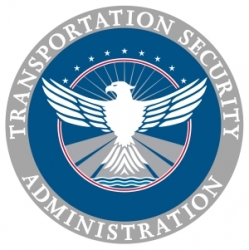 Austin Gould
Austin GouldAssistant administrator, requirements and capabilities analysis (RCA)
Transportation Security Administration (TSA)
USA
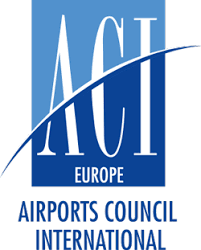 Sébastien Colmant
Sébastien ColmantDirector, aviation and cybersecurity
Airports Council International - Europe (ACI)
Belgium
 Stephen Dempsey
Stephen DempseyDirector, WW aviation security and regulatory compliance
Amazon
USA
 Jessica Grizzle
Jessica GrizzlePARAS program manager
National Safe Skies Alliance
USA
10:45 - 11:05
Break
11:05
A VR tour through the security checkpoint of the future
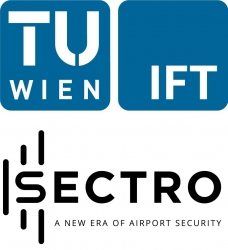 Gernot Pöchgraber
Gernot PöchgraberLeader of the research group for process innovation
Technical University of Vienna
Austria
For the past five years, TU Vienna has been developing a fully automated security check together with Hörmann Klatt Conveyors. A resource saving of up to 35%, a solution for the lack of security staff, the highest-possible security standard and a stress-free passenger experience are the unique selling points of the system. In 2024, the time has finally come and the first pilot system will be installed at an airport. TU Vienna will present these innovations live on stage with the help of virtual reality.
What the audience will learn
- How waiting times and staff shortages in the security sector will be a thing of the past in the future
- How digital twins are making passenger travel greener and more sustainable
- How automation/digitalization will change the future of airport security
- How a positive passenger experience contributes to the overall passenger journey
11:35
Future security checkpoint planning: CT scanners, CIP and body scanners
 Mark Powell
Mark PowellOperational planning director
Heathrow Airport Limited (HAL)
UK
 Kasper Hounsgaard
Kasper HounsgaardCo-CEO
Copenhagen Optimization
Denmark
CT scanners, centralized image processing (CIP) and 100% of passengers using body scanners in security checkpoints globally marks the largest change in security checkpoint operation since 9/11. The presentation will detail how London Heathrow is handling these changes, how this impacts the planning and execution of operations and the challenges of running an operation with both CT and non-CT lanes. It will also discuss the opportunities for airports, including the effect of CIP, the ability to boost the productivity of a lane by adding staff, and how rostering must change to meet the new security checkpoint operation.
What the audience will learn
- The impact of CT lanes
- The impact of CIP
- How the transition is done in a busy airport environment
12:05
Security checkpoint transformation: Frankfurt Airport’s journey and insights
 Jan Mueller
Jan MuellerSenior manager aviation security technology
Fraport
Germany
 James Cowley
James CowleyAccount director pax EMEA/LATAM
Vanderlande
Spain
Discover how to smoothly shift security management from government ownership to airport control while incorporating cutting-edge checkpoint tech. In this presentation, Fraport and Vanderlande experts impart valuable insights from their experience with Frankfurt Airport’s now privately operated security checkpoint. Learn about change management, tech integration and stakeholder collaboration for an improved passenger journey. This presentation offers a roadmap for fellow airport operators, ensuring a seamless transition and operational excellence, with proven methods to elevate security checkpoints through transformative technology.
What the audience will learn
- Effective change management: strategies for managing significant transitions and maintaining operational continuity during change
- Seamless technology integration: how to integrate new technologies smoothly to enhance security protocols and passenger experience
- Collaboration dynamics: the importance of effective collaboration between airports and technology partners for successful transformations
- Unforeseen challenge resolution: insights into addressing unexpected challenges and adapting strategies to ensure a successful transition
- Passenger-centric approach: methods to prioritize passenger satisfaction while implementing security changes and technological advancements
12:35 - 14:00
Lunch
14:00
The future of secure, touchless travel to enhance the travel
 Larry Panetta
Larry PanettaDirector
US Customs and Border Protection (CBP)
USA
With a shared objective to create a secure, streamlined and intuitive process for air travelers, US Customs and Border Protection (CBP) and the air travel industry are leveraging technology and expanding public-private partnerships to enhance the travel experience. This session will highlight CBP’s efforts to transform the international arrivals process through the use of facial biometrics for identity verification and mobile technology while, at the same time, expanding biometric exit through public-private partnerships. Learn about CBP’s latest air travel innovation efforts from curb to gate and partnership opportunities between CBP, airlines and airports to meet the biometric exit mandate.
What the audience will learn
- CBP’s progress in enhancing the biometric entry/exit program and expanding biometric departure for international travel
- The significance of efficient passenger processing in bolstering national security and economic competitiveness
- The latest upgrades to CBP’s mobile applications including global entry mobile, ESTA mobile and mobile passport control
- CBP's ongoing transformation of the federal inspection service to further secure and enhance the entry process
- The importance of adapting passenger processing services to meet the changing expectations of travelers
14:30
Digitalizing the passenger journey: Bangalore's success story of leveraging biometrics
 Hari Marar
Hari MararManaging director and CEO
Bangalore International Airport
India
 Sumesh Patel
Sumesh PatelPresident - Asia-Pacific
SITA
Singapore
India has shown commitment to using smart technologies to increase efficiencies for airports and airlines and streamline the passenger journey, which is vital to ensure strong and sustainable growth. With 36 airlines and 30+ million departing passengers per year, Bangalore Airport (BIAL) is one of the fastest-growing airports in India and is leading in the adoption of biometrics. Learn how BIAL is using a state-of-the-art biometric solution to enable faster passenger processing and smoother passenger experiences, stimulate growth and bring the benefits of digital travel nationwide. Also, discover how BIAL is aligning with the Indian government's Digi Yatra initiative.
What the audience will learn
- How BIAL's investment increases efficiencies and streamlines the passenger journey, enabling it to set the standard for the region
- How smart technologies allow faster and easier passenger processing, enabling the airport to manage India's exponential growth
- How BIAL is meeting the increasing passenger demands of a digital and mobile enabled journey
15:00 - 15:55
Panel discussion: Don’t be held hostage – protect your critical systems from data breaches
Airports and airlines give multiple third-party vendors, consultants and contractors access to their critical IT systems but the vetting of these third parties is minimal. The severity of data breaches from third-party vendors is growing and becoming increasingly costly. The panel will discuss easy, proven methods airports and airlines can adopt to protect their critical systems from the 'insider threat' of third-party vendors.
What the audience will learn
- Security measures to include in RFPs to protect your systems from non-contracted vendors
- Reasonable requirements of third-party vendors that do business with you
- Ransomware protection measures from third-party vendors
- Audits and exercises to conduct to enhance protection measures
 Mark Baker
Mark BakerSenior manager corporate facilities
Southwest Airlines
USA
 David Peeples
David PeeplesCEO
Intellisoft
USA
 Mike Jones
Mike JonesAirport technology director
Manchester Airports Group (MAG)
UK
 Mark Crosby
Mark CrosbyVice president of aviation
McCarthy Building Companies
USA
15:55 - 16:15
Break
16:15
Corporate security goes digital – experience multiple digitalization measures
 Alisa Rastätter
Alisa RastätterProject manager aviation corporate security
Fraport
Germany
 Sandra Dahmen
Sandra DahmenSenior project manager
Fraport
Germany
The corporate security process at Fraport is subject to a wide range of regulatory requirements and legal guidelines. Join us on a journey into the digitalized security processes of today and tomorrow. Experience which digital trends and possibilities have been and are being implemented at Fraport, taking into account legal requirements. Learn more about digital badges, KI-based backflow protection, the use of biometrics at Fraport and other exciting practical examples.
What the audience will learn
- Digitalization opportunities based on real examples
- Digitalization against the background of highly regulated environments
- Digitalization in a company with many different stakeholders
- Future of security processes on airport
16:45 - 17:30
Panel discussion: Unlocking the future – biometrics collaboration
Session attendees will learn how US Customs and Border Protection (CBP) and the TSA work with partners, such as Lufthansa, to implement aviation security technologies and foster collaboration across external stakeholders. Highlights will include the end-to-end facial biometric journey at Frankfurt Airport and other locations in the United States. The TSA has had tremendous success working with partners on implementing biometrics and digital identity capabilities that improve the performance and security of checkpoint operations by increasing assurance of traveler identity. Panelists will share lessons learned and current challenges about the impact of advanced biometrics and digital credential technologies.
What the audience will learn
- How we are working to address public concerns related to the accuracy of biometric technologies and prioritize protecting personal information
- How we collaborate with DHS S&T to conduct demographic performance tests to continue assessing the equitability of its biometrics solutions
- How we are testing digital identity technologies to automate the identity verification portion of the checkpoint process for all passengers
 Nina Sproedt
Nina SproedtVP product development, customer experience and ground transformation, Lufthansa Group
Deutsche Lufthansa AG
Germany
 Matthew Davies
Matthew DaviesExecutive director
US Customs and Border Protection
USA
 Austin Gould
Austin GouldAssistant administrator, requirements and capabilities analysis (RCA)
Transportation Security Administration (TSA)
USA
17:45 - SKYTRAX World Airport Awards ceremony and celebration in the exhibition hall after the conference!
Commercial development – retail, concessions, media, experience (continued)
Day 2: Wednesday, April 17
Harmonie 2
Commercial development – retail, concessions, media, experience
09:00 - 17:30
Introduction by Conference Chair
 Jeremy Corfield
Jeremy CorfieldPartner
CPI
Australia
09:05
Saudi airports – excelling the shopping and dining experience
 Marcus Spahn
Marcus SpahnGeneral manager non-aero
Matarat Holding
Saudi Arabia
The airports in the Kingdom of Saudi Arabia – the Middle East's largest aviation market – are currently going through a massive commercial transformation in line with the goals of the Saudi Aviation Strategy. The presentation will showcase how the airports in the Kingdom are improving the shopping/dining experience and leveraging revenue opportunities with new, large-scale commercial developments, innovative concepts, digitalization, sense of place and customer-centricity.
What the audience will learn
- How to improve the retail and F&B offer
- How to uplift non-aero revenues
- The Saudi airport ecosystem: development of the commercial offer
09:35 - 10:20
Panel discussion: Diversification of non-aeronautical revenue – advertising and partnerships at ONT
Establishing, building and sustaining relationships with an effective, simple approach to help ONT nearly triple its in-house advertising revenue. ONT partnered with Fuse Advancement to establish a new advertising and partnerships model within the revenue management division with the goal of continual opportunities for revenue growth by building on joint relationships. This collaboration has taken ONT from advertising revenues of approximately US$700,000 annually to nearly tripling this revenue stream in less than two years and has led to new partnerships in concessions and a new joint venture partnership.
What the audience will learn
- It literally pays to develop relationships
- Partnerships that match your organization's personality
- Establishing non-transactional relationships can create long-term financial rewards
- How can this be replicated in other airports
- Partner's perspective – how they have benefited from this model
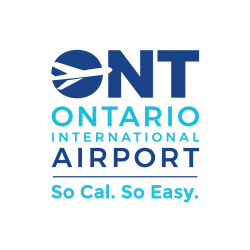 Atif Elkadi
Atif ElkadiChief executive officer
Ontario International Airport Authority
USA
 Chris Pennington
Chris PenningtonCo-founder and partner
Brewery X
USA
 Scott Jacobson
Scott JacobsonAdvertising/partnership
Ontario International Airport Authority
USA
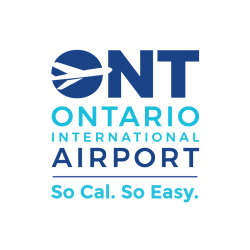 Elisa Grey
Elisa GreyChief revenue management officer
Ontario International Airport Authority
USA
10:20
The synergy of airport retail and hospitality: capitalizing on non-aeronautical revenue
 Jonathan Song
Jonathan SongGlobal director of business development
Plaza Premium Group
Hong Kong
Collaboration between airport retail and hospitality has immense potential for growing the airport business economy. Airport hospitality outlets, like lounges, provide retail brands with a new avenue to diversify their revenue streams, while lounge operators can offer in-lounge shopping services, which can be seamlessly integrated with loyalty programs. This synergy between retail and hospitality not only boosts revenue potential but also enhances customer engagement and loyalty, opening up vast opportunities to maximize non-aeronautical revenue and truly harness the synergistic potential shared by airport and concession industry players. With the right strategies, they can successfully monetize this dynamic segment.
What the audience will learn
- Growing the airport business economy requires strategic collaboration
- The intersection of airport retail and airport hospitality presents significant opportunities for growth and monetization
- Creating a diverse and seamless experience is essential for enhancing passenger engagement and satisfaction
- Cross-selling and bundling products open new avenues for revenue and growth in the airport business
- Maximizing non-aeronautical revenue through synergistic collaboration between airport and concession industry players
10:50 - 11:10
Break
11:10
Building a bridge to the future – generating revenue through infrastructure
 Bryan Smith
Bryan SmithArchitect design principal, global aviation
Jacobs
USA
DEN’s Vision100 mission is planning for 100 million annual passengers to be processed by 2032. The existing automated train system is currently over capacity with no redundancy in the event of the train shutting down. The concessions and retail footprints are also over capacity and will need to double in size in the next eight years to adequately serve 100 million passengers. DEN is looking at innovative and cost-effective solutions to upgrade the infrastructure with two mega-span pedestrian bridges that will add capacity and redundancy to the train system, double the commercial revenue footprint and greatly improve the passenger experience.
What the audience will learn
- Creative planning and design: infrastructure upgrades can generate commercial revenue and create less cost burden for airlines and passengers
- Elevate the passenger experience: reducing congestion on the train and significantly expanding commercial amenities will transform the passenger experience
- Creating redundancy is essential: train system failures at DEN cause massive disruptions to the airport and airline operations
- Innovative design and construction methods: pedestrian bridges provide a cost-effective design solution and minimize construction disruption to airline operations
- Minimize impact on infrastructure: the bridges will have net zero+ energy use with minimal impact on the existing infrastructure
11:40
Leading travel and tourism retail
 Sacha Zackariya
Sacha ZackariyaCEO and co-founder
ChangeGroup
UK
How businesses can sustainably capture new profits in shopping tourism. The presentation will offer some interesting insights into the behavior of consumers in the travel retail space. Covering unique insights into the wants and needs of travelers, based on spending behaviors observed firsthand over the past 30 years, it combines extensive research with expert analysis to provide a 360-degree view of the industry.
What the audience will learn
- Why travel and tourism retail has become so big
- How to encourage tourists to spend money
- How to provide excellence in customer service
- How to provide the experiences travelers are looking for
- Preparing for emergencies
12:10
Airport hotels – revenue, service and value benefits
 John Arbuckle
John ArbucklePartner and head of aviation
Newmark
UK
Airport hotels have evolved and become an integral part of airport revenue and passenger service. What is the right model for an airport hotel – in terminal, terminal connected or a remote hotel zone? We will share our latest research on hotel commercial performance, providing insights into how hotels can contribute to passenger experience and revenue and create value. Finally, we will look into the future and offer our views on future trends and opportunities.
What the audience will learn
- What makes airport hotels different
- What the revenue opportunities are
- How airport hotels can deliver on passenger service
- How airport hotels have performed since the pandemic
- Hotel trends and opportunities
12:40 - 14:00
Lunch
14:00 - 14:40
Panel discussion: Navigating disruption: digital innovation for passenger relief and airport success
Disruption in the aviation industry is inevitable but when handled inefficiently can have a huge impact on the passenger experience that ultimately impacts airports, airlines and retailers alike. In this panel discuss the impact of disruption on the passenger experience and how digital innovation can revolutionize compensation, airport passenger flow and airport operational success.
What the audience will learn
- The impact of disruption on passenger experience
- Digital innovations in passenger compensation
- Airport retail's role in enhancing passenger experience
- Seamless passenger journeys in the airport
- Partner collaboration for operational success
 Daniel Gemander
Daniel GemanderRetail key account manager
Fraport AG
Germany
Customer disruptions manager
Ryanair DAC
Ireland
 Pantea Homayoun
Pantea HomayounManager customer processes
Lufthansa
Germany
Group head of equipment and value creation
SSP The Food Travel Experts
UK
 Viktoriya Soubra
Viktoriya SoubraDirector of sales
iCoupon Global
United Arab Emirates
 Jeremy Corfield
Jeremy CorfieldPartner
CPI
AUSTRALIA
14:40
Global trends in non-aeronautical airport revenues
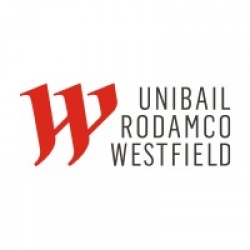 Kim Gray
Kim GraySenior vice president - commercial strategy
Unibail-Rodamco-Westfield
UK
 Alex Avery
Alex AveryCEO
Pragma Consulting
UK
Presenting the latest trends in driving non-aeronautical airport revenues. The presentation will share insights from Pragma’s work at airports across the world including Europe, Asia, the Middle East and North and South America, plus the results of Pragma’s latest global consumer survey into passenger behaviors. Insights from URW’s North American airport assets including LAX, JFK, and Chicago will also be shared.
What the audience will learn
- How has passengers’ buying behavior in airport terminals changed overall in recent years?
- How are Gen Z and Millennial passengers behaving differently from older passenger groups?
- What types of retail offers are driving passenger engagement?
- Which F&B concepts are performing well?
- What are the major differences in passenger behavior across the world?
15:10
Nashville – commercial development – sense of place
 Sabine Trenk
Sabine TrenkCEO
Fraport USA
USA
Fraport USA’s successful developer model includes planning an optimal mix of local, regional and global brands that can transform each airport into a food and retail destination with a sense of place consistent with the airport’s unique vision. When Fraport first announced plans for BNA’s reimagined concessions program, the goal was to bring significant new business opportunities to small and minority businesses from the Nashville region and Tennessee. The emphasis from day one has been on local flavor and flair. This iconic program features diverse local operators and innovative partnerships that showcase the best of Music City and Tennessee.
What the audience will learn
- Deliver high-impact, visually stunning environments and custom architectural elements including technology solutions
- Bring significant business and employment opportunities to local, small and minority businesses from the region
- Generate passenger spending, consistent high sales and revenue
15:40 - 16:00
Break
16:00
Designing digital airside stories
 Sebastien Grinsard
Sebastien GrinsardChief digital officer
Groupe ADP
France
Discover Groupe ADP's universal customer journey and understand how digital and data contribute to drive value and satisfaction at Paris airports. Through a holistic digital and data ecosystem, the airport and its operators can leverage the power of customer data to deliver extraordinary experiences to singular passengers. By knowing and rewarding customers across their journeys, the airport community enables them to take the extra time to discover and get inspired before boarding.
What the audience will learn
- Building an integrated customer data ecosystem at the airport level through a loyalty program
- Leveraging the data to understand and address the airport customers' needs and expectations
- Driving value and satisfaction before, during and after the passengers' journeys
16:30
Inform, connect, convert. Insights into a pax-focused digital retail strategy
 Jens Paul
Jens PaulVice president - retail digital
Fraport AG
Germany
 Phillip Braunwarth
Phillip BraunwarthTeam lead digital product management
Fraport AG
Germany
Most airports offer a wide range of non-aeronautical products and services, but the big challenge is how to get passengers in touch with these services at the right time and the right place to drive additional revenue. Frankfurt Airport's new digital retail strategy addresses this issue in a holistic way and defines three major elements of how to convert passengers into customers. In addition to the presentation of the strategy, some hands-on examples are given of how the strategy has already been put into practice, including metrics and key learnings.
What the audience will learn
- How to get passengers into the airport's digital ecosystem
- What are the best touchpoints to enrich information with relevant service offerings?
- How to connect various services from different departments and business areas
- Hands-on insights and experiences
17:00
Using mobile application to increase passenger experience and non-aeronautical revenues CANCELLED
 Mehdi Moradhaseli
Mehdi MoradhaseliIKA aeronautical ICT director
Iran Airports and Air Navigation Company
Iran
The proposal emphasizes the importance of utilizing e-commerce in airport services to increase non-aeronautical revenues and enhance the passenger experience and passenger satisfaction. The increase in non-aeronautical revenues was achieved by integrating and centralizing incomes generated from airport services, using smart technologies, eliminating intermediaries, and precise and excellent supervision over commercial activities and retailers. Improving the passenger experience and passenger satisfaction occurs through the provision of diverse online services via an application, additionally addressing passengers' essential needs and solving their issues online.
What the audience will learn
- Airports can boost non-aeronautical revenues serving airport services through mobile applications
- Commercial activities will be integrated through mobile applications and airport operators have precise supervision of them
- The significance of the passenger as a customer and the implementation of a CRM to keep in contact with passengers
- Passenger experience and passenger satisfaction will be enhanced by the ease of using mobile applications to get airport services
- Integration with other software and providing information that can eliminate passenger stress and waiting time
17:45 - SKYTRAX World Airport Awards ceremony and celebration in the exhibition hall after the conference!
Customer service, passenger and personnel experience (continued)
Day 2: Wednesday, April 17Sponsored by Ozion


Fantasie
Customer service, passenger and personnel experience
09:00 - 17:30
Introduction by Conference Chairs
 Claire Donnellan
Claire DonnellanDirector
Customer Centric Consulting
Australia
 Jerry Angrave
Jerry AngraveCustomer experience director
Empathyce
UK
09:05
Unlocking the power of emotions and ambiance for an enhanced airport experience
 Benedikt Staudt
Benedikt StaudtSenior manager controlling and business development
Flughafen München GmbH
Germany
Munich Airport is a global leader in pioneering passenger experience management (PXM) strategies that revolve around emotional and ambient factors to create seamless, joyful journeys. The airport's approach involves measuring the effectiveness of PXM using various key performance indicators (KPIs). Munich Airport has deployed design and routing and cutting-edge tools, such as CT scanners, eGates and common-use check-in counters, while also adding a Bavarian soul to areas, to enhance the airport experience. The session will provide practical examples of how airports can take a people-centric approach to customer experience, engaging stakeholders and employees to deliver strategic goals while using industry-best measurement tools.
What the audience will learn
- How emotions and ambiance can significantly impact passenger experience
- The importance of stakeholder cooperation and staff engagement in implementing PXM strategies
- Munich Airport’s use of KPIs and measurement tools to enhance passenger experience
- Various enhancements, including eGates, common-use counters, lounges, themed spaces, sporting events and restaurants
- The significance of customer centricity, driving passenger loyalty and economic success
09:35
Reshaping the airport experience as part of capital prioritization activities
 Claire Donnellan
Claire DonnellanDirector
Customer Centric Consulting
Australia
As airports revisit their corporate and investment strategies, it is timely to question how relevant the anticipated outcomes for customers still are. Customer expectations have renewed and are evolving, especially with ever-changing traveler types. Each airport has a unique experience and when this is reflected in how investment is prioritized, results speak for themselves. Airports are asking how they should reshape their airport experience to respond to these renewed expectations and amplify their unique offer. Ongoing, airport-wide commitment and accountability to be a destination of choice is crucial. Having the corporate strategy, human-centered practices and capital program to support these commitments is critical to success.
What the audience will learn
- Embedding the customer in capital prioritization decisions
- De-risking customer-related investments
- Evolving investment priorities that foster success
10:05
A journey toward a personalized AI airport companion
 Keri Phoenix
Keri PhoenixDirector of innovation
Vancouver Airport Authority
Canada
 Christina Apatow
Christina ApatowCEO
FetchyFox
USA
In an era where personalization is not just appreciated but expected, the travel industry is primed to innovate. This presentation demonstrates the next critical step in customer service excellence: a digital, personal airport companion, providing real-time guidance, wait times, concessions information and the ability to coordinate specialty services, including accessibility assistance. Explore the impact of empowering passengers through a platform that not only speaks to their needs but also anticipates them. As they step into the airport, passengers will be greeted with a sense of control and reassurance, knowing that real-time, personalized assistance is at their fingertips.
What the audience will learn
- Understanding passenger pain points in traditional airport experiences and the demand for tailored solutions
- Solutions that encompass passengers with reduced mobility are breaking barriers and fostering inclusivity in air travel
- How personalized, predictive, easy-to-navigate technology can reduce common pain points
10:35
Oli – more than a chatbot: a travel companion
 Celia Leiro del Alamo
Celia Leiro del AlamoCustomer experience specialist
Aena
Spain
 Pablo Lopez Loeches
Pablo Lopez LoechesHead of ideation and entrepreneurship division
Aena
Spain
Since its inception in December 2022, Aena's chatbot has transformed the passenger experience on Aena's network. Integrating key flight data, FAQs and points of interest, Oli has assisted more than 500,000 passengers through text and voice input in eight languages. A comprehensive documentation test and stopover aid function were designed to make passengers' lives easier, making Oli the perfect travel companion. With proactive alerts from the Aena network and the inclusion of GPT, the chatbot became the engine for physical virtual assistants in airports. Moreover, it can offer entertainment with a game, and Aena plans to interconnect it with other chatbots.
What the audience will learn
- The chatbot’s integrations with the airport's internal systems
- Basic functionalities to improve the passenger experience (connections and travel documentation)
- Improving intent recognition and responses with GPT enrichment
- First steps towards an airport digital ecosystem by connecting with the chatbots of your stakeholders and airports
11:05 - 11:25
Break
11:25
Arena to the airport: CX strategies that help win customers
 Matt Thome
Matt ThomeSenior CX strategy consultant - airport experience
Southwest Airlines
USA
Live events at arenas and stadiums have one commonality: they evoke high levels of emotion that keep us coming back for more. The best venues do that even if your favorite team loses. How? They create an environment that is easy to navigate and caters to customers' needs despite sometimes stressful and disappointing situations. This session will show you how you can take the same theories surrounding wayfinding, comfort, communication, satisfaction, entertainment, etc and apply them to your airport environment to keep customers choosing your facility time and time again.
What the audience will learn
- How physical venue spaces and wayfinding aids can enhance the customer experience
- How airport and vendor staff have a role in creating a positive experience
- Tips on how to drive customer-focused behavior through vendor partners, which can be difficult to influence
11:55
Eye of the passenger – rules for better wayfinding
 Wesley Lang
Wesley LangSenior research and insight manager
Heathrow
UK
 Jon Ward
Jon WardVP EMEA
Tobii
UK
With so much information, navigation, stimuli and distractions in an airport terminal, how do you really understand the passenger journey and optimize it in such a way that it meets the requirements of the airport and the traveler? Heathrow ran an innovative study aiming to do exactly this, tracing the journey and interactions from arrival at the airport to departure, then from landing to leaving the terminal. Using eye tracking to see directly through the eyes of the passenger, these insights are already being used to shape the future of wayfinding at Heathrow Airport.
What the audience will learn
- Wayfinding best practice – seven key guidelines
- Using technology to bring a story to life for stakeholders
- Using mixed research methods to give a complete picture – real-time behavior linked to in-depth qualitative interviewing
- How to run research and recruit in a live airport – the highs and lows
12:25 - 13:45
Lunch
13:45
Alicante-Elche Miguel Hernández Airport – committed to everyone
 Belén Gisbert Sánchez
Belén Gisbert SánchezHead of accessibility, Alicante Airport
Aena SME
Spain
Alicante-Elche Miguel Hernández Airport is the third Spanish airport in the Aena network in terms of the number of people with special needs. People from Alicante are open, cheerful and friendly. Universal accessibility is a common goal at the airport and in the city, and we all strive to make traveling easier for people with disabilities. At the airport, universal accessibility is a continuous improvement process in which all workers participate. In this presentation we will present the accessibility measures developed at our airport, in terms of infrastructure and procedures, to make our airport an airport for everyone.
What the audience will learn
- It's not just the airport, it's the city. Without an accessible city, there is no point in an accessible airport
- Elements for an accessible infrastructure
- Examples of accessible airport services and facilities
- Alicante Airport barrier-free service
- Specific procedures to improve the experience and passage of PRMs through our airport
14:15 - 15:45
Panel discussion: From raising awareness to taking action – implementing accessibility in the aviation industry
 Stephanie Cadieux
Stephanie CadieuxChief accessibility officer of Canada
Government of Canada
Canada
 Dee Thomas
Dee ThomasOperations transformation director
Jeddah Airports
Saudi Arabia
 Emily Yates
Emily YatesHead of accessibility and inclusive design
Mima
UK
 Dr Hans-Gerhard Giesa
Dr Hans-Gerhard GiesaSenior expert human factors
Airbus
Germany
 James Fremantle
James FremantleSenior consumer policy and enforcement manager
United Kingdom Civil Aviation Authority
UK
 Roberto Castiglioni MBE
Roberto Castiglioni MBEAccessible air travel evangelist
Reduced Mobility Rights Limited
UK
15:45 - 16:05
Break
16:05
The strategic imperative: starting ORAT in the design phase
 John Angel
John AngelManaging director of airport operations for the Northeast & BOS
Delta Air Lines
USA
 Jane Goslett
Jane GoslettPrincipal, people & organizations advisory
Arup
USA
Major infrastructure projects are intricate endeavors that involve numerous stakeholders, complex processes and substantial investments. Achieving success in these projects relies on meticulous planning, coordination and a deep understanding of the essentials involved. Operational readiness, activation, and transition (ORAT) is pivotal to ensuring a seamless transition from design to full-scale operations. Traditionally, ORAT was seen as a process to be initiated closer to the opening date. However, a paradigm shift is underway, one that acknowledges the importance of starting ORAT as early as the design phase; Delta Air Lines at LaGuardia Airport has seen the benefit of this firsthand.
What the audience will learn
- The concept of ORAT and its critical role in airport design
- The opportunities for cost-savings and minimizing change control
- How progressively managing ongoing construction impacts supports passenger experience
- Positive effects of ORAT on staff experience, training and preparedness
- The benefits Delta Air Lines has seen with the successful integration of ORAT into airport design
16:35 - 17:30
Panel discussion: Navigating disruptions in airport customer experience
This panel will explore strategies that airports have employed to ease pressures when travel journeys do not go as planned. During inclement weather or other disruptions, how can airports maintain high-levels of customer satisfaction? What role does personalization of services have in customer experience during irregular operations? What do you do when technology fails? The panel engages airport speakers from diverse geographic locations and exchanges ideas on emerging best practices for CX during disruptions.
What the audience will learn
- Identifying key disruptions in today's airport customer experience
- Implementing technology solutions to improve efficiency and convenience
- Enhancing communication channels for better customer service
- Designing flexible systems to handle unexpected challenges
- Learning from past disruptions to futureproof airport operations
 Abdulkadir Demirtaş
Abdulkadir DemirtaşCustomer experience manager
Istanbul Airport
Turkey
 Yacine Kebe, IAP
Yacine Kebe, IAPDirector safety environment quality
LAS – Dakar Blaise Diagne Airport
Senegal
 Dr Kirk Goodlet
Dr Kirk GoodletSenior director
InterVistas Consulting
Canada
 Sev Fevzi
Sev FevziPresident & CEO
Sevly Inc
Canada
 Arturo Garcia
Arturo GarciaCOO
Avports
USA
17:45 - SKYTRAX World Airport Awards ceremony and celebration in the exhibition hall after the conference!
Environment and sustainability (continued)
Day 2: Wednesday, April 17
Illusion 3
Environment and sustainability
09:00 - 17:30
Introduction by Conference Chairs
 Emanuel Fleuti
Emanuel FleutiHead of sustainability and environment
Zurich Airport
Switzerland
 Dr Mary Kerins
Dr Mary KerinsFormer head of health, safety, sustainability and environment at DAA
Mary Kerins
Ireland
09:05
Decarbonization strategy for airports
 Samantha Yuan
Samantha YuanAssociate director, regulatory affairs and sustainability
Changi Airport Group
Singapore
This presentation will examine the key levers for airports to decarbonize across Scope 1, 2 and 3 emissions. Examples include transitioning airside vehicle fleets to cleaner energy variants, increasing the rate of renewable energy adoption and working with the ecosystem to encourage the adoption of sustainable aviation fuel.
What the audience will learn
- Airport decarbonization
- Airside fleet
- Renewable energy
- Sustainable aviation fuel
09:35
Airport climate action scales new heights with Level 5
 Alexandre de Joybert
Alexandre de JoybertDirector of sustainability
ACI Europe
Belgium
In December 2023, ACI launched a brand-new, topmost level of Airport Carbon Accreditation – Level 5. This new level certifies airports for achieving a net zero carbon balance for emissions under the airport's direct control, and committing to net zero for Scope 3 emissions by 2050 or sooner. The expanded framework of the global carbon standard for airports now empowers the sector's ambitious net zero commitments and provides a global benchmark for net zero achievement. At the moment of launch, 10 airports had met all the stringent requirements of this new level as part of the pilot program.
What the audience will learn
- Learning about the requirements of the new level of Airport Carbon Accreditation
- Understanding the intricacies of airport climate action across the three GHG emissions scopes
- Receiving an update on the current progress of airport climate action globally, including the most recent emissions savings
10:05
Designing airspace for the lowest achievable environmental impact
 Simon Rhodes
Simon RhodesHead of airspace
Edinburgh Airport Limited
UK
 James Ellaway
James EllawayTechnical director
WSP UK Limited
UK
Airspace change programs (ACP) can cause considerable concern in noise-affected communities. We innovatively applied a GIS multi-criteria analysis decision support tool, GoldSet, to inform the design of Edinburgh Airport’s new flight paths to minimize impacts on overflown communities, noise-sensitive receptors and areas of tranquillity. GoldSet analyzed population density, the locations of educational, health and community facilities, places of worship, recreational areas, protected sites and habitats. The ‘flyability surface’ developed by GoldSet informed the SID and STAR design process, resulting in an ACP design that balanced competing demands and minimized noise, track miles, carbon, fuel burn and health impacts.
What the audience will learn
- The innovative application of ground transportation-based techniques to algorithmically optimize new flight paths
- The various data sets underpinning the analysis, which are critical to generating a balanced and optimized approach to flight path design
- The transformation and weighting of input data sets to facilitate a balanced outcome that minimizes environmental impacts while optimizing track miles
- The complexity of trade-offs between affected communities, noise, track miles, carbon and fuel burn
10:35 - 10:55
Break
10:55
Designing SFO Harvey Milk Terminal with embodied carbon in mind
 Kristin Allen
Kristin AllenTerminal 1 program manager
San Francisco International Airport
USA
 Kirsten Ritchie
Kirsten RitchieGlobal director, climate action and sustainability
Gensler
USA
Airport terminals are complex and energy-intensive buildings that play a vital role in transportation infrastructure. However, they can also have a significant environmental and climate-change impact, particularly in terms of their embodied carbon. This presentation will provide an overview of the embodied carbon analysis completed for the SFO Harvey Milk Terminal 1. The discussion will include insights into the state of LCA and embodied carbon analysis and how information was used throughout the design and construction process to make informed decisions about the project’s building materials, ultimately leading to a 20% reduction in embodied carbon footprint from the baseline.
What the audience will learn
- Airport design standards for low embodied carbon and sequestered carbon building products
- What is whole building lifecycle analysis (LCA) and embodied carbon analysis?
- Why is it important to consider whole building LCA and embodied carbon when designing and operating airport terminals?
- How to conduct an LCA and embodied carbon assessment for an airport terminal
- Knowledge and tools designers, builders and operators need to reduce the embodied carbon footprint of their airport terminals
11:25
Green terminal management practice of Shanghai Hongqiao International Airport
 Tiefeng Ye
Tiefeng YeDirector, terminal technical engineering department
Shanghai Hongqiao International Airport
China
During the construction stage and daily operations of Terminal 2 at Shanghai Hongqiao International Airport, energy saving and consumption reduction have been key considerations. Effective energy-saving measures include energy-saving management of the air conditioning system, lighting system and energy efficiency management platform. However, energy saving and consumption reduction management in the terminal should not be at the expense of passenger comfort and space, and it is necessary to constantly explore the balance between energy saving and consumption reduction and passenger services.
What the audience will learn
- Forward-thinking planning and construction are necessary – the building structure, HVAC system and lighting system should consider energy efficiency
- Detailed terminal operations are key in energy saving and emissions reduction – coordinating the energy control system with flight information
- The balance between energy conservation and emission reduction and passenger service quality – continuously explore the balance!
- The results of energy saving and emission reduction – current energy consumption per unit area is at a relatively desired level
11:55 - 12:55
Panel discussion: Circularity in terminal operations: how EU airports prepare until 2030 and beyond
Airports in Europe are large, functional structures that provide EU citizens with fast links in the continent’s transportation ecosystem. To sustain the functionality of these links, high standards of safety and security as well as efficient and convenient passenger handling remain a high priority for airport managers. The related development strategies were able to rely on the general acceptance of correlated external effects like linear waste production within the holistic approach to increase sustainability in the EU transportation network (EU Green Deal), however, this status is up for review. The panel will discuss how circularity will impact future terminal management.
What the audience will learn
- What is the role of circularity in future terminal management?
- How to measure circularity including CO2 emissions
- Challenges in transitioning into a circular economy from an airport perspective
- The latest development of airport standards and common practices related to circular economy until 2030 and beyond
 Helle Holm Clausen
Helle Holm ClausenProgram manager, waste management
Copenhagen Airport
Denmark
 Xavier del Valle
Xavier del ValleHead of airport market secondhand equipment
Groupe ADP
France
Circular economy lead
Royal Schiphol Group
Netherlands
Maria Skotte
Chief sustainability officer
Copenhagen Airports
DENMARK
Chief sustainability officer
Copenhagen Airports
DENMARK
12:55 - 14:15
Lunch
14:15
Weathering the storm: preparedness planning with an ever-changing climate
 Beth Henschel
Beth HenschelDirector of airside operations
Vancouver Airport Authority
Canada
 Kerri Knox
Kerri KnoxAssociate consultant
Arup
Canada
Following an unprecedented winter storm and travel chaos that blanketed North America in December 2022, Vancouver International Airport partnered with Arup to conduct an after-action review and develop an action plan to mitigate the reputational and traveler impacts of similar events in the future. The review, conducted by a cross-disciplinary team of Arup experts, determined the timeline of events and provided actionable recommendations to improve adaptability within multiple airport systems. Further panel reviews with ACI members provided a global lens for identifying mitigation efforts. The resulting action plan provided guidance for Vancouver to better prepare for and respond to future travel disruptions.
What the audience will learn
- How to prepare your airport operations for unpredictable weather events
- How to develop a plan that continuously updates to meet the changing needs of climate change
- When and how to review weather preparedness plans against significant events to ensure flexibility of operations
- How to incorporate changing business trends into climate preparedness scenarios
14:45
Nature-positive solutions to treat water runoff from a runway
 Michael Murphy
Michael MurphySenior environmental engineer
Heathrow Airport Ltd
UK
 Andy Yates
Andy YatesIncorporated civil engineer
AtkinsRéalis
UK
Heathrow Airport’s ‘Heathrow 2.0’ sustainability strategy commits to delivering a nature-positive plan and maximizing its clean water program. This presentation will introduce the pollution infrastructure at Heathrow Airport and highlight the multiple benefits of a low-energy, nature-based solution to remove contaminants from the runway. This is part of the airport’s plan to improve the resilience of its infrastructure to adapt to increasingly extreme weather events while protecting the wider environment and delivering positive outcomes for biodiversity. By using a natural capital approach to infrastructure design, it will highlight the potential for airport development to mitigate environmental impacts and create important enhancements.
What the audience will learn
- Airfield surface water management
- Airfield pollution treatment options
- How Heathrow is planning to manage climate change through resilient infrastructure
- Additional environmental benefits of green development and nature-based solutions
15:15
Environmental initiatives
 Mathieu Boutitie
Mathieu BoutitieChief technical officer
Kansai Airports
Japan
Kansai Airports Group has been actively working on reducing our environmental impact at our three airports (Kansai International Airport, Osaka International Airport and Kobe Airport). From April 2023, we are starting a new environmental plan that further advances our previous plan. In 2018, KIX was forced to close the airport for 17 days due to the severe damage caused by the high waves triggered by Typhoon Jebi. The rising sea level associated with climate change is a major risk for KIX, an artificial island surrounded by the sea, and we believe that responding to climate change is an urgent matter.
What the audience will learn
- The latest hydrogen initiatives at the airport
- Initiatives toward locally produced and locally consumed SAF manufacturing
- Conservation of biodiversity and CO2 sink through seaweed beds
15:45 - 16:00
Break
16:00
Sustainability progress and initiatives at ACSA
 Charles Shilowa
Charles ShilowaGroup executive strategy and sustainability
Airports Company South Africa
South Africa
16:30
Milan Airports – a holistic approach to environmental sustainability
 Alessandro Fidato
Alessandro FidatoChief operating officer
SEA Milan Airports
Italy
SEA has a holistic approach to environmental sustainability. Airport Carbon Accreditation certified level 4+ in 2021, SEA has also committed to net zero by 2030. SEA supports the transition to a green turnaround through successful EU-funded project initiatives. The deployment of FGPU for all staging aircraft will be completed by 2026. Malpensa Hydrogen Valley is becoming a reality with on-site H2 production for GSE, airport accessibility and an H2 aircraft refueling demonstrator. The SAF supply chain is active and voluntarily incentivized by SEA within wide partnerships with key stakeholders (Airbus, easyJet, DHL, SNAM, ENI, RINA). With ACI Europe, SEA is leading airport industry contributions to make revolutionary aircraft fly.
What the audience will learn
- Milan Airports' transition to a green turnaround
- The critical role of airport managing companies in enabling and facilitating the roadmap to Net Zero
- The importance of building solid partnerships with key stakeholders
17:00
Heathrow's balanced scorecard – one year on
 Paul Doherty
Paul DohertyProcurement director
Heathrow
UK
 Andrew MacGregor
Andrew MacGregorAssociate director
Turner & Townsend
UK
A year-one update of Heathrow's drive toward a more sustainable supply chain. The presentation will detail how the balanced scorecard has helped the airport to collaborate and innovate with its strategic suppliers, to lower carbon and better their local and national socioeconomic impact.
What the audience will learn
- What supplier collaboration looks like with sustainability
- How Heathrow overcame carbon challenges
- How Heathrow set a roadmap for success
17:45 - SKYTRAX World Airport Awards ceremony and celebration in the exhibition hall after the conference!
Technovation (continued)
Day 2: Wednesday, April 17Sponsored by Ozion


Harmonie 1
Technovation
09:00 - 17:30
Introduction by Conference Chairs
 Maurice Jenkins
Maurice JenkinsChief innovation officer
Miami International Airport
USA
 Samuel Ingalls
Samuel IngallsPrincipal consultant
Barich
USA
09:05
Generative AI can transform airport operations and the passenger experience
 Bob Kwik
Bob KwikWorldwide head of airports
Amazon Web Services
UK
Generative artificial intelligence (AI) is on everyone’s mind as an emerging technology that can transform not just how we use technology, but how we work. In this session, the audience will hear how airports and travel companies are using generative AI to improve their operations and the passenger experience. They will learn what the future could look like and explore the different applications and uses industry innovators are considering. The presentation will look at how airports can get started with generative AI, what they need to get started and what the steps to realizing the benefits are.
What the audience will learn
- How airports and travel companies are using generative AI and artificial intelligence today
- The generative AI use cases the industry is considering
- How to get started with generative AI
09:15
A game-changer in travel – it's all in on AI
 Daniel Williams
Daniel WilliamsCTO aviation
Microsoft UK
UK
Discover the future of travel. Delve into AI's impact on personalized customer experiences, efficient travel planning, seamless booking, enhanced safety and sustainable solutions. Explore the ethical considerations and future possibilities of AI in travel. Join us to embrace the revolution that's reshaping how we explore the world, from tailored recommendations to secure journeys and eco-friendly adventures.
What the audience will learn
- Personalization power: AI tailors travel recommendations for unique experiences, enhancing customer satisfaction through personalized journey planning
- Effortless planning: AI optimizes itineraries, saving time and effort by considering budget, time constraints and desired activities
- Smooth transactions: AI predicts trends, streamlines booking processes, ensures smoother transactions and optimizes revenue for travel businesses
- Safety enhancement: AI detects anomalies, boosting security at airports, borders and public transit systems, creating safer travel environments
- Sustainable travel: AI minimizes carbon footprints, promotes eco-friendly practices and optimizes routes for environmentally conscious travel experiences
09:25 - 09:40
Q&A: AI – what can we expect in the future?
 Daniel Williams
Daniel WilliamsCTO aviation
Microsoft UK
UK
 Bob Kwik
Bob KwikWorldwide head of airports
Amazon Web Services
UK
09:40
Boarding the AI takeoff: transforming airports in the digital age
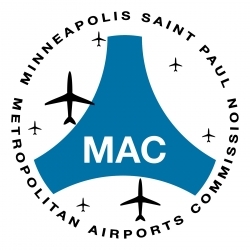 Kyle Scapple
Kyle ScappleAirport systems director
Minneapolis-St. Paul International Airport (MSP)
USA
 Nigel Womersley de Zaldua
Nigel Womersley de ZalduaDirector
ICF
UK
Since the launch of ChatGPT in November 2022, the level of interest and investment in AI platforms has been escalating. The AI industry has already grown tremendously in its capability and application across multiple businesses. Although the airport sector has at times been reticent in its uptake of technology developments, AI will affect the management of airports from operations and administration to revenue management. This presentation will discuss AI from a global perspective through the lens of the aviation industry and focus on the potential impact on a major US international airport.
What the audience will learn
- Understanding of AI and how it works
- How AI works
- How AI could affect the aviation industry now and in the coming years
- What could be the impact of AI on airports
- What one airport is doing to try and manage the impact of AI on its business
10:10
AI in airport operations
 Ricardo Roth
Ricardo RothCIO
BER Flughafen Berlin Brandenburg
Germany
 Marcus Schreyer
Marcus SchreyerHead of IT applications
BER Flughafen Berlin Brandenburg
Germany
At last year's expo, the airport of Berlin (BER) demonstrated some initiatives involving useful cases of advanced technology. This year, we would like to highlight some true examples of digital masterpieces in our efficient airport operations. For those who missed the 2023 session, join here to get the most recent update and learn the details of such initiatives.
What the audience will learn
- AI in use during daily business
- Advanced technology ready for implementation
- Watchpoints and lessons
10:35 - 10:55
Break
10:55 - 11:45
Panel discussion: Managing the sorcerer’s apprentice: addressing implications of airport AI use
This panel will offer a discussion of airport uses for AI in an environment of uncertainty with a growing prospect of government regulation and suggested controls. AI use has rapidly expanded across a range of disciplines including operations, security, human resources and customer service. At the same time, public concern over AI use has exploded with governments acting to address those AI concerns. Recent public expressions of concern over AI use and the growth of tools of enormous potential like ChatGPT present challenges and opportunities. This session will assess best practices for AI use in airports.
What the audience will learn
- What are some of the developing airport practices around AI use?
- How are governments regulating AI use (e.g. EU AI Act, UU.S. NIST, AI risk management framework)?
- What are the challenges for airports in planning to use AI in an uncertain regulatory environment?
- What tools are available to help guide airport AI use?
- How can AI programs be piloted in airports?
 L Clint Welch
L Clint WelchDirector, aviation security and public safety
San Diego County Regional Airport Authority
USA
 Michael Youngs
Michael YoungsVice president information technology systems
Dallas Fort Worth International Airport
USA
 Sabin Mudaliar
Sabin MudaliarSenior manager, terminal operations
Port of Seattle, Seattle Tacoma International Airport
USA
Kristina Dores
Strategic development consultant
TranSecure DBA Internetwork Consulting Solutions
USA
Strategic development consultant
TranSecure DBA Internetwork Consulting Solutions
USA
 Donald Zoufal
Donald ZoufalConsultant
CrowZ Nest Consulting
USA
11:45
The AI journey of Frankfurt Airport: myth or masterplan?
 Verena Dollberg
Verena DollbergSenior project manager, corporate strategy and digitalization
Fraport AG
Germany
 Christian Wrobel
Christian WrobelChief data & analytics architect
Fraport AG
Germany
With its AI@FRA initiative, Fraport wants to shape the airport of the future. Learn about the AI solutions being implemented in the various departments at Frankfurt Airport to improve processes and thus customer satisfaction. Thanks to AI, the scheduling of staff in ground handling is being automated and improving the airport's punctuality. Fraport is also bringing AI to its admin staff, so they can deal more efficiently with inquiries. However, this is not always an easy undertaking. Find out what has been learned along the way, the challenges faced and how Fraport is trying to overcome them.
What the audience will learn
- How to address strategic challenges such as labor shortages and customer satisfaction
- How to improve data quality by collaborating with the whole industry
- How to drive cultural change toward AI technology within the organization
12:15
Toronto Pearson harnesses AI to achieve next-generation total airport management
 Joey MacSween
Joey MacSweenProgram director, airport digitalization
Greater Toronto Airports Authority
Canada
 Dean Wright
Dean WrightAssociate director, gating & airport flow
Greater Toronto Airports Authority
Canada
The Greater Toronto Airport Authority is responsible for managing Canada’s largest airport, Toronto Pearson International. In 2023, in collaboration with a leading provider, it prototyped and evaluated a next-generation AI-driven total airport management (TAM) platform, with an initial use case of optimizing stand allocations. This solution will allow the airport to quantifiably optimize and balance its operational performance, cost efficiency, capacity provision, revenue generation, passenger experience and sustainability. This will support the airport to achieve sustainable growth, even with constrained resources. GTAA will share its learning points in the presentation.
What the audience will learn
- How disparate airport functions can be integrated into one holistic optimization platform
- How AI can be used to support optimization and reduce manual configuration
- How AI-driven optimization can be delivered using legacy systems already in place
- How sustainability can be integrated into the operation decision making process and balanced against other priorities
- How optimization can be dynamically adjusted to match dynamic priorities
12:45 - 13:00
Lunch
13:00
The airport as a data platform, improving collaboration through data
 Lennert l'Amie
Lennert l'AmieCIO
Royal Schiphol Group
Netherlands
Airports traditionally function as transportation hubs operating within conventional business models. However, today, airports are also transforming into data platforms that harness data and information from their operations and physical assets. But only when an airport combines and shares this data with its stakeholders and partners does it lead to improvements in operational efficiency, passenger experience and safety and security. By collecting and sharing data through APIs, dashboards and direct integrations, Schiphol empowers all airport stakeholders to make informed decisions. Join this session to discover how Schiphol is optimizing airport operations and moving toward augmented decision making and autonomy.
What the audience will learn
- Data sharing
- Data platforms
- AI in operations
13:30
The power of innovation in enhancing collaboration
 Lenny Voltz
Lenny VoltzProject manager - corporate strategy and digitalization
Fraport AG
Germany
 Jan Willem Kappes
Jan Willem KappesSVP global sales
Assaia
Switzerland
Learn how AI and shared data collaboration between an airport and the ground handler has ensured operations meet increases in passenger capacity. The goal is to ensure that the rise in passenger numbers is balanced with optimized turnaround processes, synchronizing all events on the apron for efficient and on-time departures.
What the audience will learn
- The value of collaboration between an airport and the ground handler
- Data-led collaboration
- AI-enabled data visibility
13:55
New presentation by Veovo!
 Peter Knudsen
Peter KnudsenGeneral manager
Veovo
Denmark
14:55 - 15:15
Break
15:15
Predictive mindset for passenger processing using flow modeling and machine learning
 Yusuf Tungekar
Yusuf TungekarHead of operations business systems
Dubai Airports
United Arab Emirates
 Khalid Ishaq
Khalid IshaqHead of AOCC service partnership integration, operations
Dubai Airports
United Arab Emirates
Prediction tools powered by machine learning and predictive analytics capability are transforming guest experiences at Dubai Airport and enhancing the efficiency of the airport and the operations of its partners, including airports, airlines and other entities. Crucial information underpinning every aspect of the passenger experience is exchanged among the partners in a timely, reliable and accurate manner to make sure that passenger-related data is delivered to relevant stakeholders who are involved in processes that directly impact passengers. This presentation will delve into the best practices and mechanisms to foster collaboration that will transform the passenger experience.
What the audience will learn
- Why optimizing the passenger experience should start with enabling reliable information exchange among air travel partners
- How to leverage data from various aviation messages to improve resource allocation within the airport
- How passenger flow modeling can complement your RMS to further enhance throughput at key touchpoints
15:45
HKIA digital roadmap
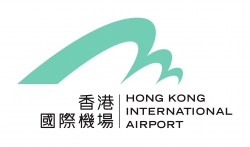 Steven Yiu
Steven YiuExecutive director, airport operations
Airport Authority Hong Kong
Hong Kong
This presentation will provide an overview of the key areas of development for digital technologies at Hong Kong International Airport, which are covered under the HKIA Digital Roadmap. The advancements in various areas, including advanced biometrics, mobile self-service and robotics, will be discussed. These technologies will be strategically integrated to enhance security, improve operational efficiency and deliver a seamless passenger experience.
What the audience will learn
- How digital technologies can enhance airport efficiency
- Biometrics technology
- Mobile self-service technology
- Robotics technology
16:10 - 17:00
Panel discussion: Open architecture for interconnected innovation
TSA has published an open architecture roadmap and international aviation security partners have signed the Open Architecture for Airport Security Systems second edition. These documents provide guiding principles and long-term strategies to enhance screening capabilities using a standards-based approach to meet the aviation security mission. Open architecture expands the ability to adopt best-in-class and increasingly interconnected technologies while employing advanced cybersecurity capabilities and expanding engagement with government, industry and stakeholder organizations. Leveraging open architecture and working across industry partners, we can rapidly respond to evolving threats to the mission, simplify technology and processes, enable screening efficiencies and standardize user interfaces.
What the audience will learn
- Open architecture improves the likelihood of delivering enhanced capabilities to the field to increase security and operational efficiency
- Multiple open architecture and supporting infrastructure initiatives have demonstrated that key solutions are ready to be introduced
- Aviation security partners are positioned to take the next steps to operationalize mature open architecture concepts with minimal risk
- The vision of open architecture centers around the ability to quickly address emerging threats and enable a dynamic screening environment while promoting an enhanced passenger experience
 Sébastien Colmant
Sébastien ColmantDirector, aviation and cybersecurity
Airports Council International - Europe (ACI)
Belgium
 Ken Mann
Ken MannChief technical officer
Rapiscan Systems
UK
 Kevin Riordan
Kevin RiordanHead of checkpoints and applications
Smiths Detection
UK
 David Wiley
David WileyPresident, founder, CTO
Stratovan Corporation
USA
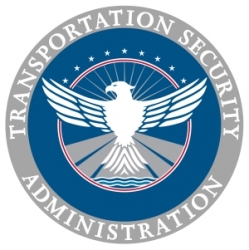 Erick Rekstad
Erick RekstadExecutive director of analysis and engineering, requirements and capabilities analysis (RCA)
Transportation Security Administration (TSA)
USA
17:45 - SKYTRAX World Airport Awards ceremony and celebration in the exhibition hall after the conference!
Accessibility and assisted travel
Day 3: Thursday, April 18
Conclusio
Accessibility and assisted travel
09:00 - 15:00
Introduction by Conference Chairs
 Emily Yates
Emily YatesHead of accessibility and inclusive design
Mima
UK
 Roberto Castiglioni MBE
Roberto Castiglioni MBEAccessible air travel evangelist
Reduced Mobility Rights Limited
UK
09:05
Evaluation of a technology to improve accessible airport journeys
 George Wardell
George WardellUser research specialist
Connected Places Catapult
UK
Connected Places Catapult is partnering with Glasgow Airport to run a trial to evaluate technology that improves independent travel for people with sight or hearing access needs. The project team are currently selecting the appropriate technology to trial. They will trial this in the airport with airport passengers and consider how best to integrate the technology. The trial will be completed before March 2024 and we will present the findings.
What the audience will learn
- Benefit of technology for passenger needs
- Understanding passenger behavior
- Learning from doing a trial
09:30
Universal design and global wayfinding guidelines
 Sally Swanson
Sally SwansonPrincipal/CEO
Sally Swanson Architects, Inc.
USA
Universal design (UD) informs global wayfinding solutions and creates environments that are enjoyable, easy to use and work for everyone at any age – with or without a disability. Without successful wayfinding, individuals are impeded from participating in daily activities. Swanson aims to define the primary factors of global wayfinding to determine whether an environment is inclusive, to advance an appreciation for the importance of assistive technologies in navigating one’s community, and to share the UD concepts that support the path of travel for everyone.
What the audience will learn
- Primary wayfinding factors to determine whether built environments or paths of travel are inclusive
- The importance of assistive technologies in navigating one’s community
- Universal design (UD) concepts that support the path of travel for everyone, regardless of physical ability or limitations
- Examples of universal design and wayfinding done brilliantly
09:55
Best practices for ensuring airport non-discrimination
 John P Benison
John P BenisonAssistant administrator for civil rights
Federal Aviation Administration
USA
An overview of airport non-discrimination oversight by the Federal Aviation Administration and best practices to implement at airports worldwide. The discussion will include airport accessibility, language access, community outreach and engagement.
What the audience will learn
- Best practices for ensuring airport non-discrimination
- Accessibility best practices
- Language access best practices
- Community engagement and outreach best practices
10:20 - 11:10
Panel discussion: Remarkable strategies adopted by airports worldwide to enhance accessibility
In the complex, demanding environment of an international airport, improvements in accessibility positively impact customer experience in general while ensuring that individuals with disabilities and older adults can fulfill their desire to travel like everyone else, whether independently or with assistance. This panel will explore how airports around the globe are overcoming institutional, physical and technological barriers to accommodate the diverse needs of this fast-growing customer segment. Today’s challenge is no longer for advocates to prove the existence of the disability travel market but rather for the aviation industry to keep up with it.
What the audience will learn
- Strategies to identify, remove and prevent barriers to accessibility
- New amenities/services to accommodate travelers who are neurodiverse
- Ways to enhance customer autonomy and reduce the need for assistance
- How airports are collaborating with airlines and other stakeholders
- Ways to involve the disability community in planning, design, training and outreach
 Belén Gisbert Sánchez
Belén Gisbert SánchezHead of accessibility, Alicante Airport
Aena SME
Spain
 Dr Kirk Goodlet
Dr Kirk GoodletSenior director
InterVistas Consulting
Canada
 Maurice Jenkins
Maurice JenkinsChief innovation officer
Miami International Airport
USA
 William Neece
William NeeceDirector of airport solutions
Ozion
France
 Laurel Van Horn
Laurel Van HornVP director of programs
Open Doors Organization
USA
11:10 - 11:30
Break
11:30
Enhancing airport accessibility and increasing operational efficiency through autonomous equipment
 Ed Kibblewhite
Ed KibblewhitePRM contract manager
Manchester Airport
UK
This presentation highlights some of the current and predicted future challenges associated with the continued growth of airport assistance demand. A number of opportunities will be introduced, to increase operational efficiency, improve passenger independence and embed operational resilience through the introduction of autonomous mobility equipment.
What the audience will learn
- Introduction to autonomous mobility equipment
- Cost and efficiency benefits from automation
- Wider applications of autonomous vehicles within the airport environment
- Passenger benefits from autonomous mobility equipment
11:55 - 12:40
Panel discussion: The key to successful disability training
As one of the most global and rapidly developing industries, aviation bridges an overwhelming diversity of geographic, cultural and economic backgrounds. Not just the diversity of customers in their billions but also the diversity of the workforce across myriad occupational groups. With that diversity in mind, the panel will focus on two pressing challenges that the aviation industry faces today: 1) the shortage of staff, and 2) the urgent need for adequate training. This is relevant not just for safety and operational efficiency. Today, aviation strives to become more inclusive for passengers with special needs, and this makes the need for disability training more and more evident. The panel will address the key issues relevant for any aviation stakeholders committed to providing their staff with the right training on disability.
What the audience will learn
- Disability training: past, present and future
- Navigating the information and learning methods
- Measuring training costs, efficiency and impact
- Making the right choice of training providers
 Heba Abozenadah
Heba AbozenadahGeneral manager, talent management
Jeddah Airports Company
Saudi Arabia
 Ivor Ambrose
Ivor AmbroseManaging director
European Network for Accessible Tourism – ENAT
Belgium
 Michael Connolly
Michael ConnollyDirector
SkyWise Solutions Ltd
UK
 Samantha Saunders
Samantha SaundersHead of assisted services
ABM UK
UK
 Ivan Berazhny
Ivan BerazhnySenior lecturer
Haaga-Helia University of Applied Sciences
FINLAND
12:40 - 13:30
Panel discussion: No passenger denied: designing for the next generation of accessibility
Providing an accessible air travel experience requires prioritization of passengers’ needs, both seen and unseen. Recent airport design trends have opened doors to thousands of passengers for whom travel was previously an impossibility, and there is much more work to be accomplished. From aging passengers to medical travelers to accommodating neurodiversity and anxiety, innovative solutions are critical to meeting passengers where they are. From airports to manufacturers, everyone has a role in providing ultra accessibility and this panel will discuss how community involvement helps to define and achieve the strategies that make air travel a reality for all.
What the audience will learn
- How to provide accessibility for passengers with non-typical disabilities
- The importance of alignment in approach between airports to create a common travel experience
- How an innovative community committee can successfully advocate for the needs of each airport’s passenger demographics
- How airports are going beyond the minimum to prioritize equity over compliance
- How designs can work with airports and the community to incorporate accessibility into every stage of the design process
 Maurice Jenkins
Maurice JenkinsChief innovation officer
Miami International Airport
USA
 Stephen McKenna
Stephen McKennaArea manager for intercontinental stations
Condor Flugdienst (Condor Airlines)
Germany
 Jean-Sebastien Pard
Jean-Sebastien PardSenior manager, facilitation, passenger services and operations
Airports Council International (ACI) World
Canada
 John Trupiano
John TrupianoPrincipal
Corgan
USA
 Tim O'Krongley
Tim O'KrongleyDeputy aviation director
San Antonio Airport System
USA
13:30 - 15:00
Lunch
Airport design, planning and development (continued)
Day 3: Thursday, April 18Sponsored by Arcadis


Harmonie 3
Airport design, planning and development
09:00 - 15:00
Introduction by Conference Chairs
 Tim Walder
Tim WalderDeputy chair
British Aviation Group (BAG)
UK
 Mark Wolfe
Mark WolfePrincipal
Populous
Australia
09:05 - 10:05
Panel discussion: Construction and operational readiness – developing a cohesive coordination structure
Construction activities in and around airports often have an impact on passengers, tenants and operators. These impacts can create risks to the overall airport operation and passenger experience. Most risks can be easily mitigated with construction barricades and signage. However, there are construction activities that create significant operational impacts and risks that require more planning, coordination and effort. Construction and operational readiness (COR) helps recognize these risks and impacts – some of which may have been identified early on during design or contract development, but conditions in the work areas, tenants, staff, adjacent projects and/or expectations may have changed.
What the audience will learn
- The best way to determine applicable operational risks or impacts requiring construction and operational readiness coordination
- How to accurately assess these impacts and risks and create strategies and tactics for the development of mitigation activities
- Proven methodologies for stakeholder engagement, communication and information dissemination
- Determination and discussion on the mitigation strategies ultimately provided and funded
 Charles Goedken
Charles GoedkenSenior manager - operational readiness, activation and transition
Seattle-Tacoma International Airport
USA
 Jaimi Tapp
Jaimi TappDirector, operational readiness activation and transition
Hartsfield-Jackson Atlanta International Airport
USA
 Ortez Gude
Ortez GudeCEO
Citiri
USA
 Melvin Price
Melvin PriceSenior associate principal - ORAT practice lead
Jacobs
USA
10:05
Constructing a mega-terminal: Zayed International Airport, Terminal A
 Jochen Tombers
Jochen TombersPrincipal
Kohn Pedersen Fox Associates
Singapore
Zayed International Airport, Terminal A is one of the world’s most striking buildings and was one of the most complex to construct. The size of the project, coupled with the client’s goals and ambitions, posed delivery challenges both geographical and organizational that were unprecedented in the region. Erecting some of the largest arches ever built, creating one of the largest stone floor mosaics (260,000 square meters) and integrating major artwork into building systems, while updating and optimizing the project throughout construction, required dedication and creativity by the team to deliver a state-of-the-art terminal that prioritizes passenger experience and inspires wonder.
What the audience will learn
- The logistical coordination required to build a mega-terminal with project teams and suppliers located around the globe
- Sequencing the erection of the 52m-tall 180m free-span arch roof, with circa 19,000 metric tons of steelwork
- The innovative use of structural design scripts to link construction stage analysis with substantial temporary works and safety/construction planning
- The challenge of designing major artworks as a passenger attraction while also integrating the art with the building systems
- The necessity of updating and optimizing the design throughout construction to ensure the project meets evolving requirements
10:35
Fiumicino development: new constructions and refurbishments to improve the passenger journey
Head of terminal and commercial planning and development
Aeroporti di Roma
Italy
Head of infrastructure planning
Aeroporti di Roma
Italy
In 2022, the brand-new Pier A, with its 23 gates, was opened at Rome Fiumicino Airport. In 2023, the overall renovation of Pier B and Boarding Area C (with over 30 years of operation) was completed. Revamping of the last Schengen Pier D has just started and will be completed in 2027. How can the airport offer the same passenger experience in such a different infrastructural context with a changing market framework? The presentation explores the issue by comparing the standpoints of an engineer and an architect in the planning team of Aeroporti di Roma, the Fiumicino Airport management company.
What the audience will learn
- Key drivers to plan the development of a40-million+ pax airport
- A closer look at the 2023 and 2022 FCO new openings
- How the planning team interacts with the airport community to provide an excellent passenger experience
11:05 - 12:05
Panel discussion: Organizational excellence driving terminal brilliance
So many airports around the globe are in the middle of massive terminal development programs. The concept design and the finished constructed elements are often the items that get seen by the industry and public at large, and rightfully so. However, what most people don't see is the organizational excellence and cohesive airport organization required to have the right mindset to successfully implement these programs. See how these leaders rallied their organizations to create organizational excellence that drives terminal brilliance.
What the audience will learn
- How can an airport achieve terminal brilliance?
- What does it take to have organizational excellence?
- How strong organizations will influence positive outcomes
- Strategies that leaders have implemented to success
- How can leaders help cultivate a growth mindset?
 Chad Makovsky
Chad MakovskyDirector of aviation services
Phoenix Sky Harbor International Airport
USA
 Mandy Xiggores
Mandy XiggoresManager, aviation capital program
Port of Seattle, Seattle-Tacoma International Airport
USA
 Traci Holton
Traci HoltonVice president, chief engineer and deputy COO
Metropolitan Nashville Airport Authority
USA
 Paul Blue
Paul BluePresident
Paslay Group Executive Program Management
USA
 Scott Tumolo
Scott TumoloDirector of terminal planning - Americas
C&S Companies
USA
12:05 - 13:05
Panel discussion: The other side of big – really big and really complicated
Undertaking the largest capital program in its history, this carrier is tackling fleet mix, programming and modernization of a 1969 terminal, a major terminal addition, up-gauging a regional jet concourse and two new narrow- and wide-body concourses at a major US hub. The panel will discuss this complicated program, including corporate rationale and the challenges of planning and integrating project elements diverse in scope, age, program and aesthetic. Led by the carrier, panelists represent the comprehensive team brought together to execute one of the most complicated projects in domestic US aviation, including provisions to incorporate a rooftop eVTOL facility.
What the audience will learn
- A carrier perspective on strategic goals and how it influences the capital development program
- The impact of a multi-plane flight schedule on the development, planning and design of a single, consolidated hub terminal
- The challenges of a multi-phase, multi-stakeholder, multi-consultant development program and coordinating stakeholders, program managers, planners, design teams and CMARs
- The business rationale and technical complexity of incorporating an eVTOL program into a major terminal development at a large hub
- The one daunting challenge that each panelist hopes never to face again
 Robert Walker
Robert WalkerManaging director
United Airlines
USA
 Mark Husser
Mark HusserPartner
Grimshaw
USA
 Iván Pire
Iván PirePrincipal
PGAL
USA
 Aarshabh Misra
Aarshabh MisraAssociate principal, aviation planning
Arup
USA
 J Lee Glenn
J Lee GlennDesign director aviation
Page
USA
13:05 - 14:40
Lunch
Aviation security, technology, process and people (continued)
Day 3: Thursday, April 18
Spektrum 2
Aviation security, technology, process and people
09:00 - 15:00
Introduction by Conference Chairs
 Catherine Piana
Catherine PianaDirector general
ASSA-i Aviation Security Services Association - International
Belgium
 Donald Zoufal
Donald ZoufalConsultant
CrowZ Nest Consulting
USA
 Neville Hay
Neville HayDirector of training
Interportpolice
UK
09:05
Future trends for airport cyber infrastructure protection and resilience
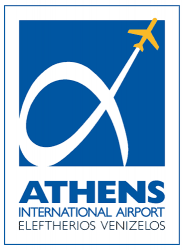 Nikos Papagiannopoulos
Nikos PapagiannopoulosSenior research project manager
Athens International Airport
Greece
 Tim H Stelkens-Kobsch
Tim H Stelkens-KobschAviation security researcher
German Aerospace Center (DLR)
Germany
The presentation summarizes the research related to cybersecurity and cyber resilience, carried out in the context of the EU-CIP Horizon Europe Research and Innovation project for establishing a novel pan-European knowledge network for cybersecurity research for resilient critical infrastructures such as airports. The presentation exhibits the latest information security threats as well as novel practices, methods and tools that will be utilized for the mitigation of airport threats.
What the audience will learn
- Novel airport cybersecurity threats
- Future practices, methods and tools for airport cyber resilience
- Capabilities of each technology, their applicability across different markets and their potential to elevate CIP and CIR
09:35
The intelligence is artificial, the consequences are real
 Nicholas Carroll
Nicholas CarrollManager, cyber incident response
Raytheon Technologies
USA
The hype around new AI technologies such as generative AI and large language models has reached a fever pitch for legitimate users and hackers alike. The presentation will explore some of the latest technologies, their implications for digital transformation and concerns over their potential abuse, especially highlighting the potential for AI’s nefarious uses that can interfere with our ability to trust and verify human connections and identities.
What the audience will learn
- AI basics
- Differences in AI technologies
- Nefarious AI tools
- Preventing accidental AI abuse
- Preparing for AI impersonation concerns
10:05
Fireside chat: Fostering cyber resilience: Industry collaborations and best practices
 Luis Coronado
Luis CoronadoChief information officer
United States Department of State Bureau for Consular Affairs
USA
 Robert Costello
Robert CostelloCIO
Department of Homeland Security
USA
 Opeyemi Oshinnaiye
Opeyemi OshinnaiyeChief information officer
Transportation Security Administration (TSA)
USA
The imminent and evolving potential for cyberattacks against transportation infrastructure requires continued vigilance, information sharing and the development of policies to strengthen the cybersecurity posture. Cybersecurity remains a key area of concern as this issue has grown tremendously. In 2023, this priority was demonstrated by Administrator Pekoske as he described the measures TSA is taking to assess cyber threats against transportation infrastructure. He outlined priorities such as developing control measures that safely operate in the event of a compromised infrastructure system, preventing unauthorized access to critical cyber systems, and reducing the risk of exploitation of unpatched systems.
What the audience will learn
- Focussing on mitigating potential cybersecurity threats, updating internal guidance and bolstering technology to achieve effective compliance
- How to meet cybersecurity requirements at airport checkpoint and checked baggage screening locations
- Ensuring that technology is updated to prevent the need for recurring, larger industry changes and overhauls of security architecture
- How to engage with the industry to better protect against cybersecurity vulnerabilities
11:05 - 11:25
Break
11:25 - 12:25
Panel discussion: Open architecture – how to implement it responsibly
Open architecture – the interoperability of security screening hardware and software from different suppliers – is gathering momentum in the aviation industry. The panel will bring together experts from airports, solution providers and regulators to discuss the latest developments and collaborative efforts to advance OA. By examining the principles, technologies and collaborative frameworks, it will discuss how this approach can be implemented responsibly and which challenges need to be considered. The session will incorporate updates on recent real-world technical developments, such as the EOS common API, DICOS image sharing, third-party algorithm integration and mixed fleet centralized image processing.
What the audience will learn
- The principles and core concepts of open architecture
- The benefits and challenges of integrating multivendor security systems within the aviation environment
- Real-world examples that highlight the practical implications of adopting open architecture in aviation security
- Recent technological developments, next steps and future strategies
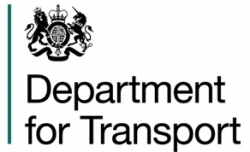 Dr Benjamin Jones
Dr Benjamin JonesHead of innovation, aviation security policy
Department for Transport
UK
 Paul Evans
Paul EvansSecurity technology manager
Heathrow Airport
UK
 Kevin Riordan
Kevin RiordanHead of checkpoints and applications
Smiths Detection
UK
 Cymoril Métivier
Cymoril MétivierGlobal director digital
Smiths Detection
NETHERLANDS
12:25 - 13:25
Panel discussion: Global partnerships in aviation security: requirements and testing methods
The security and safety of passengers are top priorities for government regulators, airlines and members of the aviation industry. To enhance the security of our nation’s airports, aviation stakeholders must share information, align capability timelines, develop common requirements and identify best practices in aviation security. Effective partnerships between key stakeholders promote the protection of international transportation systems and ensure the freedom of movement for people and commerce. Collaboration within the aviation ecosystem comes with challenges, but it is imperative that threats and vulnerabilities are addressed in a coordinated and collaborative manner.
What the audience will learn
- The various challenges and opportunities for international harmonization of detection requirements and common testing methodologies
- How the industry’s research and development investments in emerging capabilities and technologies align with international aviation markets and national priorities
- How engagement with government regulators, industry groups and airports is essential to security policy and risk reduction
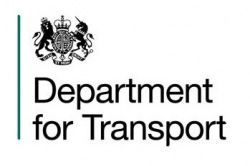 Alastair McIntosh
Alastair McIntoshHead of research, analysis and development
UK Department for Transport
UK
 Erick Rekstad
Erick RekstadExecutive director of analysis and engineering, requirements and capabilities analysis (RCA)
Transportation Security Administration (TSA)
USA
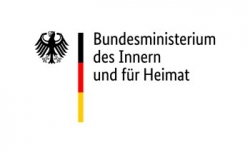 Rainer Weinzierl
Rainer WeinzierlHead of section
Federal Ministry of Interior
Germany
 Ken Mann
Ken MannChief technical officer
Rapiscan Systems
UK
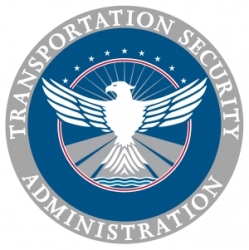 Domenic Bianchini
Domenic BianchiniSenior technical advisor, research services and outreach
Transportation Security Administration (TSA)
USA
13:25 - 15:00
Lunch
Customer service, passenger and personnel experience (continued)
Day 3: Thursday, April 18Sponsored by Ozion


Fantasie
Customer service, passenger and personnel experience
09:00 - 15:00
Introduction by Conference Chairs
 Claire Donnellan
Claire DonnellanDirector
Customer Centric Consulting
Australia
 Jerry Angrave
Jerry AngraveCustomer experience director
Empathyce
UK
09:10 - 10:10
Panel discussion: Enriching travelers with art, experience and imagination
Enrich your travelers' voyages and deliver an engaging, positive experience with large-scale, architecturally integrated, multimedia technology. How do display technology, content and construction come together? We will explore lessons learned about how the design, procurement and implementation approaches impact the delivery of these highly creative, complex and technical creations. What you learn should help you confidently engage your airport departments, including marketing/public affairs, IT and construction. We will share three uniquely significant examples that capture travelers’ imaginations and discuss how each airport’s ideas could inspire your next great experience.
What the audience will learn
- Where should you start with a large-scale display project?
- What is the best approach to procuring complex multimedia?
- What departments should be involved in multimedia and when should they be engaged?
- What factors are involved in implementing a complex display?
- How would a significant multimedia feature be built to last?
 Anthony Davit
Anthony DavitChief operating officer
Greater Orlando Aviation Authority
USA
 Jim Szczesniak
Jim SzczesniakDirector of aviation
Houston Airport System
USA
 Traci Holton
Traci HoltonVice president, chief engineer and deputy COO
Metropolitan Nashville Airport Authority
USA
 Thibaut Duverneix
Thibaut DuverneixCEO and executive creative director
Gentilhomme
Canada
 Matthew Meier
Matthew MeierProject manager
Burns Engineering
USA
10:10 - 10:40
Panel discussion: Rethinking communications strategy to strengthen brand equity and pride
Can you use construction to build even more goodwill for an airport? That’s the communications challenge the Port of Portland set when it launched a US$2bn project to upgrade the heart of Portland International Airport (PDX). Portland knew it couldn’t make five years of construction painless, especially considering how beloved PDX is to the community, but it could it remarkable by using the region’s unique character, charm and wit. The presentation shares the lessons learned by making 'smiles' the key performance indicator, treating everyone like an insider in the story and creating unexpected moments of delight with the local creative community.
What the audience will learn
- Strategy: how to turn brand challenges into opportunities. What if you aimed to strengthen brand equity and pride during construction?
- Rethinking key performance indicators: what happens when you set your KPI to creating 'smiles'?
- Brand voice and messaging: what if you created a voice as friendly, welcoming and (slightly) irreverent as your region?
- Creative approach: how can you lean into the power of community-centered design to strengthen your customer relationships?
- Collaboration: partnering with your local creative community to help bring a warm, inclusive brand experience vision to life
 Jen Wick
Jen WickCreative services manager
Port of Portland
USA
 Katie Meeker
Katie MeekerPDX Next communications manager
Port of Portland
USA
 Kelley Bonsall
Kelley BonsallDirector of communications and marketing
Port of Portland
USA
10:40
The importance of building an airport community to improve the airport experience
 Piétrick Voyer
Piétrick VoyerDirector of operations
Grantley Adams International Airport
Barbados
After working in different regions worldwide, I realize the importance of creating an airport community mindset (ACM). At the only airport in Barbados, this infrastructure is critical for the economy of the island. The importance of ACM becomes even more critical for such countries as all of the entities working at the airport must be aligned and must work toward the same overarching goal: making sure that the overall airport operation provides a smooth and excellent airport user service. This presentation will explain how, within a year, the ACM has been built. This can be applied to larger airports.
What the audience will learn
- How to move from low stakeholder engagement to high stakeholder engagement
- How to make sure that all entities at the airport are aligned
- Tools and techniques to develop stakeholder partnerships
- How to build a culture from scratch with all users at the airport
11:10 - 11:30
Break
11:30 - 12:30
Panel discussion: Humanizing the airport experience
This panel session will explore and discuss what future airport strategies can be adopted to deliver a people-centric environment – for passengers, visitors, airport staff and the local community. It will also reveal why it is important to humanize the airport experience and how it can enhance future passenger journeys and commercial performance while also promoting more positive engagement and interaction amongst airport staff.
What the audience will learn
- The benefits of a human approach to airport planning and programming
- How an airport can create a sense of belonging and community
- How an airport can drive positive health & wellbeing impacts
- How airports can be a good local and global citizen
- How can we create airports that people will love and value?
 Jean-Pierre Tabet
Jean-Pierre TabetUS & Canada asset management director
Ferrovial Airports
USA
 Satyaki Raghunath
Satyaki RaghunathChief operating officer
Bangalore International Airport Limited
India
 Rory Sutherland
Rory SutherlandVice chairman
Ogilvy, UK
UK
 Sev Fevzi
Sev FevziPresident & CEO
Sevly Inc
Canada
 Lewis Allen
Lewis AllenSenior director
Portland Design
UK
12:30
Sustaining airport service quality - a leadership challenge
 Prasad Nair
Prasad NairHead business excellence and quality
GMR Goa Airport Ltd
India
How can leaders create a customer-oriented, quality-focused airport? Do your service quality initiatives lose momentum and cross-functional support? Do some employees neglect customer experience and innovation? These issues suggest toxic leadership. You may have “respected bosses” but not “revered leaders”. Leaders with high technical competence may lack leadership skills to enable peak performance. This presentation will address how to overcome the paradox of leadership capability vs capacity and key success factors that leadership needs to demonstrate to create a sustainable customer-oriented, quality-focused airport.
What the audience will learn
- Capacity vs capability
- Cultural aspects of developing a sustainable quality culture
- The two roles of a leader
- Culture building and quality focus
13:00
Advancing workforce diversity through work-life balance strategies
 Christine Rajpal
Christine RajpalDirector of aviation and regional practice lead
Abstract Group
USA
Given the importance of diversity in the workplace, this session takes a deeper dive into strategies to advance workforce diversity, focusing on the challenges of balancing career and parenthood simultaneously. Striking the right balance between personal and professional lives can be a major obstacle. As an industry, how can we recruit and retain gender diversity over time? How do we help revolutionize employee satisfaction and avoid burnout? Can we go beyond lip service and be truly supportive, turning workforce challenges into opportunities for growth and progression? We will discuss these important questions and offer a customizable approach to improve retention.
What the audience will learn
- Why it matters – diversifying your workforce and approaching the topic of work-life balance with a realistic perspective
- Identifying the five dilemmas of balancing domestic and career priorities
- Bolstering the art of decision making and its importance in recruiting, retention and career progression
- The Butterfly Rising Method – an approach for balancing career and parenthood
- The bottom line – personalizing the solution, turning dilemmas into opportunity for growth equates to retention
13:30 - 15:00
Lunch
Digital identity and wallets in travel
Day 3: Thursday, April 18
Harmonie 2
Digital identity and wallets in travel
09:00 - 15:00
Introduction by Conference Chairs
 Annet Steenbergen
Annet SteenbergenAdvisor - digital identity in travel
Annet Steenbergen
Netherlands
 Rob Broere
Rob BroereCEO
Travel Must Change
United Arab Emirates
09:05
Digital identity and wallets in travel – track introduction
 Rob Broere
Rob BroereCEO
Travel Must Change
United Arab Emirates
Digital identity (wallets) in travel; will the latest developments have the ability to really change passenger facilitation?
09:15
IATA's end-to-end digital identity PoC for seamless travel
 Stephan Copart
Stephan CopartHead of digital transformation
IATA
Switzerland
In 2023, The IATA Innovation Lab successfully launched an industry-wide digital identity proof of concept, bridging retailing and service delivery, which demonstrated the foreseeable future seamless travel experience and value chain interoperability while spotlighting IATA standards.
What the audience will learn
- Digital identity framework for air transportation
- IATA standards roadmap
- Seamless travel vision
09:30
Update on EU digital identity wallet and travel use case
 Stef Haartman
Stef HaartmanProgram manager eIDAS
Gen
Netherlands
The latest on the European Commission co-funded EWC large-scale pilot project and the goal of bringing the EUDI wallet alive in the context of travel, payments and organizations. EWC is focused on high-volume and high-frequency use cases bringing immense value to our day-to-day lives. This presentation will update you on the progress to date, the three pilot phases being run, the activities of the different participants and what’s coming next.
What the audience will learn
- The EUDI wallet initiative, where its now and where its going
- The value proposition of the EUDI wallet to EU citizens in context of payments and travel
- The EUDI wallet promise for seamless travel, from the moment of booking to the moment you return
- The travel use cases to be deployed by the EC co-funded EWC large-scale pilot
09:45
Update on DG Home pilot using an ICAO DTC
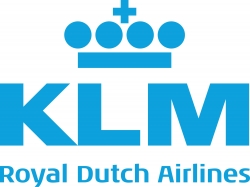 Nick van Straten
Nick van StratenProgram director biometrics
KLM Royal Dutch Airlines
Netherlands
KLM has been exploring the use of biometrics to improve the customer experience since 2015. Nick van Straten, program director biometrics and clearance at KLM Royal Dutch Airlines, will share the learnings from the largest pilots KLM has been contributing to, what it has learned and why passengers still can't use biometrics at scale in Europe. The presentation will especially zoom in on what the airline aims for in the current DTC 1 Pilot between Canada and the Netherlands, the world’s first real live use of DTC 1 for biometrically boarding a transatlantic flight.
What the audience will learn
- The complexity of the process KLM aims to digitize using biometrics
- What is coming in the next few years
- Why the industry should invest cleverly and not boldly
10:00 - 10:45
Panel discussion: Reflection on each of the use cases presented
The three presentations show that the use of digital identity will soon go beyond the pilot phase and will become mainstream. We will discuss with all three panelists what they expect will affect processes at the airport in the near future because of these developments.
What the audience will learn
- How will airport infrastructure and processes be affected by digital identity?
- How will stakeholder cooperation be different?
- The audience can ask questions
 Nick van Straten
Nick van StratenProgram director biometrics
KLM Royal Dutch Airlines
Netherlands
 Stephan Copart
Stephan CopartHead of digital transformation
IATA
Switzerland
 Stef Haartman
Stef HaartmanProgram manager eIDAS
Gen
Netherlands
 Annet Steenbergen
Annet SteenbergenAdvisor - digital identity in travel
Annet Steenbergen
NETHERLANDS
10:45 - 11:05
Break
Digital identity and wallets in travel – what is the business case for the airports?
11:05
Benefits seen by an airport
 Suresh Khadakbhavi
Suresh KhadakbhaviChief executive officer
Digi Yatra Foundation
India
Digi Yatra’s meaningful intervention into the passenger journey has led to it’s becoming the most revered passenger facilitation service amongst air-travelers in India. This session showcases how to build, deploy and scale-up a national Digital Identity ecosystem to make travel Seamless, Hassle-Free and Health-Risk-Free!
11:20
The Biometric Experience program
 Aaron Beeson
Aaron BeesonDirector of innovation
ANA Aeroportos de Portugal
Portugal
ANA Aeroportos de Portugal launched the Biometric Experience program with go-lives in Lisbon and Porto in January 2024. The session will present the overall project, early results from the first two airports and rollout status for three more airports in 2024: Faro, Funchal and Ponta Delgada. From national to international, the Biometric Experience program at Vinci Airports aims to deliver a first-in-class passenger experience that enhances airport operations and capacity.
What the audience will learn
- Biometrics
- Change management
- Collaboration
- Digital transformation
- Operations effiiciency
11:35
Travel with your own digital ID
 Albert van Veen
Albert van VeenCEO
FastID
Netherlands
FastID presents the use of self-sovereign identity (SSI) in aviation. The SSI is a fully decentral and digital ID that is managed by the passenger on his/her mobile phone and gives access to biometric smart gates and services. The passengers themselves link their boarding pass to their ID and then they are 'ready to go'. In this way, their ID is not owned by an airline or airport and all passengers from all airlines can be invited to use a biometrics fast gate. The SSI can also be used for hotel or stadium visits.
What the audience will learn
- From digital ID to a DTC
- Business case for biometric travel
- Data privacy solution for biometrics EU proof
- Ramp up biometric traveling
- Best digital airport
11:50 - 12:35
Panel discussion: Reflection on each of the use cases presented
Meaningful intervention into the passenger's travel. How to roll out nationwide platforms/ ecosystems. How to achieve scale and volume. How to enhance adoption. How to enhance stickiness.
What the audience will learn
- Rolling out national scale platforms/ ecosystems
- How to achieve scale and volume of operations
- Why meaningful intervention is important
- Challenges in implementation
- How to scale it up for global interoperability
 Aaron Beeson
Aaron BeesonDirector of innovation
ANA Aeroportos de Portugal
Portugal
 Albert van Veen
Albert van VeenCEO
FastID
Netherlands
 Suresh Khadakbhavi
Suresh KhadakbhaviChief executive officer
Digi Yatra Foundation
India
 Rob Broere
Rob BroereCEO
Travel Must Change
UNITED ARAB EMIRATES
12:35
Digital identity and wallets in travel – what have we learned and what challenges lie ahead? Interactive!
 Annet Steenbergen
Annet SteenbergenAdvisor - digital identity in travel
Annet Steenbergen
Netherlands
 Rob Broere
Rob BroereCEO
Travel Must Change
United Arab Emirates
With live participation from the audience and all the speakers from the presentations!
13:05 - 15:00
Lunch
Facilities management and safety
Day 3: Thursday, April 18
Illusion 3
Facilities management and safety
09:00 - 15:00
Introduction by Conference Chairs
Plant development and infrastructure asset manager
Aeroporto G. Marconi di Bologna
Italy
 Michael Jahn
Michael JahnSenior airport consultant
M2P Consulting
Germany
09:05
Robot revolution: new normal at airports around the world
 Dr Viktoriia Myroniuk
Dr Viktoriia MyroniukSenior lecturer in aviation, program leader for MSc sustainable air transport operations and planning
University of Salford
UK
Overview of airport robots and their main uses. Their functions, capabilities, advantages and disadvantages. Airports around the world with robots already in use or on trial: check-in assistant robots, guide robots, bag-carrying robots, valet parking robots, waiter robots, food delivery robots, health screening robots, security robots, patrol and traffic enforcement robots, bomb disposal robots, robotic exoskeletons and baggage handling robots, cargo handling robots, cleaning and disinfectant robots, facilities maintenance robots, waste collection robots, robotic grass mowers, snow removal robots, de-icing robots, taxi bots, wildlife management robots, construction robots, etc.
What the audience will learn
- Main uses of robots at airports
- Functions and capabilities of airport robots
- Advantages and disadvantages of airport robots
- Airports around the world with robots in use or on trial
09:30
Digital transformation initiatives at Narita Airport
Chief, DX development and planning
Narita International Airport Corporation
Japan
This presentation refers to the Air Narita project, which focuses on automation, labor efficiency and a sophisticated airport operation. This is about digital transformation initiatives and how Narita Airport utilizes digital transformation technologies to improve the passenger experience. It will include usage examples of AI and biometrics at Narita Airport.
What the audience will learn
- The importance of digital transformation at airports
- Enhanced passenger experience through digital transformation
- Up-to-date information about the digital transformation of Narita International Airport
09:55
Smart maintenance in airport operations: data, innovation and digitalization
 Ralph Struck
Ralph StruckSenior vice president - facility management
Flughafen Berlin Brandenburg GmbH | Berlin Airport
Germany
The presentation takes you on a journey into the future of airport maintenance. Discover how data management forms the foundation for smooth digital order processing and how innovative applications of smart maintenance are revolutionizing the efficiency of baggage handling technology. We'll shed light on how mobile fault reporting, order processing and feedback enhance transparency while paving the way for Maintenance 4.0. Humans play a central role as digital workers. Finally, we'll give a glimpse into the future of Facility Management 4.0 with predictive maintenance, autonomous driving and chatbots. Immerse yourself in the visions that will shape the airport operations of tomorrow.
What the audience will learn
- Data management and digital order processing in airport maintenance
- Innovative applications of smart maintenance in baggage handling technology
- Mobile fault reporting, order processing and feedback for enhanced transparency
- Human factors and the role of the employee as a digital worker
- Future visions for facility management (FM 4.0) with AI, predictive maintenance, drones, autonomous driving and chatbots
10:25 - 11:10
Panel discussion: Electrification – not so 'shocking' ways to prepare for the now/future
The panel will discuss the current and future demands of utility and power including looking at new technologies and CX initiatives that require electricity, and how to work with current infrastructure to meet existing needs. This will include the importance of an electricity masterplan and incorporation of energy managers, as well as how electrification integrates with sustainability, resilience and airport goals for net zero.
 Mohamed Charkas
Mohamed CharkasExecutive vice president
Dallas Fort Worth International Airport
USA
 Dr Michael Schwan
Dr Michael SchwanHead of Power Technologies International
Siemens AG
Germany
 Nicholas May
Nicholas MayDirector, aviation
Burns Engineering
USA
 Renee Azerbegi
Renee AzerbegiNational sustainability market leader
Mead & Hunt
USA
 Basil Binns II
Basil Binns IIDeputy aviation director
Miami International Airport
USA
11:10 - 11:30
Break
11:30 - 12:00
Panel discussion: Mastering workforce challenges in airport facility management and safety
Is the future of airport operations less human and more digital?" This question sets the stage for a comprehensive exploration into the evolving challenges and opportunities within airport workforce planning post-COVID. As airports navigate through recovery, demographic changes, and the push for operational efficiency, this session uncovers innovative strategies for attracting and retaining talent in a landscape increasingly influenced by automation and technology. We will dissect the myth of technology overtake and reveal how a blend of human expertise and technological innovation can harmoniously enhance airport operations and passenger experiences.
What the audience will learn
- Key strategies for airport workforce adaptation and resilience in the post-COVID era.
- Cutting-edge approaches to staffing, focusing on efficiency and the retention of skilled employees amidst rapid environmental changes.
- Solutions to long-term challenges in workforce management, emphasizing the integration of technology and strategic foresight.
- The evolving role of robotics in shaping the future of the airport workforce, balancing technological integration with human interaction.
- The shifting skillset of airport workforce and the implications on recruiting strategies.
 Ralph Struck
Ralph StruckSenior vice president - facility management
Flughafen Berlin Brandenburg GmbH | Berlin Airport
Germany
Plant development and infrastructure asset manager
Aeroporto G. Marconi di Bologna
Italy
 Lana Jansen
Lana JansenManaging director
WePlan Software GmbH
Germany
 Michael Jahn
Michael JahnSenior airport consultant
M2P Consulting
GERMANY
12:00
Kaohsiung Airport: innovative architectural and quarantine solutions for pandemic outbreaks
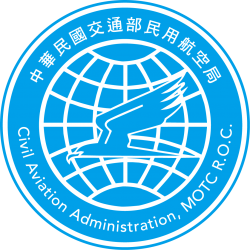 Chun-Yuo Chen
Chun-Yuo ChenSection chief
Civil Aviation Administration, MOTC, Taiwan
Taiwan
 Hao Lee
Hao LeeDesign architect
April Yang Design Studio
Taiwan
In partnership with April Yang Design Studio, the Taiwan Civil Aviation Administration (CAA) is leading the transformative redevelopment of Kaohsiung Airport, strategically incorporating quarantine solutions into the concourse design. Innovative boarding units – replacing portions of gangways – not only optimize apron space but also function as versatile quarantine zones during disease control measures. The integration of a centralized air intake handler and independent ventilation systems strengthens each unit's defense against airborne transmission. This visionary strategy, harmonizing spatial design and state-of-the-art HVAC, positions Kaohsiung Airport as a resilient model, capable of adapting to evolving challenges while steadfastly prioritizing passenger safety and well-being.
What the audience will learn
- Innovative redesign: Kaohsiung Airport's visionary transformation redefines airport architecture, maximizing space and safety for future travel
- Quarantine integration: the design seamlessly integrates quarantine solutions, utilizing boarding units as flexible buffers, ensuring passenger safety during disease control
- Advanced HVAC systems: cutting-edge HVAC innovations enhance the airport's resilience against airborne transmission
- Flexible circulation: versatile boarding units facilitate smooth vertical circulation and adaptable quarantine protocols for confirmed and negative cases
- Resilience and readiness: Kaohsiung Airport's redevelopment demonstrates a resilient model for future challenges, emphasizing passenger well-being and safety
12:30
Passenger boarding bridge replacement at Ben Gurion Airport
 Ariel Lidor
Ariel LidorSenior airport infrastructure engineer
Israel Airports Authority
Israel
 Lyor Dahan
Lyor DahanVice president - aviation services
DY Consultants
USA
In November 2021, the Israel Airport Authority (IAA) initiated the replacement of 24 passenger boarding bridges (PBB) for Concourses B, C & D at Terminal 3. This program is seen as a unique opportunity to fix some lingering operational and design issues at the stands while accommodating the latest aircraft fleet mix likely to come to the airport, and equipping the stands with the most advanced infrastructure in this field. This program covered conceptual planning, preliminary design, detailed design, FAT/SAT and construction phasing support.
What the audience will learn
- Best practices in smart apron design
- Gathering input from all stakeholders and stand operators before initiating the design phase
- Use of modeling and technology to better predict potential conflicts on the apron in the design phase
- Challenges associated with construction on an operationally intensive facility
13:00
Our runway maintenance strategy: blueprint for tackling maintenance backlogs and achieving sustainability
 Jorg Van Beek
Jorg Van BeekManager cluster airside (asset management department)
Amsterdam Airport Schiphol
Netherlands
Uncover the advantages of Schiphol's innovative runway maintenance approach, whereby it experimented with heavy-impact projects that serve several goals simultaneously but ensure that a runway can be left alone for several years afterward. Schiphol now wants to use this blueprint to address two pivotal challenges: to effectively tackle the non-neglectable maintenance backlog (e.g. on its taxiways and stands) while realizing its ambitious sustainability goals parallelly. This novel strategy demonstrated remarkable success and allowed Schiphol to effectively claim capacity, despite the significant operational dependence of these assets. Schiphol realized that the current fragmented approach to asset management demanded a radical transformation and experimented accordingly.
What the audience will learn
- Comprehend the trade-off between short-term and high-impact disruptions and long-term operational efficiency in asset management
- Understand the need for a more integrated, system-focused approach in asset management to become more systematically stable and predictable
- Understand the strategic advantages of our innovative runway approach for effectively addressing maintenance backlogs with minimal operational capacity
13:30 - 15:00
Lunch
Increasing airport capacity and flexibility
Day 3: Thursday, April 18Sponsored by DELMIA Quintiq


Illusion 1&2
Increasing airport capacity and flexibility
09:00 - 15:00
Introduction by Conference Chair
 Arturo Garcia
Arturo GarciaCOO
Avports
USA
09:05
Off-airport bag management and intermodal travel
 Alban Negret
Alban NegretHead of innovation and corporate venture
Groupe ADP
France
 Emilie Gazeau
Emilie GazeauCEO
Alltheway
France
The presentation will discuss tech and innovative baggage services for the Paris Olympics 2024. We're currently offering a baggage check-in and transfer solution from anywhere in the city of Paris, to and from the airport, with plans in place to roll out to a total of 20 cities. With an ‘Uber-like’ model that makes it fast and convenient to check in baggage and travel bag-free, soon travelers will encounter a seamlessly connected and technology-driven travel environment. They will enjoy a travel ecosystem where different modes of transportation blend better, including plane, train, shared mobility and eVTOL.
What the audience will learn
- Operations efficiency
- Bag tracking
- Collaboration
- Innovation
- Intermodality
09:35
What if we could reduce the size of terminals?
 Martin Liepmann
Martin LiepmannAssociate principal
Skidmore, Owings & Merrill
UK
What if you are already airside when traveling to the airport? What if your luggage travels an alternative path to your destination? What if certain functions are out of the airport? What if the terminal becomes smaller, more intimate, more personal, and with a smaller built volume also reduces embodied carbon drastically as well as operational energy? What if the space we saved could be used for alternative applications, e.g. energy production which in turn could support local communities?
What the audience will learn
- Thinking 'outside the box' and breaking down barriers. Leaving traditional design paths
- Cross-sector collaboration; who do we collaborate with to achieve the targets to reduce the built size of a terminal?
- Passenger experience; as staff would not need to do traditional tasks their expertise could be expanded to passenger engagement
10:05
Monitoring airport-wide live passenger flows
 André Schneider
André SchneiderCEO
Genève Aéroport
Switzerland
 Marie Faucon
Marie FauconClient success manager
Smart Flows
France
Geneva Airport is now using a passenger flow monitoring solution to forecast terminals and staff capacity based on past passenger experience and monitor the live passenger flows. The duty terminal managers, the facilitation director and the APOC control the traffic, dwell time and densities airport-wide at any moment. The expected live walking times from the airport entrance to the airside are exposed to passengers. The presentation will show how Geneva Airport has leveraged existing wi-fi infrastructure to enhance process optimization and passenger flow efficiency, and will outline the key lessons learned from this data.
What the audience will learn
- Monitoring airport-wide live passenger flows for more efficient data-driven crowd avoidance and passenger service improvement
- How valuable existing airport wi-fi data and other pre-existing data are to generating airport-wide passenger data without adding any hardware
- How critical it is to assess passenger curb-to-gate dwell time and journeys
- How live data empowers the facilitation teams and enables a much more efficient answer
- How crowds can be dissolved and even avoided by leveraging the data
10:35
Heathrow Airport – Efficient Airport Programme
 Neil Pritchard
Neil PritchardProgram lead, Efficient Airport
Heathrow Airport
UK
 Chris Butler
Chris ButlerSenior consultant
Mott MacDonald
UK
The Efficient Airport Programme is a collection of projects that sit under four workstreams covering passenger service transformation, aircraft and airfield capacity optimization, baggage transformation, and planning and efficiency. This presentation will focus on the design of this program, from the initial inception through to the development of 14 separate business cases that sit under the four workstreams, developed with subject matter experts, that aim to ensure the program will deliver on the benefits and outcomes that have been designed to measure its success, increasing capacity, improving passenger experience and reducing opex.
What the audience will learn
- Program setup and design
- Project scoping and benefits
- Business case development to deliver outcomes
- Example projects in the program
11:05 - 11:25
Break
11:25
Optimized resource planning and real-time data acquisition for operational excellence
 Yusuf Tungekar
Yusuf TungekarHead of operations business systems
Dubai Airports
United Arab Emirates
 Abdul Razzak Mikati
Abdul Razzak MikatiManaging director
DTP
United Arab Emirates
With the growing demand for air travel and rising traveler expectations, hub airports must overcome physical capacity limitations without sacrificing operational efficiency and a hassle-free passenger experience. Airports can achieve this by acquiring data in a timely manner; optimizing key airport resources; and bringing systems, processes and stakeholders together, creating the ideal conditions for collaborative operations crucial to the smooth flow of passengers, bags and aircraft across airport facilities.
What the audience will learn
- How to facilitate real-time information exchange for enhanced collaboration and information accuracy
- Data consolidation, integrated systems and enhanced collaboration as the key preliminary steps to optimizing resource allocation
- Enhance the predictability of operations and respond to irregularities and disruptions with greater agility
- Insights from business intelligence to make improvements at the day-to-day, tactical and strategic levels
- Do more with less and save costs by unlocking the power of data
11:55
Declaring terminal capacity with a digital twin – a smart data approach
 Alexander Wiegner
Alexander WiegnerManager capacity development
Luxembourg Airport
Luxembourg
 Marc Illing
Marc IllingSenior consultant, project manager
Airport Research Center GmbH
Germany
In this presentation, we will explore the core components of declaring the terminal capacity of a mid-sized airport with a distinctive peak pattern, making use of a digital twin (simulation model) and leveraging smart data. Discover the critical input data required for a capacity assessment and learn how flight schedules should be analyzed to take into account diverse peak demand. Learn how desired levels of service can influence declared terminal capacity, and the advantages and implications of declaring capacity at varying time intervals. Gain insights into a data-driven approach for optimizing airport terminal operations and enhancing efficiency.
What the audience will learn
- Which input data is required to declare a terminal capacity/build a digital twin for advanced capacity assessment
- How to analyze flight schedules in the scope of terminal capacity assessments
- What impact can the desired level of service have on the declared terminal capacity?
- What are the possible advantages and impacts of declaring a capacity for 60, 30 or 15 minutes?
12:25
10% traffic growth while much capacity is closed for construction
 Isabel von Fournier
Isabel von FournierProject director
Fraport AG
Germany
 Ercan Kurucirak
Ercan KurucirakDeputy general manager
Fraport Tav Antalya Terminal Management
Turkey
While Antalya Airport benefits from a recovery exceeding pre-Covid traffic figures and double-digit growth is expected next year, the biggest expansion of the facility is taking place, jeopardizing the capacity of all processors and areas. Based on the rich experience of operational and planning colleagues, solutions are sometimes unusual but always serve the best passenger experience – push up your sleeves and tackle it. It will only last for nine more months.
What the audience will learn
- Increasing area efficiency – higher throughput in a smaller area
- Adapt to unforeseen changes in infrastructure from construction works
- Change mindset of staff to overcome shortages for the duration of limited capacity
- Short term versus long-term – make best of both worlds
12:55
Sustainable alternative to new airports – airport densification in North America
 Bernardo Gogna
Bernardo GognaChief infrastructure officer
Greater Toronto Airports Authority
Canada
 Regine Weston
Regine WestonArup fellow, aviation
Arup
Canada
Many large hub airports across North America are faced with the complex challenges of aging infrastructure, increasing demand and the need to improve the experience for passengers and airlines and become more sustainable. Rarely is a new airport an option and, importantly, it is not the most sustainable approach. Densification, or increased use of existing airport footprint, is the best approach but is often the most challenging to implement. LAX, Newark and Toronto Pearson are facing similar pressures and each has a customized approach to developing resilient, sustainable capacity growth while improving passenger experience, increasing operational efficiency and being fiscally responsible.
What the audience will learn
- North American airports are facing aging infrastructure and need to increase capacity and flexibility
- The ability to build a greenfield airport is limited and not a sustainable approach
- Key hubs are looking at densifying use of their existing footprint while meeting sustainability objectives
- Uncertainty in the market is high, so having flexible facilities to adjust to changing needs is critical
- Construction schedules need to contain
13:30 - 15:00
Lunch
Technovation (continued)
Day 3: Thursday, April 18Sponsored by Ozion


Harmonie 1
Technovation
09:00 - 15:00
Introduction by Conference Chairs
 Maurice Jenkins
Maurice JenkinsChief innovation officer
Miami International Airport
USA
 Samuel Ingalls
Samuel IngallsPrincipal consultant
Barich
USA
09:05 - 10:35
Panel discussion: Towards fully autonomous baggage operations – why, what and how?
Achieving advanced automation beyond the baggage handling system: join this discussion on the evolving landscape of automating the end-to-end baggage journey. Learn from airport representatives and industry experts as they delve into the driving forces, challenges and collaborative efforts required to realize higher levels of automation. Discover how operators' roles are evolving toward supervision as robotics and autonomous vehicles reshape baggage operations, contributing to increased sustainability. Gain insights into the future of baggage handling and the path toward enhanced efficiency, sustainability and autonomy.
What the audience will learn
- Enhanced working conditions: how automation improves the well-being of baggage operators and reduces manual handling
- Human-automation synergy: how human-automation synergy drives the evolution of baggage handling while prioritizing sustainability and job satisfaction
- Stakeholder collaboration: insights into the collaborative efforts required to achieve fully automated baggage operations
- System design insights: essential considerations for planning and designing automated baggage systems for optimal performance and reliability
- Passenger satisfaction: how to ensure accurate and on-time baggage delivery, every time, for an excellent travel experience
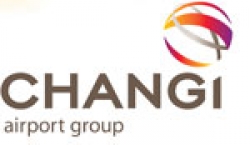 Ming Sue Koh
Ming Sue KohExecutive vice president, engineering and development
Changi Airport Group
Singapore
 Idar Sørgjerd
Idar SørgjerdHead of baggage handling
Avinor
Norway
 Rahel de Vriend
Rahel de VriendHead of innovation research and scouting
TNW
Netherlands
 Scott Goodwin
Scott GoodwinAssistant vice president
Greater Orlando Aviation Authority
USA
 Sven Platschorre
Sven PlatschorreDirector of airport solutions
Vanderlande
Netherlands
Program lead - baggage
Royal Schiphol Group
Netherlands
 Andrew Garner
Andrew GarnerFounding partner
The Foursails Partnership Limited
UK
10:35
Improved baggage handling with AI-based optical tracking at Frankfurt Airport
 Markus Müller
Markus MüllerVP baggage infrastructure
Fraport AG
Germany
 Dr Niclas Kruff
Dr Niclas KruffSenior data scientist
Fraport AG
Germany
The presentation will give insights into the development, functionality and operational implementation of the in-house optical baggage tracking solution at Frankfurt Airport to increase operational performance, minimize the number of manually scanned bags and realize a smooth sorting process.
What the audience will learn
- The optimization of sorting and elimination of tracking errors/losses during baggage sorting with conveyor belts
- Optical tracking as an alternative to or replacement for traditional identification by barcode reading
- Key facts of aiming for '100% tagless' – showcase at Frankfurt airport
- Project development and the introduction of new technologies in real-time operation
- The future of baggage tracking and baggage reconciliation
11:05 - 11:25
Break
11:25
Artificial intelligence to automate the unidentifiable luggage search process
 Julien Giannucci
Julien GiannucciBaggage IMO manager
Air France
France
Every year, more than one million pieces of luggage are lost worldwide. Not only is it a major concern for travelers, but it also significantly affects the image of airlines and their finances. Air France worked on an innovative approach based on artificial intelligence to accelerate the unidentifiable luggage search process, reduce operating costs and ultimately increase passenger satisfaction.
What the audience will learn
- AI for baggage management: a new approach to identify bags that have lost their physical tags
- Improved operations: reducing costs and compensation fees
- Lessons learned: Air France RecoPhoto project running at CDG
11:55
Lessons learned from the industry’s first multi-airport AODB implementation
 Leyla Akgez-Laakso
Leyla Akgez-LaaksoCIO
Finavia Oyj
Finland
 Yannick Beunardeau
Yannick BeunardeauVice president airport IT and airline operations, EMEA
Amadeus
France
Finavia is currently going live with new technology that supports more harmonized and joined-up operations across its 20 airports. The new multi-airport AODB is fully delivered from the cloud, which improves the quality and granularity of flight and passenger insights available. The new approach supports better on-time performance, new remote working models, optimized resource management and centralized decision making. This is the first implementation of a multi-airport AODB in the cloud and an early opportunity to understand Finavia’s experience.
What the audience will learn
- How a cloud-based multi-airport AODB is delivering improved operational performance across Finavia’s airports
- How this new approach is helping the airport company centralize some decision making at Helsinki Airport to guide regional operations
- How Finavia is using more granular and accurate flight and passenger information to improve resource management across its airports
- The lessons learned during this significant IT transformation, including project management best practice
- The potential for technology-enabled collaboration between airlines and airports
12:25
ACSA's success story: elevating operations across nine airports with digitalization
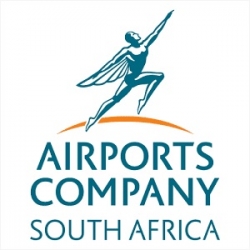 Mthokozisi Mncwabe
Mthokozisi MncwabeChief information officer
Airports Company South Africa
South Africa
 Ilker Aksoy
Ilker AksoyTAV Technologies Vice President Middle East & Africa
TAV Technologies
Turkey
This session is an enlightening journey into the transformative impact of innovative aviation technology solutions. These solutions have led to streamlined processes, fewer delays and enhanced passenger experiences at Airports Company South Africa's (ACSA) operations in nine airports. Participants will delve into ACSA's remarkable success story, exploring how it transformed multiple airports through the utilization of a holistic suite of cutting-edge airport technology solutions such as total airport management, slot allocation and A-CDM. Discover how ACSA has elevated flight management, capacity planning and commercial operations, optimized slot allocation, capacity management and operational efficiency for the benefit of airport stakeholders.
What the audience will learn
- Using holistic technology solutions for consistent and robust operational performance
- The role of advanced slot coordination, revolutionizing allocation, elevating efficiency and satisfying the demands of airport stakeholders, transforming airport operations
- The remarkable rewards of collaborative decision making, promising smoother operations, happier passengers and enhanced safety
12:55
Presentation to be announced
Speaker to be announced
13:25 - 15:00
Lunch
Welcome and opening address
Day 1: Tuesday, April 16
Harmonie 3
Welcome and opening address
08:25 - 08:55
08:25
Welcome to Passenger Terminal CONFERENCE and EXPO 2024!
 Tony Robinson
Tony RobinsonFounder of Passenger Terminal EXPO
UKi Media & Events
UK
08:30
Welcome to Frankfurt and keynote address
 Stefan Schulte
Stefan SchulteCEO
Fraport AG
Germany
Please make your way to the other conference tracks beginning at 09:00
Accessibility and assisted travel
Day 3: Thursday, April 18
Conclusio
Accessibility and assisted travel
09:00 - 15:00
Introduction by Conference Chairs
 Emily Yates
Emily YatesHead of accessibility and inclusive design
Mima
UK
 Roberto Castiglioni MBE
Roberto Castiglioni MBEAccessible air travel evangelist
Reduced Mobility Rights Limited
UK
09:05
Evaluation of a technology to improve accessible airport journeys
 George Wardell
George WardellUser research specialist
Connected Places Catapult
UK
Connected Places Catapult is partnering with Glasgow Airport to run a trial to evaluate technology that improves independent travel for people with sight or hearing access needs. The project team are currently selecting the appropriate technology to trial. They will trial this in the airport with airport passengers and consider how best to integrate the technology. The trial will be completed before March 2024 and we will present the findings.
What the audience will learn
- Benefit of technology for passenger needs
- Understanding passenger behavior
- Learning from doing a trial
09:30
Universal design and global wayfinding guidelines
 Sally Swanson
Sally SwansonPrincipal/CEO
Sally Swanson Architects, Inc.
USA
Universal design (UD) informs global wayfinding solutions and creates environments that are enjoyable, easy to use and work for everyone at any age – with or without a disability. Without successful wayfinding, individuals are impeded from participating in daily activities. Swanson aims to define the primary factors of global wayfinding to determine whether an environment is inclusive, to advance an appreciation for the importance of assistive technologies in navigating one’s community, and to share the UD concepts that support the path of travel for everyone.
What the audience will learn
- Primary wayfinding factors to determine whether built environments or paths of travel are inclusive
- The importance of assistive technologies in navigating one’s community
- Universal design (UD) concepts that support the path of travel for everyone, regardless of physical ability or limitations
- Examples of universal design and wayfinding done brilliantly
09:55
Best practices for ensuring airport non-discrimination
 John P Benison
John P BenisonAssistant administrator for civil rights
Federal Aviation Administration
USA
An overview of airport non-discrimination oversight by the Federal Aviation Administration and best practices to implement at airports worldwide. The discussion will include airport accessibility, language access, community outreach and engagement.
What the audience will learn
- Best practices for ensuring airport non-discrimination
- Accessibility best practices
- Language access best practices
- Community engagement and outreach best practices
10:20 - 11:10
Panel discussion: Remarkable strategies adopted by airports worldwide to enhance accessibility
In the complex, demanding environment of an international airport, improvements in accessibility positively impact customer experience in general while ensuring that individuals with disabilities and older adults can fulfill their desire to travel like everyone else, whether independently or with assistance. This panel will explore how airports around the globe are overcoming institutional, physical and technological barriers to accommodate the diverse needs of this fast-growing customer segment. Today’s challenge is no longer for advocates to prove the existence of the disability travel market but rather for the aviation industry to keep up with it.
What the audience will learn
- Strategies to identify, remove and prevent barriers to accessibility
- New amenities/services to accommodate travelers who are neurodiverse
- Ways to enhance customer autonomy and reduce the need for assistance
- How airports are collaborating with airlines and other stakeholders
- Ways to involve the disability community in planning, design, training and outreach
 Belén Gisbert Sánchez
Belén Gisbert SánchezHead of accessibility, Alicante Airport
Aena SME
Spain
 Dr Kirk Goodlet
Dr Kirk GoodletSenior director
InterVistas Consulting
Canada
 Maurice Jenkins
Maurice JenkinsChief innovation officer
Miami International Airport
USA
 William Neece
William NeeceDirector of airport solutions
Ozion
France
 Laurel Van Horn
Laurel Van HornVP director of programs
Open Doors Organization
USA
11:10 - 11:30
Break
11:30
Enhancing airport accessibility and increasing operational efficiency through autonomous equipment
 Ed Kibblewhite
Ed KibblewhitePRM contract manager
Manchester Airport
UK
This presentation highlights some of the current and predicted future challenges associated with the continued growth of airport assistance demand. A number of opportunities will be introduced, to increase operational efficiency, improve passenger independence and embed operational resilience through the introduction of autonomous mobility equipment.
What the audience will learn
- Introduction to autonomous mobility equipment
- Cost and efficiency benefits from automation
- Wider applications of autonomous vehicles within the airport environment
- Passenger benefits from autonomous mobility equipment
11:55 - 12:40
Panel discussion: The key to successful disability training
As one of the most global and rapidly developing industries, aviation bridges an overwhelming diversity of geographic, cultural and economic backgrounds. Not just the diversity of customers in their billions but also the diversity of the workforce across myriad occupational groups. With that diversity in mind, the panel will focus on two pressing challenges that the aviation industry faces today: 1) the shortage of staff, and 2) the urgent need for adequate training. This is relevant not just for safety and operational efficiency. Today, aviation strives to become more inclusive for passengers with special needs, and this makes the need for disability training more and more evident. The panel will address the key issues relevant for any aviation stakeholders committed to providing their staff with the right training on disability.
What the audience will learn
- Disability training: past, present and future
- Navigating the information and learning methods
- Measuring training costs, efficiency and impact
- Making the right choice of training providers
 Heba Abozenadah
Heba AbozenadahGeneral manager, talent management
Jeddah Airports Company
Saudi Arabia
 Ivor Ambrose
Ivor AmbroseManaging director
European Network for Accessible Tourism – ENAT
Belgium
 Michael Connolly
Michael ConnollyDirector
SkyWise Solutions Ltd
UK
 Samantha Saunders
Samantha SaundersHead of assisted services
ABM UK
UK
 Ivan Berazhny
Ivan BerazhnySenior lecturer
Haaga-Helia University of Applied Sciences
FINLAND
12:40 - 13:30
Panel discussion: No passenger denied: designing for the next generation of accessibility
Providing an accessible air travel experience requires prioritization of passengers’ needs, both seen and unseen. Recent airport design trends have opened doors to thousands of passengers for whom travel was previously an impossibility, and there is much more work to be accomplished. From aging passengers to medical travelers to accommodating neurodiversity and anxiety, innovative solutions are critical to meeting passengers where they are. From airports to manufacturers, everyone has a role in providing ultra accessibility and this panel will discuss how community involvement helps to define and achieve the strategies that make air travel a reality for all.
What the audience will learn
- How to provide accessibility for passengers with non-typical disabilities
- The importance of alignment in approach between airports to create a common travel experience
- How an innovative community committee can successfully advocate for the needs of each airport’s passenger demographics
- How airports are going beyond the minimum to prioritize equity over compliance
- How designs can work with airports and the community to incorporate accessibility into every stage of the design process
 Maurice Jenkins
Maurice JenkinsChief innovation officer
Miami International Airport
USA
 Stephen McKenna
Stephen McKennaArea manager for intercontinental stations
Condor Flugdienst (Condor Airlines)
Germany
 Jean-Sebastien Pard
Jean-Sebastien PardSenior manager, facilitation, passenger services and operations
Airports Council International (ACI) World
Canada
 John Trupiano
John TrupianoPrincipal
Corgan
USA
 Tim O'Krongley
Tim O'KrongleyDeputy aviation director
San Antonio Airport System
USA
13:30 - 15:00
Lunch
Advanced air mobility (AAM), vertiports and infrastructure
Day 2: Wednesday, April 17
Illusion 1&2
Advanced air mobility (AAM), vertiports and infrastructure
09:00 - 17:30
Introduction by Conference Chairs
 Paolo Bianchi
Paolo BianchiHead of infrastructure strategy and planning
Bologna Airport
Italy
 Velissarios Eleftheriou
Velissarios EleftheriouCEO
TotalCDM
Greece
09:05
AAM – current status of innovation, development and implementation
 Lorenzo Di Loreto
Lorenzo Di LoretoManaging director
Munich Airport International
Germany
Munich Airport International (MAI) is actively facilitating the integration of AAM into airports worldwide. Its realization heavily depends on the development of necessary ground infrastructure. In discussions with airports and airlines around the globe, MAI consultants noticed uncertainty in the planning and development of such infrastructure. MAI supports innovation, development and implementation of AAM and aims to contribute to a greater level of transparency within the industry. MAI conducted a global survey regarding AAM at airports. This survey provides a strategic glimpse into the developments at airports and unveils experts' perspectives, offering strategic insights into airports' efforts to navigate AAM.
What the audience will learn
- Current status of innovation of AAM
- Glimpse into the developments of necessary ground infrastructure at airports
- Airport experts' perspectives
- Airports' efforts to navigate AAM
09:30
IAM integration and vertiports
 César Nava
César NavaAirport innovation project manager
Aena
Spain
 Vanesa Calvo Alonso
Vanesa Calvo AlonsoProject manager, innovation
Aena SME SA
Spain
The projects (OPERA & EUREKA) see vertiports as pivotal infrastructures facilitating the seamless take-off and landing of eVTOL. Designed for adaptability, vertiports and their networks accommodate diverse configurations to suit various use cases and traffic volumes. EUREKA, following a holistic approach, aims to develop a safe, efficient and sustainable IAM vertiport ecosystem tailored to urban environments and close interactions with airports. OPERA will develop and validate several solutions for the safe accommodation of large numbers of AAM vehicles in flight. The project will build solutions for complex operations of AAM-piloted air taxis and uncrewed cargo flights in real-life ATC conditions.
What the audience will learn
- AAM integration and current challenges for vertiport infrastructures
- Current AAM projects in Europe – solutions proposed and expectations
- Airport operator's point of view on the IAM integration in an airport environment
09:55
The Italian regulation for VCA operations
Engineer – manager
ENAC – Italian Civil Aviation Authority
Italy
The Italian Civil Aviation Authority has issued a regulation for VCA operations. This is the Italian proposal to promote innovative air mobility in Italy. This is one of the steps planned in the Italian Strategic Plan to implement IAM in the country. The speaker will illustrate the path of the journey toward a new era of air mobility. The regulation gives rules for operation, use of the air space, design and operation of a vertiport.
What the audience will learn
- Developing IAM
- Vertiports
- Managing the IAM service
10:20
The total potential for AAM operations in the United Kingdom
 Darrell Swanson
Darrell SwansonDirector
EA Maven
UK
The UK Advanced Air Mobility Index is the result of combining the UK Regional Air Mobility Index and the UK City Air Mobility Index developed by EA Maven. The study assesses potential routes in the UK suitable for AAM aircraft, including eVTOL, eS/CTOL and traditional hydrocarbon aircraft. The audience will gain insights into the total number of potential routes between airports and cities, along with the possibility of subregional hubs. The presentation will also discuss the economic impact of time savings and revenue generation, energy requirements, and the potential for carbon emissions savings.
What the audience will learn
- The potential value of AAM to the UK
- The number of potential routes in the UK for AAM operations
- The potential economic impact of AAM operations in the UK
- The potential time savings for travelers using AAM
- How AAM can address government objectives of leveling up and the Northern powerhouse
10:45 - 11:05
Break
11:05
Building an AAM ecosystem – Michigan’s development of a communication mesh
 Linn Smith
Linn SmithManager – airspace and emerging aviation systems, MDOT- Office of Aeronautics
Michigan State Department of Transportation - Division of Aeronautics
USA
 Paul Wheeler
Paul WheelerVice president, aerial innovation
WSP
USA
Many organizations and government agencies seek to understand their role and responsibilities in the advanced air mobility (AAM) ecosystem. The State of Michigan is leading the way in planning, developing and building a robust infrastructure tailored for lane-based AAM corridors. By harnessing the power of digital short-range sensors, the necessary coordination and communication within the AAM ecosystem can be tested, validated and enabled. This communication framework can facilitate the exchange of critical aircraft data, enable advanced collision avoidance, provide real-time infrastructure monitoring and augment weather data. The presentation will discuss Michigan’s phased approach to enable this crucial AAM infrastructure.
What the audience will learn
- Understand the need for and role of a robust communications framework in the AAM ecosystem
- Describe the phased approach to planning, testing, developing and building the communications mesh network
- Understand the technology and its range of capabilities
- Understand how the communications framework will enable a variety of safe AAM operations
11:30 - 12:15
Panel discussion: Advanced air mobility integration into the airport environment
This panel will look at the opportunities and challenges when integrating advanced air mobility into the airport environment with a focus on infrastructure and design considerations, operations, passenger processing and the regulatory and system changes that may arise. The panel will also look to identify how the cohabitation and integration of both crewed and uncrewed traffic at airports can be achieved in the future.
What the audience will learn
- Vision and perspectives of various airport stakeholders in the area of AAM
- Learn best practices and lessons learned so far with preliminary design and early results
- The latest certification developments from an OEM perspective
- The key findings of a global survey on AAM
 Jeremy Hartley
Jeremy HartleyPolicy specialist - vertiports
UK CAA
UK
 Christopher Liese
Christopher LieseBusiness development manager - North America
Munich Airport International
Germany
 Federico Cabrera
Federico CabreraOperations and CX manager
Aeropuertos Uruguay
Uruguay
 Doug Goldberg
Doug GoldbergPresident/CEO
Strategic Planning Services, Inc.
USA
 Jean-Sebastien Pard
Jean-Sebastien PardSenior manager, facilitation, passenger services and operations
Airports Council International (ACI) World
CANADA
12:15
Getting ready for the first eVTOL routes
 Andrea Wu
Andrea WuCo-founder and CEO
Urban-Air Port
UK
In readiness for the first eVTOL routes flying to and from airports, Urban-Air Port has developed a network of vertiports integrated at major and regional US West Coast airports. The session will reference this project and cover vertiport planning and design, ground and air integration and vertiport operations, and the work undertaken to pave the way for the first services.
What the audience will learn
- Developing realistic vertiport locations appropriate to first business cases and regulations
- eVTOL network planning and design
- Key considerations for vertiport design, planning and integration at airports
- Insight into FAA collaboration and regulatory compliance
- Development of vertiport operations linked to the airport flight schedule and responding to network disruption
12:40 - 14:00
Lunch
14:00
The tech behind take-off: the technology for vertiport operations
 Ankit Dass
Ankit DassChief technology officer
Skyports Infrastructure
UK
This session will look at the technology that enables each flight to take-off from a vertiport, from ticket booking and passenger registration software to resource scheduling systems that ensure flights run smoothly and demand is met, through to the hardware interface points throughout the vertiport and the UTM solutions. This session looks at the processes that are being defined at vertiports and considers the requirements as they apply to different locations and markets.
What the audience will learn
- A perspective on automation for scheduling, electrification and flight planning
- Insight from leading companies enabling the development of effective and scalable infrastructure for AAM operations
- The different technology that is being developed and a comparison with existing commercial aviation operations
- Why now is the time for implementing and testing vertiport technology
14:25
Cost-effective AAM infrastructure to achieve large sustainability wins
 Kim Silander
Kim SilanderFounder and chairman
Kookiejar of Sweden
Monaco
How to make advanced air mobility affordable to achieve large sustainability wins? Advanced air mobility is a green mode of transportation, with battery- and in the future hydrogen-driven drones and VTOL. However, if we can’t build a cost-efficient infrastructure it may risk only replacing expensive transportation options (e.g. helicopters, regional flights, etc) and not ground transportation (e.g. cars, trucks, etc). How can we address this challenge?
What the audience will learn
- AAM sustainability gains depend on cost of service
- What are vertiports and how will they affect us?
- AAM – when do we predict it will become a reality?
14:50
Launching Dubai’s commercial AAM network: operations, integration and infrastructure
 Damian Kysely
Damian KyselyHead of EMEA
Skyports Infrastructure
UK
This session will examine the progress of Dubai’s commercial AAM network, with insight shared by the project’s three main stakeholders. The session will look at the milestones achieved thus far from an operational, regulatory and development perspective, and consider what the next 18 months of effort will look like ahead of the 2026 launch goal.
What the audience will learn
- Dubai's approach to vertiport development and AAM
- Dubai's regulatory landscape – first jurisdiction with AAM regs
- What the roadmap for commercial launch looks like
- Why network development needs to be the priority, not individual projects
15:15 - 15:35
Break
15:35
Vertiport network building and management
 Marco Pellegrino
Marco PellegrinoHead of airside operations and first aid for Aeroporti di Roma, senior advisor for regulatory affairs for UrbanV
Aeroporti di Roma/UrbanV
Italy
UrbanV’s senior advisor for regulatory affairs, Marco Pellegrino will present the challenges of eVTOL integration in urban scenarios are going to become a reality in Rome in 2024, with the first business service between FCO Airport and Rome city center. The presentation will cover, with UrbanV, the experience so far and the collaboration with national stakeholders (CAA, ANSP, municipality, industry) and international stakeholders (EASA, ACI and ICAO). By the time of Passenger Terminal Conference, the project will be mature enough to provide a next step for development, compared with the previous presentations. Together with Paris, it will be the world's first practical application of eVTOL operations.
What the audience will learn
- How to plan and develop a vertiports network
- Innovation processes
- Stakeholder engagement
- eVTOL and AAM applications and CONOPS
16:05
FLAMINGO – the take-off of AAM in the Rhine-Main region
 Simon Graf
Simon GrafSenior project manager and commercial director
Fraport & FRA Vorfeldkontrolle GmbH
Germany
 Oliver Wohak
Oliver WohakSenior manager, lead aviation
d-fine
Germany
The deployment of advanced air mobility services presents a promising new mode of transportation and both technical as well as regulatory developments suggest that market introductions are just around the corner. However, besides the technical viability, regional economic feasibility for operations, including potential demand and locations for vertiports must be addressed. Utilizing a dedicated survey, the extension of a traffic simulation model and the economic analysis of ramp-up scenarios, the FLAMINGO research project, funded by the Federal Ministry for Digital and Transport, evaluates the AAM potential in the Rhine-Main region.
What the audience will learn
- Ramp-up scenarios differ depending on market developments
- Personas and use cases address company shuttles and premium travelers and the poorly connected
- Economic feasibility is achieved through network effects and autonomy
- Regional air mobility trumps urban air mobility in the Rhine-Main region
- Multiple stakeholders need to join forces to make AAM in Rhine-Main a reality
16:35
Update on the Paris VTOL 2024 project
 Alban Negret
Alban NegretHead of innovation and corporate venture
Groupe ADP
France
17:45 - SKYTRAX World Airport Awards ceremony and celebration in the exhibition hall after the conference!
Airport cities, regions and transport connections
Day 1: Tuesday, April 16
Illusion 1&2
Airport cities, regions and transport connections
09:00 - 17:30
Introduction by Conference Chairs
 Alexandra Covrig
Alexandra CovrigSenior project manager
Airport Regions Council
Belgium
 Sergio Alegre Calero
Sergio Alegre CaleroDirector general
ARC - Airport Regions Conference
Belgium
09:10
Shanghai Hongqiao Airport in the integrated transportation hub
 Yu Liu
Yu LiuDeputy director of corporate planning department
Shanghai Hongqiao International Airport
China
Shanghai Hongqiao Hub is a large-scale transportation hub integrating high-speed rail, civil aviation, highways, urban rail transit, public transportation and other modes of transportation. Hongqiao Transportation Hub has been planned, designed, built and put into operation in various phases since March 2010. Widely praised, it has influenced an era of transportation hub planning and construction in China. Shanghai Hongqiao International Airport has been a major element in the hub and played an important role in transporting aviation passengers and increasing the benefits of the hub by widening the passenger catchment area.
What the audience will learn
- Hongqiao Hub has significantly improved the comprehensive transportation service level of Shanghai, promoting the improvement of Shanghai's urban spatial pattern
- Hongqiao Hub has promoted the economic development of the entire Hongqiao business district
- Some issues have emerged in the 10-year operation of Hongqiao Hub, including traffic volume reaching the design capacity
- Hongqiao Airport is one of the various transportation modes in the hub, sharing needs and shouldering the pressure of the hub
- The balance of the triple roles of Hongqiao Airport as an urban airport, transportation hub and boutique airport
09:40
Intermodal excellence: Düsseldorf Airport's future-ready mobility hub
 Pradeep Pinakatt
Pradeep PinakattChief financial officer and labor director
Düsseldorf Airport
Germany
Düsseldorf Airport is at the forefront of intermodality, embracing innovative solutions. Through the use of AI and a holistic campus approach, data is interconnected to enhance traveler mobility. Seamless rail connections, the driverless SkyTrain, and bundled sharing options for cars, e-bikes and e-scooters make the airport an intermodal hub with integrated mobility services. The Sky-Train Data Space harnesses AI and real-time data to optimize intermodal transportation solutions. Collaborations with partners such as Deutsche Bahn and Siemens support the goal of creating a seamless travel experience across various modes of transportation, positioning DUS as an intermodal mobility hub of the future.
What the audience will learn
- Intermodality and innovation: the presentation will showcase how forward-thinking approaches can greatly benefit travelers and the efficiency of operations
- Integration of data: the interconnected approach will provide insights into the significance of data integration in enhancing traveler mobility
- Seamless travel: the audience will discover the potential for a truly integrated and convenient journey by leveraging interconnected modes of transportation
10:10 - 10:30
Break
10:30
The state of multimodality at Swedavia´s airports and the way forward
Intermodality strategist
Swedavia Airports
Sweden
A strategic initiative is in progress to successfully transform several airports in Sweden into multimodal and futureproofed hubs. The initiative coordinates plans and measures regarding ground transportation to and from the airports, mobility in general, digital tools for passengers, and future forms of transportation. The initiative applies a holistic approach and develops the airport ecosystem in collaboration with its stakeholders. Digital tools are fundamental to seamless travel and to promote a modal shift to sustainable travel to and from airports.
What the audience will learn
- The benefits of an integrated and multidisciplinary approach to promoting multimodality at airports
- The fundamental impact of digital tools for planning trips, travel information and for purchase of tickets
- The need for long-term planning of ground transportation infrastructure to and within the airport: the basis of a modal shift
11:00 - 12:00
Panel discussion: Intermodal challenges and opportunities – air-to-rail, autonomous, eVTOL
The panel will be a discourse on the topic of how airports can facilitate a more seamless intermodal connectivity; from traditional air-to-rail to soon-to-be-introduced autonomous vehicles and eVTOL. The different panelists will illustrate how they tackle this challenge with examples of concepts that have recently been implemented or are in the planning stage.
What the audience will learn
- How air and rail operators are working toward a more seamless integration at the airport
- The challenges and opportunities the advent of new autonomous and eVTOL transportation modes pose for airports
- How the digitally enhanced passenger journey will offer freedom of choice for the journey (from) home
- Best practices of intermodal integration at airports
 Simon Graf
Simon GrafSenior project manager and commercial director
Fraport & FRA Vorfeldkontrolle GmbH
Germany
 Arnas Dumanas
Arnas DumanasChief development officer
Lithuanian Airports
Lithuania
 Klaas Boersma
Klaas BoersmaSenior strategic advisor airport masterplanning
Royal Schiphol Group
Netherlands
 Barth Donners
Barth DonnersLeading expert aviation and intermodal transport
Royal HaskoningDHV
NETHERLANDS
12:00 - 13:30
Lunch
13:30
Intermodal challenges
 Dr Josep Lluís Larriba-Pey
Dr Josep Lluís Larriba-PeyProfessor
Universitat Politècnica de Catalunya
Spain
The need for a smart contracting platform in intermodal travel sets many challenges, from the standardization of data sharing contracts, to the follow-up of passenger journeys, to the scalability of the system at a pan-European level. All those challenges are faced in the SIGN-AIR project, funded by the EC Horizon Europe's SESAR Joint Undertaking. The project started in June 2023 and will last for three years. SIGN-AIR is building a smart contracting platform, setting the support of the traveler, the centerpoint of travel services and ticketing.
What the audience will learn
- Smart contracts for multimodal travel
- Support to travelers
- Scalability for smart contracts
14:00 - 15:00
Panel discussion: Airports – catalyst for urban regeneration and zero emission
Technology offers the opportunity to advance toward zero-carbon airports and cities. It is an enabler of opportunity but should not determine opportunity. The challenge for communities is how to accelerate the adoption of the right technology to meet these broader goals. How should we all engage in developing new concepts that provide for the technology within the best possible framework? While aviation is undergoing a technical evolution to alternative fuels that reduce C02 emissions, next-generation aircraft will be quieter and cleaner. How can airports leverage those challenges and evolve beyond their essential roles as transportation hubs?
What the audience will learn
- Overcoming silo thinking; inclusive design-based thinking
- Connectivity between airports, cities and other transportation systems
- Airport as real estate driving new typologies of buildings and cities
- The relationship between technology and concept
- Sustainability is only achievable with the interplay of the technical, economic and social aspects – quality of life
 Thor Thoeneie
Thor ThoeneieCEO
Oslo Airport City
Norway
 Peter de Leeuw
Peter de LeeuwHead of airport city development
Vienna International Airport
Austria
 Dimitris Argyros
Dimitris ArgyrosAssociate director
Haptic Architects
UK
 Alexander Kirkwood
Alexander KirkwoodAviation lead
Weston Williamson and Partners
UK
 Henrik Rothe
Henrik RotheSenior lecturer and head of urban turbine
Cranfield University
UK
15:00 - 15:20
Break
15:20
The development of RIX Airport City. A dream or reality?
 Arturs Saveljevs
Arturs SaveljevsCCO
RIX Riga Airport
Latvia
RIX Airport City is a new mixed-use real estate development project at Riga Airport (RIX), the leading aviation hub for the Baltic States. RIX has a unique opportunity to transform the Airport City into one of the best-connected business districts in the Baltics thanks to its strategic location along Rail Baltica, a high-speed train link that will connect all three Baltic capitals to European high-speed rail networks and also Riga City. The RIX Airport City vision is to create a truly people-focused and sustainable business district that could become a destination in its own right.
What the audience will learn
- RIX Airport City’s concept, commercial and urban vision
- The importance of airport city development that prioritizes sustainable planning, architecture and engineering
- Long-term partnership and business opportunities for investors, developers and different service providers
- The challenges and opportunities that have arisen during the project
15:50
A new airport city arises
 Alicia Izquierdo Rivera
Alicia Izquierdo RiveraReal estate program manager
Lima Airport Partners
Peru
 Paola Loayza
Paola LoayzaReal estate manager
Lima Airport Partners
Peru
The Airport City will be the biggest in South America, with 935ha for long-term development, integrating aeronautical and non-aeronautical business. Our strategy is focused on real estate development aligned with the current market, so the commercialization of the land is a very dynamic activity; also because we are a concession for a limited period. This ambitious program has already gone to market with a 2025 public opening coordinated with the inauguration of LAP's new terminal. Future phases include connections, eVTOL facilities, retail areas, and exposition and logistics centers serving the airport and the nearby Port of Callao.
What the audience will learn
- The importance of land use planning for future development and commercialization
- Project management and delivery of an airport city, relying on third-party investment
- Sustainable applications in airport cities
- Strategies to attract and manage third-party investors
- Operations and maintenance concepts after opening
16:20
Cape Winelands Airport: fostering innovation, shared prosperity and sustainability
 Adele Klingenberg
Adele KlingenbergExecutive director, strategy and planning
RSA Aero Ltd
South Africa
 René Marey
René MareySenior airport architect
NACO Netherlands Airport Consultants
Netherlands
Cape Winelands Airport (CWA) transcends conventional airport projects. Positioned amid a burgeoning growth area, CWA is set to evolve into Cape Town’s second major airport. Anticipated passenger traffic forecasts, reaching 5.2 pax, combined with significant GA movements, demonstrate its potential. Additionally, CWA's unique role as the designated alternative airport for Cape Town Airport ensures operational resilience, environmental and cost savings, revenue-generating opportunities and enhanced passenger experience. CWA defines a new business case for airport development from a fuel efficiency perspective. Its integration of real estate and logistics creates a multifunctional airport city, promising enduring economic progress and empowered communities.
What the audience will learn
- In a multi-airport system, strategic positioning requires assessing how an airport contributes to regional aviation growth holistically
- Adaptive growth planning: anticipating different growth scenarios and allowing for specific requirements of different airport users
- Alternative airport selection affects the cost of operations and the environmental impact of the industry
- Multifunctional airport city planning enhances the attractiveness of the airport, improves business resilience and benefits the development of the region
- Planning for multi-modal connectivity and logistics hub functions enhances the value of the airport and contributes to regional economic development
16:50
Supporting the connectivity of airport city Aviapolis and Helsinki Airport
 Ulla Ruuskanen
Ulla RuuskanenSenior advisor, manager in Avia Network
City of Vantaa and Helsinki Uusimaa Regional Council
Finland
Avia Network aims to be the world’s most sustainable, attractive and accessible airport ecosystem. Avia Network is a partnering, development and information exchange network consisting of public and private actors working together to secure the connectivity of the Helsinki-Vantaa Airport and airport city Aviapolis. In addition, the network acts as a development platform for the stakeholders’ cooperation. Avia Network promotes the airport as a hub and a multimodal travel center for the future and ensures that connectivity is at its highest level to strengthen the airport’s position against global competition. It is open to all private and public actors.
What the audience will learn
- Avia Network offers different transport solutions and promotes public transportation to cut emissions toward carbon neutrality
- Sustainability is a key driver in the network's actions. Learn how it engages its stakeholders for offering different solutions
- How to lobby for common targets. Avia Network did its own governmental policy program for advocacy in the 2023 parliamentary elections
- Collaboration with different stakeholders – how to engage for common targets when stakeholders are from different sectors like industry and municipalities
- Communication is vital. How to disseminate and tell the same story for the audience
Opening day party in the exhibition hall, after the conference!
Airport design, planning and development
,
Day 1: Tuesday, April 16
Harmonie 3
Airport design, planning and development
 Tim Walder
Tim Walder
Deputy chair
British Aviation Group (BAG)
UK
 Mark Wolfe
Mark Wolfe
Principal
Populous
Australia
 Esther Christine Nitsche
Esther Christine Nitsche
Vice president operational excellence
Fraport AG
Germany
 Sascha Koenig
Sascha Koenig
VP infrastructure and resource management
Fraport AG
Germany
 Deborah Flint
Deborah Flint
President
Greater Toronto Airports Authority
Canada
 George Casey
George Casey
Chair and CEO
Vantage Airport Group
USA
 Palmina Whelan
Palmina Whelan
Captial program director
The New Terminal One
USA
 Phillip A Washington
Phillip A Washington
Chief executive officer
Denver International Airport
USAPanel Moderators:
 Folasade Olanipekun-Lewis
Folasade Olanipekun-Lewis
Vice president, operating and community partnerships
Vantage Airport Group
USA
 Dwight Pullen
Dwight Pullen
Global aviation lead
AECOM
USA
 Laila Odiņa
Laila Odiņa
CEO, chairperson of the board
RIX Riga Airport
Latvia
 Simon Gandy
Simon Gandy
Executive vice president and chief operating officer
New Terminal One
USA
 André Schneider
André Schneider
CEO
Genève Aéroport
Switzerland
 Antoinette Erickson
Antoinette Erickson
Senior partner
Foster and Partners
UK
 Cédric Laurier
Cédric Laurier
Chief technical officer
Gatwick Airport
UK
 Paul Willis
Paul Willis
Chief development officer
Manchester Airport Group - MAG
UKPanel Moderator:
 Tim Walder
Tim Walder
Deputy chair
British Aviation Group (BAG)
UK
 Ross Dickie
Ross Dickie
Head of masterplanning
Heathrow Airport
UK
 Andrew Gibson
Andrew Gibson
Global market director, aviation
Jacobs
UK
 Hans Thilenius
Hans Thilenius
Deputy executive director, terminal development improvement program
Los Angeles World Airports
USA
 Ian Lomas
Ian Lomas
Director, global design director, Los Angeles studio chair
Woods Bagot
USA
 Brian Rush
Brian Rush
Vice president preconstruction
W.E. O'Neil Construction
USA
 Mandy Xiggores
Mandy Xiggores
Manager, aviation capital program
Port of Seattle, Seattle-Tacoma International Airport
USA
 Shane Munroe
Shane Munroe
Chief executive officer
MBJ Airports Limited
Jamaica
 Michele Miedico
Michele Miedico
Director of planning, environment and Progetto Salerno
GESAC, Naples and Salerno Airports
Italy
 Federico Raja
Federico Raja
Airports planning
GESAC SpA, Naples & Salerno Airports
Italy
Day 2: Wednesday, April 17
Harmonie 3
Airport design, planning and development
 Tim Walder
Tim Walder
Deputy chair
British Aviation Group (BAG)
UK
 Mark Wolfe
Mark Wolfe
Principal
Populous
Australia
 Isabel von Fournier
Isabel von Fournier
Project director
Fraport AG
Germany
 Jesus Caballero Pinto
Jesus Caballero Pinto
CEO
SOF Connect AD
Bulgaria
 Nicolas Schenk
Nicolas Schenk
Chief development officer Noida International Airport
Zurich Airport International
India
 Ricardo Gesse
Ricardo Gesse
CEO
Zurich Airport Brasil
BrazilPanel Moderator:
 René Marey
René Marey
Senior airport architect
NACO Netherlands Airport Consultants
NETHERLANDS
 Sergio Ocampo Dobalo
Sergio Ocampo Dobalo
Senior program manager
Lima Airport Partners (LAP)
Peru
 Brynjar Vatnsdal
Brynjar Vatnsdal
Manager - airport development
Keflavik Airport, Isavia
Iceland
 Alistair Cordey
Alistair Cordey
Associate partner
Nordic Office of Architecture
Norway
 David Burns
David Burns
Head of airport planning
Melbourne Airport
Australia
 Raffaella Chiti
Raffaella Chiti
Infrastructure planning manager
Bologna Airport
Italy
 Dr Frank Quante
Dr Frank Quante
CEO
Fraport Bulgaria
Bulgaria
 Aleksandar Georgiev
Aleksandar Georgiev
Head of planning, engineering and design
Fraport Bulgaria
Bulgaria
 Henrik Vahlun
Henrik Vahlun
Senior project director
Copenhagen Airports AS
Denmark
 Christina Okai Mejborn
Christina Okai Mejborn
Head of planning
Zeso Architects
Denmark
 May Køster
May Køster
Lead airport master planner, strategy and consultancy
Copenhagen Airports
Denmark
 Mele Payne Lynch
Mele Payne Lynch
Program manager
Los Angeles World Airports
USA
 Hans Thilenius
Hans Thilenius
Deputy executive director, terminal development improvement program
Los Angeles World Airports
USA
 Joseph Chadwell
Joseph Chadwell
Strategic capacity manager
Heathrow
UK
 Gianluca Maestri
Gianluca Maestri
Masterplan manager
Heathrow Airport
UK
 Andrea Guglielmi
Andrea Guglielmi
Infrastructure development and maintenance director
Gesac - Napoli and Salerno Airports
Italy
 Ludovica Camporaso
Ludovica Camporaso
Projects & contracts controller, infrastructure development
GESAC, Napoli and Salerno Airports
Italy
 Hans Thilenius
Hans Thilenius
Deputy executive director, terminal development improvement program
Los Angeles World Airports
USA
 Jim Szczesniak
Jim Szczesniak
Director of aviation
Houston Airport System
USA
 Jonathan Massey
Jonathan Massey
Managing principal
Corgan
USA
 Jesus Saenz
Jesus Saenz
Director of airports
San Antonio Airport System, City of San Antonio
USAPanel Moderator:
 Steve Sisneros
Steve Sisneros
Vice president, airport affairs
Southwest Airlines
USA
Day 3: Thursday, April 18
Harmonie 3
Airport design, planning and development
 Tim Walder
Tim Walder
Deputy chair
British Aviation Group (BAG)
UK
 Mark Wolfe
Mark Wolfe
Principal
Populous
Australia
 Charles Goedken
Charles Goedken
Senior manager - operational readiness, activation and transition
Seattle-Tacoma International Airport
USA
 Jaimi Tapp
Jaimi Tapp
Director, operational readiness activation and transition
Hartsfield-Jackson Atlanta International Airport
USA
 Ortez Gude
Ortez Gude
CEO
Citiri
USAPanel Moderator:
 Melvin Price
Melvin Price
Senior associate principal - ORAT practice lead
Jacobs
USA
 Jochen Tombers
Jochen Tombers
Principal
Kohn Pedersen Fox Associates
Singapore
 Dr Elisabetta Fossi
Dr Elisabetta Fossi
Head of terminal and commercial planning and development
Aeroporti di Roma
Italy
 Francesco Piccirilli
Francesco Piccirilli
Head of infrastructure planning
Aeroporti di Roma
Italy
 Chad Makovsky
Chad Makovsky
Director of aviation services
Phoenix Sky Harbor International Airport
USA
 Mandy Xiggores
Mandy Xiggores
Manager, aviation capital program
Port of Seattle, Seattle-Tacoma International Airport
USA
 Traci Holton
Traci Holton
Vice president, chief engineer and deputy COO
Metropolitan Nashville Airport Authority
USA
 Paul Blue
Paul Blue
President
Paslay Group Executive Program Management
USAPanel Moderator:
 Scott Tumolo
Scott Tumolo
Director of terminal planning - Americas
C&S Companies
USA
 Robert Walker
Robert Walker
Managing director
United Airlines
USA
 Mark Husser
Mark Husser
Partner
Grimshaw
USA
 Iván Pire
Iván Pire
Principal
PGAL
USA
 Aarshabh Misra
Aarshabh Misra
Associate principal, aviation planning
Arup
USAPanel Moderator:
 J Lee Glenn
J Lee Glenn
Design director aviation
Page
USA
Day 1: Tuesday, April 16Sponsored by Arcadis


Harmonie 3
Airport design, planning and development
09:00 - 17:30
Introduction by Conference Chairs
 Tim Walder
Tim WalderDeputy chair
British Aviation Group (BAG)
UK
 Mark Wolfe
Mark WolfePrincipal
Populous
Australia
09:05
How to ensure a smooth opening of FRA's Terminal 3
 Esther Christine Nitsche
Esther Christine NitscheVice president operational excellence
Fraport AG
Germany
 Sascha Koenig
Sascha KoenigVP infrastructure and resource management
Fraport AG
Germany
As part of the expansion program at Frankfurt Airport, Fraport will open Terminal 3 in 2026. The presentation will introduce how Terminal 3 will be integrated into the existing infrastructure at Frankfurt with a special focus on transfer processes. It will also cover highlights of the Operational Readiness and Airport Transfer (ORAT) program which started in mid-2023. In addition, the utilization concept and the opening scenario for Terminal 3 will be presented.
What the audience will learn
- What are the challenges of infrastructure projects from an operational perspective?
- How can a new terminal be integrated into the existing infrastructure?
- How to plan and run an ORAT project
- What are the key elements of ORAT?
- How to plan an opening scenario for a new terminal
09:35 - 10:35
Panel discussion: Achieving social value and equity across global airport infrastructure programs
A focus on global airport infrastructure programs and achieving social equity through those programs. This panel will include a discussion on workforce and supplier diversity, lessons learned from successful programs, and what role we all play in achieving social value and equity through our aviation work.
What the audience will learn
- Shaping global aviation programs
- What is social value and how have programs achieved it?
- How to implement diversity across workforce and suppliers for major programs
- Achieving not only diversity but equity in programs
- Lessons learned and successes from airports
 Deborah Flint
Deborah FlintPresident
Greater Toronto Airports Authority
Canada
 George Casey
George CaseyChair and CEO
Vantage Airport Group
USA
 Palmina Whelan
Palmina WhelanCaptial program director
The New Terminal One
USA
 Phillip A Washington
Phillip A WashingtonChief executive officer
Denver International Airport
USA
 Folasade Olanipekun-Lewis
Folasade Olanipekun-LewisVice president, operating and community partnerships
Vantage Airport Group
USA
 Dwight Pullen
Dwight PullenGlobal aviation lead
AECOM
USA
10:35 - 10:55
Break
10:55
The new terminal at RIX Riga Airport
 Laila Odiņa
Laila OdiņaCEO, chairperson of the board
RIX Riga Airport
Latvia
RIX Riga Airport is currently transforming into an urban and travel hub of Northern Europe and a next-generation air-rail hub thanks to its strategic location along Rail Baltica, a high-speed link that will connect all Baltic capitals to rail networks in Europe. In autumn 2024, RIX Riga Airport will start building a heart-of-the-future RIX Airport City – a state-of-the-art new passenger terminal with a capacity for 12 million passengers a year. Expanded check-in and security areas, an automated baggage sorting system, touchless technologies and direct connection to the Rail Baltica train station and RIX Airport City will speed up passenger processing and increase commercial revenues.
What the audience will learn
- From the airport to the urban travel hub – strategy-based development
- Sustainable solutions and BREEAM Excellence certification
- An airport for everyone – how to fulfill passenger expectations
- Challenges of the construction period at a 24/7 operating airport
- Project team building: needs and solutions
11:25
New Terminal One – New York's new front door
 Simon Gandy
Simon GandyExecutive vice president and chief operating officer
New Terminal One
USA
The presentation will focus on the progress being made to build and operate the New Terminal One at JFK.
What the audience will learn
- Largest PPP in US aviation
- Building within the 24x7 JFK operating environment
- Largest solar microgrid within a US airport
- Commitment to community for minority- and women-owned businesses
- Creating a unique service experience
11:55 - 13:30
Lunch
13:30 - 14:25
Panel discussion: Debate on sustainable and lean airport development
A panel debate made up of executive board members from such airports as Gatwick Airport, Manchester Airports Group, Genève Airport and the New Warsaw Airport, on how to develop sustainable facilities in an environment of post-pandemic change, focusing on lean thinking in the design, spatial capacities, energy efficiency and design for manufacture (DFM) processes. The debate will focus on giving the audience insight and knowledge into how airports are responding to the new inclusive passenger journey trends while meeting the challenges of enhanced asset resilience, sustainable energy demands, net zero carbon facility solutions and community engagement.
What the audience will learn
- Responding to the new passenger journey trends
- How to develop lean and resilient facilities
- Creating energy-efficient and positive facilities
- Creating net zero carbon facility solutions
- Balancing the passenger needs with an efficient and economically viable operation
 André Schneider
André SchneiderCEO
Genève Aéroport
Switzerland
 Antoinette Erickson
Antoinette EricksonSenior partner
Foster and Partners
UK
 Cédric Laurier
Cédric LaurierChief technical officer
Gatwick Airport
UK
 Paul Willis
Paul WillisChief development officer
Manchester Airport Group - MAG
UK
 Tim Walder
Tim WalderDeputy chair
British Aviation Group (BAG)
UK
14:25
Vision-led master planning – moving on from 'predict and provide'
Head of masterplanning
Heathrow Airport
UK
 Andrew Gibson
Andrew GibsonGlobal market director, aviation
Jacobs
UK
Historically airports have produced masterplans on a 'predict and provide' basis with the need for additional capacity triggering development. Today's market is less certain, and with additional pressures being exerted on airports the traditional approach to masterplanning needs to broaden to accommodate factors such as existing asset age, sustainability objectives and future forms of aviation. This presentation describes how Heathrow has sought to identify new trends and issues, how they might impact the airport, and how the masterplan needs to flex to take advantage of or mitigate them.
What the audience will learn
- The emerging key issues that will impact airport planning
- What the route to net zero could mean for airports in practical terms
- The capacity and operational impacts of emerging trends in aircraft fuels, technology and societal expectations
- The need to consider existing facilities as well as new development in an airport masterplan
- How Heathrow's vision of what it wants to be is driving the masterplan as much as the forecasts
14:55
MSC South
 Hans Thilenius
Hans ThileniusDeputy executive director, terminal development improvement program
Los Angeles World Airports
USA
 Ian Lomas
Ian LomasDirector, global design director, Los Angeles studio chair
Woods Bagot
USA
 Brian Rush
Brian RushVice president preconstruction
W.E. O'Neil Construction
USA
Building a terminal of any size in the middle of an active airfield has costs and logistical challenges. So why not build it off the airfield, truck it to the site, and create a 'plug-and-play' scenario? LAX found itself in this situation and found a sustainable solution that is time- and cost-effective while being movable and reusable. An eight-gate terminal is being constructed off-site while foundations are being built at the final location. The presentation will explain the engineering and logistics and how LAX worked with the designer, contractor and building authorities with this innovative approach.
What the audience will learn
- What is modular construction? It comes in many sizes, and all have pros and cons
- How the designer needs to design differently than traditional
- How the contractor needs to plan differently than traditional
- The sustainable element of off-site construction
- The challenges presented by those not familiar with the process
15:25 - 15:45
Break
15:45
Meeting stakeholder needs in the planning and design of passenger amenities
 Mandy Xiggores
Mandy XiggoresManager, aviation capital program
Port of Seattle, Seattle-Tacoma International Airport
USA
As air travel becomes increasingly accessible for more people with individual wants and needs, how do you exceed the expectations of a variety of passengers and tenants? Seattle-Tacoma International Airport sought to deliver an improved customer experience and a wider variety of amenities in severely constrained existing facilities and is delivering exceptional results by all measures. Successfully improving the experience of all people using airport facilities requires intensive stakeholder outreach and intentional focus on resolving conflict and providing wins for everyone involved. This presentation focuses on how Sea-Tac planned and designed amenities to provide a world-class experience for all users.
What the audience will learn
- Commitment from leadership: the foundation of sound planning and design
- Getting to the heart of the matter: identifying core objections for collaborative problem solving
- Solving the puzzle: optimizing existing spaces to ensure the highest and best use of current facilities
- Winning broad support: identifying the maximum number of benefits to bolster support for your projects
- Crossing the finish line: staying engaged to make sure the intended benefits are achieved
16:15
Small airport, big experience – airport transformation
 Shane Munroe
Shane MunroeChief executive officer
MBJ Airports Limited
Jamaica
Small and large airports differ in passenger traffic but face similar challenges. Although airport size differs, passenger experience remains the same. This presentation discusses strategies to provide passengers with a 'big experience' even at smaller airports. Discussion points include the role of privatization in the transformation process; transformation strategies for airside, terminal and landside infrastructure; creating value for all stakeholders and the community; and strategies to improve the passenger experience. Sangster International Airport in Montego Bay, Jamaica, which was privatized in 2003, will be used as a case study.
What the audience will learn
- The role of privatization in the transformation process
- Transformation strategies for airside, terminal and landside infrastructure
- The role of masterplanning and project planning in the transformation process
- Creating value for all stakeholders and the community
- Strategies to improve the passenger experience
16:45
The augmented airport 2.0 – urban regeneration
 Michele Miedico
Michele MiedicoDirector of planning, environment and Progetto Salerno
GESAC, Naples and Salerno Airports
Italy
 Federico Raja
Federico RajaAirports planning
GESAC SpA, Naples & Salerno Airports
Italy
Airports may have a direct and positive impact on local communities: transport connections, shops and public offices are examples of facilities that can be found in modern airports that can be used by people living in the neighborhood, as well as passengers. This can be defined as the augmented airport and the airport masterplan may be used to support value generation for the transformation of urban areas. Naples International Airport's 'Mille alberi per la città' project moves one step forward, regenerating an abandoned area in the airport’s proximity, reducing CO2 and increasing prosperity and quality of life.
What the audience will learn
- How to generate value for local communities
- How to plan the next-generation airport
- How to cooperate with local communities to generate value
Opening day party in the exhibition hall, after the conference!
Day 2: Wednesday, April 17Sponsored by Arcadis


Harmonie 3
Airport design, planning and development
09:00 - 17:30
Introduction by Conference Chairs
 Tim Walder
Tim WalderDeputy chair
British Aviation Group (BAG)
UK
 Mark Wolfe
Mark WolfePrincipal
Populous
Australia
09:05 - 10:05
Panel discussion: Challenges and opportunities for global airport developers
Challenges and opportunities for global airport developers to translate their vision into asset design across geographies. The panel will be a discourse on the topic of how different global operators address how we face the challenge of marrying our expertise in developing assets that facilitate world-class airport operations with the ‘couleur locale’ and the specific requirements of local concessions/societal pressures in different geographies. The different global operators will illustrate how they have tackled this challenge with examples of terminal designs that have recently been built or are under construction.
What the audience will learn
- Global airport development
- Development strategies over a varies of international assets
- How to translate a vision into asset design
 Isabel von Fournier
Isabel von FournierProject director
Fraport AG
Germany
 Jesus Caballero Pinto
Jesus Caballero PintoCEO
SOF Connect AD
Bulgaria
 Nicolas Schenk
Nicolas SchenkChief development officer Noida International Airport
Zurich Airport International
India
CEO
Zurich Airport Brasil
Brazil
 René Marey
René MareySenior airport architect
NACO Netherlands Airport Consultants
NETHERLANDS
10:05
Efficiency in design – doubling capacity on the fly!
Senior program manager
Lima Airport Partners (LAP)
Peru
The newLIM Expansion originally contemplated a new Terminal 2 with capacity for 20 MPPA, along with a renovation of the existing terminal. Responding to stakeholder requirements to operate one single terminal in 2025, LAP updated the design while already under construction to include additional areas planned in the current project scope. The building's modular and scalable design concept allowed for the fast-track modifications necessary to achieve a capacity of 40 MPPA without changing the delivery date. This was possible through the incorporation of common-use efficiencies, as well as the use of 'swing' infrastructure capable of serving both international and domestic traffic.
What the audience will learn
- Overcoming design challenges: forecasting during Covid, flexibility in design, commercial strategies
- Innovative tender process and construction challenges during Covid, logistics supply chain, fast-track construction
- Technology in airports
- Importance of engagement of different stakeholders in the aviation industry
- High-level overview of project finance processes
10:35 - 10:55
Break
10:55
Keflavik – building a sustainable future, one expansion at a time
 Brynjar Vatnsdal
Brynjar VatnsdalManager - airport development
Keflavik Airport, Isavia
Iceland
 Alistair Cordey
Alistair CordeyAssociate partner
Nordic Office of Architecture
Norway
The ongoing transformation of Keflavik Airport is the unique story of how Iceland’s international gateway will evolve in the years ahead, creating a sustainable and passenger-focused hub, ideally located for serving both North America and Europe. An interconnected portfolio of projects derived from the terminal masterplan is currently under construction or detailed design development, all addressing the ever-changing needs and desires of both passengers and carriers. Isavia, together with the Nordic Office of Architecture, will showcase some of these projects and the collaborative journey they have been on balancing the long-term masterplan vision with the short-term capacity needs.
What the audience will learn
- The unique operational and business challenges and opportunities Isavia encounters operating this uniquely located hub between Europe and North America
- The analysis and resulting approach Isavia has taken to meeting the long-term forecast for growth at the terminal
- Strategies and studies illustrating ways in which the terminal has looked to address immediate short-term requirements
- Nordic and Isavia’s collaboration exploring the options to meet the demands, driven by sustainability and efficiency in today’s market
- The challenge and importance of maintaining full operations at a terminal with a demanding peak-hour profile undergoing expansion
11:25
‘Solving the puzzle’ – Melbourne’s Airport development plan
 David Burns
David BurnsHead of airport planning
Melbourne Airport
Australia
Melbourne Airport is entering an exciting period of generational change.
As Melbourne becomes the largest city in Australia this decade, the airport requires substantial redevelopment and expansion to transform legacy infrastructure.
The next 10 years will see a new parallel runway, new elevated road network, new baggage system, a proposed airport rail link, plus expansions to terminals, concourses and aprons. Melbourne Airport’s purpose is 'creating connections that matter'. This airport development plan identifies the generational change infrastructure to facilitate long-term growth, enhance traveler experience, serve the needs of our airline customers and continue the crucial economic contribution to the city.
What the audience will learn
- Insight into Melbourne Airport’s past and the current corporate strategy – creating connections that matter
- Melbourne’s exciting and significant expansions, the airport development plan
- ‘Solving the puzzle’ approach to airport planning and identifying best for business and best for customer outcomes
- Start with clear goals and determine your end-game outcome, to inform the steps needed to get there
- ‘Domino effect’. Connecting the dots – understand the various project drivers (the ‘why’) to deliver a coordinated development program
11:55
Landside campus redevelopment for multimodal access integration
 Raffaella Chiti
Raffaella ChitiInfrastructure planning manager
Bologna Airport
Italy
A tiny and congested landside campus constrained between the passenger terminal, a military base and a river, needs to accommodate 20 additional years of surface access growth in an integrated fashion. This presentation explains how to make the most of the available land, find solutions to upgrade road access, extend public and private curbs, develop a new bus station, accommodate additional car parking and integrate public transportation in an efficient mobility hub.
What the audience will learn
- Bologna Airport landside campus and surface access key features and constraints
- Landside developments envisaged in the masterplan
- How to nearly double capacity with no additional space
- How to fully integrate existing and future transportation modes
- How to turn a dense road environment into a pleasant and accessible outdoor space
12:25 - 13:45
Lunch
13:45
Gate gardens – a win-win-win for passengers, airports and commercial partners
 Dr Frank Quante
Dr Frank QuanteCEO
Fraport Bulgaria
Bulgaria
 Aleksandar Georgiev
Aleksandar GeorgievHead of planning, engineering and design
Fraport Bulgaria
Bulgaria
Designing an outside area on the airside – garden-like – allows passengers to relax, enjoy the view on the apron with a drink, and board directly from there. The presentation shares the conditions that make this project possible, the design aspects and the benefits for passengers, airport operations and commercial partners. In addition, the environmental aspects including reduced CO2 emissions and the reduction of both capex and opex will be presented. The goal is to create more than a sense of place by adding the spirit of the airport.
What the audience will learn
- Passenger experience – more than sense of place
- Non-aeronautical revenues – different from terminal-based sales
- Green design – a highly functional but very sensual experience for passengers
- Sustainability – optimize the CO2 footprint already in construction
14:15
The Copenhagen Airport experience project
 Henrik Vahlun
Henrik VahlunSenior project director
Copenhagen Airports AS
Denmark
 Christina Okai Mejborn
Christina Okai MejbornHead of planning
Zeso Architects
Denmark
 May Køster
May KøsterLead airport master planner, strategy and consultancy
Copenhagen Airports
Denmark
Copenhagen Airport is known by many as an airport with a pleasant overall atmosphere. The airport faces the challenge of maintaining a good passenger experience in a temporary environment characterized by narrower flow areas and construction walls during the development of the new Terminal 3. The purpose of the T3A Experience Project was to turn the expected negative impact on the passenger experience into a positive one. This presentation shows ways of mitigating the identified pain points through art and architecture. It also reveals the outcome of the project in the ambition of promoting positive reactions among passengers and employees.
What the audience will learn
- How to protect the airport brand during periods of terminal construction
- How to design interior fittings for disassembly and remounting in temporary surroundings
- How to gather different stakeholder interests through a user-driven design process
14:45
Terminal and airport wayfinding reinvented
 Mele Payne Lynch
Mele Payne LynchProgram manager
Los Angeles World Airports
USA
 Hans Thilenius
Hans ThileniusDeputy executive director, terminal development improvement program
Los Angeles World Airports
USA
Effective wayfinding systems afford customers a predictable, seamless and joyful journey. How do airports create this experience in an environment with complete visual elements and clutter? Science shows the physiological benefits of effective wayfinding, such as a healthy concessions program. This session will focus on LAX's need to make a wholesale change to its wayfinding system, heightened by the delivery of its new Automated People Mover system and new terminals. The program will explain the science supporting effective wayfinding and the LAX process to select and validate its approach to include new gating and terminal naming conventions, digital content and rebranding.
What the audience will learn
- How to get consensus from leadership, airlines and authorities on the jurisdiction of solutions for an airport on complex topics
- How digital content is effectively used and managed once activated
- Leveraging passenger behaviors to find the right solutions
- The logistics of implementation
- Leveraging lessons learned from other major wayfinding programs
15:15 - 15:35
Break
15:35
Long-term growth in a capacity-constrained environment
 Joseph Chadwell
Joseph ChadwellStrategic capacity manager
Heathrow
UK
 Gianluca Maestri
Gianluca MaestriMasterplan manager
Heathrow Airport
UK
Historically Heathrow has been one of the most capacity-constrained airports in the world due to the lack of space for additional runways, stands and terminals. To support future growth in demand, Heathrow is working on a three-level capacity approach: building back to pre-pandemic levels, optimizing existing processes and preparing a long-term plan to deliver infrastructure able to increase airport capacity. The presentation will outline how Heathrow is planning to enable the required capacity and deliver the components of the masterplan in response to anticipated future demand growth.
What the audience will learn
- How to approach developing a masterplan driven by capacity using a high-level assessment
- The key capacity touchpoints that can affect the phasing in a masterplan
- The capacity impacts of an asset management replacement program in a space-constrained environment
16:05
The new Salerno Costa d'Amalfi Airport
 Andrea Guglielmi
Andrea GuglielmiInfrastructure development and maintenance director
Gesac - Napoli and Salerno Airports
Italy
 Ludovica Camporaso
Ludovica CamporasoProjects & contracts controller, infrastructure development
GESAC, Napoli and Salerno Airports
Italy
With the aim of creating an airport network for the Campania region, Gesac is working on Salerno Costa d’Amalfi development to reach 17.5 million pax in 2035. The project involves €240m of investments and the construction of a new runway, a general aviation terminal and a commercial aviation terminal, with high environmental sustainability, the newest technology and a strong connection with the Amalfi Coast surrounding area.
What the audience will learn
- New airport construction
- Masterplanning
- New terminal design and construction
- Sustainable design connected to the surrounding area
16:35 - 17:30
Panel discussion: Efficient terminal development strategies for the US market
The role that private airport infrastructure development has played in the US market is unique, and the approaches that work in other regulatory and commercial environments can prove challenging. As the US aviation market was originally pioneered by multiple short- and long-haul domestic air carriers, rather than a single state-affiliated carrier, the airline community plays a much greater role in how the market develops. This discussion will focus on the importance of the airport/airline relationship as it relates to infrastructure development in the US, from an airline and airport perspective.
What the audience will learn
- The role that airlines play in airport infrastructure development in the US market
- What has been successful and what has not in terms of airport/airline collaborations
- The keys to a successful infrastructure development project in this environment
- What airline stakeholder involvement means in the US market
- The differences between an airline-led and an airport-led development program
 Hans Thilenius
Hans ThileniusDeputy executive director, terminal development improvement program
Los Angeles World Airports
USA
 Jim Szczesniak
Jim SzczesniakDirector of aviation
Houston Airport System
USA
 Jonathan Massey
Jonathan MasseyManaging principal
Corgan
USA
 Jesus Saenz
Jesus SaenzDirector of airports
San Antonio Airport System, City of San Antonio
USA
 Steve Sisneros
Steve SisnerosVice president, airport affairs
Southwest Airlines
USA
17:45 - SKYTRAX World Airport Awards ceremony and celebration in the exhibition hall after the conference!
Day 3: Thursday, April 18Sponsored by Arcadis


Harmonie 3
Airport design, planning and development
09:00 - 15:00
Introduction by Conference Chairs
 Tim Walder
Tim WalderDeputy chair
British Aviation Group (BAG)
UK
 Mark Wolfe
Mark WolfePrincipal
Populous
Australia
09:05 - 10:05
Panel discussion: Construction and operational readiness – developing a cohesive coordination structure
Construction activities in and around airports often have an impact on passengers, tenants and operators. These impacts can create risks to the overall airport operation and passenger experience. Most risks can be easily mitigated with construction barricades and signage. However, there are construction activities that create significant operational impacts and risks that require more planning, coordination and effort. Construction and operational readiness (COR) helps recognize these risks and impacts – some of which may have been identified early on during design or contract development, but conditions in the work areas, tenants, staff, adjacent projects and/or expectations may have changed.
What the audience will learn
- The best way to determine applicable operational risks or impacts requiring construction and operational readiness coordination
- How to accurately assess these impacts and risks and create strategies and tactics for the development of mitigation activities
- Proven methodologies for stakeholder engagement, communication and information dissemination
- Determination and discussion on the mitigation strategies ultimately provided and funded
 Charles Goedken
Charles GoedkenSenior manager - operational readiness, activation and transition
Seattle-Tacoma International Airport
USA
 Jaimi Tapp
Jaimi TappDirector, operational readiness activation and transition
Hartsfield-Jackson Atlanta International Airport
USA
 Ortez Gude
Ortez GudeCEO
Citiri
USA
 Melvin Price
Melvin PriceSenior associate principal - ORAT practice lead
Jacobs
USA
10:05
Constructing a mega-terminal: Zayed International Airport, Terminal A
 Jochen Tombers
Jochen TombersPrincipal
Kohn Pedersen Fox Associates
Singapore
Zayed International Airport, Terminal A is one of the world’s most striking buildings and was one of the most complex to construct. The size of the project, coupled with the client’s goals and ambitions, posed delivery challenges both geographical and organizational that were unprecedented in the region. Erecting some of the largest arches ever built, creating one of the largest stone floor mosaics (260,000 square meters) and integrating major artwork into building systems, while updating and optimizing the project throughout construction, required dedication and creativity by the team to deliver a state-of-the-art terminal that prioritizes passenger experience and inspires wonder.
What the audience will learn
- The logistical coordination required to build a mega-terminal with project teams and suppliers located around the globe
- Sequencing the erection of the 52m-tall 180m free-span arch roof, with circa 19,000 metric tons of steelwork
- The innovative use of structural design scripts to link construction stage analysis with substantial temporary works and safety/construction planning
- The challenge of designing major artworks as a passenger attraction while also integrating the art with the building systems
- The necessity of updating and optimizing the design throughout construction to ensure the project meets evolving requirements
10:35
Fiumicino development: new constructions and refurbishments to improve the passenger journey
Head of terminal and commercial planning and development
Aeroporti di Roma
Italy
Head of infrastructure planning
Aeroporti di Roma
Italy
In 2022, the brand-new Pier A, with its 23 gates, was opened at Rome Fiumicino Airport. In 2023, the overall renovation of Pier B and Boarding Area C (with over 30 years of operation) was completed. Revamping of the last Schengen Pier D has just started and will be completed in 2027. How can the airport offer the same passenger experience in such a different infrastructural context with a changing market framework? The presentation explores the issue by comparing the standpoints of an engineer and an architect in the planning team of Aeroporti di Roma, the Fiumicino Airport management company.
What the audience will learn
- Key drivers to plan the development of a40-million+ pax airport
- A closer look at the 2023 and 2022 FCO new openings
- How the planning team interacts with the airport community to provide an excellent passenger experience
11:05 - 12:05
Panel discussion: Organizational excellence driving terminal brilliance
So many airports around the globe are in the middle of massive terminal development programs. The concept design and the finished constructed elements are often the items that get seen by the industry and public at large, and rightfully so. However, what most people don't see is the organizational excellence and cohesive airport organization required to have the right mindset to successfully implement these programs. See how these leaders rallied their organizations to create organizational excellence that drives terminal brilliance.
What the audience will learn
- How can an airport achieve terminal brilliance?
- What does it take to have organizational excellence?
- How strong organizations will influence positive outcomes
- Strategies that leaders have implemented to success
- How can leaders help cultivate a growth mindset?
 Chad Makovsky
Chad MakovskyDirector of aviation services
Phoenix Sky Harbor International Airport
USA
 Mandy Xiggores
Mandy XiggoresManager, aviation capital program
Port of Seattle, Seattle-Tacoma International Airport
USA
 Traci Holton
Traci HoltonVice president, chief engineer and deputy COO
Metropolitan Nashville Airport Authority
USA
 Paul Blue
Paul BluePresident
Paslay Group Executive Program Management
USA
 Scott Tumolo
Scott TumoloDirector of terminal planning - Americas
C&S Companies
USA
12:05 - 13:05
Panel discussion: The other side of big – really big and really complicated
Undertaking the largest capital program in its history, this carrier is tackling fleet mix, programming and modernization of a 1969 terminal, a major terminal addition, up-gauging a regional jet concourse and two new narrow- and wide-body concourses at a major US hub. The panel will discuss this complicated program, including corporate rationale and the challenges of planning and integrating project elements diverse in scope, age, program and aesthetic. Led by the carrier, panelists represent the comprehensive team brought together to execute one of the most complicated projects in domestic US aviation, including provisions to incorporate a rooftop eVTOL facility.
What the audience will learn
- A carrier perspective on strategic goals and how it influences the capital development program
- The impact of a multi-plane flight schedule on the development, planning and design of a single, consolidated hub terminal
- The challenges of a multi-phase, multi-stakeholder, multi-consultant development program and coordinating stakeholders, program managers, planners, design teams and CMARs
- The business rationale and technical complexity of incorporating an eVTOL program into a major terminal development at a large hub
- The one daunting challenge that each panelist hopes never to face again
 Robert Walker
Robert WalkerManaging director
United Airlines
USA
 Mark Husser
Mark HusserPartner
Grimshaw
USA
 Iván Pire
Iván PirePrincipal
PGAL
USA
 Aarshabh Misra
Aarshabh MisraAssociate principal, aviation planning
Arup
USA
 J Lee Glenn
J Lee GlennDesign director aviation
Page
USA
13:05 - 14:40
Lunch
Airport design, planning and development – Middle East and Asia
Day 2: Wednesday, April 17Sponsored by Matarat


Conclusio
Airport design, planning and development – Middle East and Asia
09:00 - 17:30
Introduction by Conference Chairs
 Antoine Rostworowski
Antoine RostworowskiSenior vice president - programs and commercial services
Airports Council International (ACI) World
Canada
 Ashwini Thorat
Ashwini ThoratChief of design and planning
Adani Airport Holdings Ltd
India
 Satyaki Raghunath
Satyaki RaghunathChief operating officer
Bangalore International Airport Limited
India
09:05
Masterplanning Zayed International Airport, Abu Dhabi
 Frans Bouterse
Frans BouterseHead airport planning
Abu Dhabi Airports
United Arab Emirates
Zayed International Airport in Abu Dhabi (AUH) has just opened its brand-new Terminal A. In this presentation, Frans Bouterse will take you through a brief history of AUH, its latest passenger terminal, cargo and logistics developments and the planned satellite concourse, airport city and rail connectivity.
What the audience will learn
- How AUH developed over the past 40 years and provided capacity ahead of demand
- The new 742,000m2 Terminal A
- Ongoing cargo and logistics developments
- Future plans
09:35
King Salman International Airport: transforming aviation
 Mark van Doorne
Mark van DoorneVice president - masterplanning
King Salman International Airport Development Company
Saudi Arabia
The development of King Salman International Airport in Riyadh is a pivotal component of Saudi Arabia's Vision 2030 and the much-awaited Expo 2030 and 2034 FIFA World Cup. The airport will serve as the gateway to the kingdom's capital, guaranteeing convenient access to a rapidly expanding city and its numerous ongoing tourism and urban initiatives. Architectural firm Foster+Partners is responsible for the airport's design, to become the home and hub for the newly established airline Riyadh Air. The airport aspires to set new standards for sustainable design, construction and operations while providing visitors with exceptional journeys, events and experiences.
What the audience will learn
- Sustainable airport infrastructure design
- Holistic airport and real estate development
- Developing an airport as a destination
10:05 - 11:05
Panel discussion: Building blocks for the future
The panel will discuss airport leader’s choices for development, their vision for the future of their airports and regions, the importance of connectivity as a transport hub and creating seamless transport connections, plus plans to meet sustainability goals,and the CEO's role in building the airport's brand.
 Hari Marar
Hari MararManaging director and CEO
Bangalore International Airport
India
 Mohamed Al Binfalah
Mohamed Al BinfalahCEO
Bahrain Airport Company
Bahrain
 Mohammed Alshammari
Mohammed AlshammariChief operations officer
Riyadh Airports Company
Saudi Arabia
 Satyaki Raghunath
Satyaki RaghunathChief operating officer
Bangalore International Airport Limited
INDIA
11:05 - 11:25
Break
11:25
Airport development in India
 Sharad Kumar
Sharad KumarBoard member (operations)
Airports Authority of India
India
The Aviation Ministry of India has revealed recently its intention to build 200 new airports by 2040 to serve India’s increasing air passenger traffic numbers. The Indian air travel market is the fastest growing in the world. The factor responsible for this growth is the booming economy of India: the increase in the proportion of middle-income households, very healthy competition and the government helping in the build-up of infrastructure at the leading airports through its very supportive policy framework. As per IATA, India is the ninth largest in civil aviation.
What the audience will learn
- Aviation traffic growth in India
- Market size
- Vision @2047
- The potential in India's market
11:55
DXN: accelerating the air travel experience in India
 Jan Michael Wicki
Jan Michael WickiVP program management and ORAT
Noida International Airport
India
 Nicolas Schenk
Nicolas SchenkChief development officer Noida International Airport
Zurich Airport International
India
Noida International Airport will be the second airport for the national capital region of India. The presentation will provide an insight into the design features planned for the greenfield project that will form the first dual airport system in an Indian metro. DXN has been designed with the vision to combine Indian warmth and hospitality with Swiss efficiency. The aim is to provide a modern, consumer-first infrastructure for airlines and travelers.
What the audience will learn
- Designing modern, consumer-first infrastructure
- Optimizing aircraft ground time
- Optimizing passenger flows
12:25 - 12:55
Panel discussion: Greenfield airports: the challenges and enablers for future aviation growth
Building a brand-new airport from the ground up is, for many aviation professionals, a once-in-a-lifetime opportunity, but one that comes with unique challenges. This session will explore how airports in APAC are addressing these challenges, what their current priorities are, and how they are planning for their opening. Top of mind for airports is enabling sustainable, seamless aviation growth and the future passenger experience through technology. The presentation will also explore key cultural considerations and differences between the two airports and how this has shaped their vision and planning.
What the audience will learn
- Current focus of both greenfield airports – airport construction phase, system integration and operational readiness planning
- The role technology will play in the future vision of the airport
- Significant and interesting cultural differences in Australia and India that shape each airport's vision and planning
- The value of working with a technology partner as part of a connected ecosystem
 Tom McCormack
Tom McCormackChief technology officer
Western Sydney Airport Corporation Limited
Australia
 Anurag Shandilya
Anurag ShandilyaHead of airport operations
Noida International Airport
India
 Sarah Samuel
Sarah SamuelSenior vice president, airport and airline operations, APAC
Amadeus
SINGAPORE
12:55 - 14:15
Lunch
14:15
The rejuvenation of an icon: Kansai International Airport Terminal 1
 Mathieu Boutitie
Mathieu BoutitieChief technical officer
Kansai Airports
Japan
 Ben Dawson
Ben DawsonPrincipal
Populous
Singapore
Kansai Airport is currently undergoing a significant $700m upgrade to reimagine the iconic Terminal 1. The transformation will increase international capacity by over 30% and fundamentally alter the passenger flows, interiors and customer experience. The project touches on numerous issues facing today's airports around the world, such as how to complete construction in a phased manner while maintaining operations, how to breathe new life into terminals with passenger experiences, and how to increase capacity without expanding the terminal footprint physically or environmentally. Kansai is currently halfway through the phased construction which will finish in time for the World Expo 2025.
What the audience will learn
- How to respectfully upgrade an existing architectural icon
- The hidden potential within existing terminals to readapt and repurpose existing areas to increase capacity
- The case for sustainability: readapt existing terminals rather than build new ones
- The historical context of the project and the new PPP framework for Japanese airports
- How airports can undergo major phased construction works without impacting operations
14:45
Navigating challenges: designing a flexible and cost-efficient terminal for Taichung
 Yu-Cheng Hung
Yu-Cheng HungAssociate technical specialist
Civil Aviation Administration, MOTC, Taiwan
Taiwan
 April Yang
April YangPrincipal architect
April Yang Design Studio
Taiwan
Taichung International Airport, located centrally in Taiwan, is an airport with a very limited terminal area. It has experienced a surge in passenger volume amid economic and political uncertainties. To address this, the Civil Aviation Administration (CAA) collaborated with the April Yang design team to renovate the airport with a focus on flexibility. The solution emphasizes modularity and scalability, allowing for easy adjustments to accommodate changing passenger demands. The collaboration produced innovative, cost-effective solutions that balance functionality and aesthetics, enhancing the overall passenger experience. This project presents a good example of overcoming challenges in airport infrastructure through collaboration and creative problem solving.
What the audience will learn
- Design background and condition
- Coordination with agencies and stakeholders
- Flexible layout design connecting international and domestic terminals
- The future image of the airport
15:10
Future planning for the new terminal at Narita Airport
 Susumu Kameda
Susumu KamedaChief, airport planning
Narita International Airport Corporation
Japan
This presentation is about the future planning of developing a compact, consolidated single terminal. The aim is to make Narita Airport an international hub airport, with enhanced airport function and improved passenger experience. This presentation includes an overview of Narita Airport, the current issues faced, and the plans to solve those issues through the airport's future planning.
What the audience will learn
- Flexible operation of construction
- Sustainable developments of Narita Airport
- Reasonable planning of the new terminal
15:40 - 16:00
Break
16:00
KAIA: future fitness, agility and an ongoing airport development program CANCELLED
 Danny Aoun
Danny AounRegional director of operations
Dar Al-Handasah Consultants (Shair and Partners)
Lebanon
Over more than 15 years, the Kingdom of Saudi Arabia’s General Authority of Civil Aviation has been expanding and modernizing the King Abdulaziz International Airport (KAIA). KAIA has transformed into a regional hub and international turntable for passenger and cargo traffic and a primary gateway for millions of Muslims arriving for the Hajj pilgrimages. KAIA’s journey offers exceptional insights into how quickly airport requirements are changing, how flexibility and meticulousness in project management are essential in delivering new airport facilities, and what it could mean to maintain operations while still implementing transformational changes across an entire airport.
What the audience will learn
- Airport development programs need the agility and flexibility to adapt to rapidly developing technologies and revolutions in aviation best practices
- KAIA was an exceptional example of how 70+ airlines could be transitioned to new airport facilities without disrupting passenger services
- Airport development is a challenge in project management – success leans on effective coordination between all airport and project stakeholders
- An airport’s masterplan update has to address continuous improvements to enhance the airport’s overall operations and address emerging priorities
- Airport development has to considesr both the requirements of existing aircraft fleets and future innovations in aviation technology
16:30
Red Sea International Airport, an airport experience unlike any other
 Joe Stratford
Joe StratfordExecutive director, projects (airports)
Red Sea Global
Saudi Arabia
 Martin Neilan
Martin NeilanAviation director
Pascall + Watson
UK
The Red Sea resorts require a new means of access for national and international guests, one that is both sustainable and luxurious – where passengers become guests. The initial architectural concept created unique challenges and great opportunities to realize something truly special, but also as a functional design that could comply with all authority requirements and come in on time/on budget. Through lateral thinking and rigorous development, the scheme not only reached the client’s aspirations but exceeded them. This presentation will discuss the challenges, solutions and progress updates from key individuals involved in the project's success.
What the audience will learn
- The unique challenges and opportunities faced in developing an innovative airport design for the Red Sea resorts
- Key elements of functionality, sustainability and exclusivity needed to create an outstanding airport experience for guests
- The project progress so far and the contributions made by different team members to ensure its success
17:00
Vision 2030: Matarat's aviation transformation
 Turki Almubadal
Turki AlmubadalExecutive vice president projects and technical affairs
Matarat Holding Company
Saudi Arabia
 Antoine Bonnaud
Antoine BonnaudHead of aviation consultancy and engineering
Egis
United Arab Emirates
Since April 2023, Matarat has been transforming Saudi airports in line with Vision 2030. Matarat Holding Company oversees 26 airports, pivotal for Vision 2030’s goal. Its strategic planning, asset management and commitment to international best practices are integral in shaping the future of Saudi Arabia’s civil aviation. The project involves comprehensive project control engineering to ensure that infrastructure and buildings are brought in line with global standards. This initiative plays a crucial role in helping Matarat achieve its vision while promoting knowledge transfer and enabling sustainable growth.
What the audience will learn
- Vision 2030 goals and Saudi civil aviation’s transformation
- Effective strategies to support transformative changes and international best practices
- Focus on asset management work stream
17:45 - SKYTRAX World Airport Awards ceremony and celebration in the exhibition hall after the conference!
Aviation security, technology, process and people
Day 1: Tuesday, April 16
Spektrum 2
Aviation security, technology, process and people
09:00 - 17:30
Introduction by Conference Chairs
 Catherine Piana
Catherine PianaDirector general
ASSA-i Aviation Security Services Association - International
Belgium
 Donald Zoufal
Donald ZoufalConsultant
CrowZ Nest Consulting
USA
 Neville Hay
Neville HayDirector of training
Interportpolice
UK
09:05 - 10:00
Panel discussion: Is aviation security at a crossroads? Aviation security in a complex and integrated world
Aviation is continually evolving to address emerging security challenges and the industry is at a security crossroads. With the rapid integration of innovative technologies, threats from UAS and air mobility programs, reliance on international cooperation and a proactive approach to risk management are essential elements for navigating the security landscape. Where will aviation be in five years? The challenge lies in balancing the need for increased security measures with maintaining a seamless and efficient travel experience for passengers.
What the audience will learn
- How airports have adapted to the evolving threats post pandemic, such as insider threat and enhanced passenger screening technologies
- Why collaboration has been a key element not just locally but globally
- Is the current approach to risk assessment and annex 17 the right one; is there room for modification or is it fixed by regulation – or is more regulation on the horizon?
- How will the integration of AI and automation alter the way we look at security and what is the impact?
- What are the supply chain security concerns as demand for travel increases?
 Ajesh Verma
Ajesh VermaHead of security
Noida International Airport
India
 Matthew Vaughan
Matthew VaughanDirector, aviation security and cyber
IATA
Switzerland
 Pauline Norstrom
Pauline NorstromFounder and CEO
Anekanta Consulting and Anekanta AI
UK
 Stephen Dempsey
Stephen DempseyDirector, WW aviation security and regulatory compliance
Amazon
USA
 Thomas Romig
Thomas RomigVice president safety, security & operations
ACI World
Canada
 Donald Zoufal
Donald ZoufalConsultant
CrowZ Nest Consulting
USA
 Neville Hay
Neville HayDirector of training
Interportpolice
UK
10:00 - 10:50
Panel discussion: Innovations in security – smart security, one-stop and other developing concepts
Delve into what airports around the world are working on now and next for aviation security technology and processes.
 Courtney Moore
Courtney MooreAssistant vice president, terminal experience
Dallas Fort Worth International Airport
USA
 Jeffrey Barrow
Jeffrey BarrowDirector, corporate safety and security
Greater Toronto Airports Authority
Canada
 Johnnie Müller
Johnnie MüllerSenior vice president, security services and crisis response
Copenhagen Airports
Denmark
 Paul Evans
Paul EvansSecurity technology manager
Heathrow Airport
UK
 Scott Dullard
Scott DullardGeneral manager operations
Melbourne Airport
AUSTRALIA
10:50 - 11:10
Break
11:10 - 11:55
Panel discussion: Security management systems (SeMS) for airports: benefit or burden?
The panel will look at the history of security management systems (SeMS) in aviation security and attempt to answer the question of whether SeMS is a benefit or a burden for airports. It will examine what SeMS is and what it is not. The panel will draw on the experience of SeMS for air operations, which has been part of the aviation security framework since the introduction of the IATA IOSA program. Many civil aviation authorities are looking at adding SeMS into their national civil aviation security program (NCASP) and facing regulatory requirements to have SeMS programs, while other airports are voluntarily implementing SeMS.
What the audience will learn
- What SeMS is
- The benefits of SeMS to airports
- What SeMS is not
- Challenges for SeMS at airports
 Eric Kaler
Eric KalerSenior manager, aviation security
Amazon
USA
 Matthew Vaughan
Matthew VaughanDirector, aviation security and cyber
IATA
Switzerland
 Andrew McClumpha
Andrew McClumphaDirector
McClumpha Associates
UK
 Neville Hay
Neville HayDirector of training
Interportpolice
UK
11:55 - 12:40
Panel discussion: The challenges of sustainability and optimization for the future aviation security workforce
Delegates will learn about the challenges faced by airports in managing the airport security system as we look to the future and new technology, the role of training as an integral part of a performance management system, and the importance of an effective recruitment and selection program with the need to 'manage talent' and manage change.
 Johnnie Müller
Johnnie MüllerSenior vice president, security services and crisis response
Copenhagen Airports
Denmark
 Thomas Romig
Thomas RomigVice president safety, security & operations
ACI World
Canada
 Andrew McClumpha
Andrew McClumphaDirector
McClumpha Associates
UK
 Catherine Piana
Catherine PianaDirector general
ASSA-i Aviation Security Services Association - International
BELGIUM
12:40 - 14:00
Lunch
14:00 - 14:40
Panel discussion: Transforming the passenger experience through seamless technology integration
The future of travel is technologically innovative, intuitive and minimally invasive. At the same time, the aviation industry must still prioritize security and minimize contact between security officers and travelers. Within TSA, the Office of Requirements and Capabilities Analysis (RCA) integrates capability portfolios into security architecture at checkpoints and beyond. We are seeking to ensure a cohesive set of innovative solutions that provide updated technological advancements for airports, air cargo, public areas and critical infrastructure. Session attendees will learn how we work with airline and industry partners to implement aviation security technologies and foster collaboration across stakeholders.
What the audience will learn
- RCA has deployed capability managers to identify capability gaps and developed clear requirements for improved aviation security
- Industry can provide valuable contributions and perspective to support advancing the security of the aviation ecosystem
- Panelists will share lessons learned about security screening technologies, and how innovative solutions contribute to enhancing the passenger experience
 Jason Hausner
Jason HausnerManaging director, passenger facilitation
Delta Air Lines
USA
 Jason Lim
Jason LimCapability manager, requirements and capabilities analysis (RCA) identity management (IDM)
Transportation Security Administration (TSA)
USA
 Lisa Sullivan
Lisa SullivanSenior vice president, travel and transport
IDEMIA Public Security North America
USA
 Melissa Conley
Melissa ConleyExecutive director - capability management and innovation
Transportation Security Administration (TSA)
USA
14:40
Advanced data analytics in aviation security
 Hamad AlZayani
Hamad AlZayaniAviation security specialist
Bahrain Airport Company
Bahrain
In an ever-changing world, the landscape of aviation security is constantly evolving. As the aviation industry strives to stay ahead of emerging threats, it is essential to explore innovative approaches to enhance safety and efficiency. Today, we consider advanced data analytics and its potential impact on aviation security. While this technology brings tremendous opportunities, it also poses unique risks and challenges that must be carefully navigated.
What the audience will learn
- Benefits of introducing AI in aviation security
- Requirements and considerations when it comes to implementing AI in aviation security
- How cost and infrastructure investments will reflect on long-term returns
15:05
Automated staff assignment for security control
 Robert Götze
Robert GötzeCorporate security aviation security policy
Flughafen München
Germany
 Andreas Hofmann
Andreas HofmannDirector business development
Amorph Systems
Germany
At staff security checkpoints there are various ways to execute checks, from classical control to explosive detection (ETD) only. To make it impossible for employees to predict which check will be applied, assignments on a random basis need to be done. This was a staffed task at Munich Airport, as well as supervision to ensure staff members follow the given assignment. Regarding digitalization and better workforce usage, the goal was to establish an automated assignment and tracking solution in a GDPR-compliant way. Based on lidar technology, the installed solution can identify staff to assign.
What the audience will learn
- How lidar works and where the strengths and weaknesses are
- Where the specific challenges in this project have been
- The reusability of such an installation
15:30 - 15:50
Break
15:50
The growing interconnection of organized crime and aviation security
 Laxman Moyo
Laxman MoyoDirector, aviation security
Civil Aviation Authority of Zimbabwe
Zimbabwe
It is becoming increasingly common to find organized crime offenses being linked to the air transportation industry. Apart from the known elements of aviation security, airports and airlines are increasingly becoming attractive targets for criminal acts such as fraud and human trafficking, as well as the illicit flow of wealth. This discussion analyzes how the aviation industry is dealing with the complex link in the light of the insider challenge. The Standards and Recommended Practices on aviation security and facilitation have not focused on these threats.
What the audience will learn
- The need to balance aviation and corporate security
- The nature of criminal offences impacting on aviation operations
- How aviation players can prevent and detect non-aviation security threats
- The importance of coordination with other state and private security stakeholders
- The total security perspective when it comes to asset protection
16:15
Ten ways to fight human trafficking (without getting legal involved)
 Sabrina Stratford
Sabrina StratfordHuman trafficking abolitionist
SabrinaStratford
USA
There are 45 million people in modern-day slavery and many of them pass through our airports. Combating this atrocity doesn't require a legal framework or approval from human resources. Making a difference requires an awareness and an understanding of what anyone can do to make a difference. By equipping ourselves with experiential insights, we can respond appropriately, keep passengers safe and fight for the well-being of society. Corporate responsibility starts with individual obligation. Learn how to make a difference in someone’s life by understanding how human traffickers operate and what it takes to interrupt their business model.
What the audience will learn
- What is human trafficking?
- How do probable human traffickers present?
- What do potential victims of human trafficking look like?
- What do I need to know to make a difference?
- What should I do if I suspect human trafficking?
16:40 - 17:30
Panel discussion: Anti-crime strategies and practices in aviation
While these strategies collectively contribute to aviation security, the effectiveness of any system depends on its continuous adaptation to emerging threats. Airports, airlines and authorities worldwide engage in ongoing assessment and refinement of security measures to address evolving challenges, however, organized crime has continued to exploit aviation security. The impact on the state and local environment is felt at all levels of our society from terrorism to human trafficking, narcotics and other commodities. Are airports and airlines doing enough? Could they do better? If so, how?
What the audience will learn
- The cost of organized crime and terrorism to our societies
- Why airports should have a community engagement program that helps build trust and gather intelligence
- How the integration of technology CCTV and biometric identification systems and threat detection can enhance security capabilities
- Why collaborating can foster strong partnerships between airport security personnel, law enforcement, airlines and other stakeholders by sharing information and coordinating response
Jean-Pierre Devos
First commissioner, deputy station commander
Politiezone Hamme/Waasmunster
Belgium
First commissioner, deputy station commander
Politiezone Hamme/Waasmunster
Belgium
 Navaid Ahsan
Navaid AhsanHead of AVSEC operations
Etihad Airways
United Arab Emirates
 Laxman Moyo
Laxman MoyoDirector, aviation security
Civil Aviation Authority of Zimbabwe
Zimbabwe
Police commissioner
Airpol Network
Sweden
 Sabrina Stratford
Sabrina StratfordHuman trafficking abolitionist
SabrinaStratford
USA
 Neville Hay
Neville HayDirector of training
Interportpolice
UK
Opening day party in the exhibition hall, after the conference!
Day 2: Wednesday, April 17
Spektrum 2
Aviation security, technology, process and people
09:00 - 17:30
Introduction by Conference Chairs
 Catherine Piana
Catherine PianaDirector general
ASSA-i Aviation Security Services Association - International
Belgium
 Donald Zoufal
Donald ZoufalConsultant
CrowZ Nest Consulting
USA
 Neville Hay
Neville HayDirector of training
Interportpolice
UK
09:05 - 09:55
Panel discussion: Crisis management – what do we do when it goes wrong?
The recurrence of similar issues in crisis management across different situations can be attributed to several common factors and challenges. Is aviation doing enough to emphasize continuous learning, invest in robust crisis management training, conduct thorough post-crisis reviews and foster a culture that encourages adaptability and innovation? What can be learned from other industries and stated cases? What are some of the common themes? Implementing a proactive approach to crisis management, staying informed about emerging risks and regularly updating crisis plans can contribute to better outcomes in the face of future crises.
What the audience will learn
- The physical and mental impact experienced firsthand through the eyes of those involved in devastating terrorist events
- Why ongoing training and the various tools now available are invaluable and essential for internalizing lessons for improving response capabilities
- Adapting and preparing for new threats and the challenges that may reveal vulnerabilities
- Why communication is a vital link throughout a crisis incident and examples where this has been catastrophic
- Why airports need to ask 'are we prepared?'
 Dr David Rubens
Dr David RubensExecutive director
Institute of Strategic Risk Management
UK
Jean-Pierre Devos
First commissioner, deputy station commander
Politiezone Hamme/Waasmunster
Belgium
First commissioner, deputy station commander
Politiezone Hamme/Waasmunster
Belgium
 Lawrie Day
Lawrie DayCEO
Cognitas Global Ltd
UK
 Navaid Ahsan
Navaid AhsanHead of AVSEC operations
Etihad Airways
United Arab Emirates
 Neville Hay
Neville HayDirector of training
Interportpolice
UK
09:55 - 10:45
Panel discussion: Complexity of the UAS/AAM environment and aviation security
The panel will discuss efforts to mitigate the evolving risk of UAS in the airport environment while harnessing its benefits, and will explore opportunities to shape security policy and develop procedures for AAM operations.
What the audience will learn
- TSA risk evaluation for UAS and leveraging mitigation technology
- Airport perspective on balancing UAS risk with opportunities
- Existing regulation and policy landscape for AAM
- Developing security procedures for anticipated AAM business models
 Austin Gould
Austin GouldAssistant administrator, requirements and capabilities analysis (RCA)
Transportation Security Administration (TSA)
USA
 Sébastien Colmant
Sébastien ColmantDirector, aviation and cybersecurity
Airports Council International - Europe (ACI)
Belgium
 Stephen Dempsey
Stephen DempseyDirector, WW aviation security and regulatory compliance
Amazon
USA
 Jessica Grizzle
Jessica GrizzlePARAS program manager
National Safe Skies Alliance
USA
10:45 - 11:05
Break
11:05
A VR tour through the security checkpoint of the future
 Gernot Pöchgraber
Gernot PöchgraberLeader of the research group for process innovation
Technical University of Vienna
Austria
For the past five years, TU Vienna has been developing a fully automated security check together with Hörmann Klatt Conveyors. A resource saving of up to 35%, a solution for the lack of security staff, the highest-possible security standard and a stress-free passenger experience are the unique selling points of the system. In 2024, the time has finally come and the first pilot system will be installed at an airport. TU Vienna will present these innovations live on stage with the help of virtual reality.
What the audience will learn
- How waiting times and staff shortages in the security sector will be a thing of the past in the future
- How digital twins are making passenger travel greener and more sustainable
- How automation/digitalization will change the future of airport security
- How a positive passenger experience contributes to the overall passenger journey
11:35
Future security checkpoint planning: CT scanners, CIP and body scanners
 Mark Powell
Mark PowellOperational planning director
Heathrow Airport Limited (HAL)
UK
 Kasper Hounsgaard
Kasper HounsgaardCo-CEO
Copenhagen Optimization
Denmark
CT scanners, centralized image processing (CIP) and 100% of passengers using body scanners in security checkpoints globally marks the largest change in security checkpoint operation since 9/11. The presentation will detail how London Heathrow is handling these changes, how this impacts the planning and execution of operations and the challenges of running an operation with both CT and non-CT lanes. It will also discuss the opportunities for airports, including the effect of CIP, the ability to boost the productivity of a lane by adding staff, and how rostering must change to meet the new security checkpoint operation.
What the audience will learn
- The impact of CT lanes
- The impact of CIP
- How the transition is done in a busy airport environment
12:05
Security checkpoint transformation: Frankfurt Airport’s journey and insights
 Jan Mueller
Jan MuellerSenior manager aviation security technology
Fraport
Germany
 James Cowley
James CowleyAccount director pax EMEA/LATAM
Vanderlande
Spain
Discover how to smoothly shift security management from government ownership to airport control while incorporating cutting-edge checkpoint tech. In this presentation, Fraport and Vanderlande experts impart valuable insights from their experience with Frankfurt Airport’s now privately operated security checkpoint. Learn about change management, tech integration and stakeholder collaboration for an improved passenger journey. This presentation offers a roadmap for fellow airport operators, ensuring a seamless transition and operational excellence, with proven methods to elevate security checkpoints through transformative technology.
What the audience will learn
- Effective change management: strategies for managing significant transitions and maintaining operational continuity during change
- Seamless technology integration: how to integrate new technologies smoothly to enhance security protocols and passenger experience
- Collaboration dynamics: the importance of effective collaboration between airports and technology partners for successful transformations
- Unforeseen challenge resolution: insights into addressing unexpected challenges and adapting strategies to ensure a successful transition
- Passenger-centric approach: methods to prioritize passenger satisfaction while implementing security changes and technological advancements
12:35 - 14:00
Lunch
14:00
The future of secure, touchless travel to enhance the travel
 Larry Panetta
Larry PanettaDirector
US Customs and Border Protection (CBP)
USA
With a shared objective to create a secure, streamlined and intuitive process for air travelers, US Customs and Border Protection (CBP) and the air travel industry are leveraging technology and expanding public-private partnerships to enhance the travel experience. This session will highlight CBP’s efforts to transform the international arrivals process through the use of facial biometrics for identity verification and mobile technology while, at the same time, expanding biometric exit through public-private partnerships. Learn about CBP’s latest air travel innovation efforts from curb to gate and partnership opportunities between CBP, airlines and airports to meet the biometric exit mandate.
What the audience will learn
- CBP’s progress in enhancing the biometric entry/exit program and expanding biometric departure for international travel
- The significance of efficient passenger processing in bolstering national security and economic competitiveness
- The latest upgrades to CBP’s mobile applications including global entry mobile, ESTA mobile and mobile passport control
- CBP's ongoing transformation of the federal inspection service to further secure and enhance the entry process
- The importance of adapting passenger processing services to meet the changing expectations of travelers
14:30
Digitalizing the passenger journey: Bangalore's success story of leveraging biometrics
 Hari Marar
Hari MararManaging director and CEO
Bangalore International Airport
India
 Sumesh Patel
Sumesh PatelPresident - Asia-Pacific
SITA
Singapore
India has shown commitment to using smart technologies to increase efficiencies for airports and airlines and streamline the passenger journey, which is vital to ensure strong and sustainable growth. With 36 airlines and 30+ million departing passengers per year, Bangalore Airport (BIAL) is one of the fastest-growing airports in India and is leading in the adoption of biometrics. Learn how BIAL is using a state-of-the-art biometric solution to enable faster passenger processing and smoother passenger experiences, stimulate growth and bring the benefits of digital travel nationwide. Also, discover how BIAL is aligning with the Indian government's Digi Yatra initiative.
What the audience will learn
- How BIAL's investment increases efficiencies and streamlines the passenger journey, enabling it to set the standard for the region
- How smart technologies allow faster and easier passenger processing, enabling the airport to manage India's exponential growth
- How BIAL is meeting the increasing passenger demands of a digital and mobile enabled journey
15:00 - 15:55
Panel discussion: Don’t be held hostage – protect your critical systems from data breaches
Airports and airlines give multiple third-party vendors, consultants and contractors access to their critical IT systems but the vetting of these third parties is minimal. The severity of data breaches from third-party vendors is growing and becoming increasingly costly. The panel will discuss easy, proven methods airports and airlines can adopt to protect their critical systems from the 'insider threat' of third-party vendors.
What the audience will learn
- Security measures to include in RFPs to protect your systems from non-contracted vendors
- Reasonable requirements of third-party vendors that do business with you
- Ransomware protection measures from third-party vendors
- Audits and exercises to conduct to enhance protection measures
 Mark Baker
Mark BakerSenior manager corporate facilities
Southwest Airlines
USA
 David Peeples
David PeeplesCEO
Intellisoft
USA
 Mike Jones
Mike JonesAirport technology director
Manchester Airports Group (MAG)
UK
 Mark Crosby
Mark CrosbyVice president of aviation
McCarthy Building Companies
USA
15:55 - 16:15
Break
16:15
Corporate security goes digital – experience multiple digitalization measures
 Alisa Rastätter
Alisa RastätterProject manager aviation corporate security
Fraport
Germany
 Sandra Dahmen
Sandra DahmenSenior project manager
Fraport
Germany
The corporate security process at Fraport is subject to a wide range of regulatory requirements and legal guidelines. Join us on a journey into the digitalized security processes of today and tomorrow. Experience which digital trends and possibilities have been and are being implemented at Fraport, taking into account legal requirements. Learn more about digital badges, KI-based backflow protection, the use of biometrics at Fraport and other exciting practical examples.
What the audience will learn
- Digitalization opportunities based on real examples
- Digitalization against the background of highly regulated environments
- Digitalization in a company with many different stakeholders
- Future of security processes on airport
16:45 - 17:30
Panel discussion: Unlocking the future – biometrics collaboration
Session attendees will learn how US Customs and Border Protection (CBP) and the TSA work with partners, such as Lufthansa, to implement aviation security technologies and foster collaboration across external stakeholders. Highlights will include the end-to-end facial biometric journey at Frankfurt Airport and other locations in the United States. The TSA has had tremendous success working with partners on implementing biometrics and digital identity capabilities that improve the performance and security of checkpoint operations by increasing assurance of traveler identity. Panelists will share lessons learned and current challenges about the impact of advanced biometrics and digital credential technologies.
What the audience will learn
- How we are working to address public concerns related to the accuracy of biometric technologies and prioritize protecting personal information
- How we collaborate with DHS S&T to conduct demographic performance tests to continue assessing the equitability of its biometrics solutions
- How we are testing digital identity technologies to automate the identity verification portion of the checkpoint process for all passengers
 Nina Sproedt
Nina SproedtVP product development, customer experience and ground transformation, Lufthansa Group
Deutsche Lufthansa AG
Germany
 Matthew Davies
Matthew DaviesExecutive director
US Customs and Border Protection
USA
 Austin Gould
Austin GouldAssistant administrator, requirements and capabilities analysis (RCA)
Transportation Security Administration (TSA)
USA
17:45 - SKYTRAX World Airport Awards ceremony and celebration in the exhibition hall after the conference!
Day 3: Thursday, April 18
Spektrum 2
Aviation security, technology, process and people
09:00 - 15:00
Introduction by Conference Chairs
 Catherine Piana
Catherine PianaDirector general
ASSA-i Aviation Security Services Association - International
Belgium
 Donald Zoufal
Donald ZoufalConsultant
CrowZ Nest Consulting
USA
 Neville Hay
Neville HayDirector of training
Interportpolice
UK
09:05
Future trends for airport cyber infrastructure protection and resilience
 Nikos Papagiannopoulos
Nikos PapagiannopoulosSenior research project manager
Athens International Airport
Greece
 Tim H Stelkens-Kobsch
Tim H Stelkens-KobschAviation security researcher
German Aerospace Center (DLR)
Germany
The presentation summarizes the research related to cybersecurity and cyber resilience, carried out in the context of the EU-CIP Horizon Europe Research and Innovation project for establishing a novel pan-European knowledge network for cybersecurity research for resilient critical infrastructures such as airports. The presentation exhibits the latest information security threats as well as novel practices, methods and tools that will be utilized for the mitigation of airport threats.
What the audience will learn
- Novel airport cybersecurity threats
- Future practices, methods and tools for airport cyber resilience
- Capabilities of each technology, their applicability across different markets and their potential to elevate CIP and CIR
09:35
The intelligence is artificial, the consequences are real
 Nicholas Carroll
Nicholas CarrollManager, cyber incident response
Raytheon Technologies
USA
The hype around new AI technologies such as generative AI and large language models has reached a fever pitch for legitimate users and hackers alike. The presentation will explore some of the latest technologies, their implications for digital transformation and concerns over their potential abuse, especially highlighting the potential for AI’s nefarious uses that can interfere with our ability to trust and verify human connections and identities.
What the audience will learn
- AI basics
- Differences in AI technologies
- Nefarious AI tools
- Preventing accidental AI abuse
- Preparing for AI impersonation concerns
10:05
Fireside chat: Fostering cyber resilience: Industry collaborations and best practices
 Luis Coronado
Luis CoronadoChief information officer
United States Department of State Bureau for Consular Affairs
USA
 Robert Costello
Robert CostelloCIO
Department of Homeland Security
USA
 Opeyemi Oshinnaiye
Opeyemi OshinnaiyeChief information officer
Transportation Security Administration (TSA)
USA
The imminent and evolving potential for cyberattacks against transportation infrastructure requires continued vigilance, information sharing and the development of policies to strengthen the cybersecurity posture. Cybersecurity remains a key area of concern as this issue has grown tremendously. In 2023, this priority was demonstrated by Administrator Pekoske as he described the measures TSA is taking to assess cyber threats against transportation infrastructure. He outlined priorities such as developing control measures that safely operate in the event of a compromised infrastructure system, preventing unauthorized access to critical cyber systems, and reducing the risk of exploitation of unpatched systems.
What the audience will learn
- Focussing on mitigating potential cybersecurity threats, updating internal guidance and bolstering technology to achieve effective compliance
- How to meet cybersecurity requirements at airport checkpoint and checked baggage screening locations
- Ensuring that technology is updated to prevent the need for recurring, larger industry changes and overhauls of security architecture
- How to engage with the industry to better protect against cybersecurity vulnerabilities
11:05 - 11:25
Break
11:25 - 12:25
Panel discussion: Open architecture – how to implement it responsibly
Open architecture – the interoperability of security screening hardware and software from different suppliers – is gathering momentum in the aviation industry. The panel will bring together experts from airports, solution providers and regulators to discuss the latest developments and collaborative efforts to advance OA. By examining the principles, technologies and collaborative frameworks, it will discuss how this approach can be implemented responsibly and which challenges need to be considered. The session will incorporate updates on recent real-world technical developments, such as the EOS common API, DICOS image sharing, third-party algorithm integration and mixed fleet centralized image processing.
What the audience will learn
- The principles and core concepts of open architecture
- The benefits and challenges of integrating multivendor security systems within the aviation environment
- Real-world examples that highlight the practical implications of adopting open architecture in aviation security
- Recent technological developments, next steps and future strategies
 Dr Benjamin Jones
Dr Benjamin JonesHead of innovation, aviation security policy
Department for Transport
UK
 Paul Evans
Paul EvansSecurity technology manager
Heathrow Airport
UK
 Kevin Riordan
Kevin RiordanHead of checkpoints and applications
Smiths Detection
UK
 Cymoril Métivier
Cymoril MétivierGlobal director digital
Smiths Detection
NETHERLANDS
12:25 - 13:25
Panel discussion: Global partnerships in aviation security: requirements and testing methods
The security and safety of passengers are top priorities for government regulators, airlines and members of the aviation industry. To enhance the security of our nation’s airports, aviation stakeholders must share information, align capability timelines, develop common requirements and identify best practices in aviation security. Effective partnerships between key stakeholders promote the protection of international transportation systems and ensure the freedom of movement for people and commerce. Collaboration within the aviation ecosystem comes with challenges, but it is imperative that threats and vulnerabilities are addressed in a coordinated and collaborative manner.
What the audience will learn
- The various challenges and opportunities for international harmonization of detection requirements and common testing methodologies
- How the industry’s research and development investments in emerging capabilities and technologies align with international aviation markets and national priorities
- How engagement with government regulators, industry groups and airports is essential to security policy and risk reduction
 Alastair McIntosh
Alastair McIntoshHead of research, analysis and development
UK Department for Transport
UK
 Erick Rekstad
Erick RekstadExecutive director of analysis and engineering, requirements and capabilities analysis (RCA)
Transportation Security Administration (TSA)
USA
 Rainer Weinzierl
Rainer WeinzierlHead of section
Federal Ministry of Interior
Germany
 Ken Mann
Ken MannChief technical officer
Rapiscan Systems
UK
 Domenic Bianchini
Domenic BianchiniSenior technical advisor, research services and outreach
Transportation Security Administration (TSA)
USA
13:25 - 15:00
Lunch
Commercial development – retail, concessions, media, experience
Day 1: Tuesday, April 16
Harmonie 2
Commercial development – retail, concessions, media, experience
09:00 - 17:30
Introduction by Conference Chair
 Jeremy Corfield
Jeremy CorfieldPartner
CPI
Australia
09:05
Terminal 3: developing a retail experience alongside tomorrow’s passengers' needs
 Nina Kristin Gür
Nina Kristin GürVice president retail key account management
Fraport AG
Germany
 Hazel Catterall
Hazel CatterallDirector
Newmark
UK
Frankfurt Airport is in the middle of finalizing its new Terminal (T3) which will go into operation in less than 2.5 years. The targets have been set high, especially for the international marketplace and pier, with a view to making the 6,000m2 of retail space in this area a special experience for every passenger. The aim is to offer a unique mix of international and German brands to serve all age groups, but with a strong focus on the up-and-coming generations. Each single concept is supposed to generate a 'wow' experience.
What the audience will learn
- What to look at to plan a new commercial offer
- Tomorrow's passengers' needs and the needs of different passenger groups, with a special focus on Gen Z
- Balancing service and commercial goals
- Involving potential tenants at an early stage to help the process
- Involving potential tenants at an early stage does help the process
09:50
Evolution toward transformation at London Gatwick
 Helen Teschauer
Helen TeschauerSpace planning and proposition development lead
London Gatwick
UK
10:20
Building HK International Airport as a place for lifestyle inspiration
 Alby Tsang
Alby TsangHead of retail and advertising
Airport Authority Hong Kong
Hong Kong
The presentation will explain how Hong Kong International Airport integrates online and offline retail initiatives to enrich passengers’ shopping experiences and serve their evolving needs, with key strategies including widening the trade mix, introducing innovative services and active customer engagement.
What the audience will learn
- Latest trends in retail initiatives and customer experience
- Strategies to widen the trade mix
- Innovative customer services
10:50 - 11:10
Break
11:10
Curating Helsinki Airport's commercial spaces, offerings and experiences through customer insight
 Nora Immonen
Nora ImmonenVice president, director commercial business
Finavia Corporation, Helsinki Airport
Finland
11:40 - 12:20
Panel discussion: Is it worth it? Turning passenger experience into revenue
The investment in terminal infrastructure and the passenger experience is a cost-intensive effort. Besides the actual building infrastructure, investments in sense of place, artwork, passenger amenities and especially digital technology are in high demand, but airports face the question of their return on such investments. The presentation will explore the question of to how to capitalize on the 'experience'.
What the audience will learn
- The importance of passenger experience
- Data-driven insights into how passenger experience can translate into revenue
- Examples and potential KPIs on how to measure passenger experience
 Dr Lutz Weisser
Dr Lutz WeisserManaging director
Munich Airport International
Germany
 Mikael Charpin
Mikael CharpinGeneral manager and producer
Moment Factory
Canada
 Ibrahim Ibrahim
Ibrahim IbrahimMD
Portland Design
UK
 Mark Husser
Mark HusserPartner
Grimshaw
USA
 Jeremy Corfield
Jeremy CorfieldPartner
CPI
AUSTRALIA
12:20
How to scale up innovation thanks to local empowerment
 Jimmy Motte
Jimmy MotteHead of digital and innovation
Lagardère Travel Retail
France
We navigate a dynamic landscape, where every market and set of passengers poses unique challenges, specificities and needs. Ever wondered how agility becomes crucial in crafting tailored innovative solutions for distinct B2B and B2C requirements? Explore how Lagardère Travel Retail's decentralized structure ensures swift adaptation and delve into some of our latest solutions designed to create value. Get ready to rethink your global operations approach and witness the impactful journey of unlocking value through locally adapted bespoke solutions.
What the audience will learn
- The power of agility to develop innovative solutions that align closely with the specific expectations of each market
- Connect to the innovation ecosystem to stay aware and respond to emerging trends
- How to elevate the customer experience through innovative solutions (frictionless and immersive experience)
- Generate value through flexible frameworks based on constant improvement and feedback
12:50 - 14:00
Lunch
14:00
Empowering partners: a strategic approach to airport marketing and branding
 Megan O’Connell
Megan O’ConnellDirector of marketing and branding
Philadelphia International Airport
USA
In today’s landscape, airports are more than transportation hubs. They are thriving ecosystems where strategy and collaboration from a marketing and guest experience can drive success for airports and their partners. This presentation focuses on a strategic approach to airport marketing and branding, with a focus on elevating partner success that can be scaled across aeronautical and non-aeronautical stakeholders. Key points that will be shared: the airport as a catalyst for growth, partner-centric strategies, digital transformation, actionable insights, and data and scaled communication efforts.
What the audience will learn
- Promoting the airport as a catalyst for growth
- Developing partner-centric marketing and branding strategies
- Harnessing digital transformation and innovation
- Building a cohesive brand ecosystem
- Leveraging insights and data into actionable tactics
14:30
From awareness to action: innovative ways to create inspiring retail
 Tabea Palmer
Tabea PalmerVice president - retail marketing
Fraport AG
Germany
 Johanna Heiser
Johanna HeiserHead of CRM in retail marketing
Fraport AG
Germany
This presentation explores Fraport’s strategy in shaping captivating retail experiences at Frankfurt airport, guiding the audience 'from awareness to action.' It will analyze key stages of customer engagement, unveiling innovative techniques and collaborations. Drawing on real-world examples, the presentation will explore the psychology of consumer behavior, offering practical approaches for airports to differentiate and thrive. From cutting-edge technology to impactful storytelling and emotional engagement, the discussion aims to inspire new ideas in the aviation retail landscape.
What the audience will learn
- Fraport's customers and what are they interested in: learn about Fraport’s customer segments and behaviors
- How Fraport uses these insights: initiatives and partnerships to improve the overall retail and service experience
- What is the impact? How this approach contributes to improving customer experience and the airport’s commercial business
15:00
Fireside chat: Customer insights to drive consumer marketing
 Megan O’Connell
Megan O’ConnellDirector of marketing and branding
Philadelphia International Airport
USA
 Susan Gray
Susan GrayManaging director/partner
Concession Planning International
Australia
15:30 - 15:50
Break
15:50
Vienna Airport South Extension – the new guest experience!
 Philipp Ahrens
Philipp AhrensSenior vice president center management
Vienna Airport
Austria
Vienna Airport will build a new terminal for departing Schengen and Non-Schengen passengers alike, containing a 10,000m2 retail and food and beverage area which is supposed to open in Q1 2027 and which will set a new standard when it comes to commercial passenger experience. Philipp Ahrens will give a glance at the project with the acquisition of tenants starting this year.
What the audience will learn
- Tenant acquisition with VR tool
- New dining concepts
- Guest frequencies: higher due to non-differentiation of SH and NSH
16:20
Bologna Airport sustainability approach and the role of commercial partners
 Dr Nicola Gualandi
Dr Nicola GualandiRetail and advertising business development manager
Aeroporto G. Marconi di Bologna
Italy
Airports are clusters of operators affecting the passenger’s experience at different touchpoints. Concessionaires play an important role in creating awareness about sustainability since they interact directly with passengers at different stages of their journeys. With that in mind, airport operators should develop a specific engagement program to align concessionaires' policies and drive their actions toward common sustainable goals. In this presentation, Bologna Airport illustrates initiatives carried out with commercial partners that have been included in the Airport Sustainability Strategy. Among them, it’s worth mentioning the improvement in the waste sorting processes in F&B and a reduction in SUP.
What the audience will learn
- Airport sustainability strategy and the role of concessionaires
- The engagement of concessionaires in airport sustainability strategies
- The importance of communicating sustainability and why concessionaires are so important to deliver a sustainability message
- Optimization of waste sorting and reduction of single-use plastic
16:50
Supporting airports' sustainable agenda
 Arnaud Rolland
Arnaud RollandVice president - CSR
Lagardère Travel Retail
France
The world is changing fast and consumer concerns about environmental impacts and climate change are getting higher and higher. How can travel retail help airports set up relevant actions that consumers can see, and showcase a more responsible image to meet their growing expectations? How can we leverage the local and responsible offer, the eco-design of the stores, develop sustainable services and foster D&I? How can we leverage our ecosystem to find more sustainable solutions? In this session, many inspiring examples will be shared from around the world; preparing the future starts now!
What the audience will learn
- Travel retail can support an airport's carbon reduction targets
- An airport's commercial activities can help promote CSR commitments
- Ecosystem collaboration is key to driving change
Opening day party in the exhibition hall, after the conference!
Day 2: Wednesday, April 17
Harmonie 2
Commercial development – retail, concessions, media, experience
09:00 - 17:30
Introduction by Conference Chair
 Jeremy Corfield
Jeremy CorfieldPartner
CPI
Australia
09:05
Saudi airports – excelling the shopping and dining experience
 Marcus Spahn
Marcus SpahnGeneral manager non-aero
Matarat Holding
Saudi Arabia
The airports in the Kingdom of Saudi Arabia – the Middle East's largest aviation market – are currently going through a massive commercial transformation in line with the goals of the Saudi Aviation Strategy. The presentation will showcase how the airports in the Kingdom are improving the shopping/dining experience and leveraging revenue opportunities with new, large-scale commercial developments, innovative concepts, digitalization, sense of place and customer-centricity.
What the audience will learn
- How to improve the retail and F&B offer
- How to uplift non-aero revenues
- The Saudi airport ecosystem: development of the commercial offer
09:35 - 10:20
Panel discussion: Diversification of non-aeronautical revenue – advertising and partnerships at ONT
Establishing, building and sustaining relationships with an effective, simple approach to help ONT nearly triple its in-house advertising revenue. ONT partnered with Fuse Advancement to establish a new advertising and partnerships model within the revenue management division with the goal of continual opportunities for revenue growth by building on joint relationships. This collaboration has taken ONT from advertising revenues of approximately US$700,000 annually to nearly tripling this revenue stream in less than two years and has led to new partnerships in concessions and a new joint venture partnership.
What the audience will learn
- It literally pays to develop relationships
- Partnerships that match your organization's personality
- Establishing non-transactional relationships can create long-term financial rewards
- How can this be replicated in other airports
- Partner's perspective – how they have benefited from this model
 Atif Elkadi
Atif ElkadiChief executive officer
Ontario International Airport Authority
USA
 Chris Pennington
Chris PenningtonCo-founder and partner
Brewery X
USA
 Scott Jacobson
Scott JacobsonAdvertising/partnership
Ontario International Airport Authority
USA
 Elisa Grey
Elisa GreyChief revenue management officer
Ontario International Airport Authority
USA
10:20
The synergy of airport retail and hospitality: capitalizing on non-aeronautical revenue
 Jonathan Song
Jonathan SongGlobal director of business development
Plaza Premium Group
Hong Kong
Collaboration between airport retail and hospitality has immense potential for growing the airport business economy. Airport hospitality outlets, like lounges, provide retail brands with a new avenue to diversify their revenue streams, while lounge operators can offer in-lounge shopping services, which can be seamlessly integrated with loyalty programs. This synergy between retail and hospitality not only boosts revenue potential but also enhances customer engagement and loyalty, opening up vast opportunities to maximize non-aeronautical revenue and truly harness the synergistic potential shared by airport and concession industry players. With the right strategies, they can successfully monetize this dynamic segment.
What the audience will learn
- Growing the airport business economy requires strategic collaboration
- The intersection of airport retail and airport hospitality presents significant opportunities for growth and monetization
- Creating a diverse and seamless experience is essential for enhancing passenger engagement and satisfaction
- Cross-selling and bundling products open new avenues for revenue and growth in the airport business
- Maximizing non-aeronautical revenue through synergistic collaboration between airport and concession industry players
10:50 - 11:10
Break
11:10
Building a bridge to the future – generating revenue through infrastructure
 Bryan Smith
Bryan SmithArchitect design principal, global aviation
Jacobs
USA
DEN’s Vision100 mission is planning for 100 million annual passengers to be processed by 2032. The existing automated train system is currently over capacity with no redundancy in the event of the train shutting down. The concessions and retail footprints are also over capacity and will need to double in size in the next eight years to adequately serve 100 million passengers. DEN is looking at innovative and cost-effective solutions to upgrade the infrastructure with two mega-span pedestrian bridges that will add capacity and redundancy to the train system, double the commercial revenue footprint and greatly improve the passenger experience.
What the audience will learn
- Creative planning and design: infrastructure upgrades can generate commercial revenue and create less cost burden for airlines and passengers
- Elevate the passenger experience: reducing congestion on the train and significantly expanding commercial amenities will transform the passenger experience
- Creating redundancy is essential: train system failures at DEN cause massive disruptions to the airport and airline operations
- Innovative design and construction methods: pedestrian bridges provide a cost-effective design solution and minimize construction disruption to airline operations
- Minimize impact on infrastructure: the bridges will have net zero+ energy use with minimal impact on the existing infrastructure
11:40
Leading travel and tourism retail
 Sacha Zackariya
Sacha ZackariyaCEO and co-founder
ChangeGroup
UK
How businesses can sustainably capture new profits in shopping tourism. The presentation will offer some interesting insights into the behavior of consumers in the travel retail space. Covering unique insights into the wants and needs of travelers, based on spending behaviors observed firsthand over the past 30 years, it combines extensive research with expert analysis to provide a 360-degree view of the industry.
What the audience will learn
- Why travel and tourism retail has become so big
- How to encourage tourists to spend money
- How to provide excellence in customer service
- How to provide the experiences travelers are looking for
- Preparing for emergencies
12:10
Airport hotels – revenue, service and value benefits
 John Arbuckle
John ArbucklePartner and head of aviation
Newmark
UK
Airport hotels have evolved and become an integral part of airport revenue and passenger service. What is the right model for an airport hotel – in terminal, terminal connected or a remote hotel zone? We will share our latest research on hotel commercial performance, providing insights into how hotels can contribute to passenger experience and revenue and create value. Finally, we will look into the future and offer our views on future trends and opportunities.
What the audience will learn
- What makes airport hotels different
- What the revenue opportunities are
- How airport hotels can deliver on passenger service
- How airport hotels have performed since the pandemic
- Hotel trends and opportunities
12:40 - 14:00
Lunch
14:00 - 14:40
Panel discussion: Navigating disruption: digital innovation for passenger relief and airport success
Disruption in the aviation industry is inevitable but when handled inefficiently can have a huge impact on the passenger experience that ultimately impacts airports, airlines and retailers alike. In this panel discuss the impact of disruption on the passenger experience and how digital innovation can revolutionize compensation, airport passenger flow and airport operational success.
What the audience will learn
- The impact of disruption on passenger experience
- Digital innovations in passenger compensation
- Airport retail's role in enhancing passenger experience
- Seamless passenger journeys in the airport
- Partner collaboration for operational success
 Daniel Gemander
Daniel GemanderRetail key account manager
Fraport AG
Germany
Customer disruptions manager
Ryanair DAC
Ireland
 Pantea Homayoun
Pantea HomayounManager customer processes
Lufthansa
Germany
Group head of equipment and value creation
SSP The Food Travel Experts
UK
 Viktoriya Soubra
Viktoriya SoubraDirector of sales
iCoupon Global
United Arab Emirates
 Jeremy Corfield
Jeremy CorfieldPartner
CPI
AUSTRALIA
14:40
Global trends in non-aeronautical airport revenues
 Kim Gray
Kim GraySenior vice president - commercial strategy
Unibail-Rodamco-Westfield
UK
 Alex Avery
Alex AveryCEO
Pragma Consulting
UK
Presenting the latest trends in driving non-aeronautical airport revenues. The presentation will share insights from Pragma’s work at airports across the world including Europe, Asia, the Middle East and North and South America, plus the results of Pragma’s latest global consumer survey into passenger behaviors. Insights from URW’s North American airport assets including LAX, JFK, and Chicago will also be shared.
What the audience will learn
- How has passengers’ buying behavior in airport terminals changed overall in recent years?
- How are Gen Z and Millennial passengers behaving differently from older passenger groups?
- What types of retail offers are driving passenger engagement?
- Which F&B concepts are performing well?
- What are the major differences in passenger behavior across the world?
15:10
Nashville – commercial development – sense of place
 Sabine Trenk
Sabine TrenkCEO
Fraport USA
USA
Fraport USA’s successful developer model includes planning an optimal mix of local, regional and global brands that can transform each airport into a food and retail destination with a sense of place consistent with the airport’s unique vision. When Fraport first announced plans for BNA’s reimagined concessions program, the goal was to bring significant new business opportunities to small and minority businesses from the Nashville region and Tennessee. The emphasis from day one has been on local flavor and flair. This iconic program features diverse local operators and innovative partnerships that showcase the best of Music City and Tennessee.
What the audience will learn
- Deliver high-impact, visually stunning environments and custom architectural elements including technology solutions
- Bring significant business and employment opportunities to local, small and minority businesses from the region
- Generate passenger spending, consistent high sales and revenue
15:40 - 16:00
Break
16:00
Designing digital airside stories
 Sebastien Grinsard
Sebastien GrinsardChief digital officer
Groupe ADP
France
Discover Groupe ADP's universal customer journey and understand how digital and data contribute to drive value and satisfaction at Paris airports. Through a holistic digital and data ecosystem, the airport and its operators can leverage the power of customer data to deliver extraordinary experiences to singular passengers. By knowing and rewarding customers across their journeys, the airport community enables them to take the extra time to discover and get inspired before boarding.
What the audience will learn
- Building an integrated customer data ecosystem at the airport level through a loyalty program
- Leveraging the data to understand and address the airport customers' needs and expectations
- Driving value and satisfaction before, during and after the passengers' journeys
16:30
Inform, connect, convert. Insights into a pax-focused digital retail strategy
 Jens Paul
Jens PaulVice president - retail digital
Fraport AG
Germany
 Phillip Braunwarth
Phillip BraunwarthTeam lead digital product management
Fraport AG
Germany
Most airports offer a wide range of non-aeronautical products and services, but the big challenge is how to get passengers in touch with these services at the right time and the right place to drive additional revenue. Frankfurt Airport's new digital retail strategy addresses this issue in a holistic way and defines three major elements of how to convert passengers into customers. In addition to the presentation of the strategy, some hands-on examples are given of how the strategy has already been put into practice, including metrics and key learnings.
What the audience will learn
- How to get passengers into the airport's digital ecosystem
- What are the best touchpoints to enrich information with relevant service offerings?
- How to connect various services from different departments and business areas
- Hands-on insights and experiences
17:00
Using mobile application to increase passenger experience and non-aeronautical revenues CANCELLED
 Mehdi Moradhaseli
Mehdi MoradhaseliIKA aeronautical ICT director
Iran Airports and Air Navigation Company
Iran
The proposal emphasizes the importance of utilizing e-commerce in airport services to increase non-aeronautical revenues and enhance the passenger experience and passenger satisfaction. The increase in non-aeronautical revenues was achieved by integrating and centralizing incomes generated from airport services, using smart technologies, eliminating intermediaries, and precise and excellent supervision over commercial activities and retailers. Improving the passenger experience and passenger satisfaction occurs through the provision of diverse online services via an application, additionally addressing passengers' essential needs and solving their issues online.
What the audience will learn
- Airports can boost non-aeronautical revenues serving airport services through mobile applications
- Commercial activities will be integrated through mobile applications and airport operators have precise supervision of them
- The significance of the passenger as a customer and the implementation of a CRM to keep in contact with passengers
- Passenger experience and passenger satisfaction will be enhanced by the ease of using mobile applications to get airport services
- Integration with other software and providing information that can eliminate passenger stress and waiting time
17:45 - SKYTRAX World Airport Awards ceremony and celebration in the exhibition hall after the conference!
Customer service, passenger and personnel experience
Day 1: Tuesday, April 16Sponsored by Ozion


Fantasie
Customer service, passenger and personnel experience
09:00 - 17:30
Introduction by Conference Chairs
 Claire Donnellan
Claire DonnellanDirector
Customer Centric Consulting
Australia
 Jerry Angrave
Jerry AngraveCustomer experience director
Empathyce
UK
09:05
One network, infinite experiences – the Aena model
 Roberto Martín Davara
Roberto Martín DavaraHead of facilitation and passenger experience department
Aena
Spain
Aena works to deliver a unique experience for everyone at every airport by placing passenger satisfaction at the core of its operations. That includes committed staff, real-time feedback, unified data and much more. The presentation will share insights about how Aena manages the passenger experience at the world's No. 1 airport network.
What the audience will learn
- How to manage the passenger experience at an airport network
- How to address every passenger's needs and expectations to deliver a personalized experience
- The importance of feedback and unified data
09:35
From a decline to improving passenger experiences at Schiphol
 Marijn Duits
Marijn DuitsProject lead passenger experience
Royal Schiphol Group
Netherlands
Schiphol has set itself the goal to become the best rated European hub airport in the next five years. Currently sitting in the #8 spot according to the ASQ Benchmark, that means there’s some work to be done. Is the claim too bold or is it achievable? Join this session find out and decide for yourself. Discover what’s going to be put in place to get back on top. What resetting the metrics and ambitions actually means. Why Schiphol is shifting gears from NPS to CSAT and how passenger satisfaction is broken down into seven pillars, and what to prioritize.
What the audience will learn
- Schiphol’s five-year plan to significantly elevate passenger experiences
- How building an ecosystem for data sharing impacts a passenger’s journey at the airport
- The reason Schiphol went from #3 to #8 in terms of passenger satisfaction
- How Schiphol breaks down overall satisfaction into seven pillars, and what will be prioritized to impact passenger experience
- The importance of making the passenger experience part of the overall airport strategy
10:05
Airport travel experience: trends and opportunities
 Valérie St-James
Valérie St-JamesSenior director market research and customer insights
Airport Council International (ACI) World
Canada
This session will present the findings of the ASQ 2023 Global Traveller Survey, revealing some of the enduring effects of the pandemic and current economic challenges on travelers' perceptions, behaviors and expectations. By examining the disparities between the future airport vision and the current needs and values of travelers, this presentation will delve into how ongoing consumer trends can serve as inspiration for industry leaders to enhance the traveler's journey. Key areas of focus include automation, personalized experiences, emotional engagement and sustainability.
What the audience will learn
- How travelers are adjusting their behavior in response to economic challenges
- The key touchpoints to automate for a seamless experience
- Travelers' perceptions of innovative solutions for personalizing their journeys
- The importance of emotional engagement in enhancing the travel experience
- The airport's role in promoting environmental sustainability
10:35 - 10:55
Break
10:55
Passenger preferences that shape commercially beneficial experiences
 Jerry Angrave
Jerry AngraveCustomer experience director
Empathyce
UK
The presentation will cover the findings of recent research that quantifies the economic and strategic benefits of focusing on better passenger experiences. It shines a light on what passengers value during their time at the airport, on board the aircraft, or when there is disruption. The data therefore helps define the intended experiences but also helps understand the commercial consequences of poor experiences.
What the audience will learn
- How passengers define a good or a bad airport experience
- How passengers define a good or a bad experience on the flight
- Why it is important to see service recovery at times of disruption as a strategic priority, not just an operational necessity
11:25 - 12:25
Panel discussion: No cap, you will want to join this session
Don’t know what 'no cap' means? It means you will want to hear more on this session. The population paradigm is shifting and thus the generations that are traveling and their expectations. As Gen Zs and Millennials take over the demographic that travels the most, airports need to understand their needs and wants including desired services, amenities, technologies and experiences. The panel will focus on understanding the different persona profiles and how to best plan for different generations.
 Piétrick Voyer
Piétrick VoyerDirector of operations
Grantley Adams International Airport
Barbados
 Ronda Chu
Ronda ChuCapital finance director
San Francisco International Airport
USA
 Shawn Smith
Shawn SmithSenior vice president, culture and strategy
Denver International Airport
USA
 Sandra Cisneros
Sandra CisnerosDirector of airline services
Jacobsen Daniels
USA
12:25 - 13:45
Lunch
13:45
Transforming passenger experiences: a data-driven customer journey map for ONT
Director of customer experience
Ontario International Airport
USA
 Samantha Flores
Samantha FloresVice president and director of Hugo
Corgan Associates, Inc.
USA
Curious if plants can increase a person’s navigation abilities, or if noise can positively affect customer satisfaction? At ONT, elevating the customer experience goes beyond increasing operational efficiency – by using a data-driven approach, ONT’s customer journey map provides a clear and comprehensive understanding of a passenger’s experience throughout the airport. By identifying pain points, areas of success and opportunities for improvement, ONT applies this data to make informed decisions, prioritize investments, optimize services and ultimately enhance customer satisfaction. This holistic approach deepens ONT’s understanding of passengers’ needs, fostering innovation in service and infrastructure improvements to deliver a world-class airport.
What the audience will learn
- The purpose of a customer journey map, identifiable touchpoints and how to visualize the user’s experience from start to finish
- How behavioral sciences tools can deepen your understanding of passenger behaviors, actions, needs, preferences and decision making at certain touchpoints
- How retina-scanning glasses help benchmark current experiences, pain points and areas of success to identify any gaps in service
- How data-driven insights around spatial features, future trends, policy change and technology integration influence strategic planning for future design
- How to develop cross-organizational consensus, and prioritize recommendations for strategic investment in the customer experience program from concessions programming to campus planning
14:15
BUD Ambassador passenger experience monitoring program
 Csilla Orczan
Csilla OrczanHead of ground handling management
Budapest Airport
Hungary
The BUD Ambassador program is a passenger experience quality monitoring system. We intend to improve the level of our service for passengers because as traffic has rapidly increased, the quality of the service has dropped significantly. The program started in 2019. Ambassadors are internal volunteers and site visits are expected to be done monthly. One site visit consists of 12 separate parts from the car parks through curbsides to the gate areas. There are multiple KPIs in each zone. Colleagues receive some compensation and awards as motivation. Evaluation happens weekly, monthly and quarterly and once finished, findings are reported to involve departments and BUD management.
What the audience will learn
- Aspects of airport quality assurance from the passenger's point of view
- How to improve the passenger experience
- How to involve and motivate employees to identify themselves with the company's goal
14:45 - 15:40
Panel discussion: Airports, planes and people – can we improve it?
How and what has changed? Do passengers want to dwell where we want them to, or should our systems conform to the passenger instead of vice-versa? How can airports respond to airline equipment up-gauging? Increased load factors in facilities designed for smaller aircraft and more people traveling are stressing our terminal facilities. Coupled with new passenger dynamics, the stresses on the system are palpable. Working as a team, what can airlines and airports do to reduce the tension? What can airlines tell us about the passengers that use our facilities that we don't already know?
What the audience will learn
- How passenger expectations have changed, and how to meet their needs
- How our facilities can help destress passengers before boarding the aircraft
- Do the design guidelines for terminal design still apply, or are changes in order?
Managing director, corporate real estate
United Airlines
USA
 Nick James
Nick JamesSenior regional manager - airport affairs
Southwest Airlines
USA
 Jack Christine
Jack ChristineChief infrastructure officer
Charlotte Douglas International Airport
USA
 Roddy Boggus
Roddy BoggusSenior vice president, strategy market leader
RS&H
USA
 Mark VanLoh
Mark VanLohCEO
Jacksonville Aviation Authority
USA
15:40 - 16:00
Break
16:00
Passenger experience – the holy grail of airports
 Shiv Kumar
Shiv KumarChief of marketing and passenger experience
Manohar International Airport
India
Passenger experience is a paramount aspect of the aviation industry that focuses on creating a seamless, enjoyable and memorable journey for travelers. At the heart of every successful airport lies a deep commitment to providing exceptional passenger experiences, surpassing expectations and delivering a level of service that leaves a lasting impression. The holy grail of passenger experience lies in the ability to create a journey that leaves passengers feeling valued, cared for and delighted. By consistently delivering exceptional experiences, airports not only foster customer loyalty but also establish themselves as preferred travel hubs and drivers of economic growth.
What the audience will learn
- Enhanced customer satisfaction: prioritizing passenger experience leads to higher levels of customer satisfaction
- Competitive advantage: a superior passenger experience can provide airports with a competitive edge
- Customer loyalty and advocacy: a positive passenger experience has a direct impact on customer loyalty
- Revenue generation: a well-designed passenger experience can drive revenue generation for airports
- Positive brand image: the passenger experience shapes an airport's brand image and perception
16:30
Redefining airport interactions: the impact of chatbots on passenger experience
 Esteban Decurnex
Esteban DecurnexHead of digital marketing
Aeropuertos Argentina 2000
Argentina
 Dolores Gonzalez
Dolores GonzalezData scientist manager
Aeropuertos Argentina 2000
Argentina
We will explore how our chatbot, specifically developed for airports, is transforming passenger experiences. From providing real-time flight updates to facilitating parking payments and offering information about services and shops, this chatbot serves as an integral tool for enhancing customer satisfaction. Our analysis will demonstrate how the technology not only simplifies operations but also significantly boosts satisfaction ratings and enables meaningful connections with our users.
What the audience will learn
- The importance of chatbots in continuously improving passenger experience at airports
- Analysis of chatbots' influence on customer satisfaction ratings
- How to collect and utilize chatbot data to enhance services and operations
- Exploring success stories: parking payments and flight status updates
- Challenges and opportunities in the evolution of digital assistance at airports
17:00
Elevating passenger experiences: what Schiphol has learned from airport-to-airport-focused product development
 Gertjan Bluemink
Gertjan BlueminkBusiness development lead passenger experience
Schiphol Group
Netherlands
 Tijn Borms
Tijn BormsDirector of product - passenger experience platform
Amsterdam Airport Schiphol
Netherlands
When Schiphol started offering its internally developed Passenger Experience Platform and kiosks to other airports, one of the main drivers was to speed up innovation of the solution by learning from the context and challenges of other airports. During this session we will share some of the key steps we took in catapulting the speed of our product development in a matter of months. This session will cover how not being afraid to experiment leads to insights, how collaboration with other airports made us rethink our entire product strategy and how to leverage the power of 'terminal safaris'.
What the audience will learn
- How you can accelerate passenger experience innovation
- The main things Schiphol learned from an airport-to-airport collaboration focus
- How to become more flexible in rolling out passenger experience solutions
Opening day party in the exhibition hall, after the conference!
Day 2: Wednesday, April 17Sponsored by Ozion


Fantasie
Customer service, passenger and personnel experience
09:00 - 17:30
Introduction by Conference Chairs
 Claire Donnellan
Claire DonnellanDirector
Customer Centric Consulting
Australia
 Jerry Angrave
Jerry AngraveCustomer experience director
Empathyce
UK
09:05
Unlocking the power of emotions and ambiance for an enhanced airport experience
 Benedikt Staudt
Benedikt StaudtSenior manager controlling and business development
Flughafen München GmbH
Germany
Munich Airport is a global leader in pioneering passenger experience management (PXM) strategies that revolve around emotional and ambient factors to create seamless, joyful journeys. The airport's approach involves measuring the effectiveness of PXM using various key performance indicators (KPIs). Munich Airport has deployed design and routing and cutting-edge tools, such as CT scanners, eGates and common-use check-in counters, while also adding a Bavarian soul to areas, to enhance the airport experience. The session will provide practical examples of how airports can take a people-centric approach to customer experience, engaging stakeholders and employees to deliver strategic goals while using industry-best measurement tools.
What the audience will learn
- How emotions and ambiance can significantly impact passenger experience
- The importance of stakeholder cooperation and staff engagement in implementing PXM strategies
- Munich Airport’s use of KPIs and measurement tools to enhance passenger experience
- Various enhancements, including eGates, common-use counters, lounges, themed spaces, sporting events and restaurants
- The significance of customer centricity, driving passenger loyalty and economic success
09:35
Reshaping the airport experience as part of capital prioritization activities
 Claire Donnellan
Claire DonnellanDirector
Customer Centric Consulting
Australia
As airports revisit their corporate and investment strategies, it is timely to question how relevant the anticipated outcomes for customers still are. Customer expectations have renewed and are evolving, especially with ever-changing traveler types. Each airport has a unique experience and when this is reflected in how investment is prioritized, results speak for themselves. Airports are asking how they should reshape their airport experience to respond to these renewed expectations and amplify their unique offer. Ongoing, airport-wide commitment and accountability to be a destination of choice is crucial. Having the corporate strategy, human-centered practices and capital program to support these commitments is critical to success.
What the audience will learn
- Embedding the customer in capital prioritization decisions
- De-risking customer-related investments
- Evolving investment priorities that foster success
10:05
A journey toward a personalized AI airport companion
 Keri Phoenix
Keri PhoenixDirector of innovation
Vancouver Airport Authority
Canada
 Christina Apatow
Christina ApatowCEO
FetchyFox
USA
In an era where personalization is not just appreciated but expected, the travel industry is primed to innovate. This presentation demonstrates the next critical step in customer service excellence: a digital, personal airport companion, providing real-time guidance, wait times, concessions information and the ability to coordinate specialty services, including accessibility assistance. Explore the impact of empowering passengers through a platform that not only speaks to their needs but also anticipates them. As they step into the airport, passengers will be greeted with a sense of control and reassurance, knowing that real-time, personalized assistance is at their fingertips.
What the audience will learn
- Understanding passenger pain points in traditional airport experiences and the demand for tailored solutions
- Solutions that encompass passengers with reduced mobility are breaking barriers and fostering inclusivity in air travel
- How personalized, predictive, easy-to-navigate technology can reduce common pain points
10:35
Oli – more than a chatbot: a travel companion
 Celia Leiro del Alamo
Celia Leiro del AlamoCustomer experience specialist
Aena
Spain
 Pablo Lopez Loeches
Pablo Lopez LoechesHead of ideation and entrepreneurship division
Aena
Spain
Since its inception in December 2022, Aena's chatbot has transformed the passenger experience on Aena's network. Integrating key flight data, FAQs and points of interest, Oli has assisted more than 500,000 passengers through text and voice input in eight languages. A comprehensive documentation test and stopover aid function were designed to make passengers' lives easier, making Oli the perfect travel companion. With proactive alerts from the Aena network and the inclusion of GPT, the chatbot became the engine for physical virtual assistants in airports. Moreover, it can offer entertainment with a game, and Aena plans to interconnect it with other chatbots.
What the audience will learn
- The chatbot’s integrations with the airport's internal systems
- Basic functionalities to improve the passenger experience (connections and travel documentation)
- Improving intent recognition and responses with GPT enrichment
- First steps towards an airport digital ecosystem by connecting with the chatbots of your stakeholders and airports
11:05 - 11:25
Break
11:25
Arena to the airport: CX strategies that help win customers
 Matt Thome
Matt ThomeSenior CX strategy consultant - airport experience
Southwest Airlines
USA
Live events at arenas and stadiums have one commonality: they evoke high levels of emotion that keep us coming back for more. The best venues do that even if your favorite team loses. How? They create an environment that is easy to navigate and caters to customers' needs despite sometimes stressful and disappointing situations. This session will show you how you can take the same theories surrounding wayfinding, comfort, communication, satisfaction, entertainment, etc and apply them to your airport environment to keep customers choosing your facility time and time again.
What the audience will learn
- How physical venue spaces and wayfinding aids can enhance the customer experience
- How airport and vendor staff have a role in creating a positive experience
- Tips on how to drive customer-focused behavior through vendor partners, which can be difficult to influence
11:55
Eye of the passenger – rules for better wayfinding
 Wesley Lang
Wesley LangSenior research and insight manager
Heathrow
UK
 Jon Ward
Jon WardVP EMEA
Tobii
UK
With so much information, navigation, stimuli and distractions in an airport terminal, how do you really understand the passenger journey and optimize it in such a way that it meets the requirements of the airport and the traveler? Heathrow ran an innovative study aiming to do exactly this, tracing the journey and interactions from arrival at the airport to departure, then from landing to leaving the terminal. Using eye tracking to see directly through the eyes of the passenger, these insights are already being used to shape the future of wayfinding at Heathrow Airport.
What the audience will learn
- Wayfinding best practice – seven key guidelines
- Using technology to bring a story to life for stakeholders
- Using mixed research methods to give a complete picture – real-time behavior linked to in-depth qualitative interviewing
- How to run research and recruit in a live airport – the highs and lows
12:25 - 13:45
Lunch
13:45
Alicante-Elche Miguel Hernández Airport – committed to everyone
 Belén Gisbert Sánchez
Belén Gisbert SánchezHead of accessibility, Alicante Airport
Aena SME
Spain
Alicante-Elche Miguel Hernández Airport is the third Spanish airport in the Aena network in terms of the number of people with special needs. People from Alicante are open, cheerful and friendly. Universal accessibility is a common goal at the airport and in the city, and we all strive to make traveling easier for people with disabilities. At the airport, universal accessibility is a continuous improvement process in which all workers participate. In this presentation we will present the accessibility measures developed at our airport, in terms of infrastructure and procedures, to make our airport an airport for everyone.
What the audience will learn
- It's not just the airport, it's the city. Without an accessible city, there is no point in an accessible airport
- Elements for an accessible infrastructure
- Examples of accessible airport services and facilities
- Alicante Airport barrier-free service
- Specific procedures to improve the experience and passage of PRMs through our airport
14:15 - 15:45
Panel discussion: From raising awareness to taking action – implementing accessibility in the aviation industry
 Stephanie Cadieux
Stephanie CadieuxChief accessibility officer of Canada
Government of Canada
Canada
 Dee Thomas
Dee ThomasOperations transformation director
Jeddah Airports
Saudi Arabia
 Emily Yates
Emily YatesHead of accessibility and inclusive design
Mima
UK
 Dr Hans-Gerhard Giesa
Dr Hans-Gerhard GiesaSenior expert human factors
Airbus
Germany
 James Fremantle
James FremantleSenior consumer policy and enforcement manager
United Kingdom Civil Aviation Authority
UK
 Roberto Castiglioni MBE
Roberto Castiglioni MBEAccessible air travel evangelist
Reduced Mobility Rights Limited
UK
15:45 - 16:05
Break
16:05
The strategic imperative: starting ORAT in the design phase
 John Angel
John AngelManaging director of airport operations for the Northeast & BOS
Delta Air Lines
USA
 Jane Goslett
Jane GoslettPrincipal, people & organizations advisory
Arup
USA
Major infrastructure projects are intricate endeavors that involve numerous stakeholders, complex processes and substantial investments. Achieving success in these projects relies on meticulous planning, coordination and a deep understanding of the essentials involved. Operational readiness, activation, and transition (ORAT) is pivotal to ensuring a seamless transition from design to full-scale operations. Traditionally, ORAT was seen as a process to be initiated closer to the opening date. However, a paradigm shift is underway, one that acknowledges the importance of starting ORAT as early as the design phase; Delta Air Lines at LaGuardia Airport has seen the benefit of this firsthand.
What the audience will learn
- The concept of ORAT and its critical role in airport design
- The opportunities for cost-savings and minimizing change control
- How progressively managing ongoing construction impacts supports passenger experience
- Positive effects of ORAT on staff experience, training and preparedness
- The benefits Delta Air Lines has seen with the successful integration of ORAT into airport design
16:35 - 17:30
Panel discussion: Navigating disruptions in airport customer experience
This panel will explore strategies that airports have employed to ease pressures when travel journeys do not go as planned. During inclement weather or other disruptions, how can airports maintain high-levels of customer satisfaction? What role does personalization of services have in customer experience during irregular operations? What do you do when technology fails? The panel engages airport speakers from diverse geographic locations and exchanges ideas on emerging best practices for CX during disruptions.
What the audience will learn
- Identifying key disruptions in today's airport customer experience
- Implementing technology solutions to improve efficiency and convenience
- Enhancing communication channels for better customer service
- Designing flexible systems to handle unexpected challenges
- Learning from past disruptions to futureproof airport operations
 Abdulkadir Demirtaş
Abdulkadir DemirtaşCustomer experience manager
Istanbul Airport
Turkey
 Yacine Kebe, IAP
Yacine Kebe, IAPDirector safety environment quality
LAS – Dakar Blaise Diagne Airport
Senegal
 Dr Kirk Goodlet
Dr Kirk GoodletSenior director
InterVistas Consulting
Canada
 Sev Fevzi
Sev FevziPresident & CEO
Sevly Inc
Canada
 Arturo Garcia
Arturo GarciaCOO
Avports
USA
17:45 - SKYTRAX World Airport Awards ceremony and celebration in the exhibition hall after the conference!
Day 3: Thursday, April 18Sponsored by Ozion


Fantasie
Customer service, passenger and personnel experience
09:00 - 15:00
Introduction by Conference Chairs
 Claire Donnellan
Claire DonnellanDirector
Customer Centric Consulting
Australia
 Jerry Angrave
Jerry AngraveCustomer experience director
Empathyce
UK
09:10 - 10:10
Panel discussion: Enriching travelers with art, experience and imagination
Enrich your travelers' voyages and deliver an engaging, positive experience with large-scale, architecturally integrated, multimedia technology. How do display technology, content and construction come together? We will explore lessons learned about how the design, procurement and implementation approaches impact the delivery of these highly creative, complex and technical creations. What you learn should help you confidently engage your airport departments, including marketing/public affairs, IT and construction. We will share three uniquely significant examples that capture travelers’ imaginations and discuss how each airport’s ideas could inspire your next great experience.
What the audience will learn
- Where should you start with a large-scale display project?
- What is the best approach to procuring complex multimedia?
- What departments should be involved in multimedia and when should they be engaged?
- What factors are involved in implementing a complex display?
- How would a significant multimedia feature be built to last?
 Anthony Davit
Anthony DavitChief operating officer
Greater Orlando Aviation Authority
USA
 Jim Szczesniak
Jim SzczesniakDirector of aviation
Houston Airport System
USA
 Traci Holton
Traci HoltonVice president, chief engineer and deputy COO
Metropolitan Nashville Airport Authority
USA
 Thibaut Duverneix
Thibaut DuverneixCEO and executive creative director
Gentilhomme
Canada
 Matthew Meier
Matthew MeierProject manager
Burns Engineering
USA
10:10 - 10:40
Panel discussion: Rethinking communications strategy to strengthen brand equity and pride
Can you use construction to build even more goodwill for an airport? That’s the communications challenge the Port of Portland set when it launched a US$2bn project to upgrade the heart of Portland International Airport (PDX). Portland knew it couldn’t make five years of construction painless, especially considering how beloved PDX is to the community, but it could it remarkable by using the region’s unique character, charm and wit. The presentation shares the lessons learned by making 'smiles' the key performance indicator, treating everyone like an insider in the story and creating unexpected moments of delight with the local creative community.
What the audience will learn
- Strategy: how to turn brand challenges into opportunities. What if you aimed to strengthen brand equity and pride during construction?
- Rethinking key performance indicators: what happens when you set your KPI to creating 'smiles'?
- Brand voice and messaging: what if you created a voice as friendly, welcoming and (slightly) irreverent as your region?
- Creative approach: how can you lean into the power of community-centered design to strengthen your customer relationships?
- Collaboration: partnering with your local creative community to help bring a warm, inclusive brand experience vision to life
 Jen Wick
Jen WickCreative services manager
Port of Portland
USA
 Katie Meeker
Katie MeekerPDX Next communications manager
Port of Portland
USA
 Kelley Bonsall
Kelley BonsallDirector of communications and marketing
Port of Portland
USA
10:40
The importance of building an airport community to improve the airport experience
 Piétrick Voyer
Piétrick VoyerDirector of operations
Grantley Adams International Airport
Barbados
After working in different regions worldwide, I realize the importance of creating an airport community mindset (ACM). At the only airport in Barbados, this infrastructure is critical for the economy of the island. The importance of ACM becomes even more critical for such countries as all of the entities working at the airport must be aligned and must work toward the same overarching goal: making sure that the overall airport operation provides a smooth and excellent airport user service. This presentation will explain how, within a year, the ACM has been built. This can be applied to larger airports.
What the audience will learn
- How to move from low stakeholder engagement to high stakeholder engagement
- How to make sure that all entities at the airport are aligned
- Tools and techniques to develop stakeholder partnerships
- How to build a culture from scratch with all users at the airport
11:10 - 11:30
Break
11:30 - 12:30
Panel discussion: Humanizing the airport experience
This panel session will explore and discuss what future airport strategies can be adopted to deliver a people-centric environment – for passengers, visitors, airport staff and the local community. It will also reveal why it is important to humanize the airport experience and how it can enhance future passenger journeys and commercial performance while also promoting more positive engagement and interaction amongst airport staff.
What the audience will learn
- The benefits of a human approach to airport planning and programming
- How an airport can create a sense of belonging and community
- How an airport can drive positive health & wellbeing impacts
- How airports can be a good local and global citizen
- How can we create airports that people will love and value?
 Jean-Pierre Tabet
Jean-Pierre TabetUS & Canada asset management director
Ferrovial Airports
USA
 Satyaki Raghunath
Satyaki RaghunathChief operating officer
Bangalore International Airport Limited
India
 Rory Sutherland
Rory SutherlandVice chairman
Ogilvy, UK
UK
 Sev Fevzi
Sev FevziPresident & CEO
Sevly Inc
Canada
 Lewis Allen
Lewis AllenSenior director
Portland Design
UK
12:30
Sustaining airport service quality - a leadership challenge
 Prasad Nair
Prasad NairHead business excellence and quality
GMR Goa Airport Ltd
India
How can leaders create a customer-oriented, quality-focused airport? Do your service quality initiatives lose momentum and cross-functional support? Do some employees neglect customer experience and innovation? These issues suggest toxic leadership. You may have “respected bosses” but not “revered leaders”. Leaders with high technical competence may lack leadership skills to enable peak performance. This presentation will address how to overcome the paradox of leadership capability vs capacity and key success factors that leadership needs to demonstrate to create a sustainable customer-oriented, quality-focused airport.
What the audience will learn
- Capacity vs capability
- Cultural aspects of developing a sustainable quality culture
- The two roles of a leader
- Culture building and quality focus
13:00
Advancing workforce diversity through work-life balance strategies
 Christine Rajpal
Christine RajpalDirector of aviation and regional practice lead
Abstract Group
USA
Given the importance of diversity in the workplace, this session takes a deeper dive into strategies to advance workforce diversity, focusing on the challenges of balancing career and parenthood simultaneously. Striking the right balance between personal and professional lives can be a major obstacle. As an industry, how can we recruit and retain gender diversity over time? How do we help revolutionize employee satisfaction and avoid burnout? Can we go beyond lip service and be truly supportive, turning workforce challenges into opportunities for growth and progression? We will discuss these important questions and offer a customizable approach to improve retention.
What the audience will learn
- Why it matters – diversifying your workforce and approaching the topic of work-life balance with a realistic perspective
- Identifying the five dilemmas of balancing domestic and career priorities
- Bolstering the art of decision making and its importance in recruiting, retention and career progression
- The Butterfly Rising Method – an approach for balancing career and parenthood
- The bottom line – personalizing the solution, turning dilemmas into opportunity for growth equates to retention
13:30 - 15:00
Lunch
Digital identity and wallets in travel
Day 3: Thursday, April 18
Harmonie 2
Digital identity and wallets in travel
09:00 - 15:00
Introduction by Conference Chairs
 Annet Steenbergen
Annet SteenbergenAdvisor - digital identity in travel
Annet Steenbergen
Netherlands
 Rob Broere
Rob BroereCEO
Travel Must Change
United Arab Emirates
09:05
Digital identity and wallets in travel – track introduction
 Rob Broere
Rob BroereCEO
Travel Must Change
United Arab Emirates
Digital identity (wallets) in travel; will the latest developments have the ability to really change passenger facilitation?
09:15
IATA's end-to-end digital identity PoC for seamless travel
 Stephan Copart
Stephan CopartHead of digital transformation
IATA
Switzerland
In 2023, The IATA Innovation Lab successfully launched an industry-wide digital identity proof of concept, bridging retailing and service delivery, which demonstrated the foreseeable future seamless travel experience and value chain interoperability while spotlighting IATA standards.
What the audience will learn
- Digital identity framework for air transportation
- IATA standards roadmap
- Seamless travel vision
09:30
Update on EU digital identity wallet and travel use case
 Stef Haartman
Stef HaartmanProgram manager eIDAS
Gen
Netherlands
The latest on the European Commission co-funded EWC large-scale pilot project and the goal of bringing the EUDI wallet alive in the context of travel, payments and organizations. EWC is focused on high-volume and high-frequency use cases bringing immense value to our day-to-day lives. This presentation will update you on the progress to date, the three pilot phases being run, the activities of the different participants and what’s coming next.
What the audience will learn
- The EUDI wallet initiative, where its now and where its going
- The value proposition of the EUDI wallet to EU citizens in context of payments and travel
- The EUDI wallet promise for seamless travel, from the moment of booking to the moment you return
- The travel use cases to be deployed by the EC co-funded EWC large-scale pilot
09:45
Update on DG Home pilot using an ICAO DTC
 Nick van Straten
Nick van StratenProgram director biometrics
KLM Royal Dutch Airlines
Netherlands
KLM has been exploring the use of biometrics to improve the customer experience since 2015. Nick van Straten, program director biometrics and clearance at KLM Royal Dutch Airlines, will share the learnings from the largest pilots KLM has been contributing to, what it has learned and why passengers still can't use biometrics at scale in Europe. The presentation will especially zoom in on what the airline aims for in the current DTC 1 Pilot between Canada and the Netherlands, the world’s first real live use of DTC 1 for biometrically boarding a transatlantic flight.
What the audience will learn
- The complexity of the process KLM aims to digitize using biometrics
- What is coming in the next few years
- Why the industry should invest cleverly and not boldly
10:00 - 10:45
Panel discussion: Reflection on each of the use cases presented
The three presentations show that the use of digital identity will soon go beyond the pilot phase and will become mainstream. We will discuss with all three panelists what they expect will affect processes at the airport in the near future because of these developments.
What the audience will learn
- How will airport infrastructure and processes be affected by digital identity?
- How will stakeholder cooperation be different?
- The audience can ask questions
 Nick van Straten
Nick van StratenProgram director biometrics
KLM Royal Dutch Airlines
Netherlands
 Stephan Copart
Stephan CopartHead of digital transformation
IATA
Switzerland
 Stef Haartman
Stef HaartmanProgram manager eIDAS
Gen
Netherlands
 Annet Steenbergen
Annet SteenbergenAdvisor - digital identity in travel
Annet Steenbergen
NETHERLANDS
10:45 - 11:05
Break
Digital identity and wallets in travel – what is the business case for the airports?
11:05
Benefits seen by an airport
 Suresh Khadakbhavi
Suresh KhadakbhaviChief executive officer
Digi Yatra Foundation
India
Digi Yatra’s meaningful intervention into the passenger journey has led to it’s becoming the most revered passenger facilitation service amongst air-travelers in India. This session showcases how to build, deploy and scale-up a national Digital Identity ecosystem to make travel Seamless, Hassle-Free and Health-Risk-Free!
11:20
The Biometric Experience program
 Aaron Beeson
Aaron BeesonDirector of innovation
ANA Aeroportos de Portugal
Portugal
ANA Aeroportos de Portugal launched the Biometric Experience program with go-lives in Lisbon and Porto in January 2024. The session will present the overall project, early results from the first two airports and rollout status for three more airports in 2024: Faro, Funchal and Ponta Delgada. From national to international, the Biometric Experience program at Vinci Airports aims to deliver a first-in-class passenger experience that enhances airport operations and capacity.
What the audience will learn
- Biometrics
- Change management
- Collaboration
- Digital transformation
- Operations effiiciency
11:35
Travel with your own digital ID
 Albert van Veen
Albert van VeenCEO
FastID
Netherlands
FastID presents the use of self-sovereign identity (SSI) in aviation. The SSI is a fully decentral and digital ID that is managed by the passenger on his/her mobile phone and gives access to biometric smart gates and services. The passengers themselves link their boarding pass to their ID and then they are 'ready to go'. In this way, their ID is not owned by an airline or airport and all passengers from all airlines can be invited to use a biometrics fast gate. The SSI can also be used for hotel or stadium visits.
What the audience will learn
- From digital ID to a DTC
- Business case for biometric travel
- Data privacy solution for biometrics EU proof
- Ramp up biometric traveling
- Best digital airport
11:50 - 12:35
Panel discussion: Reflection on each of the use cases presented
Meaningful intervention into the passenger's travel. How to roll out nationwide platforms/ ecosystems. How to achieve scale and volume. How to enhance adoption. How to enhance stickiness.
What the audience will learn
- Rolling out national scale platforms/ ecosystems
- How to achieve scale and volume of operations
- Why meaningful intervention is important
- Challenges in implementation
- How to scale it up for global interoperability
 Aaron Beeson
Aaron BeesonDirector of innovation
ANA Aeroportos de Portugal
Portugal
 Albert van Veen
Albert van VeenCEO
FastID
Netherlands
 Suresh Khadakbhavi
Suresh KhadakbhaviChief executive officer
Digi Yatra Foundation
India
 Rob Broere
Rob BroereCEO
Travel Must Change
UNITED ARAB EMIRATES
12:35
Digital identity and wallets in travel – what have we learned and what challenges lie ahead? Interactive!
 Annet Steenbergen
Annet SteenbergenAdvisor - digital identity in travel
Annet Steenbergen
Netherlands
 Rob Broere
Rob BroereCEO
Travel Must Change
United Arab Emirates
With live participation from the audience and all the speakers from the presentations!
13:05 - 15:00
Lunch
Environment and sustainability
Day 1: Tuesday, April 16
Illusion 3
Environment and sustainability
09:00 - 17:30
Introduction by Conference Chairs
 Emanuel Fleuti
Emanuel FleutiHead of sustainability and environment
Zurich Airport
Switzerland
 Dr Mary Kerins
Dr Mary KerinsFormer head of health, safety, sustainability and environment at DAA
Mary Kerins
Ireland
09:05
Assessing climate risks at ADR airports
Vice president risk governance and compliance
Aeroporti di Roma
Italy
 Roberto Mezzalama
Roberto MezzalamaSenior project director
WSP Italia
Italy
Airports are complex infrastructures and need to operate within defined conditions to ensure passenger safety and service reliability. Climate change has the potential to increase or decrease the frequency and severity of climatic conditions and events affecting airport operations. Therefore there is a need to understand the current and future risk profile of the airport and its key technological components. The process involves considering both the best climate data available to characterize current and future hazards and the airports’ infrastructures in terms of their sensitivity and adaptive capacity. The presentation describes the approach used for Rome’s Fiumicino and Ciampino airports.
What the audience will learn
- The drivers that led ADR to proceed to a climate risk assessment based on the current status of its premises
- The theoretical frameworks of climate risk assessment according to the most relevant international institutions
- Climate hazards, climate indicators and climate data, their availability, relevance for climate change risk assessment, reliability and uncertainty
- Emission scenarios, their significance for the evolution of future climate, their relevance and implications for risk assessment at airports
- How to prioritize interventions that increase the infrastructure adaptive capacity
09:35
Greenhouse gas emission reporting in Scope 3, a growing challenge
 Emanuel Fleuti
Emanuel FleutiHead of sustainability and environment
Zurich Airport
Switzerland
Pressure from regulators, the public and the capital market is mounting on airports to take account of their greenhouse gas emissions throughout their whole value chain. This goes beyond just the airport's infrastructure and operation platform. This presentation explores the current value chain framework, its applicability to airports, and some fundamentals as to how to develop the value chain. It gives several practical examples and references on how to actually do it – including tips and tricks on how to overcome challenges.
What the audience will learn
- Upstream/downstream GHG sources
- Airport-relevant Scope 3 sources
- Calculation examples
10:05
Developing a world-first global framework for airport ESG reporting
 Luis Felipe de Oliveira
Luis Felipe de OliveiraDirector general – ACI World
Airports Council International
Canada
 Vivekanandhan Sindhamani
Vivekanandhan SindhamaniHead of sustainable aviation and resilience
NACO, Netherlands Airport Consultants
Netherlands
As airports face the pre-pandemic challenge of investing in infrastructure to meet future air travel demand in a sustainable manner, ACI World, with global aviation consultancies and leaders in sustainable aviation – NACO (Netherlands Airport Consultants) and To70, endeavors to create a world-first global framework for environmental, social and corporate governance (ESG) reporting and improvement. The creation of a global framework for ESG will build on the ACI World ESG management best practice and represent a further focus on ESG reporting in the industry. The resource aims to give airports an institutional framework for good governance, compliance and stewardship.
What the audience will learn
- Why a global airport ESG framework is necessary and what sparked it
- Who this framework will benefit and how
- Who is participating in the development of the framework
- How the framework will be developed, taking into account the regional differences and similarities
- What are the goals of this project and what are the deliverables
10:35
Journey to net zero carbon – projects implementation in Schiphol
 Annieke Smith
Annieke SmithSustainability expert
Royal Schiphol Group
Netherlands
 Gertjan Harkink
Gertjan HarkinkSenior project manager airports
Deerns
Netherlands
Decarbonizing the aviation sector is an urgent need. Airports are active contributors to this challenge. Implementing circularity and sustainability with a holistic approach at the campus level would lead to achieving decarbonization targets and economic benefits. Schiphol Airport will share its experience and efforts in decarbonizing the energy network and implementing circularity. Several ongoing projects will be presented as showcases.
What the audience will learn
- An holistic design approach is key to achieving optimal results during the operational time
- Circularity and sustainability projects are most successful when implemented at the campus level
- Introducing the material hub
- How to build a profitable business case for circular and sustainable solutions
- Five takeaways on the journey to net zero carbon
11:05 - 11:25
Break
11:25
'Mission Zero': forging the path to a sustainable tomorrow
 Lars Redeligx
Lars RedeligxChief executive officer
Düsseldorf Airport
Germany
Düsseldorf Airport is intensely advancing its efforts toward climate neutrality by 2035 and zero emissions by 2045. This includes innovative building and facility technology with intelligent control software, increased utilization of renewable resources, expanding photovoltaic installations, transitioning to green energy, integrating a hydrogen refueling station and electrifying its vehicle fleet – all significant steps in promoting sustainable mobility. The airport places a strong emphasis on strategic partnerships and collaborates with the EUREF Campus Düsseldorf, an innovation campus located near the airport and dedicated to the energy transition, involving established companies, startups and science and research communities.
What the audience will learn
- Concrete steps: how aligned actions are effectively propelling the airport toward climate neutrality and zero emissions
- Innovative technologies:the effective role played by innovative technologies and approaches in creating a sustainable and climate-friendly airport environment
- Strategic partnerships: the significance of strategic partnerships in driving sustainability and fostering eco-friendly airport operations
11:55
Sustainability progress at Indian airports
 Sanjeev Jindal
Sanjeev JindalExecutive director engineering
Airports Authority of India
India
India’s aviation industry is experiencing remarkable growth. The Airports Authority of India (AAI) has launched a new initiative to make its airports more sustainable and carbon neutral. The Sustainable Green Airports Mission (SUGAM) aims to reduce the environmental impact of airport operations by promoting the use of renewable energy, energy efficiency measures and other sustainability initiatives. The initiative has four key objectives. It will help to reduce the environmental impact of airport operations, improve the quality of life for airport employees and communities, enhance the passenger experience, and position AAI as a leader in sustainable airport development and operations.
What the audience will learn
- How to reduce the environmental impact of airport operations by promoting the use of renewable energy and energy efficiency measures
- How to improve the quality of life for airport employees and communities
- How to enhance the passenger experience by providing a more comfortable and environmentally friendly airport environment
- AAI is a leader in sustainable airport development and operations
12:25
Eco-airport initiatives at Narita International Airport
 Takeshi Ishiguro
Takeshi IshiguroChief, airport sustainability
Narita International Airport Corporation
Japan
This presentation is about the eco-airport initiatives of Narita Airport. We seek to create an environment-friendly, recycling-oriented eco-airport in Narita, incorporating the NAA group and stakeholders. To achieve this goal, we have created Sustainable Narita 2050. This presentation includes the long-term vision of Sustainable Narita 2050, environmentally friendly facilities, decarbonization initiatives and the Plastic Smart campaign of Narita Airport.
What the audience will learn
- Community environment initiatives
- Recourse recycling initiatives
- Climate-change initiatives
12:55 - 14:15
Lunch
14:15
Quieter routes for noisy neighborhoods
 Francesca Capasso
Francesca CapassoEnvironment, noise and emissions manager
GESAC, Naples and Salerno Airports
Italy
 Michele Miedico
Michele MiedicoDirector of planning, environment and Progetto Salerno
GESAC, Naples and Salerno Airports
Italy
New flight procedures may be used to divert air traffic over less populated areas, reducing people's exposure to aircraft noise. Sometimes, opening new routes will instead double the complaints coming from the new overflown areas. The development of a new initial climb procedure for Naples Airport is an example of how to deal with local communities to prevent complaints and to explain the overall benefits for the neighborhood. Compensation activities – such as building a new public park as Naples International Airport did in an abandoned area in the airport’s proximity – may help to increase prosperity and quality of life.
What the audience will learn
- How to cooperate with the local community
- How to prevent complaints
- How to create value from urban regeneration in the proximity of the airport
14:45
A sustainable Peruvian portal
Terminal project manager
Lima Airport Partners (LAP)
Peru
The new Jorge Chavez began its journey toward sustainability through the use of 100% renewable energy during the construction of Terminal 2, which will open in 2025. Inspired by the Nazca culture, the terminal design implements new technological solutions, including advanced thermal and acoustic insulation, water- and energy-saving measures and recyclable materials. The terminal's eco-architectural design enhances the passenger experience and provides abundant spaces to integrate green areas and Peruvian cultural concepts, facilitating accessibility and inclusiveness to all users. The resiliency of the building is guaranteed through the inclusion of structural seismic isolations, ensuring continuity of operations in the event of an earthquake.
What the audience will learn
- LAP sustainability goals
- Sustainability features included in the new 40MPPA terminal in Lima
- Passenger experience in the new Jorge Chavez International Airport
- How the future airport in Lima, the capital of Peru, will support the country during earthquakes
- A bit of Peru, its culture and gastronomy
15:15 - 15:35
Break
15:35
Liquid hydrogen storage and airports – lessons learned
 Daan Van Dijk
Daan Van DijkInnovator
Rotterdam The Hague Airport
Netherlands
 Gopal Kandiyoor
Gopal KandiyoorHydrogen aviation lead
NACO, Netherlands Airport Consultants
Netherlands
Efforts to decarbonize the aviation sector have been multifaceted, with various undertakings focusing on the use of hydrogen as a future fuel. As part of the TULIPS consortium under the EU Green Deal, Rotterdam The Hague Airport (RTHA) has a role to play in facilitating and participating in projects related to the use of hydrogen at airports, eventually paving the way for future use. As part of this, NACO and RTHA worked together to perform the conceptual design and safety studies required to support the installation of a liquid hydrogen storage facility on the active airside of the airport.
What the audience will learn
- Key ambitions of Rotterdam The Hague Airport related to the use of hydrogen to decarbonize aviation
- The spatial and operational constraints relating to the planning for a liquid hydrogen storage facility
- Detailed safety studies on liquid hydrogen storage and the implications on operations, safety and spatial planning
- The role of risk analysis on permitting processes and spatial planning
- Envisioned future steps for the expansion of trials and testing with hydrogen at the airport
16:05
The hydrogen supply chain at Malpensa Airport
 Massimo Corradi
Massimo CorradiHead of funded initiatives program management
SEA Milan Airports
Italy
The implementation of a hydrogen supply chain within Malpensa Airport thanks to 4 European projects: OLGA (hOListic & Green Airports), TH2ICINO (Towards H2ydrogen Integrated eConomies In NOrthern Italy), ALRIGH2T (Airport-Level DemonstRatIon of Ground refuelling of liquid Hydrogen for aviaTion), MALPENSA H2 (Hydrogen Refuelling Station) represents a significant step toward environmental sustainability and emission reduction in line with the NETZERO2030 goal. The presentation outlines the challenges and opportunities that accompany the implementation of the hydrogen supply chain at Malpensa, providing a comprehensive overview of strategies, proposed by SEA and partners, to overcome these challenges and guide the airport toward a more sustainable future.
What the audience will learn
- Role of EU funds not only as financial support
- H2 airport challenges and opportunities
- Airport energy hub
16:35 - 17:30
Panel discussion: Collaboration to investigate alternative aviation fuels airport compatibility
Hydrogen and electricity have been identified as significant contributors to the decarbonization efforts underway across the industry, but also have the potential to generate some new challenges for airport operators that need to be identified and managed appropriately. A task force has been established to identify the possible impacts on airport operations and infrastructure and prepare the pathway for the regulatory changes that will be needed within the ICAO framework. The presentation will highlight the task force's collaborative way of working, outcomes of previous and current ones, and the way forward to fit with the ambitious industry decarbonization objectives.
What the audience will learn
- Impact of alternative aviation fuels on airport operations and infrastructure
- Collaboration between OEMs, airports, airlines, CAAs and international organizations
- Possible changes identified through the introduction of aircraft powered by new fuel types
- Technical and operational expertise on challenges related to airport and aircraft compatibility
- Concept of operations for hydrogen and electric-powered aircraft
 Marjorie Bevon
Marjorie BevonSenior manager, logistics
Universal Hydrogen
France
 Claudio Camelier
Claudio CamelierHead of marketing, product strategy and market analysis
Heart Aerospace
Sweden
 Thomas Romig
Thomas RomigVice president safety, security & operations
ACI World
Canada
 Sebastien Lavina
Sebastien LavinaAirport operations expert
Airbus
FRANCE
Opening day party in the exhibition hall, after the conference!
Day 2: Wednesday, April 17
Illusion 3
Environment and sustainability
09:00 - 17:30
Introduction by Conference Chairs
 Emanuel Fleuti
Emanuel FleutiHead of sustainability and environment
Zurich Airport
Switzerland
 Dr Mary Kerins
Dr Mary KerinsFormer head of health, safety, sustainability and environment at DAA
Mary Kerins
Ireland
09:05
Decarbonization strategy for airports
 Samantha Yuan
Samantha YuanAssociate director, regulatory affairs and sustainability
Changi Airport Group
Singapore
This presentation will examine the key levers for airports to decarbonize across Scope 1, 2 and 3 emissions. Examples include transitioning airside vehicle fleets to cleaner energy variants, increasing the rate of renewable energy adoption and working with the ecosystem to encourage the adoption of sustainable aviation fuel.
What the audience will learn
- Airport decarbonization
- Airside fleet
- Renewable energy
- Sustainable aviation fuel
09:35
Airport climate action scales new heights with Level 5
 Alexandre de Joybert
Alexandre de JoybertDirector of sustainability
ACI Europe
Belgium
In December 2023, ACI launched a brand-new, topmost level of Airport Carbon Accreditation – Level 5. This new level certifies airports for achieving a net zero carbon balance for emissions under the airport's direct control, and committing to net zero for Scope 3 emissions by 2050 or sooner. The expanded framework of the global carbon standard for airports now empowers the sector's ambitious net zero commitments and provides a global benchmark for net zero achievement. At the moment of launch, 10 airports had met all the stringent requirements of this new level as part of the pilot program.
What the audience will learn
- Learning about the requirements of the new level of Airport Carbon Accreditation
- Understanding the intricacies of airport climate action across the three GHG emissions scopes
- Receiving an update on the current progress of airport climate action globally, including the most recent emissions savings
10:05
Designing airspace for the lowest achievable environmental impact
 Simon Rhodes
Simon RhodesHead of airspace
Edinburgh Airport Limited
UK
 James Ellaway
James EllawayTechnical director
WSP UK Limited
UK
Airspace change programs (ACP) can cause considerable concern in noise-affected communities. We innovatively applied a GIS multi-criteria analysis decision support tool, GoldSet, to inform the design of Edinburgh Airport’s new flight paths to minimize impacts on overflown communities, noise-sensitive receptors and areas of tranquillity. GoldSet analyzed population density, the locations of educational, health and community facilities, places of worship, recreational areas, protected sites and habitats. The ‘flyability surface’ developed by GoldSet informed the SID and STAR design process, resulting in an ACP design that balanced competing demands and minimized noise, track miles, carbon, fuel burn and health impacts.
What the audience will learn
- The innovative application of ground transportation-based techniques to algorithmically optimize new flight paths
- The various data sets underpinning the analysis, which are critical to generating a balanced and optimized approach to flight path design
- The transformation and weighting of input data sets to facilitate a balanced outcome that minimizes environmental impacts while optimizing track miles
- The complexity of trade-offs between affected communities, noise, track miles, carbon and fuel burn
10:35 - 10:55
Break
10:55
Designing SFO Harvey Milk Terminal with embodied carbon in mind
 Kristin Allen
Kristin AllenTerminal 1 program manager
San Francisco International Airport
USA
 Kirsten Ritchie
Kirsten RitchieGlobal director, climate action and sustainability
Gensler
USA
Airport terminals are complex and energy-intensive buildings that play a vital role in transportation infrastructure. However, they can also have a significant environmental and climate-change impact, particularly in terms of their embodied carbon. This presentation will provide an overview of the embodied carbon analysis completed for the SFO Harvey Milk Terminal 1. The discussion will include insights into the state of LCA and embodied carbon analysis and how information was used throughout the design and construction process to make informed decisions about the project’s building materials, ultimately leading to a 20% reduction in embodied carbon footprint from the baseline.
What the audience will learn
- Airport design standards for low embodied carbon and sequestered carbon building products
- What is whole building lifecycle analysis (LCA) and embodied carbon analysis?
- Why is it important to consider whole building LCA and embodied carbon when designing and operating airport terminals?
- How to conduct an LCA and embodied carbon assessment for an airport terminal
- Knowledge and tools designers, builders and operators need to reduce the embodied carbon footprint of their airport terminals
11:25
Green terminal management practice of Shanghai Hongqiao International Airport
 Tiefeng Ye
Tiefeng YeDirector, terminal technical engineering department
Shanghai Hongqiao International Airport
China
During the construction stage and daily operations of Terminal 2 at Shanghai Hongqiao International Airport, energy saving and consumption reduction have been key considerations. Effective energy-saving measures include energy-saving management of the air conditioning system, lighting system and energy efficiency management platform. However, energy saving and consumption reduction management in the terminal should not be at the expense of passenger comfort and space, and it is necessary to constantly explore the balance between energy saving and consumption reduction and passenger services.
What the audience will learn
- Forward-thinking planning and construction are necessary – the building structure, HVAC system and lighting system should consider energy efficiency
- Detailed terminal operations are key in energy saving and emissions reduction – coordinating the energy control system with flight information
- The balance between energy conservation and emission reduction and passenger service quality – continuously explore the balance!
- The results of energy saving and emission reduction – current energy consumption per unit area is at a relatively desired level
11:55 - 12:55
Panel discussion: Circularity in terminal operations: how EU airports prepare until 2030 and beyond
Airports in Europe are large, functional structures that provide EU citizens with fast links in the continent’s transportation ecosystem. To sustain the functionality of these links, high standards of safety and security as well as efficient and convenient passenger handling remain a high priority for airport managers. The related development strategies were able to rely on the general acceptance of correlated external effects like linear waste production within the holistic approach to increase sustainability in the EU transportation network (EU Green Deal), however, this status is up for review. The panel will discuss how circularity will impact future terminal management.
What the audience will learn
- What is the role of circularity in future terminal management?
- How to measure circularity including CO2 emissions
- Challenges in transitioning into a circular economy from an airport perspective
- The latest development of airport standards and common practices related to circular economy until 2030 and beyond
 Helle Holm Clausen
Helle Holm ClausenProgram manager, waste management
Copenhagen Airport
Denmark
 Xavier del Valle
Xavier del ValleHead of airport market secondhand equipment
Groupe ADP
France
Circular economy lead
Royal Schiphol Group
Netherlands
Maria Skotte
Chief sustainability officer
Copenhagen Airports
DENMARK
Chief sustainability officer
Copenhagen Airports
DENMARK
12:55 - 14:15
Lunch
14:15
Weathering the storm: preparedness planning with an ever-changing climate
 Beth Henschel
Beth HenschelDirector of airside operations
Vancouver Airport Authority
Canada
 Kerri Knox
Kerri KnoxAssociate consultant
Arup
Canada
Following an unprecedented winter storm and travel chaos that blanketed North America in December 2022, Vancouver International Airport partnered with Arup to conduct an after-action review and develop an action plan to mitigate the reputational and traveler impacts of similar events in the future. The review, conducted by a cross-disciplinary team of Arup experts, determined the timeline of events and provided actionable recommendations to improve adaptability within multiple airport systems. Further panel reviews with ACI members provided a global lens for identifying mitigation efforts. The resulting action plan provided guidance for Vancouver to better prepare for and respond to future travel disruptions.
What the audience will learn
- How to prepare your airport operations for unpredictable weather events
- How to develop a plan that continuously updates to meet the changing needs of climate change
- When and how to review weather preparedness plans against significant events to ensure flexibility of operations
- How to incorporate changing business trends into climate preparedness scenarios
14:45
Nature-positive solutions to treat water runoff from a runway
 Michael Murphy
Michael MurphySenior environmental engineer
Heathrow Airport Ltd
UK
 Andy Yates
Andy YatesIncorporated civil engineer
AtkinsRéalis
UK
Heathrow Airport’s ‘Heathrow 2.0’ sustainability strategy commits to delivering a nature-positive plan and maximizing its clean water program. This presentation will introduce the pollution infrastructure at Heathrow Airport and highlight the multiple benefits of a low-energy, nature-based solution to remove contaminants from the runway. This is part of the airport’s plan to improve the resilience of its infrastructure to adapt to increasingly extreme weather events while protecting the wider environment and delivering positive outcomes for biodiversity. By using a natural capital approach to infrastructure design, it will highlight the potential for airport development to mitigate environmental impacts and create important enhancements.
What the audience will learn
- Airfield surface water management
- Airfield pollution treatment options
- How Heathrow is planning to manage climate change through resilient infrastructure
- Additional environmental benefits of green development and nature-based solutions
15:15
Environmental initiatives
 Mathieu Boutitie
Mathieu BoutitieChief technical officer
Kansai Airports
Japan
Kansai Airports Group has been actively working on reducing our environmental impact at our three airports (Kansai International Airport, Osaka International Airport and Kobe Airport). From April 2023, we are starting a new environmental plan that further advances our previous plan. In 2018, KIX was forced to close the airport for 17 days due to the severe damage caused by the high waves triggered by Typhoon Jebi. The rising sea level associated with climate change is a major risk for KIX, an artificial island surrounded by the sea, and we believe that responding to climate change is an urgent matter.
What the audience will learn
- The latest hydrogen initiatives at the airport
- Initiatives toward locally produced and locally consumed SAF manufacturing
- Conservation of biodiversity and CO2 sink through seaweed beds
15:45 - 16:00
Break
16:00
Sustainability progress and initiatives at ACSA
 Charles Shilowa
Charles ShilowaGroup executive strategy and sustainability
Airports Company South Africa
South Africa
16:30
Milan Airports – a holistic approach to environmental sustainability
 Alessandro Fidato
Alessandro FidatoChief operating officer
SEA Milan Airports
Italy
SEA has a holistic approach to environmental sustainability. Airport Carbon Accreditation certified level 4+ in 2021, SEA has also committed to net zero by 2030. SEA supports the transition to a green turnaround through successful EU-funded project initiatives. The deployment of FGPU for all staging aircraft will be completed by 2026. Malpensa Hydrogen Valley is becoming a reality with on-site H2 production for GSE, airport accessibility and an H2 aircraft refueling demonstrator. The SAF supply chain is active and voluntarily incentivized by SEA within wide partnerships with key stakeholders (Airbus, easyJet, DHL, SNAM, ENI, RINA). With ACI Europe, SEA is leading airport industry contributions to make revolutionary aircraft fly.
What the audience will learn
- Milan Airports' transition to a green turnaround
- The critical role of airport managing companies in enabling and facilitating the roadmap to Net Zero
- The importance of building solid partnerships with key stakeholders
17:00
Heathrow's balanced scorecard – one year on
 Paul Doherty
Paul DohertyProcurement director
Heathrow
UK
 Andrew MacGregor
Andrew MacGregorAssociate director
Turner & Townsend
UK
A year-one update of Heathrow's drive toward a more sustainable supply chain. The presentation will detail how the balanced scorecard has helped the airport to collaborate and innovate with its strategic suppliers, to lower carbon and better their local and national socioeconomic impact.
What the audience will learn
- What supplier collaboration looks like with sustainability
- How Heathrow overcame carbon challenges
- How Heathrow set a roadmap for success
17:45 - SKYTRAX World Airport Awards ceremony and celebration in the exhibition hall after the conference!
Facilities management and safety
Day 3: Thursday, April 18
Illusion 3
Facilities management and safety
09:00 - 15:00
Introduction by Conference Chairs
Plant development and infrastructure asset manager
Aeroporto G. Marconi di Bologna
Italy
 Michael Jahn
Michael JahnSenior airport consultant
M2P Consulting
Germany
09:05
Robot revolution: new normal at airports around the world
 Dr Viktoriia Myroniuk
Dr Viktoriia MyroniukSenior lecturer in aviation, program leader for MSc sustainable air transport operations and planning
University of Salford
UK
Overview of airport robots and their main uses. Their functions, capabilities, advantages and disadvantages. Airports around the world with robots already in use or on trial: check-in assistant robots, guide robots, bag-carrying robots, valet parking robots, waiter robots, food delivery robots, health screening robots, security robots, patrol and traffic enforcement robots, bomb disposal robots, robotic exoskeletons and baggage handling robots, cargo handling robots, cleaning and disinfectant robots, facilities maintenance robots, waste collection robots, robotic grass mowers, snow removal robots, de-icing robots, taxi bots, wildlife management robots, construction robots, etc.
What the audience will learn
- Main uses of robots at airports
- Functions and capabilities of airport robots
- Advantages and disadvantages of airport robots
- Airports around the world with robots in use or on trial
09:30
Digital transformation initiatives at Narita Airport
Chief, DX development and planning
Narita International Airport Corporation
Japan
This presentation refers to the Air Narita project, which focuses on automation, labor efficiency and a sophisticated airport operation. This is about digital transformation initiatives and how Narita Airport utilizes digital transformation technologies to improve the passenger experience. It will include usage examples of AI and biometrics at Narita Airport.
What the audience will learn
- The importance of digital transformation at airports
- Enhanced passenger experience through digital transformation
- Up-to-date information about the digital transformation of Narita International Airport
09:55
Smart maintenance in airport operations: data, innovation and digitalization
 Ralph Struck
Ralph StruckSenior vice president - facility management
Flughafen Berlin Brandenburg GmbH | Berlin Airport
Germany
The presentation takes you on a journey into the future of airport maintenance. Discover how data management forms the foundation for smooth digital order processing and how innovative applications of smart maintenance are revolutionizing the efficiency of baggage handling technology. We'll shed light on how mobile fault reporting, order processing and feedback enhance transparency while paving the way for Maintenance 4.0. Humans play a central role as digital workers. Finally, we'll give a glimpse into the future of Facility Management 4.0 with predictive maintenance, autonomous driving and chatbots. Immerse yourself in the visions that will shape the airport operations of tomorrow.
What the audience will learn
- Data management and digital order processing in airport maintenance
- Innovative applications of smart maintenance in baggage handling technology
- Mobile fault reporting, order processing and feedback for enhanced transparency
- Human factors and the role of the employee as a digital worker
- Future visions for facility management (FM 4.0) with AI, predictive maintenance, drones, autonomous driving and chatbots
10:25 - 11:10
Panel discussion: Electrification – not so 'shocking' ways to prepare for the now/future
The panel will discuss the current and future demands of utility and power including looking at new technologies and CX initiatives that require electricity, and how to work with current infrastructure to meet existing needs. This will include the importance of an electricity masterplan and incorporation of energy managers, as well as how electrification integrates with sustainability, resilience and airport goals for net zero.
 Mohamed Charkas
Mohamed CharkasExecutive vice president
Dallas Fort Worth International Airport
USA
 Dr Michael Schwan
Dr Michael SchwanHead of Power Technologies International
Siemens AG
Germany
 Nicholas May
Nicholas MayDirector, aviation
Burns Engineering
USA
 Renee Azerbegi
Renee AzerbegiNational sustainability market leader
Mead & Hunt
USA
 Basil Binns II
Basil Binns IIDeputy aviation director
Miami International Airport
USA
11:10 - 11:30
Break
11:30 - 12:00
Panel discussion: Mastering workforce challenges in airport facility management and safety
Is the future of airport operations less human and more digital?" This question sets the stage for a comprehensive exploration into the evolving challenges and opportunities within airport workforce planning post-COVID. As airports navigate through recovery, demographic changes, and the push for operational efficiency, this session uncovers innovative strategies for attracting and retaining talent in a landscape increasingly influenced by automation and technology. We will dissect the myth of technology overtake and reveal how a blend of human expertise and technological innovation can harmoniously enhance airport operations and passenger experiences.
What the audience will learn
- Key strategies for airport workforce adaptation and resilience in the post-COVID era.
- Cutting-edge approaches to staffing, focusing on efficiency and the retention of skilled employees amidst rapid environmental changes.
- Solutions to long-term challenges in workforce management, emphasizing the integration of technology and strategic foresight.
- The evolving role of robotics in shaping the future of the airport workforce, balancing technological integration with human interaction.
- The shifting skillset of airport workforce and the implications on recruiting strategies.
 Ralph Struck
Ralph StruckSenior vice president - facility management
Flughafen Berlin Brandenburg GmbH | Berlin Airport
Germany
Plant development and infrastructure asset manager
Aeroporto G. Marconi di Bologna
Italy
 Lana Jansen
Lana JansenManaging director
WePlan Software GmbH
Germany
 Michael Jahn
Michael JahnSenior airport consultant
M2P Consulting
GERMANY
12:00
Kaohsiung Airport: innovative architectural and quarantine solutions for pandemic outbreaks
 Chun-Yuo Chen
Chun-Yuo ChenSection chief
Civil Aviation Administration, MOTC, Taiwan
Taiwan
 Hao Lee
Hao LeeDesign architect
April Yang Design Studio
Taiwan
In partnership with April Yang Design Studio, the Taiwan Civil Aviation Administration (CAA) is leading the transformative redevelopment of Kaohsiung Airport, strategically incorporating quarantine solutions into the concourse design. Innovative boarding units – replacing portions of gangways – not only optimize apron space but also function as versatile quarantine zones during disease control measures. The integration of a centralized air intake handler and independent ventilation systems strengthens each unit's defense against airborne transmission. This visionary strategy, harmonizing spatial design and state-of-the-art HVAC, positions Kaohsiung Airport as a resilient model, capable of adapting to evolving challenges while steadfastly prioritizing passenger safety and well-being.
What the audience will learn
- Innovative redesign: Kaohsiung Airport's visionary transformation redefines airport architecture, maximizing space and safety for future travel
- Quarantine integration: the design seamlessly integrates quarantine solutions, utilizing boarding units as flexible buffers, ensuring passenger safety during disease control
- Advanced HVAC systems: cutting-edge HVAC innovations enhance the airport's resilience against airborne transmission
- Flexible circulation: versatile boarding units facilitate smooth vertical circulation and adaptable quarantine protocols for confirmed and negative cases
- Resilience and readiness: Kaohsiung Airport's redevelopment demonstrates a resilient model for future challenges, emphasizing passenger well-being and safety
12:30
Passenger boarding bridge replacement at Ben Gurion Airport
 Ariel Lidor
Ariel LidorSenior airport infrastructure engineer
Israel Airports Authority
Israel
 Lyor Dahan
Lyor DahanVice president - aviation services
DY Consultants
USA
In November 2021, the Israel Airport Authority (IAA) initiated the replacement of 24 passenger boarding bridges (PBB) for Concourses B, C & D at Terminal 3. This program is seen as a unique opportunity to fix some lingering operational and design issues at the stands while accommodating the latest aircraft fleet mix likely to come to the airport, and equipping the stands with the most advanced infrastructure in this field. This program covered conceptual planning, preliminary design, detailed design, FAT/SAT and construction phasing support.
What the audience will learn
- Best practices in smart apron design
- Gathering input from all stakeholders and stand operators before initiating the design phase
- Use of modeling and technology to better predict potential conflicts on the apron in the design phase
- Challenges associated with construction on an operationally intensive facility
13:00
Our runway maintenance strategy: blueprint for tackling maintenance backlogs and achieving sustainability
 Jorg Van Beek
Jorg Van BeekManager cluster airside (asset management department)
Amsterdam Airport Schiphol
Netherlands
Uncover the advantages of Schiphol's innovative runway maintenance approach, whereby it experimented with heavy-impact projects that serve several goals simultaneously but ensure that a runway can be left alone for several years afterward. Schiphol now wants to use this blueprint to address two pivotal challenges: to effectively tackle the non-neglectable maintenance backlog (e.g. on its taxiways and stands) while realizing its ambitious sustainability goals parallelly. This novel strategy demonstrated remarkable success and allowed Schiphol to effectively claim capacity, despite the significant operational dependence of these assets. Schiphol realized that the current fragmented approach to asset management demanded a radical transformation and experimented accordingly.
What the audience will learn
- Comprehend the trade-off between short-term and high-impact disruptions and long-term operational efficiency in asset management
- Understand the need for a more integrated, system-focused approach in asset management to become more systematically stable and predictable
- Understand the strategic advantages of our innovative runway approach for effectively addressing maintenance backlogs with minimal operational capacity
13:30 - 15:00
Lunch
Future airports
Day 1: Tuesday, April 16
Conclusio
Future airports
09:00 - 17:30
Introduction by Conference Chairs
 Joël Couillandeau
Joël CouillandeauCEO
Merchant Aviation, Groupe ADP
USA
 Rick Belliotti
Rick BelliottiDeputy chief officer - information technology
Austin-Bergstrom International Airport
USA
09:05
Digitalization, decarbonization and driving change – Fraport‘s vision for the future
 Claus Grunow
Claus GrunowVP corporate strategy and digitalization
Fraport AG Frankfurt Airport Services Worldwide
Germany
 Dr Jennifer Berz
Dr Jennifer BerzVP strategy and sustainability
Fraport AG Frankfurt Airport Services Worldwide
Germany
 Verena Dollberg
Verena DollbergSenior project manager, corporate strategy and digitalization
Fraport AG
Germany
Digitalization, decarbonization and demographic change – three buzzwords we hear almost daily. But at Fraport, these are not just buzzwords. Fraport tries to deeply understand the challenges and problems and address them at the core. The audience will learn what Fraport Group does to meet the related new requirements and challenges. The presentation will outline Fraport's approach to mastering the digital transformation, how it wants to achieve the goal of becoming carbon-free by 2045 and how it tackles the challenges of demographic change.
What the audience will learn
- Fraport's understanding of digitalization, our goals and initiatives
- Sustainability as our license to operate and our activities to become holistically sustainable
- Demographic change as an embracing challenge and how we approach this challenging task
09:35 - 10:30
Panel discussion: Holistic, innovative and strategic decisions for tomorrow's airport and experience
An amazing panel of highly strategic airport executives discusses their decision making processes in creating sustainably responsible airport infrastructure while ensuring world-class customer experience. Panelists will discuss how they navigate and manage the expectations of their superiors and train and motivate their team while collaborating with peers and partners from airlines and regulatory agencies.
What the audience will learn
- Who is the user of the airport of tomorrow?
- How airports address changing expectations: approach and examples
- How do airports drive change and collaborate with their stakeholders?
 Amélie Lummaux
Amélie LummauxDeputy general manager sustainable development and projects division
Groupe ADP
France
 Meryem Akcay
Meryem AkcayResearcher lecturer
Amsterdam University of Applied Sciences
Netherlands
 Sharon McCloskey
Sharon McCloskeyVP customer experience
Dallas Fort Worth International Airport
USA
 Vanda Aleixo
Vanda AleixoSenior manager passenger experience
Abu Dhabi Airports Company
United Arab Emirates
 Ashwini Thorat
Ashwini ThoratChief of design and planning
Adani Airport Holdings Ltd
INDIA
10:30 - 10:50
Break
10:50
Key trends impacting the airport industry
 Shiv Kumar
Shiv KumarChief of marketing and passenger experience
Manohar International Airport
India
The art of travel and how people move around the world will go through a paradigm shift in the coming years as disruption becomes the norm with technological advancements across domains. Airports will be the change drivers while at the center of advancements. What are the key trends that define the airport industry in 2024 and the next few years? This is what we are trying to understand from the data that is available to us across domains and industries. What priorities should a leader of an airport drive forward in 2024 and beyond?
What the audience will learn
- Importance of trends that define the airports of the future
- Importance of achieving net zero and sustainability
- Impact of technological innovations in the enhancement of the airport experience
- Impact of the changing workforce skill set on airport experience and development
11:20
DEN Operation 2045: creating an airport of the future
 Jim Starling
Jim StarlingChief construction and infrastructure officer
Denver International Airport
USA
In 2045, Denver International Airport (DEN) will turn 50 years old. To keep up with expected passenger traffic, enhance its sustainability and take advantage of innovations and technologies, DEN is creating Operation 2045. It’s a new strategy for an aging airport.
What the audience will learn
- How DEN envisions its future
- How DEN is revising its airfield layout
- How DEN is becoming a more sustainable airport
- How DEN works to continuously reinvent itself
11:50 - 12:50
Panel discussion: Where to prioritize investing in the future
Investing in the future of an airport is complex. With increased costs, decreased staff, disruptive technology, changing requirements and passenger behaviors, and the need to become sustainable all while creating memorable and seamless passenger experiences, there’s a lot to think about. The ROI discussion goes beyond expenditure, with the need to create a transformative culture that balances addressing the present with planning for the future. This panel will discuss creating a culture that embraces change, what they’re prioritizing to invest time and money in, what they see as the best ROI for the future, plus the need for whole industry innovation, collaboration and sharing.
 Luis Felipe de Oliveira
Luis Felipe de OliveiraDirector general – ACI World
Airports Council International
Canada
 Bernardo Gogna
Bernardo GognaChief infrastructure officer
Greater Toronto Airports Authority
Canada
 Jim Starling
Jim StarlingChief construction and infrastructure officer
Denver International Airport
USA
 Mohamed Charkas
Mohamed CharkasExecutive vice president
Dallas Fort Worth International Airport
USA
 Nicolas Schenk
Nicolas SchenkChief development officer Noida International Airport
Zurich Airport International
India
 Kiran Merchant
Kiran MerchantVice chairman
Merchant Aviation
USA
12:50 - 14:15
Lunch
14:15
Planning for AAMs meta-precursor to regional air mobility and beyond
 Geoffrey Ax
Geoffrey AxPrincipal/aviation practice leader
Populous
USA
CVG’s mission is to redefine and elevate the role of an airport. To redefine and align resources for next-generation aircraft, it is developing an early-stage Vertiport Master Plan (VMP) to prepare its talent, infrastructure, CONOPS and business model implications for strategic synergies across the existing passengers and cargo portfolio.
What the audience will learn
- What the future AAM model for commercial and regional airports is
- How AAM will impact aviation’s traditional hub and spoke model
- The impacts to urban, suburban and rural areas for AAM
- What sale of the models could look like and the initial use cases for AAM
- The infrastructure requirements needed to operate and grow a scalable AAM operation
14:45 - 15:55
Panel discussion: The now, the new and the next – a futurist perspective of airport design
To paraphrase Dr Chris Luebkeman, airports evolve between the pragmatism of the 'now', the challenges of the 'new' and the promise of the 'next'. What drivers of change will shape aviation and the way we plan airports? How will the process of design evolve to accommodate unforeseen disrupters and changes? In this session, we will examine the forces affecting aviation design: socioeconomic fragility and political instability, the effect of technology on design, the need for sustainable and location-specific architecture, inclusivity and the care of each individual user emotionally and in regard to security are all part of the current architectural debate. What does this mean for future airport terminal design?
 John Picard
John PicardFounder/futurist
JPA/GoogleX
USA
 Andrew Witt
Andrew WittAssociate professor in practice
Harvard University
USA
 Antoinette Erickson
Antoinette EricksonSenior partner
Foster and Partners
UK
 Cristiano Ceccato
Cristiano CeccatoDirector
Zaha Hadid Architects
UK
15:55 - 16:15
Break
16:15 - 17:30
Panel discussion: Innovation behind the scenes: the good, the bad and especially the ugly
Innovation is the latest trendy, popular term that everyone is referencing. It is talked about highly, but what about all the challenges and limitations that are needed to get to that innovation? The panel will discuss innovation behind closed doors and the obstacles that airports face, unveiling the curtain and showcasing the procurement, cultural and monetary issues that may come up and how to prepare to overcome those obstacles.
What the audience will learn
- The challenges faced by innovators—including some of the things that can go wrong
- Ways to avoid and work through those challenges
- Plays for creating a culture of innovation at an airport
- Ways to engage stakeholders in a positive, productive manner, both internally and externally
 Jana Baschin
Jana BaschinSenior vice president corporate strategy and sustainability
Fraport AG
Germany
 Johnathan Lewis
Johnathan LewisInnovation division director
Miami Dade Aviation Department
USA
 Patrick Sgueglia
Patrick SguegliaSenior product manager airport experience, partnerships and biometrics
Lufthansa
Germany
 Dr Rolf Felkel
Dr Rolf FelkelSenior vice president applications and partner management
Fraport AG
Germany
 Samuel Ingalls
Samuel IngallsPrincipal consultant
Barich
USA
Opening day party in the exhibition hall, after the conference!
Increasing airport capacity and flexibility
Day 3: Thursday, April 18Sponsored by DELMIA Quintiq


Illusion 1&2
Increasing airport capacity and flexibility
09:00 - 15:00
Introduction by Conference Chair
 Arturo Garcia
Arturo GarciaCOO
Avports
USA
09:05
Off-airport bag management and intermodal travel
 Alban Negret
Alban NegretHead of innovation and corporate venture
Groupe ADP
France
 Emilie Gazeau
Emilie GazeauCEO
Alltheway
France
The presentation will discuss tech and innovative baggage services for the Paris Olympics 2024. We're currently offering a baggage check-in and transfer solution from anywhere in the city of Paris, to and from the airport, with plans in place to roll out to a total of 20 cities. With an ‘Uber-like’ model that makes it fast and convenient to check in baggage and travel bag-free, soon travelers will encounter a seamlessly connected and technology-driven travel environment. They will enjoy a travel ecosystem where different modes of transportation blend better, including plane, train, shared mobility and eVTOL.
What the audience will learn
- Operations efficiency
- Bag tracking
- Collaboration
- Innovation
- Intermodality
09:35
What if we could reduce the size of terminals?
 Martin Liepmann
Martin LiepmannAssociate principal
Skidmore, Owings & Merrill
UK
What if you are already airside when traveling to the airport? What if your luggage travels an alternative path to your destination? What if certain functions are out of the airport? What if the terminal becomes smaller, more intimate, more personal, and with a smaller built volume also reduces embodied carbon drastically as well as operational energy? What if the space we saved could be used for alternative applications, e.g. energy production which in turn could support local communities?
What the audience will learn
- Thinking 'outside the box' and breaking down barriers. Leaving traditional design paths
- Cross-sector collaboration; who do we collaborate with to achieve the targets to reduce the built size of a terminal?
- Passenger experience; as staff would not need to do traditional tasks their expertise could be expanded to passenger engagement
10:05
Monitoring airport-wide live passenger flows
 André Schneider
André SchneiderCEO
Genève Aéroport
Switzerland
 Marie Faucon
Marie FauconClient success manager
Smart Flows
France
Geneva Airport is now using a passenger flow monitoring solution to forecast terminals and staff capacity based on past passenger experience and monitor the live passenger flows. The duty terminal managers, the facilitation director and the APOC control the traffic, dwell time and densities airport-wide at any moment. The expected live walking times from the airport entrance to the airside are exposed to passengers. The presentation will show how Geneva Airport has leveraged existing wi-fi infrastructure to enhance process optimization and passenger flow efficiency, and will outline the key lessons learned from this data.
What the audience will learn
- Monitoring airport-wide live passenger flows for more efficient data-driven crowd avoidance and passenger service improvement
- How valuable existing airport wi-fi data and other pre-existing data are to generating airport-wide passenger data without adding any hardware
- How critical it is to assess passenger curb-to-gate dwell time and journeys
- How live data empowers the facilitation teams and enables a much more efficient answer
- How crowds can be dissolved and even avoided by leveraging the data
10:35
Heathrow Airport – Efficient Airport Programme
 Neil Pritchard
Neil PritchardProgram lead, Efficient Airport
Heathrow Airport
UK
 Chris Butler
Chris ButlerSenior consultant
Mott MacDonald
UK
The Efficient Airport Programme is a collection of projects that sit under four workstreams covering passenger service transformation, aircraft and airfield capacity optimization, baggage transformation, and planning and efficiency. This presentation will focus on the design of this program, from the initial inception through to the development of 14 separate business cases that sit under the four workstreams, developed with subject matter experts, that aim to ensure the program will deliver on the benefits and outcomes that have been designed to measure its success, increasing capacity, improving passenger experience and reducing opex.
What the audience will learn
- Program setup and design
- Project scoping and benefits
- Business case development to deliver outcomes
- Example projects in the program
11:05 - 11:25
Break
11:25
Optimized resource planning and real-time data acquisition for operational excellence
 Yusuf Tungekar
Yusuf TungekarHead of operations business systems
Dubai Airports
United Arab Emirates
 Abdul Razzak Mikati
Abdul Razzak MikatiManaging director
DTP
United Arab Emirates
With the growing demand for air travel and rising traveler expectations, hub airports must overcome physical capacity limitations without sacrificing operational efficiency and a hassle-free passenger experience. Airports can achieve this by acquiring data in a timely manner; optimizing key airport resources; and bringing systems, processes and stakeholders together, creating the ideal conditions for collaborative operations crucial to the smooth flow of passengers, bags and aircraft across airport facilities.
What the audience will learn
- How to facilitate real-time information exchange for enhanced collaboration and information accuracy
- Data consolidation, integrated systems and enhanced collaboration as the key preliminary steps to optimizing resource allocation
- Enhance the predictability of operations and respond to irregularities and disruptions with greater agility
- Insights from business intelligence to make improvements at the day-to-day, tactical and strategic levels
- Do more with less and save costs by unlocking the power of data
11:55
Declaring terminal capacity with a digital twin – a smart data approach
 Alexander Wiegner
Alexander WiegnerManager capacity development
Luxembourg Airport
Luxembourg
 Marc Illing
Marc IllingSenior consultant, project manager
Airport Research Center GmbH
Germany
In this presentation, we will explore the core components of declaring the terminal capacity of a mid-sized airport with a distinctive peak pattern, making use of a digital twin (simulation model) and leveraging smart data. Discover the critical input data required for a capacity assessment and learn how flight schedules should be analyzed to take into account diverse peak demand. Learn how desired levels of service can influence declared terminal capacity, and the advantages and implications of declaring capacity at varying time intervals. Gain insights into a data-driven approach for optimizing airport terminal operations and enhancing efficiency.
What the audience will learn
- Which input data is required to declare a terminal capacity/build a digital twin for advanced capacity assessment
- How to analyze flight schedules in the scope of terminal capacity assessments
- What impact can the desired level of service have on the declared terminal capacity?
- What are the possible advantages and impacts of declaring a capacity for 60, 30 or 15 minutes?
12:25
10% traffic growth while much capacity is closed for construction
 Isabel von Fournier
Isabel von FournierProject director
Fraport AG
Germany
 Ercan Kurucirak
Ercan KurucirakDeputy general manager
Fraport Tav Antalya Terminal Management
Turkey
While Antalya Airport benefits from a recovery exceeding pre-Covid traffic figures and double-digit growth is expected next year, the biggest expansion of the facility is taking place, jeopardizing the capacity of all processors and areas. Based on the rich experience of operational and planning colleagues, solutions are sometimes unusual but always serve the best passenger experience – push up your sleeves and tackle it. It will only last for nine more months.
What the audience will learn
- Increasing area efficiency – higher throughput in a smaller area
- Adapt to unforeseen changes in infrastructure from construction works
- Change mindset of staff to overcome shortages for the duration of limited capacity
- Short term versus long-term – make best of both worlds
12:55
Sustainable alternative to new airports – airport densification in North America
 Bernardo Gogna
Bernardo GognaChief infrastructure officer
Greater Toronto Airports Authority
Canada
 Regine Weston
Regine WestonArup fellow, aviation
Arup
Canada
Many large hub airports across North America are faced with the complex challenges of aging infrastructure, increasing demand and the need to improve the experience for passengers and airlines and become more sustainable. Rarely is a new airport an option and, importantly, it is not the most sustainable approach. Densification, or increased use of existing airport footprint, is the best approach but is often the most challenging to implement. LAX, Newark and Toronto Pearson are facing similar pressures and each has a customized approach to developing resilient, sustainable capacity growth while improving passenger experience, increasing operational efficiency and being fiscally responsible.
What the audience will learn
- North American airports are facing aging infrastructure and need to increase capacity and flexibility
- The ability to build a greenfield airport is limited and not a sustainable approach
- Key hubs are looking at densifying use of their existing footprint while meeting sustainability objectives
- Uncertainty in the market is high, so having flexible facilities to adjust to changing needs is critical
- Construction schedules need to contain
13:30 - 15:00
Lunch
Management and operations – airside
Day 1: Tuesday, April 16
Spektrum 1
Management and operations – airside
09:00 - 17:30
Introduction by Conference Chair
 Velissarios Eleftheriou
Velissarios EleftheriouCEO
TotalCDM
Greece
09:05
Airside innovations at Frankfurt Airport
 Steffen Günther-Schmitz
Steffen Günther-SchmitzHead of operational procedures airside
Fraport AG
Germany
 Peter Håkansson
Peter HåkanssonDirector product management, apron
ADB Safegate
Sweden
Fraport and ADB Safegate are partnering to implement advanced airside technologies at Frankfurt International Airport. This collaborative effort includes the implementation of A-VDGS in low-visibility conditions, as well as the incorporation of artificial intelligence and 5G wireless technologies to enhance operational efficiency and safety. These advanced tools serve to streamline operations and increase throughput, ensuring that passengers and cargo are delivered safely and seamlessly. As joint leaders in airport technology, Fraport and ADB Safegate are committed to the continued development and implementation of state-of-the-art solutions that redefine the future of airports.
What the audience will learn
- Low-visibility and all-weather conditions operations
- Artificial intelligence and machine learning on the airside
- Using 5G wireless technologies
- Improving the environmental impact of apron operations
- Discovering additional capacity through efficient use of airside resources
09:30
Unlocking excellence: the Off-Block program at Düsseldorf Airport
 Henning Pfisterer
Henning PfistererSenior vice president aviation and accountable manager
Düsseldorf Airport
Germany
Düsseldorf Airport swiftly enhanced operations and passenger comfort through its Off-Block program, implementing over 50 measures. Notably effective during peak travel season, the program heightened operational stability, optimizing security checks, aircraft and baggage handling and terminal cleanliness. Collaborating closely with all partners on-site, including handling firms, airlines, federal police and security services, the initiative aimed at seamless operations. Focused on real-time data exchange, additional personnel and enhanced processes, the program serves as best practice for turning around an airport from operational bottlenecks to excellent performance.
What the audience will learn
- Enhancing airport performance: learn how an integrated performance approach improves airport operations and enhances passenger comfort through holistic measures
- Collaborative partnerships: understand the vital role of collaboration with various stakeholders for smooth airport operations
- Adaptability and efficiency: discover how adaptability and continuous process improvement are crucial in handling increased passenger demands
09:55
Construction activities: management of impacts on airport operations
Head of technical and execution management department
Aeroporto Di Bologna
Italy
In 2021, some complex construction work took place, focused on the construction of about 50,000 square meters of new apron. The site and the construction activities had a strong impact on airport operations. In particular, we faced an impact on the usual circling of the taxiway system and consequently on runway capacity. We worked with the Italian ATC service provider and managed the phases necessary to connect the new and existing infrastructure. To minimize the effect on operations, a new taxiway circulation system was implemented and fast time simulation was developed to evaluate the reduction in runway capacity.
What the audience will learn
- Management
- Construction activities
- Impact on airport operations
- Runway capacity
- Taxiway circling
10:20
Dealing with the unexpected – wildfires in Rhodes
 Panagiotis Spyratos
Panagiotis SpyratosCOO
Fraport Greece
Greece
The major tour operators had to deal with hundreds of passengers suddenly and simultaneously both at the airport and at the accommodation structures all over the island. Apart from the passengers of scheduled flights, a high volume of passengers arrived at the airport on a peak Sunday in July, as either they had to evacuate areas where their hotels were situated or had recently arrived in Rhodes and wished to depart earlier than scheduled due to concerns related to the wildfires. Passengers, mainly families with small children, were frightened and restless.
What the audience will learn
- Effective collaboration with all stakeholders and state entities
- Preparedness for climate-related disasters
- The importance of a go-team and volunteers from headquarters
- Need for rest facilities (sleeping bags, camping cots or air mattresses)
- Stock with sanitary products and other essentials for passengers, small children and pets
10:45 - 11:05
Break
11:05
Implementation of a digital apron control service at Lima Airport
 Thorsten Astheimer
Thorsten AstheimerSenior project manager global investments and management
Fraport
Germany
 Dr Veit Voges
Dr Veit VogesProduct manager RTC
DFS Aviation Services
Germany
To handle the current expansion and the growing traffic in a safe and efficient way, Lima Airport decided to introduce apron control services at the airport. After the definition of the scope, the provision of the service was successfully tendered and put into operation in February 2023. In a second step, a digital apron control center will be implemented to provide the service using modern technology such as radar and cameras by the end of 2024. The presentation focuses on the motivation, the challenges and the main benefits of the implementation of apron control services and new technology at airports.
What the audience will learn
- Why should an airport take control over its aprons?
- What are the main challenges in introducing apron management services?
- What is the ANSP approach to apron management?
- What are the main operational improvements?
- What are the benefits and challenges of digital/remote apron control?
11:35
Efficient apron management – the logical step forward
 Sergio Martins
Sergio MartinsDirector, ATM and surveillance radars – Latin America
Saab
Brazil
As air transportation activity recovers from the pandemic, it has resumed its natural growth path. At the busiest airports, surface congestion tends to threaten airport operations safety and efficiency, again. ICAO document 9137 of the Airport Services Manual clearly states that air traffic control service at aerodromes does not include instructions on the apron, and a growing number of runway incursion events remind us that air traffic controllers should focus their attention on their actual area of responsibility: runways and taxiways. Airports and airlines are then challenged to take ownership of apron management services for safety and efficiency reasons.
What the audience will learn
- The value of efficient apron management
- Air traffic controller's responsibility
- Airside management
- CDM operation
- Airport operator's responsibility on the apron
12:00
Success factors for advanced surface management from the airport operator’s perspective
 Roland Kaps-Becker
Roland Kaps-BeckerCEO
Sman Crew
Germany
Airport operators have traditionally prioritized passenger processes in the terminal as well as turnaround processes while ATC focused on runway capacity. However, a comprehensive air-to-air perspective reveals the critical interdependency between these areas including also the taxiways. Efficient and safe movement of aircraft between the runway and parking positions is a crucial element in this context. Routing and planning, supported by new airport safety support services and potentially new guidance, can address these challenges. The process of bringing it to fruition can be challenging, but with the right approach, it can be achieved with confidence.
What the audience will learn
- How an air-to-air perspective is helping airport operations
- What are the challenges to implement new surface management services?
- Which factors facilitate a successful implementation?
12:25 - 13:45
Lunch
13:45
APOC – lessons learned
 Korijn Defever
Korijn DefeverGeneral manager
Airport Intelligence
Belgium
APOC/ground coordinator: big or small, virtual or physical, internal or with the entire airport community. So many questions and so many interpretations. While the basic principles are simple, often implementation projects seem overly complex. Learn from best practices in other airports and understand how to overcome the pitfalls. Get a better understanding of the value added to the concept and learn why they are not only beneficial for major hubs.
What the audience will learn
- Concrete lessons learned and best practices
- Typical pitfalls
- Value added for airports of all sizes
14:10
How AI and automation improve ground handling workflows
 Robert Rauch
Robert RauchInnovation project manager
Fraport Slovenija
Slovenia
This presentation will delve into the dynamic landscape of ground handling operations and the transformative impact of technology and innovation. It will explore the effects of apron AI on turnaround performance and staff requirements, shedding light on the potential efficiency gains. Finally, it will unveil various implemented initiatives to maintain ground handling resilience at an optimal level, ensuring smooth operations even in challenging scenarios.
What the audience will learn
- Improving turnaround performance
- The transformative impact of technology and innovation
- Increased peak resilience
- Lessons learned
14:35
The impact of full visibility of the turnaround
 Julee Evans
Julee EvansSenior manager United Intelligent Airport
United Airlines
USA
 Christiaan Hen
Christiaan HenCEO
Assaia
Netherlands
We will present a case study on the use of artificial intelligence (AI) to optimize turnaround operations. Using AI, cameras and data, a comprehensive view of all turnaround operations has enabled real-time actionable feedback to the command center, to identify and eliminate inefficiencies and speed up the turnaround.
What the audience will learn
- Importance of turnaround operations visibility
- The opportunities of AI
- How airlines, airports and ground handlers can use data to collaborate
15:00
Pioneering for the next-gen delay code determination with AHM732
 Jeffrey Schäfer
Jeffrey SchäferProcess owner, aircraft turnaround
Royal Schiphol Group
Netherlands
On-time performance is crucial in aviation, and pinpointing delay sources is essential for maintaining top-notch operations. IATA's AHM732 delay code scheme marks a significant advancement, providing detailed, unbiased insights into delays. However, it presents complexity with an overwhelming number of codes for dispatchers to choose from in real time. The path to superior delay reporting lies in leveraging AI algorithms to aid decision makers in selecting delay reasons. This session will explore how AI can facilitate high-quality delay reporting, allowing the new delay codes to propel the aviation industry forward.
What the audience will learn
- How digital solutions can help to get better delay information
- How to capitalize on available and emerging technologies to better understand operations
- What roles airport should take in performance management
- How airports and airlines can use the data for actionable insights
- How airports and airlines can collaborate to move the entire industry forward
15:25 - 15:45
Break
15:45
How to improve safety with drones and AI?
 Vanesa Calvo Alonso
Vanesa Calvo AlonsoProject manager, innovation
Aena SME SA
Spain
 César Nava
César NavaAirport innovation project manager
Aena
Spain
Using drones, 5G and artificial intelligence to detect FODs (foreign object debris) at Aena airports. This innovative project will develop a solution to detect FODs on runways in real time using images sent by a UAS through a 5G network and processed by video analysis software with artificial intelligence. The first tests carried out on the innovation showed that the new concept is guaranteed to be viable. The first images of FODs were obtained to feed the artificial intelligence algorithm. The second test gave optimistic results in terms of the system's detection capacity.
What the audience will learn
- How to combine 5G, drones and artificial intelligence to improve safety, based on the automatization of the process
- The results of the validation phase and the obstacles encountered
- Aena's strategy regarding FOD detection and innovation, its needs and how it solved them
16:10
Making the case for operational drones
 Mats Berglind
Mats BerglindInnovation manager
Swedavia AB Arlanda
Sweden
At Swedavia, we have conducted several tests with operational drones on airside during the last few years and are doing ongoing tests in several use cases. This is a presentation of the results and lessons learned from these tests and what we plan to implement in the near future.
What the audience will learn
- Operational drones are part of the future
- Inspections are the silver bullet for drones
- Already today drones can be partly autonomous
16:35
Safe integration of UAS operations on runways and taxiways
 Florian Schmidt
Florian SchmidtCEO
Airsight
Germany
The demand for flying drones on runways, taxiways and aprons during ongoing airport operations is growing. Potential use cases for the airport operator are inspections of pavements, markings and signs, FOD detection or wildlife management. To ensure a safety-centric approach, close coordination with all stakeholders is key to planning and completing each UAS mission. This presentation will give an insight into the planning and approval process, global regulatory best practices as well lessons learned from drone flights on active airside assets.
What the audience will learn
- Safety management for flying drones at airports during live operations
- Approval requirements for drones at airports
- Global use cases of successful drone application for airside operations and maintenance
17:00 - 17:30
Panel discussion: Drones for airport inspections
 César Nava
César NavaAirport innovation project manager
Aena
Spain
 Mats Berglind
Mats BerglindInnovation manager
Swedavia AB Arlanda
Sweden
 Florian Schmidt
Florian SchmidtCEO
Airsight
Germany
 Vanesa Calvo Alonso
Vanesa Calvo AlonsoProject manager, innovation
Aena SME SA
Spain
 Velissarios Eleftheriou
Velissarios EleftheriouCEO
TotalCDM
GREECE
Opening day party in the exhibition hall, after the conference!
Technovation
Day 1: Tuesday, April 16Sponsored by Ozion


Harmonie 1
Technovation
09:00 - 17:30
Introduction by Conference Chairs
 Maurice Jenkins
Maurice JenkinsChief innovation officer
Miami International Airport
USA
 Samuel Ingalls
Samuel IngallsPrincipal consultant
Barich
USA
09:05
How to keep your airport at the required level of innovation
 Vera Jakobsen
Vera JakobsenVice president digital
Munich Airport
Germany
 Martin Kamlah
Martin KamlahVP corporate development and operations
Munich Airport International
Germany
Innovation has become a prominent buzzword in our industry, especially post-pandemic. Resource constraints in operations, IT, engineering and administrative departments pose obstacles to adopting new technologies and solutions. Airport operators are seeking different ways to cultivate and sustain a culture of innovation within their organizations. This presentation aims to provide a comprehensive overview of the diverse strategies for tackling the innovation challenge, offering insights into Munich Airport’s specific approach and priorities, and underscores the pivotal role of collaboration in achieving success.
What the audience will learn
- The different elements and success factors to build the innovation concept of your individual airport
- How MUC decided to approach the innovation challenge and set up a collaborative innovation environment
- MUC's selected focus topics for innovative technologies, solutions and concepts
09:35
How Swedavia is accelerating innovation and digital transformation
 Karin Gylin
Karin GylinHead of strategic development and innovation
Swedavia Airports
Sweden
Swedavia has worked to establish and accelerate innovation and digital transformation for several years. By including innovation and digital transformation into Swedavia's overall vision and strategy and by linking innovation and digital transformation closely together, Swedavia is accelerating value creation. From seamless digital travel to data-driven innovation, digital collaboration and automation, Swedavia is actively exploring and accelerating innovation across the 10 airports in the Swedavia group.
What the audience will learn
- The importance of linking strategy, innovation and digital transformation
- How Swedavia's vision, customer needs and trends are setting the roadmap for digital transformation 2030
- How managing innovation and digital transformation together accelerates value creation
10:05
Aena Ventures: discover our airport revolution
 Pablo Lopez Loeches
Pablo Lopez LoechesHead of ideation and entrepreneurship division
Aena
Spain
In our aim to promote open innovation and collaborate with the world of startups, in 2021 Aena – the world's leading airport operator by number of passengers – launched the first edition of Aena Ventures, our startup acceleration program. We are now immersed in the second edition, in which we have broken participation records with 514 proposals received, making Aena Ventures one of the most successful airport acceleration programs worldwide. In this session we will talk about the program, the projects of the first edition that are currently in the deployment phase, and the new proposals in the second edition.
What the audience will learn
- Aena Ventures: Aena's startup acceleration program
- Projects in the first and second editions of Aena Ventures
- Collaboration between startups and large corporates
- Open innovation strategy in airports
10:35 - 10:55
Break
10:55
How to become the world's most sustainable airport through innovation
 Jan Zekveld
Jan ZekveldHead of innovation
Royal Schiphol Group
Netherlands
 Pieter Paul van Oerle
Pieter Paul van OerleCo-founder
nlmtd (Unlimited)
Netherlands
It is Schiphol's ambition to become the world's most sustainable airport. One of the fundamental enablers to achieve this is the innovation strategy and practice of Schiphol's Innovation Hub. Hear from the head of innovation, Jan Zekveld, on how his team is working on “innovation families” to define the future of work, sustainability, autonomous vehicles and hands-free baggage handling. Pieter Paul van Oerle of the Impact and Innovation Agency (nlmtd) will share how its contract with Schiphol Airport drastically increased the speed and result of innovation and gave Schiphol access to the best global innovation ecosystem.
What the audience will learn
- Why the Royal Schiphol Group wants to become the most sustainable airport group in the world
- How Schiphol's ambition is translated into the innovation strategy and process
- The key focus areas and results of the Innovation Hub team
- How the innovation contract with nlmtd has increased the speed and result of innovation initiatives
- How Schiphol can find partners from a global innovation ecosystem and launch initiatives in two weeks
11:25
Addressing sustainable IT architectures for an integrated airport operations center
 Humphrey Loe
Humphrey LoeDirector of innovations and solutions, information technology and telecommunications
San Francisco International Airport
USA
 Bert Dijk
Bert DijkManager
M2P Consulting
Germany
In this presentation, we will present the SFO evolutionary approach and strategies to provide information technology for an integrated airport operations center. We examine sustainable integration patterns to loosely couple but tightly integrate operational systems to produce a collection of views that accurately represent current situational awareness. Supported by the proper infrastructure, integration layer, applications and cybersecurity, insights and knowledge can be derived from the collected data and put into an airport-owned AODB, creating an asset that centralizes data governance, reduces long-term technical debt and transforms capital investments into a sustainable and flexible operation.
What the audience will learn
- Elements of a sustainable IT architecture capable of enabling an event-driven architecture
- Integration patterns of a messaging layer that can deliver high performance and resiliency
- Domain-driven design and data mesh concepts and how they can apply to the airport operations database
11:55
Data-based cooperation between actors in airport processes
 Quentin Devouge
Quentin DevougeFacilitation director
Groupe ADP
France
Data collection, management and analysis have become essential for airport activities. Artificial intelligence will increase this evolution. However, airport processes are operated by numerous actors. This briefing will focus on how data can be used, in this context, to support airport processes such as passenger journeys, hospitality, security and maintenance. We will discuss the creation of a common approach and consider operational and technical conditions and other elements including data protection.
What the audience will learn
- Use of data for airport processes
- Coordination of actors inside the airport
- Sharing of data to use for airport operation
12:25
Breaking silos – analytics products from joined airport and airline
 Jens Grabeleu
Jens GrabeleuLeader consulting and strategy
FraAlliance
Germany
 Janina Erb
Janina ErbSenior consultant
d-fine
Germany
A major challenge in leveraging data analytics and machine learning for operational insights in aviation is existing data silos within and across stakeholders. To tackle this problem head on, FraAlliance – a joint venture between Fraport and Lufthansa – is establishing a joint data platform for the airport, airline and further external intermodal data at Frankfurt Airport. In a first use case, pax processes across airport checkpoints are analyzed and a forecasting model for curbside arrivals is developed. The insights will be leveraged in the form of dedicated data and BI products, supporting airport ops and enhancing the passenger experience.
What the audience will learn
- Breaking up data silos opens up vast potential to enhance operations and passenger experience
- Impactful insights already come from descriptive analytics and are enhanced by machine learning models
- Ideas on pax and ops use cases are generated continuously while working with extended data sources
- Trustful collaboration and established governance are needed to share data effectively
- Data privacy concerns need to be proactively pursued from the beginning
12:55 - 14:15
Lunch
14:15
Why did Frankfurt Airport invest big in biometrics?
 Jens Sanner
Jens SannerProgram manager
Fraport AG
Germany
 Forest Beattie
Forest BeattieSenior manager, solution engineer
SITA
Germany
As the first airport in Europe to offer biometric touchpoints for identification, from check-in to boarding the aircraft, Frankfurt Airport is enabling a streamlined, frictionless passenger journey through the airport. Its goal for the coming months is to equip at least 50% of all the check-in kiosks, pre-security and boarding gates with the new and pioneering technology. Find out how the airport went about such a transformative approach and the key learnings to drive change beyond the airport today and in the future.
What the audience will learn
- How crucial it is to focus on the passenger experience first and business case second
- What best practice is regarding privacy and passenger engagement
- How biometrics can be scaled to support departures and arrivals
- How biometrics can be integrated into travel ecosystems beyond the airport
- How suppliers can better support industry progress and interoperability desires
14:45
Facing the future: biometrics for access control and other security
 Donald Zoufal
Donald ZoufalConsultant
CrowZ Nest Consulting
USA
The use of biometrics to enhance internal employee security programs is a matter of extreme interest to airport security professionals across the globe. These programs are frequently constrained by a range of technical and legal/policy concerns. This presentation summarizes the results of a 2023 US government-funded study of biometric access control practices conducted by the National Safe Skies Alliance. It offers insights regarding use practices for a variety of differing biometric tools (face, fingerprint and iris) in airports in the US and Canada. It exposes the challenges of biometric implementations and offers practical approaches to mitigate those challenges.
What the audience will learn
- The biometric modalities (face, fingerprint, iris, etc) in use at airports
- The strengths and weaknesses of the differing biometric modalities
- The challenges (operational, legal, technical, etc) in implementing biometric programs
- How the challenges of implementing biometrics can be mitigated
- Industry best practices for biometric programs
15:15
A biometric passenger experience for airports and airlines
 Derwin Cady
Derwin CadySenior product manager, terminal operations
Air Canada
Canada
 James Snowdon
James SnowdonDirector, infrastructure and airport applications
Vancouver Airport Authority
Canada
An airport's objective is to move toward common use and an airline's objective is to provide a unique customer experience. The audience will learn how a collaborative model can be used to find common ground between the two parties and government agencies.
What the audience will learn
- Air Canada's pioneering digital identity strategy, delving into the technology and process behind its industry-leading approach
- Vancouver Airport Authority’s collaboration with Air Canada, to interface seamlessly between the airport, airline and a third-party identity management platform
- How this unique model adheres to industry-standard protocols and aviation norms, ensuring integration with common-use systems
- This unique approach's ability to accommodate multiple vendors, fostering a rich ecosystem of hardware and software services while allowing passengers to enjoy a hassle-free journey and giving airlines greater control over the process
- How a decentralized approach provides a viable framework for the aviation industry to boldly expand the application of biometrics in passenger processing
15:45 - 16:05
Break
16:05
Driving airport digitalization through adopting a product-technology operating model
 Ryan Cant
Ryan CantChief digital officer
Manchester Airports Group (MAG)
UK
Learn how Manchester Airports Group has transformed the way it thinks about technology and change delivery, pivoting to a business-partnered, product delivery model – where long-lived product teams take a 360 degree view of run and change, working hand in glove with operations, asset/capital delivery and commercial teams to weave technology into each area of our airports. We’re on a mission to become the most intelligent airports in the world – with digital and data powering our operations, augmenting our customer proposition and dynamically planning our assets and resources; but we’ll only be successful if we move away from traditional project delivery and embed a product-led mindset.
What the audience will learn
- How a product-led technology operating model can transform your business
- How to partner with the business to develop integrated product roadmaps
- Outcome-focused development
16:30
What's in your wearable: tech tools for tomorrow's talent
 Brian Cobb
Brian CobbChief innovation officer
Cincinnati/Northern Kentucky International Airport (CVG)
USA
The promises of augmented or virtual reality wearables haven't necessarily panned out, but have we been focused on the wrong wearable? CVG has leveraged wearable tech since 2015 for enterprise mobility management (EMM) purposes. What began as a solution for housekeepers to monitor and respond to restroom cleanliness needs has developed into broader enterprise awareness opportunities. These include lone worker safety status, safety and security awareness for the transient workforce (e.g. construction) and enablement features for tenant collaborations around advanced supervision of flight operations. As workforce pressures climb, CVG is advancing wearable technology in support of its campus talent.
What the audience will learn
- What's in a wearable
- Use case 1: insights to cleanliness
- Lessons learned: listen to the wearer as your collaborator, contender and customer
- Use case 2: building a case for biometrics
- Use case 3: automating workflows for maximizing efficiency and operational outcomes
17:00
Award-winning digital transformation of Samarkand International Airport
 Bakhtiyor Khudayberdiev
Bakhtiyor KhudayberdievChief information officer
Samarkand International Airport
Uzbekistan
 Aytan Mastaliyeva
Aytan MastaliyevaVice president Americas, Europe, CIS
TAV Technologies
France
In this session, participants can step into the transformation of air travel at Samarkand International Airport and experience the airport's digitalization journey, now an award-winning success story. Samarkand Airport has embraced the latest IT solutions, including total airport management, resource management, common-use passenger processing, and ground handling systems. This session will share the realm of comprehensive technologies, spanning from advanced flight management to resource optimization. Participants will gain insights into how these innovations drive effective turnaround management, streamline passenger processing, maximize resource utilization and introduce groundbreaking AI-driven insights that are reshaping the entire airport experience.
What the audience will learn
- The remarkable rewards of holistic technology solutions for consistent and robust operational performance
- Samarkand International Airport’s transformation in resource optimization, revenue generation and turnaround planning via digitalization
- Enhancing passenger services and satisfaction through innovative processing solutions at Samarkand International Airport
Opening day party in the exhibition hall, after the conference!
Day 2: Wednesday, April 17Sponsored by Ozion


Harmonie 1
Technovation
09:00 - 17:30
Introduction by Conference Chairs
 Maurice Jenkins
Maurice JenkinsChief innovation officer
Miami International Airport
USA
 Samuel Ingalls
Samuel IngallsPrincipal consultant
Barich
USA
09:05
Generative AI can transform airport operations and the passenger experience
 Bob Kwik
Bob KwikWorldwide head of airports
Amazon Web Services
UK
Generative artificial intelligence (AI) is on everyone’s mind as an emerging technology that can transform not just how we use technology, but how we work. In this session, the audience will hear how airports and travel companies are using generative AI to improve their operations and the passenger experience. They will learn what the future could look like and explore the different applications and uses industry innovators are considering. The presentation will look at how airports can get started with generative AI, what they need to get started and what the steps to realizing the benefits are.
What the audience will learn
- How airports and travel companies are using generative AI and artificial intelligence today
- The generative AI use cases the industry is considering
- How to get started with generative AI
09:15
A game-changer in travel – it's all in on AI
 Daniel Williams
Daniel WilliamsCTO aviation
Microsoft UK
UK
Discover the future of travel. Delve into AI's impact on personalized customer experiences, efficient travel planning, seamless booking, enhanced safety and sustainable solutions. Explore the ethical considerations and future possibilities of AI in travel. Join us to embrace the revolution that's reshaping how we explore the world, from tailored recommendations to secure journeys and eco-friendly adventures.
What the audience will learn
- Personalization power: AI tailors travel recommendations for unique experiences, enhancing customer satisfaction through personalized journey planning
- Effortless planning: AI optimizes itineraries, saving time and effort by considering budget, time constraints and desired activities
- Smooth transactions: AI predicts trends, streamlines booking processes, ensures smoother transactions and optimizes revenue for travel businesses
- Safety enhancement: AI detects anomalies, boosting security at airports, borders and public transit systems, creating safer travel environments
- Sustainable travel: AI minimizes carbon footprints, promotes eco-friendly practices and optimizes routes for environmentally conscious travel experiences
09:25 - 09:40
Q&A: AI – what can we expect in the future?
 Daniel Williams
Daniel WilliamsCTO aviation
Microsoft UK
UK
 Bob Kwik
Bob KwikWorldwide head of airports
Amazon Web Services
UK
09:40
Boarding the AI takeoff: transforming airports in the digital age
 Kyle Scapple
Kyle ScappleAirport systems director
Minneapolis-St. Paul International Airport (MSP)
USA
 Nigel Womersley de Zaldua
Nigel Womersley de ZalduaDirector
ICF
UK
Since the launch of ChatGPT in November 2022, the level of interest and investment in AI platforms has been escalating. The AI industry has already grown tremendously in its capability and application across multiple businesses. Although the airport sector has at times been reticent in its uptake of technology developments, AI will affect the management of airports from operations and administration to revenue management. This presentation will discuss AI from a global perspective through the lens of the aviation industry and focus on the potential impact on a major US international airport.
What the audience will learn
- Understanding of AI and how it works
- How AI works
- How AI could affect the aviation industry now and in the coming years
- What could be the impact of AI on airports
- What one airport is doing to try and manage the impact of AI on its business
10:10
AI in airport operations
 Ricardo Roth
Ricardo RothCIO
BER Flughafen Berlin Brandenburg
Germany
 Marcus Schreyer
Marcus SchreyerHead of IT applications
BER Flughafen Berlin Brandenburg
Germany
At last year's expo, the airport of Berlin (BER) demonstrated some initiatives involving useful cases of advanced technology. This year, we would like to highlight some true examples of digital masterpieces in our efficient airport operations. For those who missed the 2023 session, join here to get the most recent update and learn the details of such initiatives.
What the audience will learn
- AI in use during daily business
- Advanced technology ready for implementation
- Watchpoints and lessons
10:35 - 10:55
Break
10:55 - 11:45
Panel discussion: Managing the sorcerer’s apprentice: addressing implications of airport AI use
This panel will offer a discussion of airport uses for AI in an environment of uncertainty with a growing prospect of government regulation and suggested controls. AI use has rapidly expanded across a range of disciplines including operations, security, human resources and customer service. At the same time, public concern over AI use has exploded with governments acting to address those AI concerns. Recent public expressions of concern over AI use and the growth of tools of enormous potential like ChatGPT present challenges and opportunities. This session will assess best practices for AI use in airports.
What the audience will learn
- What are some of the developing airport practices around AI use?
- How are governments regulating AI use (e.g. EU AI Act, UU.S. NIST, AI risk management framework)?
- What are the challenges for airports in planning to use AI in an uncertain regulatory environment?
- What tools are available to help guide airport AI use?
- How can AI programs be piloted in airports?
 L Clint Welch
L Clint WelchDirector, aviation security and public safety
San Diego County Regional Airport Authority
USA
 Michael Youngs
Michael YoungsVice president information technology systems
Dallas Fort Worth International Airport
USA
 Sabin Mudaliar
Sabin MudaliarSenior manager, terminal operations
Port of Seattle, Seattle Tacoma International Airport
USA
Kristina Dores
Strategic development consultant
TranSecure DBA Internetwork Consulting Solutions
USA
Strategic development consultant
TranSecure DBA Internetwork Consulting Solutions
USA
 Donald Zoufal
Donald ZoufalConsultant
CrowZ Nest Consulting
USA
11:45
The AI journey of Frankfurt Airport: myth or masterplan?
 Verena Dollberg
Verena DollbergSenior project manager, corporate strategy and digitalization
Fraport AG
Germany
 Christian Wrobel
Christian WrobelChief data & analytics architect
Fraport AG
Germany
With its AI@FRA initiative, Fraport wants to shape the airport of the future. Learn about the AI solutions being implemented in the various departments at Frankfurt Airport to improve processes and thus customer satisfaction. Thanks to AI, the scheduling of staff in ground handling is being automated and improving the airport's punctuality. Fraport is also bringing AI to its admin staff, so they can deal more efficiently with inquiries. However, this is not always an easy undertaking. Find out what has been learned along the way, the challenges faced and how Fraport is trying to overcome them.
What the audience will learn
- How to address strategic challenges such as labor shortages and customer satisfaction
- How to improve data quality by collaborating with the whole industry
- How to drive cultural change toward AI technology within the organization
12:15
Toronto Pearson harnesses AI to achieve next-generation total airport management
 Joey MacSween
Joey MacSweenProgram director, airport digitalization
Greater Toronto Airports Authority
Canada
 Dean Wright
Dean WrightAssociate director, gating & airport flow
Greater Toronto Airports Authority
Canada
The Greater Toronto Airport Authority is responsible for managing Canada’s largest airport, Toronto Pearson International. In 2023, in collaboration with a leading provider, it prototyped and evaluated a next-generation AI-driven total airport management (TAM) platform, with an initial use case of optimizing stand allocations. This solution will allow the airport to quantifiably optimize and balance its operational performance, cost efficiency, capacity provision, revenue generation, passenger experience and sustainability. This will support the airport to achieve sustainable growth, even with constrained resources. GTAA will share its learning points in the presentation.
What the audience will learn
- How disparate airport functions can be integrated into one holistic optimization platform
- How AI can be used to support optimization and reduce manual configuration
- How AI-driven optimization can be delivered using legacy systems already in place
- How sustainability can be integrated into the operation decision making process and balanced against other priorities
- How optimization can be dynamically adjusted to match dynamic priorities
12:45 - 13:00
Lunch
13:00
The airport as a data platform, improving collaboration through data
 Lennert l'Amie
Lennert l'AmieCIO
Royal Schiphol Group
Netherlands
Airports traditionally function as transportation hubs operating within conventional business models. However, today, airports are also transforming into data platforms that harness data and information from their operations and physical assets. But only when an airport combines and shares this data with its stakeholders and partners does it lead to improvements in operational efficiency, passenger experience and safety and security. By collecting and sharing data through APIs, dashboards and direct integrations, Schiphol empowers all airport stakeholders to make informed decisions. Join this session to discover how Schiphol is optimizing airport operations and moving toward augmented decision making and autonomy.
What the audience will learn
- Data sharing
- Data platforms
- AI in operations
13:30
The power of innovation in enhancing collaboration
 Lenny Voltz
Lenny VoltzProject manager - corporate strategy and digitalization
Fraport AG
Germany
 Jan Willem Kappes
Jan Willem KappesSVP global sales
Assaia
Switzerland
Learn how AI and shared data collaboration between an airport and the ground handler has ensured operations meet increases in passenger capacity. The goal is to ensure that the rise in passenger numbers is balanced with optimized turnaround processes, synchronizing all events on the apron for efficient and on-time departures.
What the audience will learn
- The value of collaboration between an airport and the ground handler
- Data-led collaboration
- AI-enabled data visibility
13:55
New presentation by Veovo!
 Peter Knudsen
Peter KnudsenGeneral manager
Veovo
Denmark
14:55 - 15:15
Break
15:15
Predictive mindset for passenger processing using flow modeling and machine learning
 Yusuf Tungekar
Yusuf TungekarHead of operations business systems
Dubai Airports
United Arab Emirates
 Khalid Ishaq
Khalid IshaqHead of AOCC service partnership integration, operations
Dubai Airports
United Arab Emirates
Prediction tools powered by machine learning and predictive analytics capability are transforming guest experiences at Dubai Airport and enhancing the efficiency of the airport and the operations of its partners, including airports, airlines and other entities. Crucial information underpinning every aspect of the passenger experience is exchanged among the partners in a timely, reliable and accurate manner to make sure that passenger-related data is delivered to relevant stakeholders who are involved in processes that directly impact passengers. This presentation will delve into the best practices and mechanisms to foster collaboration that will transform the passenger experience.
What the audience will learn
- Why optimizing the passenger experience should start with enabling reliable information exchange among air travel partners
- How to leverage data from various aviation messages to improve resource allocation within the airport
- How passenger flow modeling can complement your RMS to further enhance throughput at key touchpoints
15:45
HKIA digital roadmap
 Steven Yiu
Steven YiuExecutive director, airport operations
Airport Authority Hong Kong
Hong Kong
This presentation will provide an overview of the key areas of development for digital technologies at Hong Kong International Airport, which are covered under the HKIA Digital Roadmap. The advancements in various areas, including advanced biometrics, mobile self-service and robotics, will be discussed. These technologies will be strategically integrated to enhance security, improve operational efficiency and deliver a seamless passenger experience.
What the audience will learn
- How digital technologies can enhance airport efficiency
- Biometrics technology
- Mobile self-service technology
- Robotics technology
16:10 - 17:00
Panel discussion: Open architecture for interconnected innovation
TSA has published an open architecture roadmap and international aviation security partners have signed the Open Architecture for Airport Security Systems second edition. These documents provide guiding principles and long-term strategies to enhance screening capabilities using a standards-based approach to meet the aviation security mission. Open architecture expands the ability to adopt best-in-class and increasingly interconnected technologies while employing advanced cybersecurity capabilities and expanding engagement with government, industry and stakeholder organizations. Leveraging open architecture and working across industry partners, we can rapidly respond to evolving threats to the mission, simplify technology and processes, enable screening efficiencies and standardize user interfaces.
What the audience will learn
- Open architecture improves the likelihood of delivering enhanced capabilities to the field to increase security and operational efficiency
- Multiple open architecture and supporting infrastructure initiatives have demonstrated that key solutions are ready to be introduced
- Aviation security partners are positioned to take the next steps to operationalize mature open architecture concepts with minimal risk
- The vision of open architecture centers around the ability to quickly address emerging threats and enable a dynamic screening environment while promoting an enhanced passenger experience
 Sébastien Colmant
Sébastien ColmantDirector, aviation and cybersecurity
Airports Council International - Europe (ACI)
Belgium
 Ken Mann
Ken MannChief technical officer
Rapiscan Systems
UK
 Kevin Riordan
Kevin RiordanHead of checkpoints and applications
Smiths Detection
UK
 David Wiley
David WileyPresident, founder, CTO
Stratovan Corporation
USA
 Erick Rekstad
Erick RekstadExecutive director of analysis and engineering, requirements and capabilities analysis (RCA)
Transportation Security Administration (TSA)
USA
17:45 - SKYTRAX World Airport Awards ceremony and celebration in the exhibition hall after the conference!
Day 3: Thursday, April 18Sponsored by Ozion


Harmonie 1
Technovation
09:00 - 15:00
Introduction by Conference Chairs
 Maurice Jenkins
Maurice JenkinsChief innovation officer
Miami International Airport
USA
 Samuel Ingalls
Samuel IngallsPrincipal consultant
Barich
USA
09:05 - 10:35
Panel discussion: Towards fully autonomous baggage operations – why, what and how?
Achieving advanced automation beyond the baggage handling system: join this discussion on the evolving landscape of automating the end-to-end baggage journey. Learn from airport representatives and industry experts as they delve into the driving forces, challenges and collaborative efforts required to realize higher levels of automation. Discover how operators' roles are evolving toward supervision as robotics and autonomous vehicles reshape baggage operations, contributing to increased sustainability. Gain insights into the future of baggage handling and the path toward enhanced efficiency, sustainability and autonomy.
What the audience will learn
- Enhanced working conditions: how automation improves the well-being of baggage operators and reduces manual handling
- Human-automation synergy: how human-automation synergy drives the evolution of baggage handling while prioritizing sustainability and job satisfaction
- Stakeholder collaboration: insights into the collaborative efforts required to achieve fully automated baggage operations
- System design insights: essential considerations for planning and designing automated baggage systems for optimal performance and reliability
- Passenger satisfaction: how to ensure accurate and on-time baggage delivery, every time, for an excellent travel experience
 Ming Sue Koh
Ming Sue KohExecutive vice president, engineering and development
Changi Airport Group
Singapore
 Idar Sørgjerd
Idar SørgjerdHead of baggage handling
Avinor
Norway
 Rahel de Vriend
Rahel de VriendHead of innovation research and scouting
TNW
Netherlands
 Scott Goodwin
Scott GoodwinAssistant vice president
Greater Orlando Aviation Authority
USA
 Sven Platschorre
Sven PlatschorreDirector of airport solutions
Vanderlande
Netherlands
Program lead - baggage
Royal Schiphol Group
Netherlands
 Andrew Garner
Andrew GarnerFounding partner
The Foursails Partnership Limited
UK
10:35
Improved baggage handling with AI-based optical tracking at Frankfurt Airport
 Markus Müller
Markus MüllerVP baggage infrastructure
Fraport AG
Germany
 Dr Niclas Kruff
Dr Niclas KruffSenior data scientist
Fraport AG
Germany
The presentation will give insights into the development, functionality and operational implementation of the in-house optical baggage tracking solution at Frankfurt Airport to increase operational performance, minimize the number of manually scanned bags and realize a smooth sorting process.
What the audience will learn
- The optimization of sorting and elimination of tracking errors/losses during baggage sorting with conveyor belts
- Optical tracking as an alternative to or replacement for traditional identification by barcode reading
- Key facts of aiming for '100% tagless' – showcase at Frankfurt airport
- Project development and the introduction of new technologies in real-time operation
- The future of baggage tracking and baggage reconciliation
11:05 - 11:25
Break
11:25
Artificial intelligence to automate the unidentifiable luggage search process
 Julien Giannucci
Julien GiannucciBaggage IMO manager
Air France
France
Every year, more than one million pieces of luggage are lost worldwide. Not only is it a major concern for travelers, but it also significantly affects the image of airlines and their finances. Air France worked on an innovative approach based on artificial intelligence to accelerate the unidentifiable luggage search process, reduce operating costs and ultimately increase passenger satisfaction.
What the audience will learn
- AI for baggage management: a new approach to identify bags that have lost their physical tags
- Improved operations: reducing costs and compensation fees
- Lessons learned: Air France RecoPhoto project running at CDG
11:55
Lessons learned from the industry’s first multi-airport AODB implementation
 Leyla Akgez-Laakso
Leyla Akgez-LaaksoCIO
Finavia Oyj
Finland
 Yannick Beunardeau
Yannick BeunardeauVice president airport IT and airline operations, EMEA
Amadeus
France
Finavia is currently going live with new technology that supports more harmonized and joined-up operations across its 20 airports. The new multi-airport AODB is fully delivered from the cloud, which improves the quality and granularity of flight and passenger insights available. The new approach supports better on-time performance, new remote working models, optimized resource management and centralized decision making. This is the first implementation of a multi-airport AODB in the cloud and an early opportunity to understand Finavia’s experience.
What the audience will learn
- How a cloud-based multi-airport AODB is delivering improved operational performance across Finavia’s airports
- How this new approach is helping the airport company centralize some decision making at Helsinki Airport to guide regional operations
- How Finavia is using more granular and accurate flight and passenger information to improve resource management across its airports
- The lessons learned during this significant IT transformation, including project management best practice
- The potential for technology-enabled collaboration between airlines and airports
12:25
ACSA's success story: elevating operations across nine airports with digitalization
 Mthokozisi Mncwabe
Mthokozisi MncwabeChief information officer
Airports Company South Africa
South Africa
 Ilker Aksoy
Ilker AksoyTAV Technologies Vice President Middle East & Africa
TAV Technologies
Turkey
This session is an enlightening journey into the transformative impact of innovative aviation technology solutions. These solutions have led to streamlined processes, fewer delays and enhanced passenger experiences at Airports Company South Africa's (ACSA) operations in nine airports. Participants will delve into ACSA's remarkable success story, exploring how it transformed multiple airports through the utilization of a holistic suite of cutting-edge airport technology solutions such as total airport management, slot allocation and A-CDM. Discover how ACSA has elevated flight management, capacity planning and commercial operations, optimized slot allocation, capacity management and operational efficiency for the benefit of airport stakeholders.
What the audience will learn
- Using holistic technology solutions for consistent and robust operational performance
- The role of advanced slot coordination, revolutionizing allocation, elevating efficiency and satisfying the demands of airport stakeholders, transforming airport operations
- The remarkable rewards of collaborative decision making, promising smoother operations, happier passengers and enhanced safety
12:55
Presentation to be announced
Speaker to be announced

